
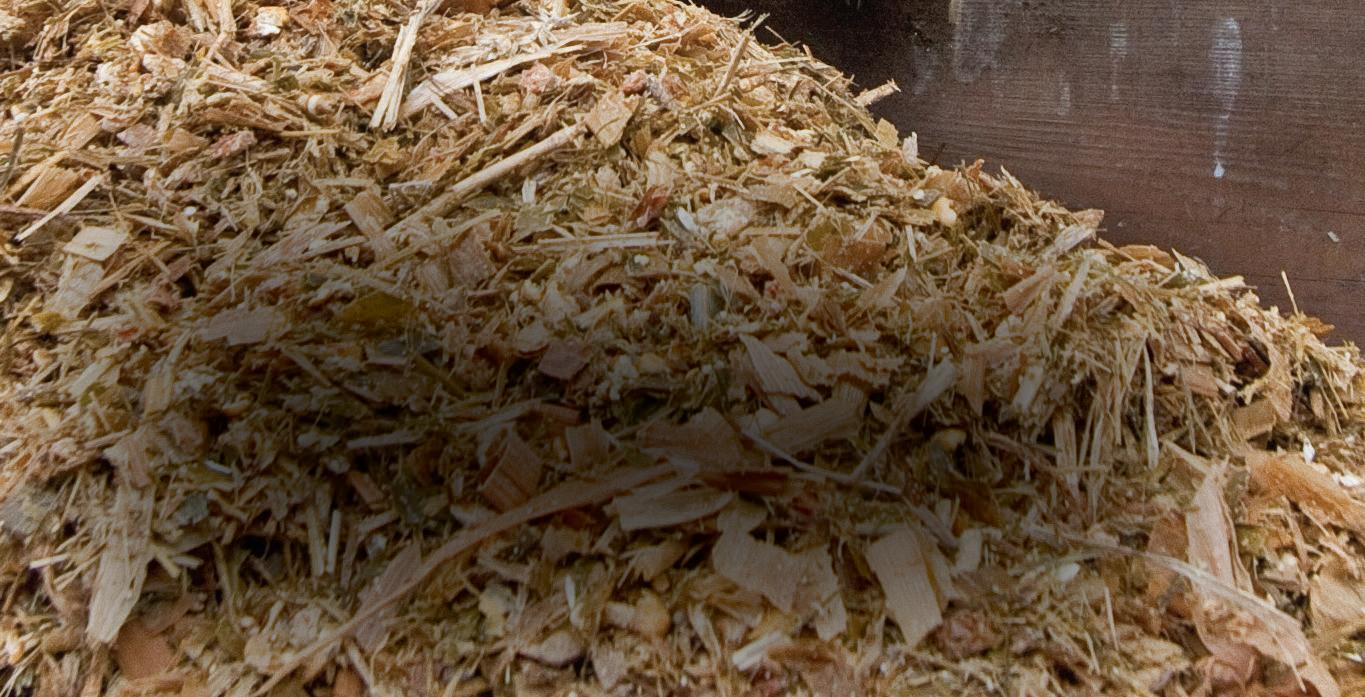










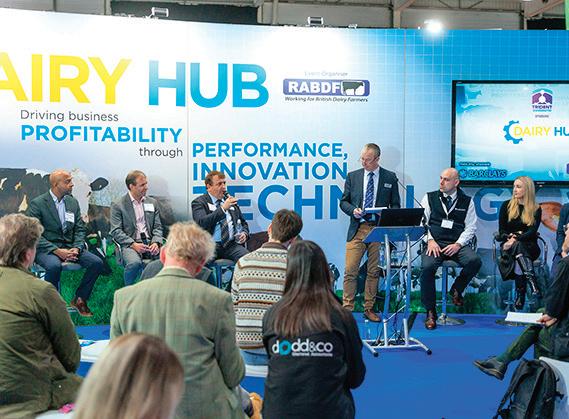
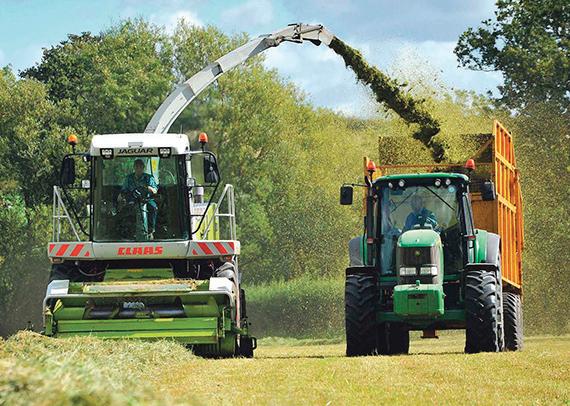








The unique feed to improve production, health and fertility. The benefits of omega 3 all year round. high energy high oil content (Omega-3) high digestibility high protein Lintec is a specific variety of linseed, high in Omega-3 fatty acids, that has been specially processed to produce a unique feed for dairy cows. It is a sustainable high quality feed, suitable for all dairy production systems. For more information contact your local account manager or call: 0330 678 0982 info.uk@forfarmers.eu www.forfarmers.co.uk Pages 48-55 Pages 30-47 GRASSLAND & FORAGE DAIRY-TECH REPORT Harvesting, silage machinery and technology Highlights from this year’s Stoneleigh Park event Pages 56-59 MACHINERY MILK PRICES Pages 60-62 A look at options for rejuvenating grassland TIP OF THE MONTH: Getting to grips with digital dermatitis problems – p16 Pages 14-15 Dairy Matters Animal Health and Welfare Pathway March 2024 Volume 71 Issue 3
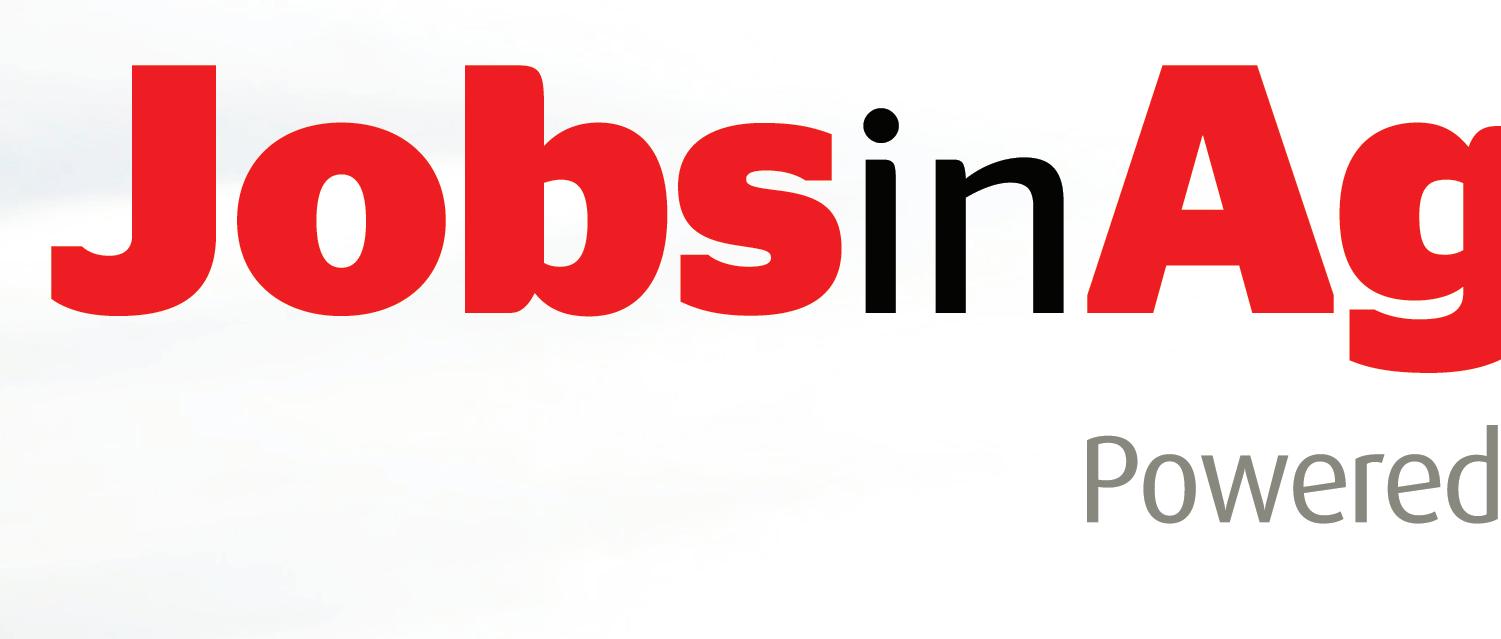
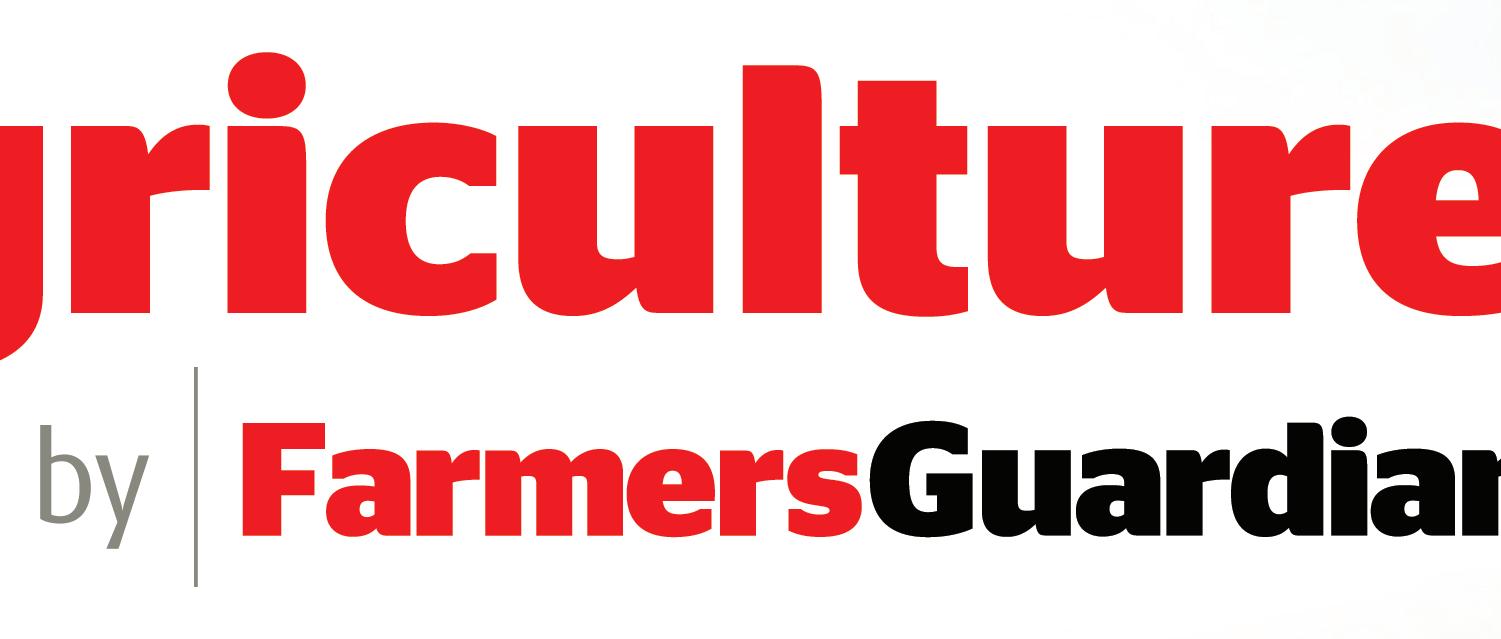

Explore the wide range of career opportunities beyond farming
Whether you are seeking a new career path or aiming to further develop in your current role Jobs in Agriculture can help.
We are dedicated to connecting the right individuals with the right opportunities. With a diverse range of opportunities available, including on-farm positions, exciting roles in science and technology, engaging marketing and sales positions and more.

Ready to explore beyond farming? It is time to open the gate to your growing career

Check it out!



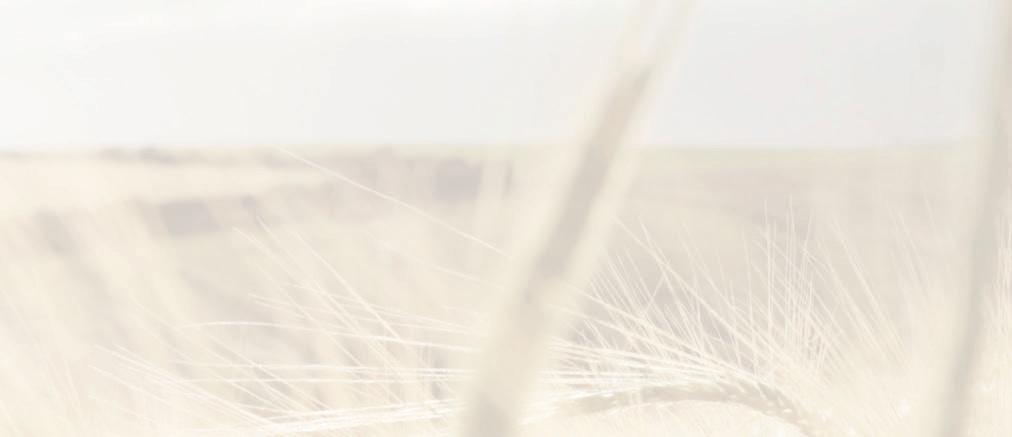
Jobs in Agriculture connects talented individuals with industry leading agricultural roles.
Powered by Farmers Guardian, we highlight agricultural jobs to our extensive network of engaged, jobseeking readers who regularly look to us for quality, trusted, relevant and beneficial content.
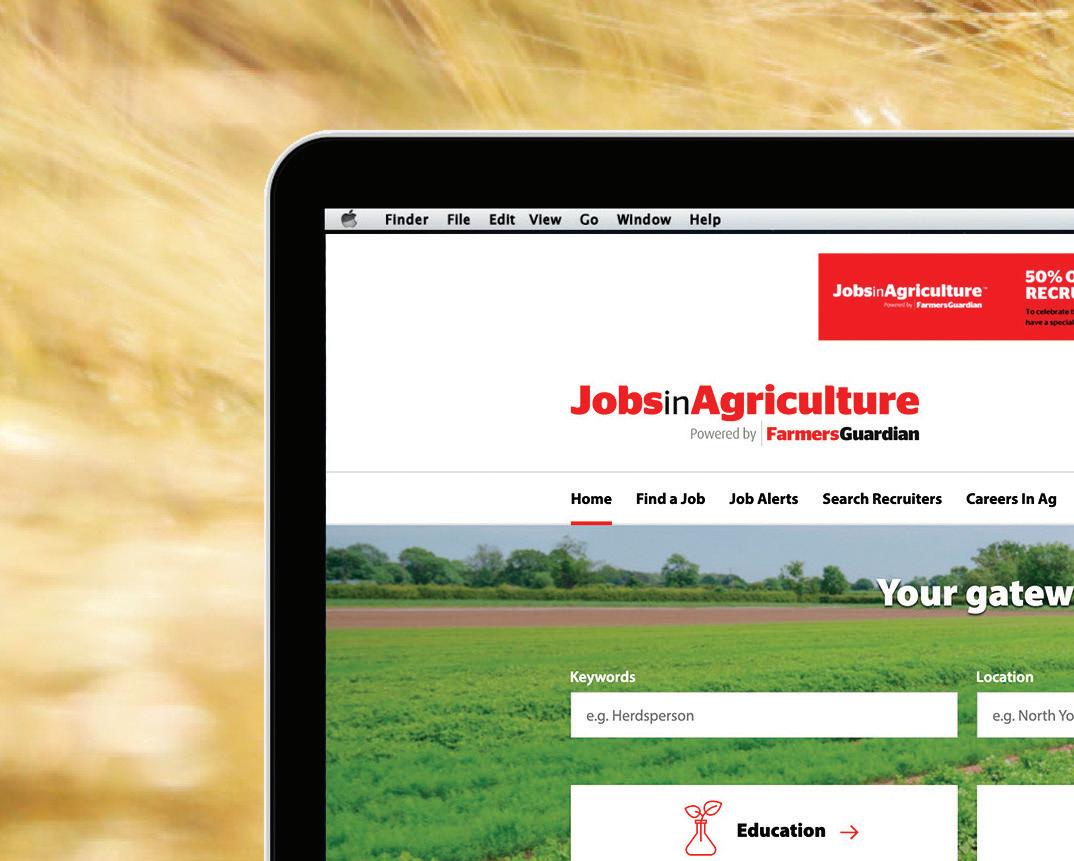








For more information scan the QR code or visit, jobs.farmersguardian.com



jobsinagriculturefg @JobsInAgriculture @JobsInAgriculture @Jobs_In_Ag

Contacts
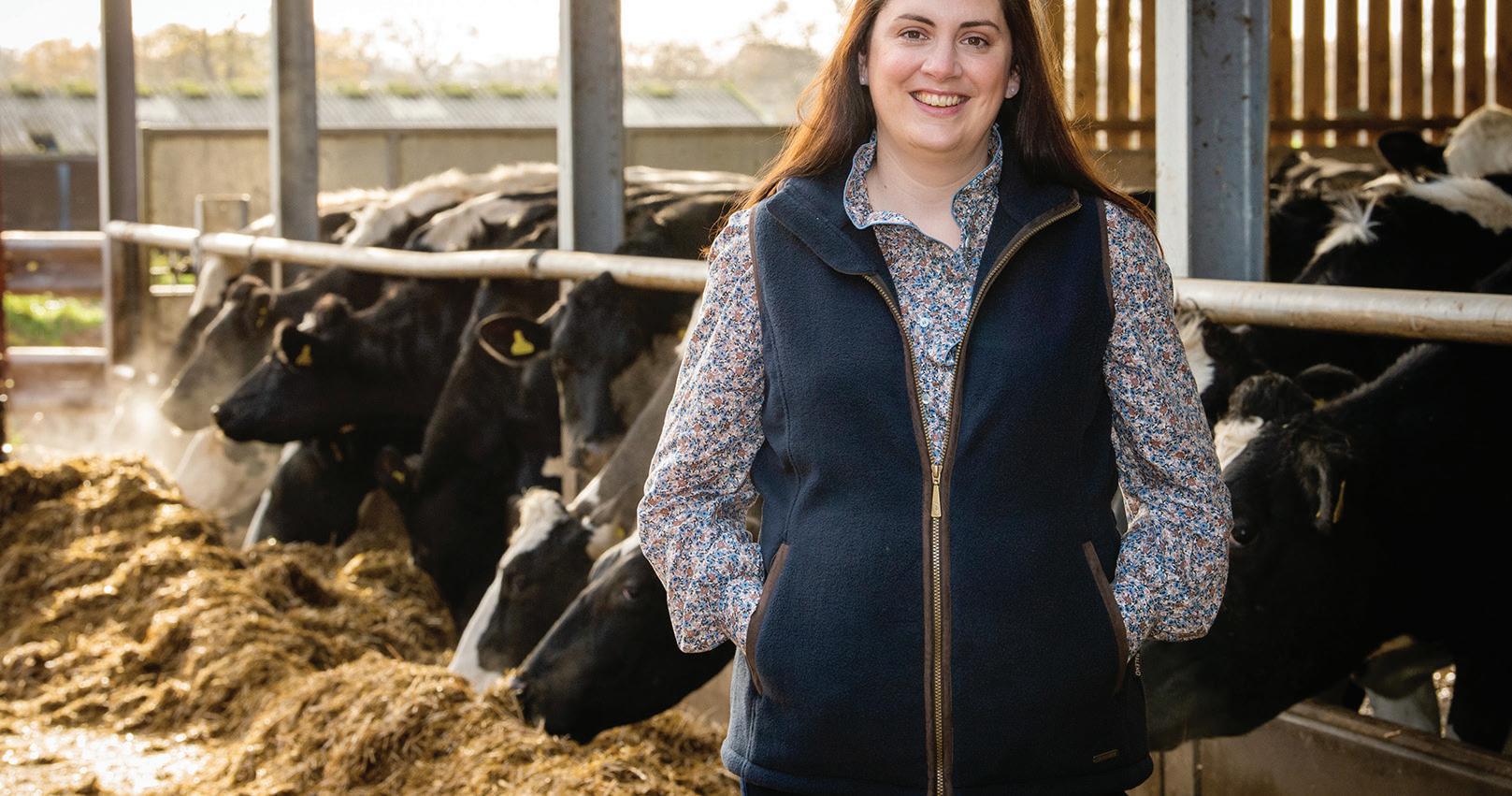
As we head into March, a ention will start to turn towards ge ing some stock out to grass followed by silage-making.
Who knows what the weather will throw at us this year, but as everyone knows grass is the cheapest feed on-farm, it is essential we make the most of this asset during the growing season and utilise it to its full potential to ensure clamps are full going into the la er part of the year.

e grassland and forage special in this month’s edition addresses issues around grassland management, including reseeding, yield mapping and grass nutrition.
e Dairy-Tech event was once again a great opportunity to get o -farm and nd out about some of the new technology on o er.
I a ended a seminar session looking at disease prevention and, in particular, the take-up of the Animal Health and Welfare Pathway funding. I was, however, disappointed to hear that only about 7.5% of eligible dairy farmers have applied for the funding so far.
Money available
As the speakers at the session pointed out, while some might think the money available is a paltry amount, it should be regarded as gateway funding, which could potentially have an impact on future access to grants. is is a theme taken on by this month’s Dairy Ma ers writer, vet Ian Cure (see pages 14-15), who warns that if this funding is ignored, then it might lead to the Government withdrawing budgets allocated to supporting farmers in the future.
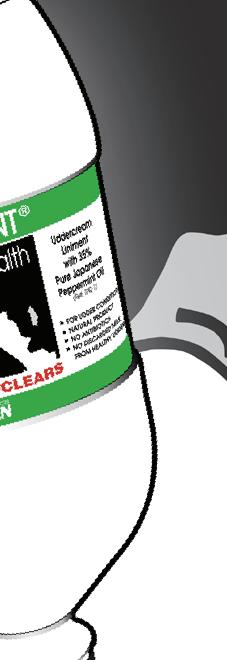

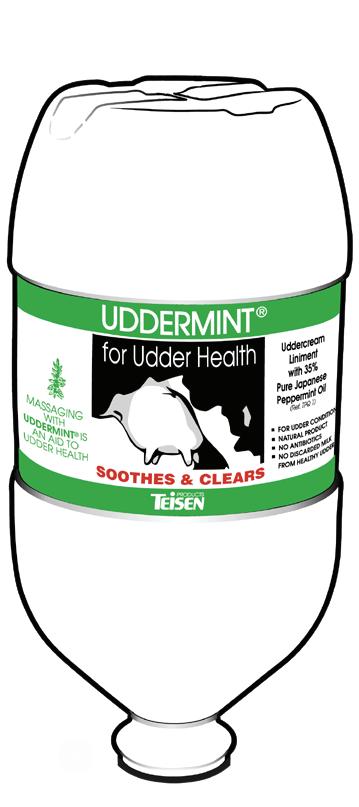
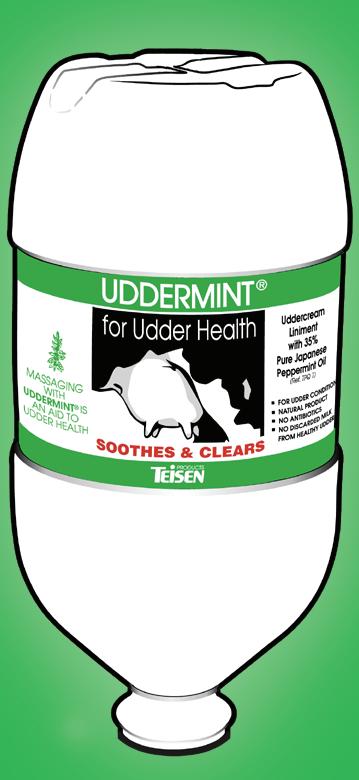

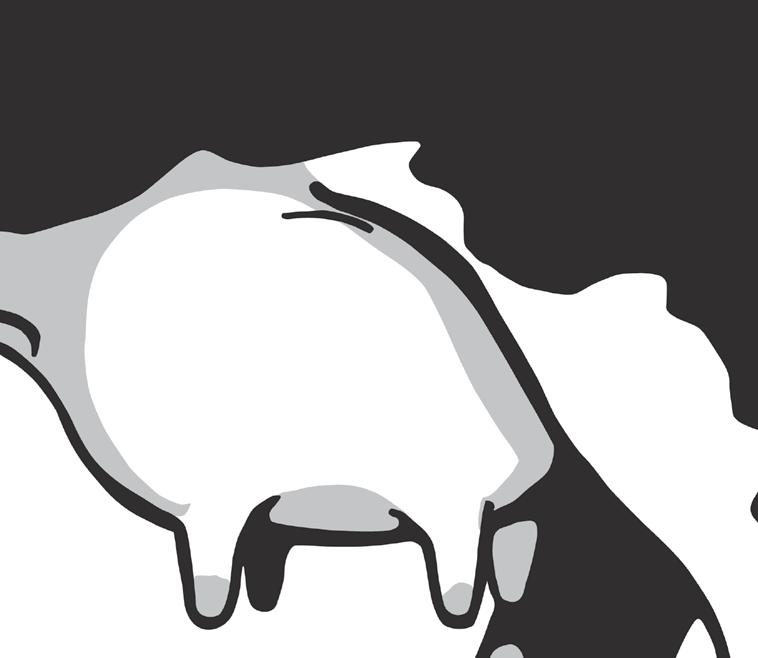
















3
UDDERMINT ® Also available from your favourite merchant... TEISEN TEAT WIPES Improve teat condition Fast milking preparation Milker’s hands cleaned between cows.
cleaning and drying More information at www.uddermint.com
Dairy Farmer, Unit 4, Fulwood Business Park, Caxton Road, Preston, Lancashire PR2 9NZ Origination by Farmers Guardian, Unit 4, Fulwood Business Park, Caxton Road, Preston, Lancashire PR2 9NZ. Printed by Precision Colour Printing, Halesfield 1, Stirchley, Telford TF7 4QQ. No responsibility can be accepted by Dairy Farmer for the opinions expressed by contributors. Editor Katie Jones 07786 856 439 katie.jones@agriconnect.com Content Editor/Designer Mike Begley 01772 799 405 mike.begley@agriconnect.com Picture Editor Marcello Garbagnoli 01772 799 445 marcello.garbagnoli@agriconnect.com Sales Director Stephanie Ryder 07917 271 987 stephanie.ryder@agriconnect.com Account Manager Mark Jackson 01322 449 624, mark.jackson@agriconnect.com Classified Advertisements 01772 799 400 fgclassified@agriconnect.com Advertising Production Justine Sumner 01772 799 437 Fax: 01772 796 747 justine.sumner@agriconnect.com Circulation and subscriptions 0330 333 0056 help@subscribe.farmers-guardian.com Subscription rates: UK £65 a year Europe: £85 World: £95 ISSN 1475-6994 © Farmers Guardian 2024 All rights reserved. No part of this publication may be reproduced or transmitted in any form or by any means, electronic or mechanical including photocopying, recording, or any information storage or retrieval system without the express prior written consent of the publisher. The contents of Dairy Farmer are subject to reproduction in information storage and retrieval systems.
Rapid
a word from the editor
MARCH 2024
What’s inside?
MONTH 2024
Ministers approve AHDB levy rise
Levy rates will rise for dairy farmers after Ministers in Defra and the devolved administrations approved the rise.
The new rates will be implemented from April 2024 which AHDB said would allow it to maintain its focus on delivering the objectives set out in the sector plans, published in November 2022.
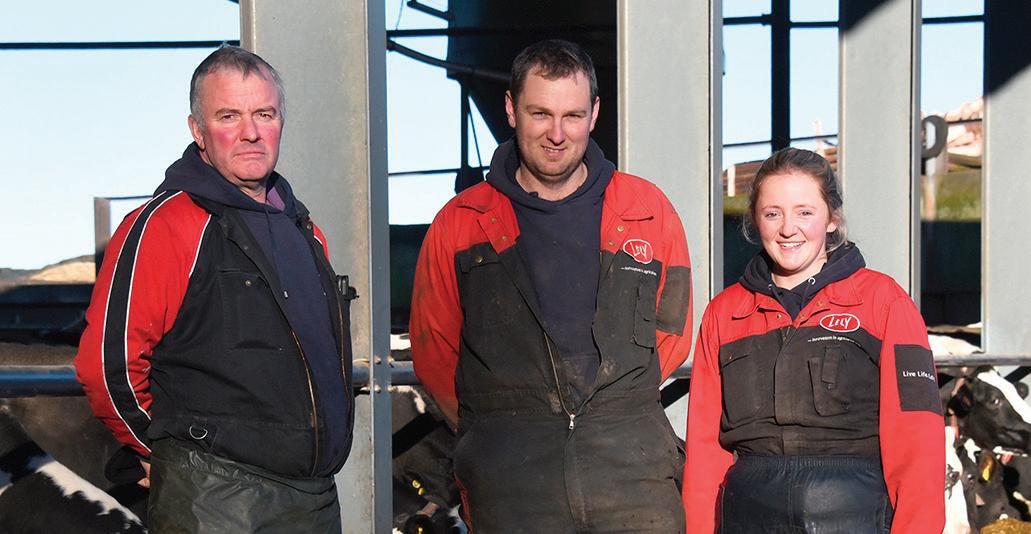
10-12 On Farm
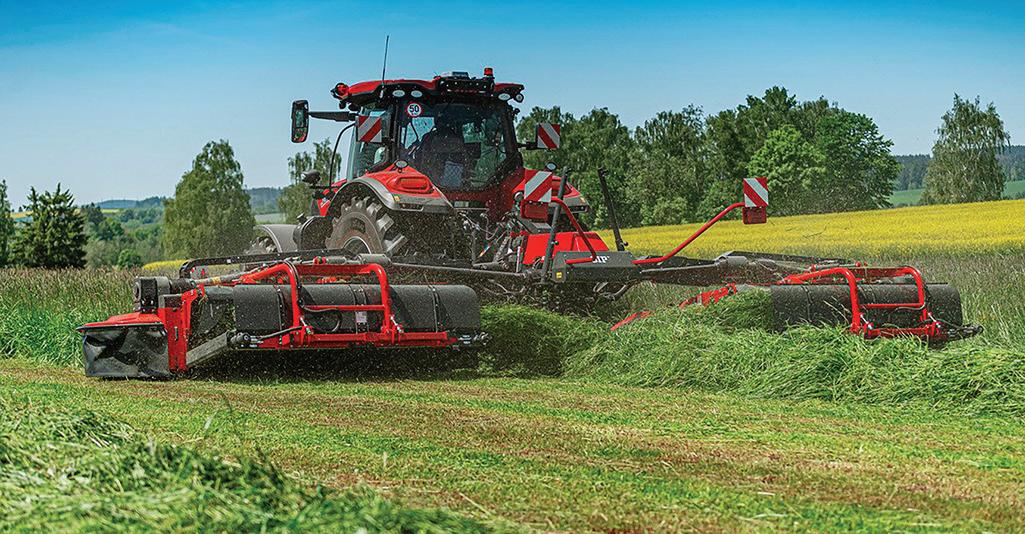
The levy for dairy farmers will increase from 0.06ppl to 0.08ppl.
There have been no increases to the levy in the beef and lamb and cereals and oilseeds sectors for more than 10 years and no change in more than 20 years for dairy and pork.
Reduction
The levy body said this meant the spending power of levy funds over the past decade has been reduced by up to 40%.
AHDB chair Nicholas Saphir welcomed the approval from
Milk price gap is ‘unjustified’
JThe gap in the base milk price in Northern Ireland compared to the rest of the UK and the EU is ‘unjustified’ and widening.
That was the message from Ulster Farmers’ Union (UFU) dairy committee vice-chair Cyril Orr after a Copa-Cogeca farm lobby meeting in Brussels.
Mr Orr said the meeting was a chance to share the challenges facing the dairy industry in NI, including bovine TB, local climate action plan and the impact of the ammonia strategy.
He said: “It was the dramatic
drop in the milk prices and the widening gap hitting farmers in NI that was the stark takeaway message. We now seriously lag behind the industry in Great Britain, let alone the EU.”
In November 2022, the average milk price in NI was 51.93ppl, close to the EU average of 51.69ppl. By October 2023, the price was 32.39ppl – a drop of almost 20p.
The EU average has fallen by 12ppl. In October 2023, the GB published average milk price was 36.99ppl – 4.6ppl higher than NI.
NEWS 4
8 DAIRY TALK Updates from Becky Fenton and Dan Burdett 10 ON FARM Farm achieving the herd expansion goal 14 DAIRY MATTERS Animal Health and Welfare Pathway funding in England discussed 16 VET’S VIEW Prevention of digital dermatitis should start with youngstock 18 NUTRITION Science says protein content of diets can be reduced safely 20 WORLD DAIRYING Investing to future-proof business in Hungary 22 WINTER FEED 24 ANIMAL HEALTH 28 CONFERENCE 30 GRASSLAND & FORAGE Harvesting, silage machinery and technology 48 DAIRY-TECH REPORT All of the highlights from this year’s Stoneleigh event 56 MACHINERY A look at options for rejuvenating grassland 60 MILK PRICES 64 MILK ANALYSIS Global milk volumes rise again after major exporters dip 66 NEW PRODUCTS Round-up of products and updates hitting the market 70 GOOD EVANS ‘Hoops to negotiate’ 72 BUSINESS CLINIC Global outlook mixed
VOLUME 71 ISSUE 3
66-67 New Products MARCH 2024

The AHDB levy for dairy farmers will increase from 0.06ppl to 0.08ppl.

Ministers, adding it would allow it to ‘enhance’ its key activity.
He said: “Levy payers can be assured our commitment to helping them navigate through an unprecedented period of change for the industry is secure and we will continue to listen to their feedback to ensure we are delivering real value for money.”
e Government has also agreed that Nicholas Saphir will serve a further 12 months as AHDB chair.
e extension to Mr Saphir’s appointment means he will remain in the role until March 31, 2025.
Challenging
NFU president Mine e Ba ers said: “In a challenging environment, a properly resourced AHDB will be vital to promote the value of our products, to seek new markets at home and abroad, enhance the productivity of the industry in the face of

increased competition from other countries and to defend the farming sector’s reputation.
“As with any business or organisation, AHDB needs to be able to adapt and respond to whatever challenges come our way.
“Crucially, evidence and data must drive the work of AHDB and value for money must be evident in everything it does – this value must then be demonstrated to levy payers.”
NI Farming Minister
JAndrew Muir has been named as Northern Ireland Farming Minister after Northern Ireland’s power sharing executive returned to Stormont this week and has already admitted there are ‘challenges’ ahead. Mr Muir, who has no links to the farming community, will head up the newly restored Department of Agriculture, Environment and Rural Affairs.He is the Alliance Party representative for North Down and was previously Chief Whip for his party.
Nuffield Farming Scholarship
JThe application window for a Nuffield Farming Scholarship is now open for 2025.
Run by the Nuffield Scholarships Trust, the scholarships are open to applicants between the ages of 22 and 25, providing funding for research, study and overseas travel.
Opportunity
Rupert Alers-Hankey, director of Nuffield Farming, said: “A Nuffield Farming Scholarship is the opportunity of a lifetime. Not only is it a transformative experience for the Scholar, it also creates unique insights and learnings for an ever-changing industry.”
rDetails on nuffieldscholar.org

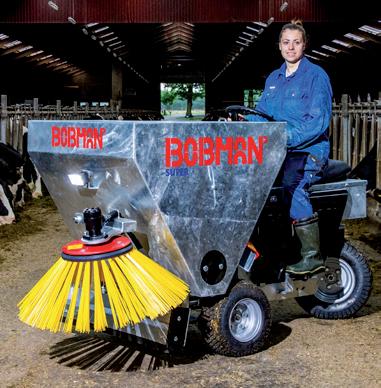
AGRICULTURAL & INDUSTRIAL STEEL FRAMED BUILDINGS Livestock Housing, Crop Storage, Industrial & Commercial, Tip Troughs Schurr Cow Brushes BEDDING MACHINES Telephone: 01524 792247 e-mail: sales@rebuildings.co.uk www.rebuildings.co.uk Scrape, Sweep and Spread in one pass. Bedding Material and Labour saving. Reduce cell count and increase production. Prevent disease and maintain good animal Health. Self-loading models available. Simple to drive and manoeuvre. 1 or 3 wheel drive. ELECTRIC ASK FOR DETAILS NOW AVAILABLE NEW
NEWS 5
MARCH 2024
Cross-bred herd breaks the mould to win Gold Cup
The winner of the 2023 National Milk Records (NMR) and Royal Association of British Dairy Farmers’ ( BDF’s) Gold Cup Award, which was announced at Dairy-Tech, is Bisterne Farm in Ringwood, Hampshire.
is is one of the rst farms in the competition’s recent history to receive the award with a crossbred, low-input, grass-based herd.
Estate owner Hallam Mills and contract farming partner George Brown are milking 600 cows within the 1,500-hectare (3,706-acre) estate near Ringwood, focusing on producing milk from grazed grass.
ey produce 3,730 litres of milk from forage and have a target to reach 4,000 litres with cows yielding 550kg of milk solids per cow per lactation.
Current average yield is 6,282kg of milk at 5.06% bu erfat and


3.84% protein from this spring and autumn block calving herd.
Team work at Bisterne Farm was one of the a ributes which stood out for this year’s judges, which included BDF chair Robert Craig and trustee Di Wastenage, NMR’s veterinary adviser Dr Karen Bond and 2020 Gold Cup winner Essex dairy farmer John Torrance.
Mr Craig said: “George
and his team are a great example of what modern pasture-based dairying should look like.
“All the judges unanimously decided on Bisterne Farm as the 2023 winner, not only because of their excellent a ention to detail and focus on key performance indicators across their system, but also because they go above and beyond to showcase dairy to the consumer.
“
ey have a really positive a itude towards dairy farming and have an excellent social engagement, hosting more than 4,000 visitors during last year’s Open Farm Sunday and opening the farm up to other groups such as Scouts, National Federation of Young Farmers’ Clubs and ex-o enders.” rFor more from Dairy-Tech, see pages 48-55.
Tenant farmers say they are feeling bullied
JMore than one-third of tenant farmers feel bullied by either their landlords or their landlord’s representatives, with 70% of those questioned revealing they only saw their landlord’s agents when they wanted something.
Evidence
ese gures come from a survey the Tenant Farmers Association (TFA) sent to members and nonTFA members in England and Wales. e study is in response to Defra’s call for evidence regarding the appointment of a Tenant Farming Commissioner.
A total of 90% of respondents said they were in favour of appointing a commissioner.
Out of the 425 tenant farmers surveyed, 40% of respondents said they felt ignored by their landlords, while more than 30% went as far as to say they felt bullied by their landlords. e survey allowed farmers to share anonymous comments.
One farmer said: “I feel if you do not do as you are told or have an opinion, you are dancing on thin ice. ey are bullies.”
TFA chief executive George Dunn said the ‘scores of comments’ like this ‘hit hard’ and demonstrated the struggle tenants have with their landlords and landlord’s representatives, adding it was ‘unacceptable’ for anybody to feel bullied.
e survey found the relation-
ship between tenant farmers and landowners’ representatives to be ‘worse’ than with the landlord – 40% said they were not easy to speak to, while 37% claimed they felt ignored or bullied by them.
Disputes
Prolonged disputes were also brought into focus in the survey, with criticism around the current mechanisms available to resolve tenant-landlord disputes.
Only 6% of respondents felt that resolving disputes through court action was ‘accessible, reasonable and cost-e ective’.
CLA president Victoria Vyvyan said positive working relationships would always be in
the best interests of the landowner. She said: “No-one in the tenanted sector bene ts from combative approaches and we will always support all parties working e ectively together.”
She added the CLA was also surveying its own members and hoped the ndings could form the basis of ‘future discussions’.
A Defra spokesperson said: “Tenant farmers are at the heart of our rural economy and we are working hard to ensure our policies and schemes support a thriving tenanted sector.”
It welcomed the insights from TFA, adding it would feed into the analysis of responses to its call for evidence.
NEWS 6
MARCH 2024
Left to right: Judge Robert Craig, with George Brown and James Dunning of Bisterne Farm.
DAIRYTalk
Becky Fenton
Becky Fenton and husband Paul milk 200 pedigree Holsteins under the Springlebee prefix at Centenary Farm, a Cheshire county council farm. In 2021, they bought a farm in Staffordshire and they plan to farm there once the new dairy setup has been built.
“ At Centenary Farm we don’t take ourselves too seriously
Istart this column on a high; we have just returned from a skiing holiday in France. It was our first family ski holiday and the boys took to it like duck to water (annoyingly they’re better than me already).
I expect this will be a yearly vacation now. We are very fortunate to have reliable and responsible staff. They all did a superb job while we were away and we’re very grateful.
While in France we did incur one blocked road due to the farmer protests. Having seen the French farmers actions on social media, they’re certainly taking protesting to another level.
I can remember the peaceful protests outside the Muller factory in Market Drayton, where farmers would have a catch up and a beer or two, and then the respectful London march. All very timid compared to the French. I do admire their passion and bravery.
Due to the vast rainfall we had in autumn (well, the whole of last year really), we were unable to get our cover crop in on the maize ground.
Therefore, we have a reduced number of acres for first cut and a loft full of seeds to feed the rat population.
Also, the 24 hectares (60 acres) of grass seed we sowed are stunted in growth and in some parts quite patchy. We intend to address this when it dries up.
When we bought New House Farm in Staffordshire, it provided more youngstock housing. This led our business to take a different direction and, over the last three years, alongside milking 200 cows, we have been buying heifers (calves to bulling age), rearing them and then selling them calved down.
Finances
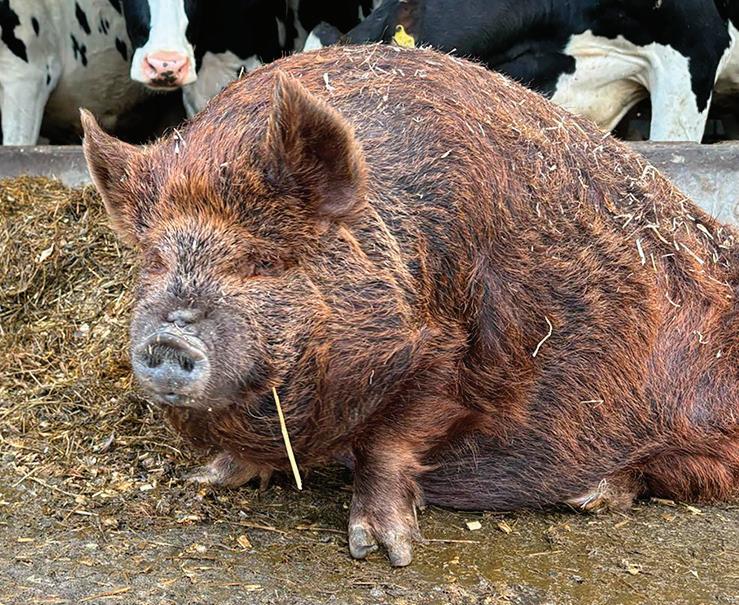
With the poor milk price, this has helped financially. We have purchased about 300 heifers over the last 36 months.
Initially for ease, the heifers were put with a continental bull. However, all heifers are now only served to sexed semen, and 90% of our milking cows are now served to sexed semen also.
So over the next three months we have 68 due to calve to sexed semen and nine to beef.
The Future Farmers Programme delivered by the School of Sustainability I am involved in is well underway now.
I was slightly dubious at first. When I hear the

word sustainable, I can’t help but roll my eyes and wonder what am I going to be preached about this time?
Yet, this course is enlightening and doesn’t focus on your carbon footprint/net zero. It suggests a pivot in your attention.
My take home message so far would be to improve your efficiency. An efficient system will have a greater output, resulting in generating an increased income and therefore becoming more sustainable.
You don’t need to make big changes, and some of the efficiencies suggested include reducing the amount of time cows stand before/after milking, pushing the silage up once more, soil testing and improving calf housing.
At Centenary Farm we don’t take ourselves too seriously and I have always had the motto that I’d rather be laughed at, than laugh at someone else.
A couple of years ago on Christmas Eve, my youngest son asked for a pig. Father Christmas couldn’t deliver on such short notice sadly.
But unbelievably, our friend gifted his wife a micro pig as a house pet. She didn’t think fondly of her Christmas gift and gave it to our son.
Said pig, now known as ‘Bitsy’, turned up the size of a Jack Russell but now she is the size of a walrus.
Bitsy is our free-range farm pig and brings a smile to every person who visits the farm.
8
MARCH 2024
Bitsy the pig.
Dan Burdett
Dan and his family own and run the 300-hectare (741-acre) Cockhaise Farm, near Haywards Heath, West Sussex. The farm is home to an organic autumn-calving herd of 240 Holstein and Friesian crosses. He also contract farms another organic autumn-calving herd of 220 cows at Bore Place, near Edenbridge, Kent.
“ I have learned in recent years to take any opportunity to graze that I can at this time of year
Despite telling myself I should enjoy each day of the year, I find it hard not to wish away the long winter, with the perpetual dark mornings and dank skies overhead.
Up until the new year I am too busy concentrating on getting cows and heifers in-calf in the first six weeks of mating to worry too much about the fading light. As exciting as those six weeks are, the following six can certainly drag on and the energy levels certainly start to drop.
This is the first season where I have served all the cows and there is no doubt that it has been more of a challenge for me than usual, with nobody to back me up on the odd cow I struggle to serve.
Having said that, the non-return rates are looking promising for the first six weeks and I haven’t served anything yet in week 10.
There seems to be a consensus here in the South East that it has been a poorer than average year for bulling heifers, with submission and conception rates down on where we would expect them.
Perhaps this has something to do with grass and silage quality, but we go through the same process with them every year, so perhaps we should just put it down to being ‘one of those years’.
I am also hearing and seeing higher than usual 50- to 70-day returns on cows. With bluetongue active to the east of us, there are also fears that maybe this has something to do with Schmallenberg, something we haven’t seen for a few years, and hopefully is just wild speculation.
Weather
The weather this winter has been the usual mixed bag, but it has dried out enough in the recent weeks for us to be able to turn the cows out starting on January 29 for a few hours each day.
I have learned in recent years to take any opportunity to graze that I can at this time of year as you can never tell what is waiting in the weather wings.
The cows haven’t milked very well this winter, peaking two litres below last year, and feed costs remain high, so this is an opportunity to cut a little cost out of the system.
In our organic system we often see milk drop
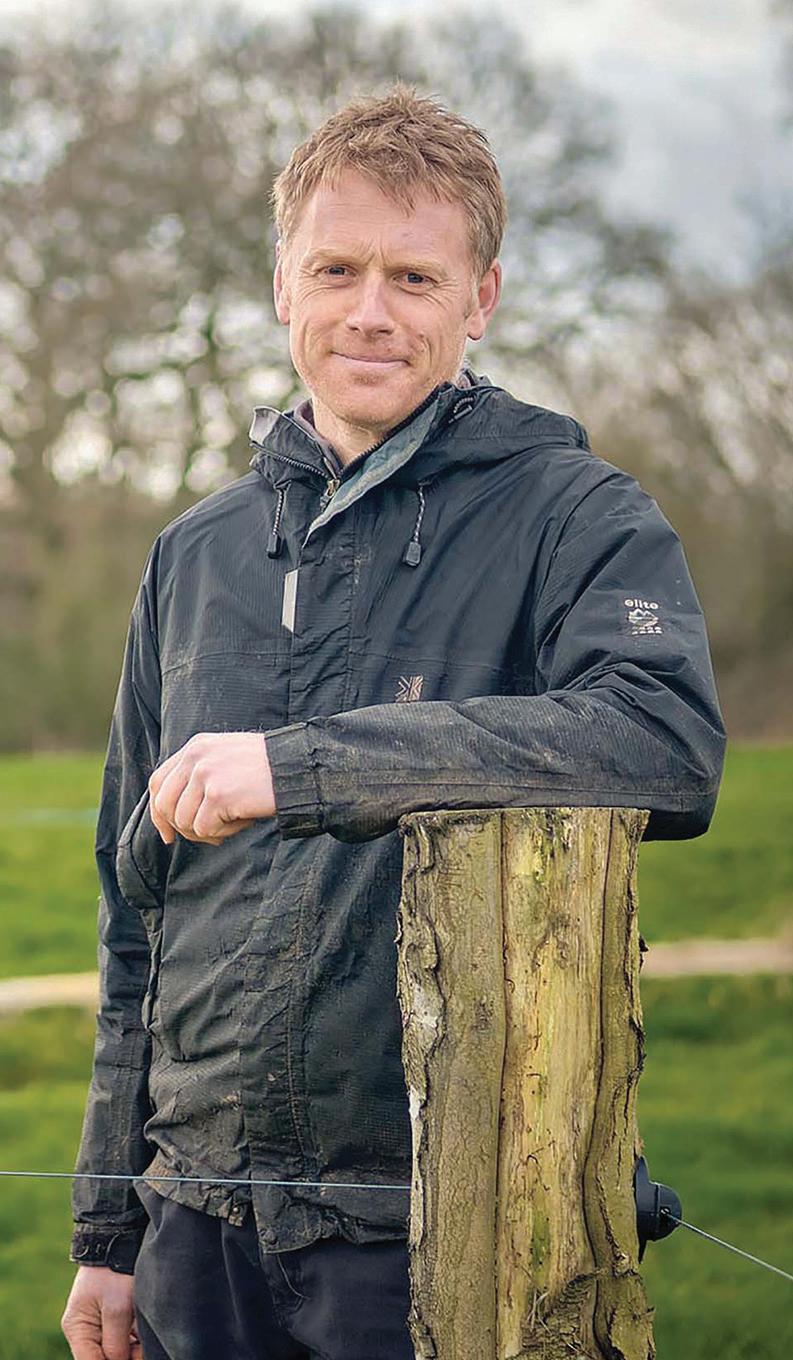
when cows are housed for winter and then pick up again at turnout, so I am hopeful we can make the most of the rising milk price to help pay some of the outstanding bills.
Over the past few years I have tried to go with best practices in silage-making so we can stop losing milk over winter.
Our first cut is early May. We make four cuts, roughly every six weeks, and have plenty of new leys to keep quality up.
The one area where I have my doubts is silage additive. It is a no-brainer on dry crops and wholecrop, but it doesn’t seem to be having a marked affect on milk output.
On a recent grassland group visit, only about 25% of the farmers were using additive, so perhaps this is something we can look to make savings on in the budget for 2024-25?
9 DAIRY TALK
MARCH 2024
A plan to increase the milking herd size from 270 to 330 head through replacement breeding is well underway at the Morgan family’s Graig Olway Farm. Wendy Short reports.
Farm achieving the herd expansion goal
Increased con dence in the future due to securing an aligned milk supply contract with Muller, as well as the desire to spread costs, are two main reasons behind the herd expansion plan at Graig Olway Farm, near Usk, South Wales, explains Russell Morgan.
e family’s Holstein herd is milked through a series of six robots in the cubicle housing.
e business operates a 120150-day grazing policy for up to six hours daily in accordance with milk buyer requirements, while the cows also receive a total mixed ration containing grass and
maize silage, wholecrop and caustic wheat, and rapemeal.
e diet is topped up with concentrates fed to yield.
e family’s ‘Llangeview’ herd pedigree dates back to the 1950s, although some cow families have been added.
“My late father liked to buy-in new female bloodlines and the progeny of some of his purchases have worked out very well,” says Mr Morgan, who farms with his partner, Sarah, his mother, Glenys, and his aunt, Jane Morgan.
“However, we are constantly striving to improve health status
and for that reason the herd is now closed, apart from buying in an occasional stock bull.
“Many of the original families are still thriving, especially the Be ys, which have proved to be outstanding.”
Due to the decision to increase cow numbers, which was taken a couple of years ago, as much as 90% of the herd was served with sexed Holstein semen at one point. e present strategy is to produce 120 replacement heifers a year.
Mr Morgan admits that the family was ‘late to the party’ with genomic testing, but they were


pleasantly surprised with the herd performance a er its introduction three years ago for heifers and rst lactation females.
He says: “Breeding for high Pro table Lifetime Index has not historically been a goal, but the results were favourable and it has become a useful selection tool. Many other factors are considered when choosing breeding animals and the genomic data tends to act as a nal decision-maker.”
Genosource Captain, Lars-Acres Raiton, Aurora Mitchell and Penn-England Barclay are among more than a dozen Holstein bulls currently being used for replacement breeding.
Stand-out sires that have been used in the past include Mapelwood Brewmaster, Seagull-Bay Supersire and Picston Sho le.
Robotic
e switch from parlour to robotic milking in 2013 has slightly changed the farm’s bull selection criteria, which makes use of a sire-matching program.
Mr Morgan says: “Like most other milk producers, our priorities are ease of calving and good feet, legs and udders.
“Mobility score is another important trait, especially with robotic systems, as the cows are required to travel for greater distances compared with parlour milking. Robotic milking values must also be considered; they cover teat position, teat length and milking speed.
“We used to buy semen from a


MARCH 2024 10 ON FARM
Russell Morgan (left) – pictured with daughter Eleanor and herdsman Christian Dewfield – is increasing the herd from 270 to 330 dairy cows at Graig Olway.

single company, but we now use a range of sources, as we were nding that adding positive robotic milking traits to the list of requirements was limiting our range of options.
“In general, proven bulls are
the rst choice, but a young bull will be used if his gures indicate herd suitability.
“Our cows are edging towards becoming slightly too large at 720-750kg for maximum suitability for the building layout



and design, probably because of our general focus on breeding for type. erefore, we are trying to pull back slightly, in terms of stature.”
e Morgans have made great strides in tackling herd lameness,
with help from vet, Sara Pederson.
“At its height, lameness was a ecting 40% of the herd and the gure is now down to about 1012%,” says Mr Morgan.
“Part of the problem can be traced back to one particular bull, which transferred his weakness on the trait to some of the heifers.
“To tackle the issue, we have adopted a range of measures, in addition to breeding selection.
“ ey include fortnightly mobility scoring and prompt treatment, with a blitz approach to digital dermatitis, frequent footbathing and improvements to cow comfort.
“ e AHDB’s Lameness Advantage predicted transmiing abilities system uses a range of information to rank animals, expressed as a percentage, and that is also given weight when making selection decisions.
“My daughter, Eleanor, who is studying agriculture, will always

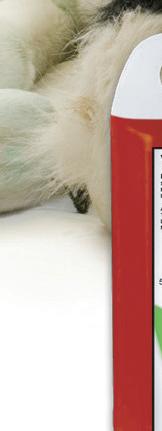


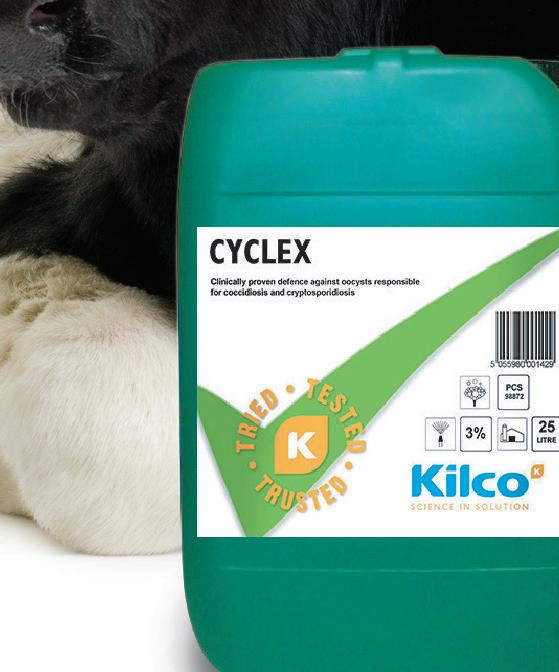




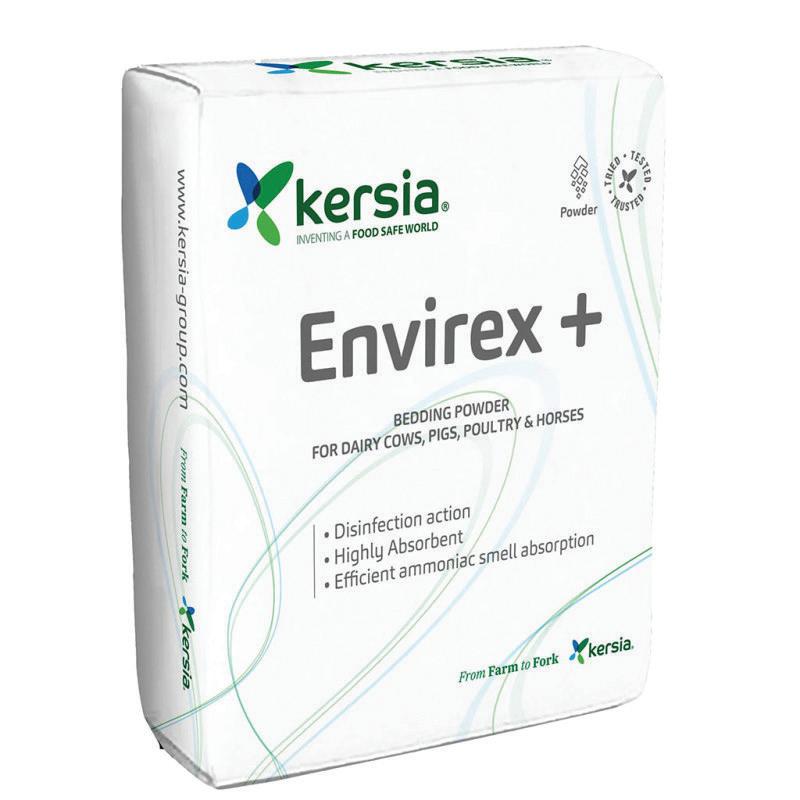

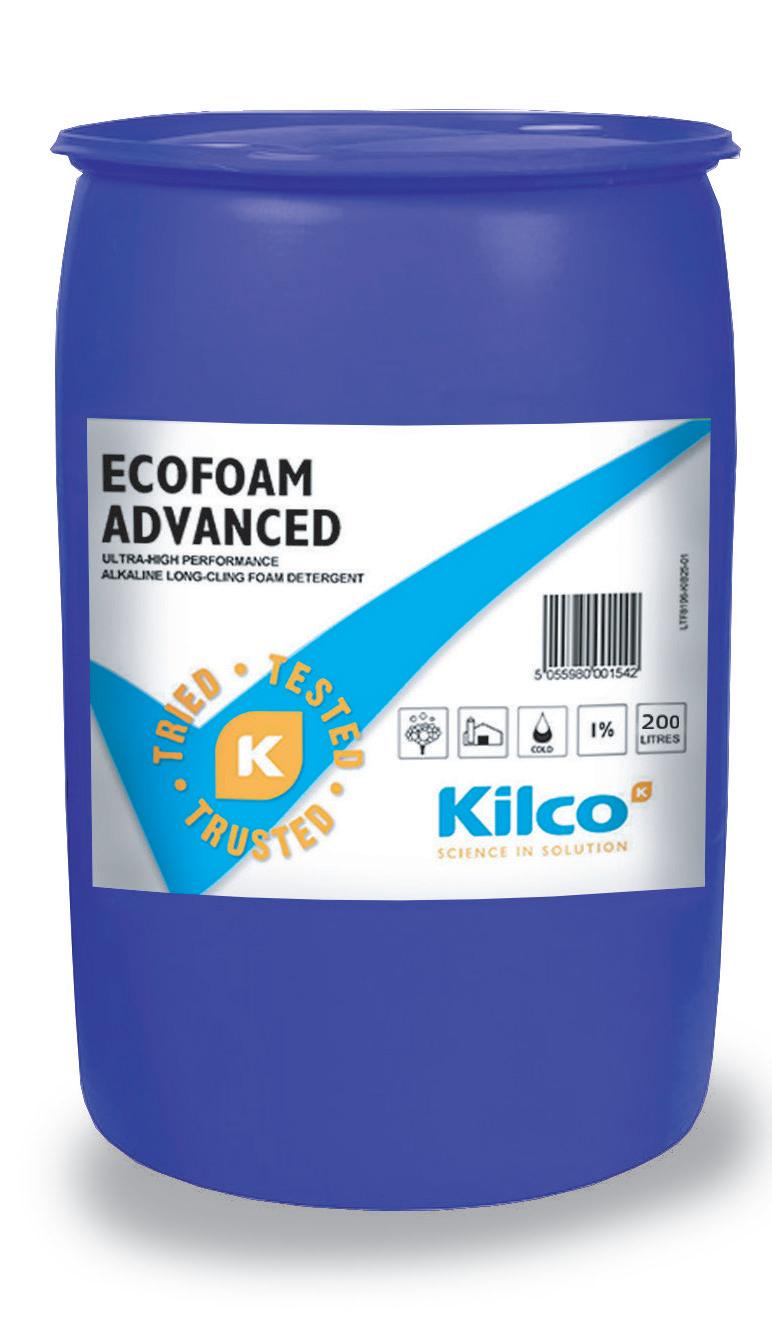
ON FARM Calf Health Is Critical To Your Business! Our E ective Biosecurity Programme Can Help Reduce Disease On Your Farm www.kersia.uk Please Note: Disinfectants are regulatory biocides. Use biocides safely. Before use read the label and product information. *For full DEFRA approval visit: disinfectants.defra.gov.uk For more information, contact your local Kersia Ruminant Sales Manager, or call our Lockerbie o ce on +44 (0) 1576 205480 Or email enquiries.uk@kersia-group.com
PICTURES : Ruth Rees
The farm switched from parlour to robotic milking in 2013.
ON FARM
ask us to justify our choices when she comes home from university.
“She will look at all the data in great detail, so the gures have to stack up.”
Bovine TB is one of the region’s greatest challenges on dairy farms and it was con rmed at Graig Olway in 2002, following the foot-and-mouth crisis, with some resulting losses.
Meanwhile, the other main diseases have been addressed systematically and the herd is bovine viral diarrhoea and IBR-clear, with great progress having been made on stamping out Johne’s. e only routine vaccination is for protection against leptospirosis.
While both British Blue and Limousin semen is used on the lower end of the dairy herd, the la er is the dominant breed and Ashledge Leofric and Tweedale Lennox have performed well. e current stock bull is Whiskey O’Brien.
Farm facts
rThe farm is 270 hectares (667 acres)
rCows are averaging 11,500kg at 4% butterfat and 3.3% protein
rCalving is all year round, with a calving interval of 385 days
rAverage number of cow lactations is four
rHeifers are calved at 24 months
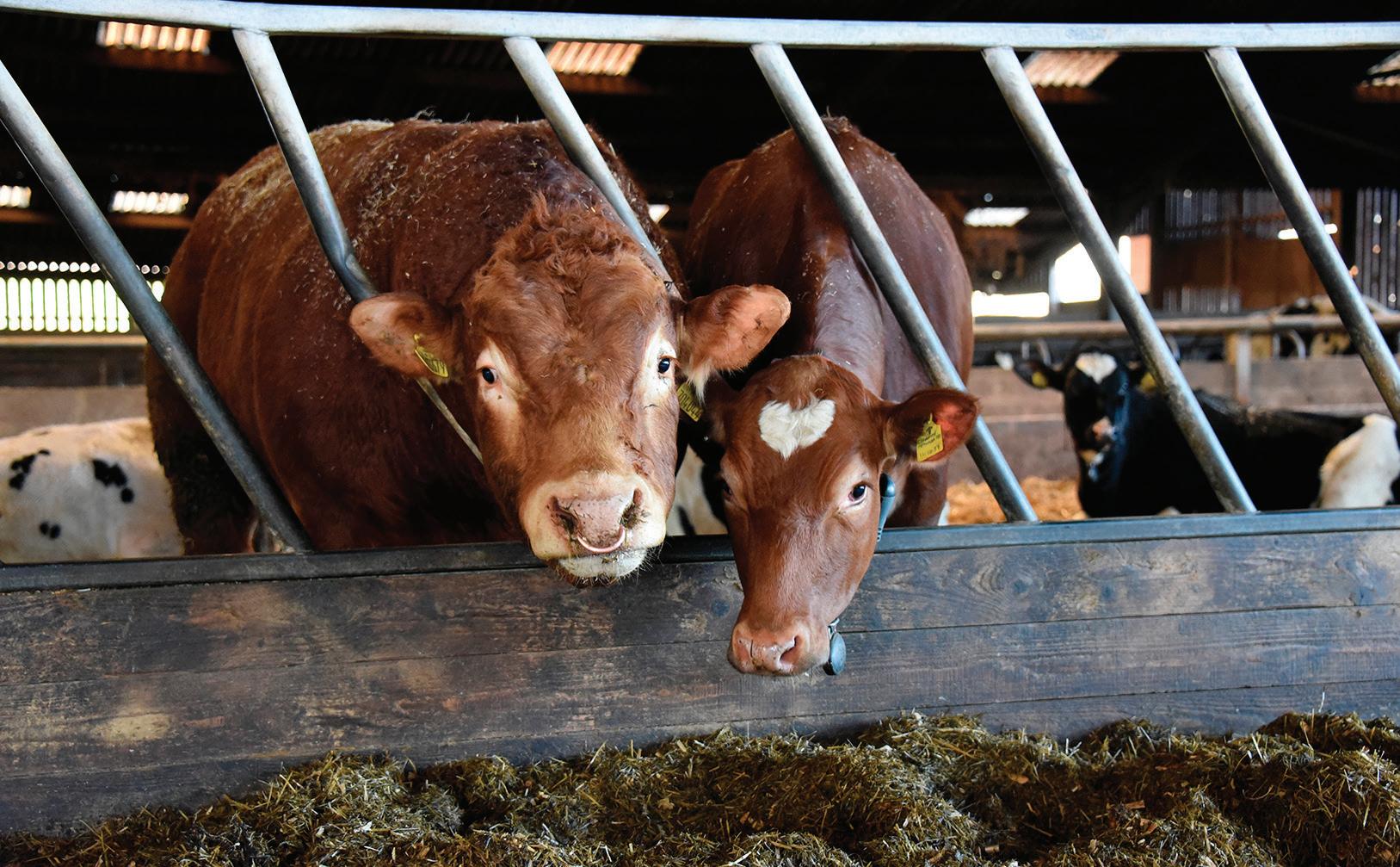

Mr Morgan says: “We have always run a pedigree Limousin stock bull for use as a sweeper and on our small continental suckler herd, which is being phased out as dairy cow numbers rise.
“ e breed is easy-calving and Limousin cross calves tend to be quick to get up on their feet a er they are born. ey also have the potential for very high growth rates.
“O’Brien has a good temperament and his calves have ful lled all our expectations. In fact, we are so impressed with him that semen collection is being considered. Our previous bull was sourced from the same herd, which is fairly local to the farm.” Due to building limitations, about 50% of calves from the dairy herd are fully housed,

with the remainder in igloos and veranda-style accommodation.
Replacement heifers and beef breed crosses are run as one group, with the la er sold as six to eight-month stores.
“New-born calves receive colostrum and milk from their dam for the rst four days, before going on to milk replacer,” he says.
Weaned
“At about one-week-old, they are moved into group pens of about a dozen head and weaned at nine weeks, a er which they move on to a starter pellet.
“ e batches are introduced to a mix containing home-grown rolled barley over a two-week period and it will be their staple diet by the time they reach three
months old. At the 16- to 20-week stage, they will be switched to a total mixed ration which includes grass silage, rolled barley and a protein blend.”
With the breeding strategy on course for expansion, the family is now reviewing the calf housing.
Mr Morgan says: “ e automatic milk machine in the building works well and reduces labour input. Nevertheless, we feel that the calves on the outdoor system bene t from a healthier environment.
“In addition, the outdoor calves are fed manually via teated buckets and that o ers the opportunity for closer observation.
“No rm decision has been made at this point, but new calf accommodation is likely to represent our next major investment.”
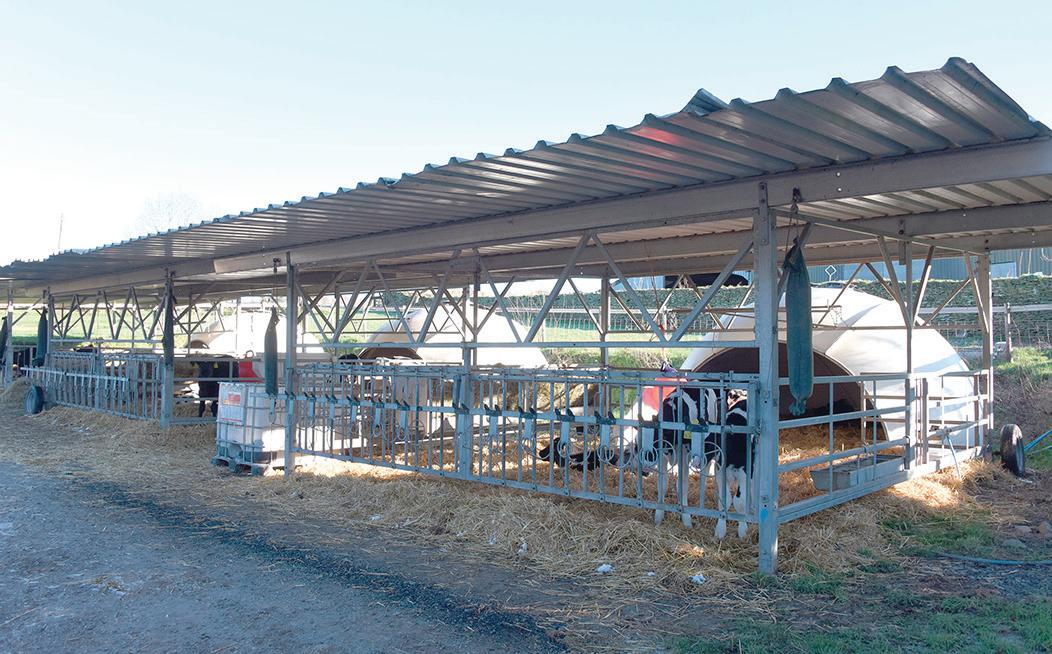
MARCH 2024 12
Calves get colostrum and milk from their dam for four days. Half of the calves are housed outdoors in igloos.
A pedigree Limousin bull is used as a sweeper on the lower end of the dairy herd.
There is life after Soya
Try our award winning high quality rumen bypass protein in your blend or as a straight today.





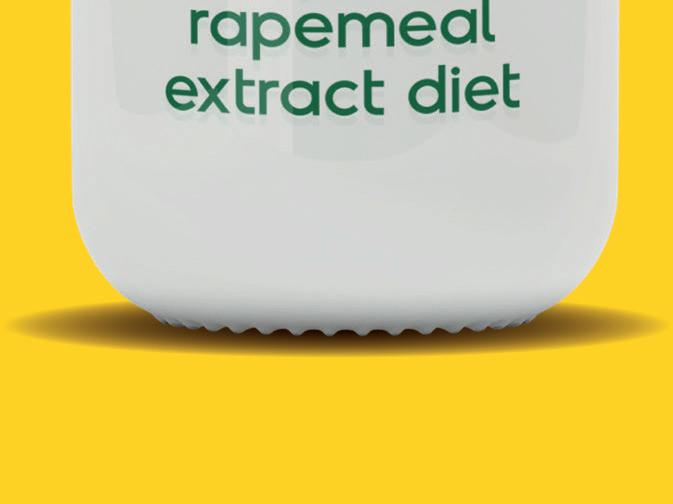












01733 422214
tridentfeeds.co.uk/novapro
www.
DAIRYMatters
‘Use it or lose it: Animal Health and Welfare Pathway funding in England’
Ian Cure is a veterinary surgeon and director of LLM Farm Vets, and is farm director for VetPartners, the parent company of the practice.
Iknow many are sick of hearing about the Animal Health and Welfare Pathway (AHWP), while others do not know what it is or feel frustrated that it is using the subsidy money they are now losing due to the loss of the Basic Payment Scheme.
My strong suspicion is that if this funding is widely ignored, it could be a green light for the Government to withdraw budget allocated to supporting farmers, leaving the industry in a worse place than it is now.
It is important to share here that Defra has already stated it intends to apply payment by results, so low levels of funding take-up could well mean the model will not be there in future.
For all farmers, I think this is a major concern at a time where profit margins are increasingly hard to make.
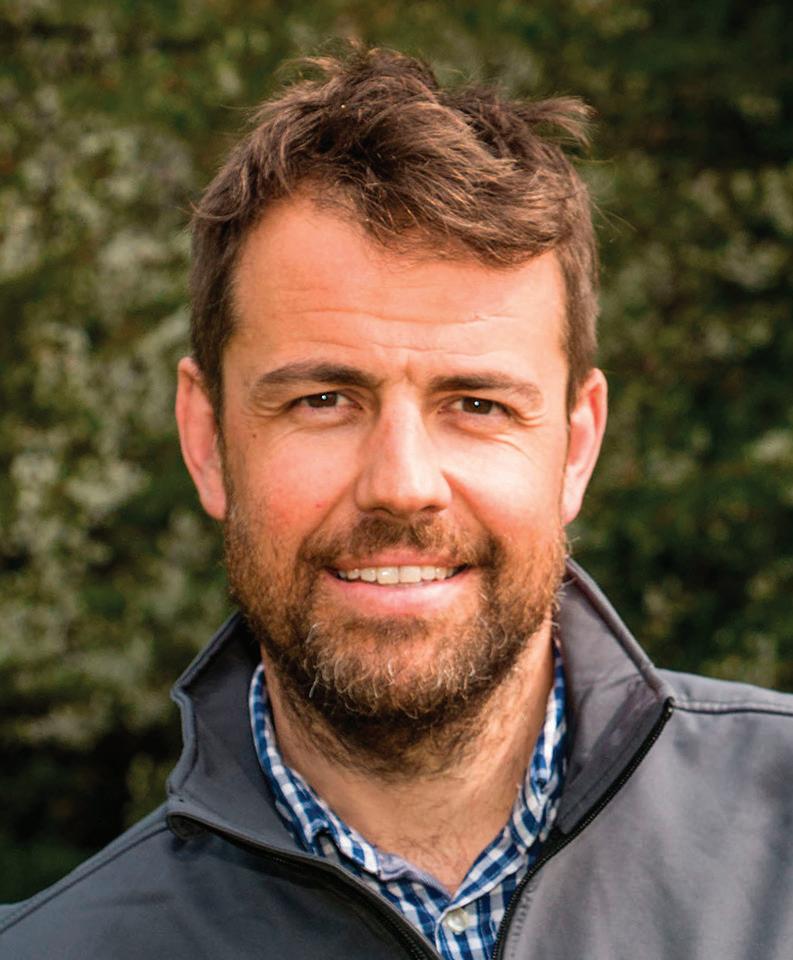 Ian Cure
Ian Cure
I strongly feel these grants need to be approached with the bigger picture in mind; that if they are used correctly, they can open doors to more funding.
For example, if your vet recommends changes to your farm and there is another grant available in future, you stand a much greater chance of being successful if you have already accessed and used the Pathway, for example for the recent calf housing grants.
Priority
For larger dairy units, the relatively small amount of money (£372/year for three years) may make the funding seem less of a priority than other grants, but I would urge those farms not to write it off and instead consider it as a gateway fund.
Engaging with the Pathway and considering how vets can support you will open the door as future larger grants are announced.
Yes, due to a fairly tricky start with IT and personnel challenges, Pathway applications were initially nigh on impossible, and I know farmers were put off by this, or if they did apply many did not hear back.
However, I understand it is now streamlined and should take just minutes to apply and claim, so long as you have all the details to hand.
For those concerned about the process, it is straightforward and can be extremely valuable. Once the application is successful, the first step includes a veterinary visit – the ‘review’ – where you can discuss any topic which you feel is beneficial to your herd and business.
A compulsory element of the visit is testing for bovine viral diarrhoea, which can generally be done by taking a bulk milk sample.
The aim of the vet visit and any outcomes is to
14 MARCH 2024
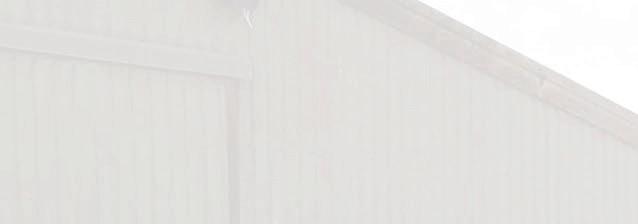
For larger dairy units, the relatively small amount of money (£372/year for three years) may make the funding seem less of a priority than other grants, says Ian Cure.
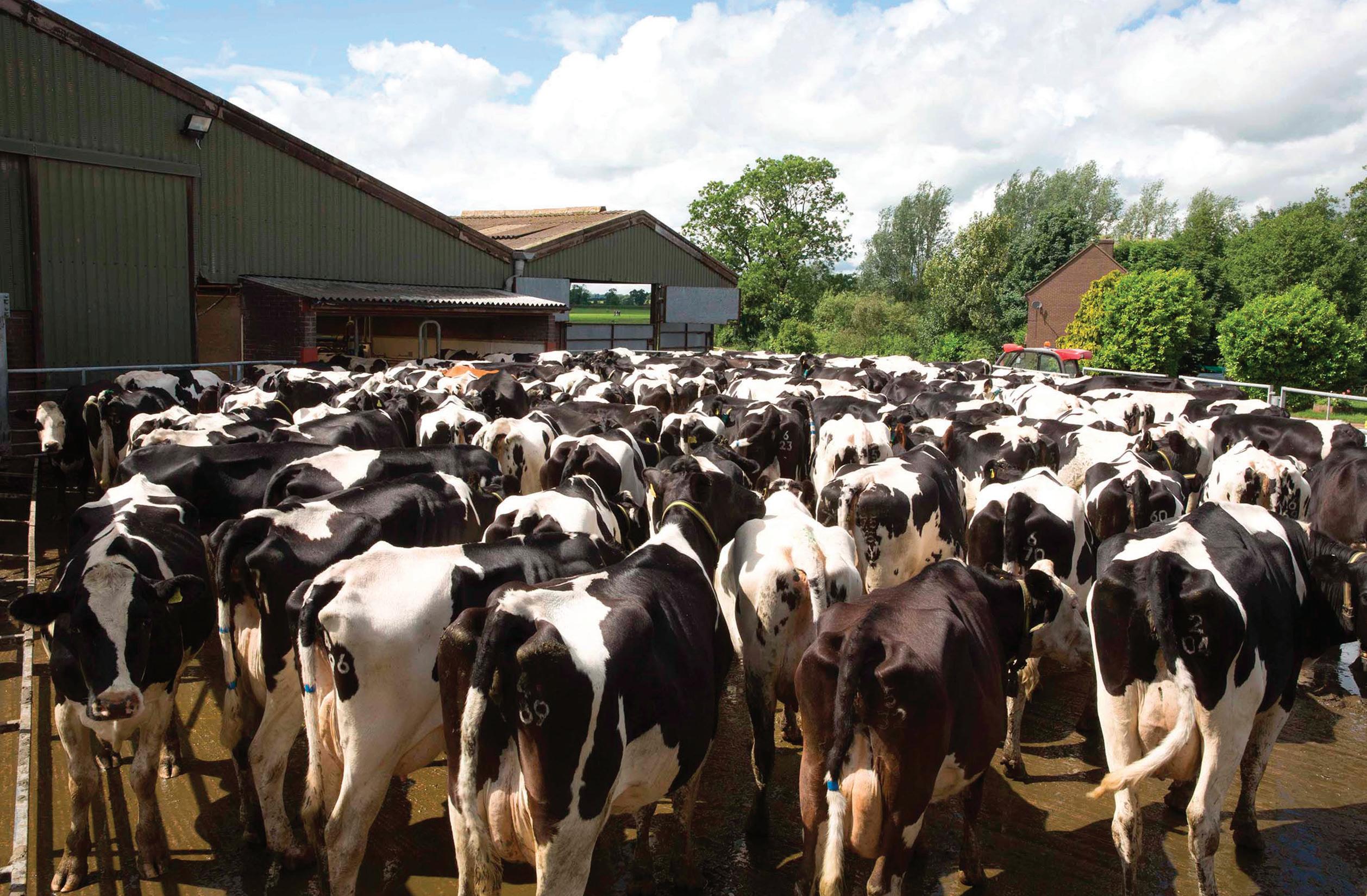
“ I would strongly advise using this funding while it is available
reduce endemic disease, improve welfare, increase productivity and to ensure veterinary medicines are being used to get maximum e cacy and reduce antimicrobial resistance.
It is important to note the review is not an audit and should not be used replace a farm assurance visit. is is an opportunity for you and your vet to think outside the box to deliver continual improvement.
With areas such as improved biosecurity, increased trade opportunities and reduction of emissions all on the table as stated aims of the Pathway project, it is not a big leap to think that in the future the Government may plan to reward farmers focusing on working with these improvements in mind, as well as the highest animal welfare standards.

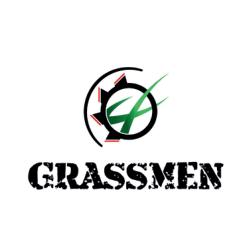
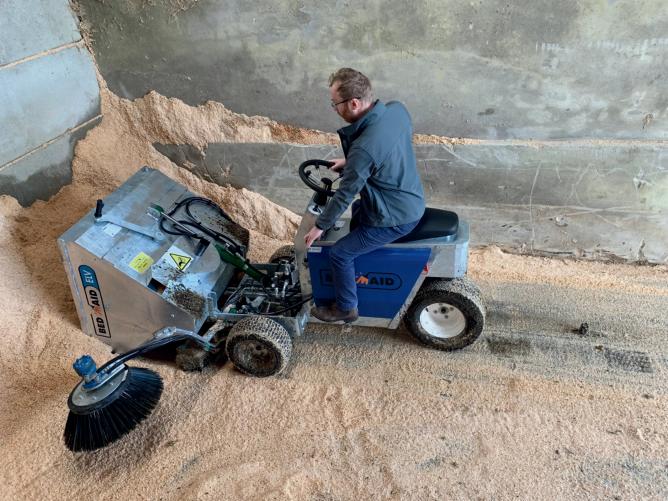

e Pathway will also help farmers set up their businesses to meet future governmental funding criteria.
erefore, I would strongly advise using this funding while it is available or we could nd our industry in seriously deep water.
About Ian Cure
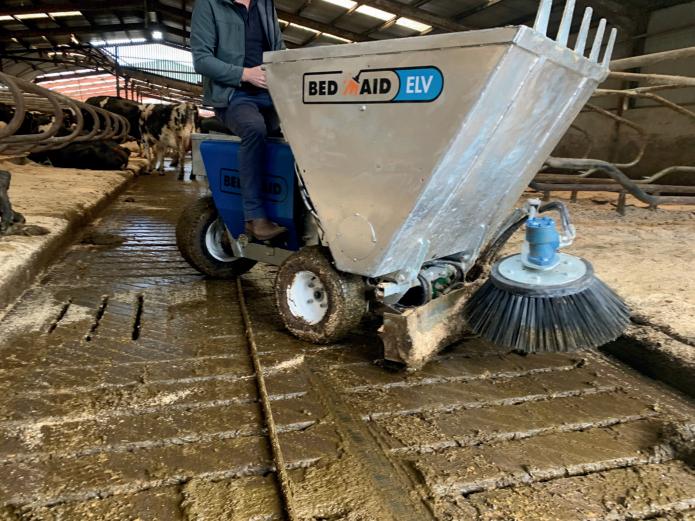

15 MARCH 2024 NOW AVAILABLE FOR ON FARM DEMO Call Wilson Agri on 028 7086 8430 to book your demo now! As seen on
time & bedding - bed 250 cubicles in less than 20mins Minimal noise, pollution and running costs
maintenance - no filters
hot-dip galvanised - ensures
the
collecting bedding
of a lever
standard 13amp socket
also available FULLY ELECTRIC
Save
Low
Fully
no damage to
hopper when
Easy loading - loading is simplified to the pull
Fast energy efficient charging -
Petrol & diesel options
JIan Cure qualified from Glasgow Vet School with a passion for farm animal work. He and Rob Howe founded the LLM Lancashire branch in 2008 where he is now based.
Ian gained a diploma in bovine reproduction in 2012. His veterinary interests among others include fertility, lameness and nutrition.
Each digital dermatitis case has been estimated to cost £80, but Dr Nick Bell describes the figure as ‘conservative’ and prevention and treatment should be the priority. Wendy Short reports.
Prevention of digital dermatitis should start with youngstock
The prevalence of digital dermatitis in the UK dairy herd is relatively unknown, although one fairly recent survey showed that 3040% of cows per herd had associated lesions and the numbers could be higher, says Dr Nick Bell, a vet who runs the Herd Health Consultancy.
“Some units will have the disease almost under complete control with cases down to single gures, while in others, half of the herd may be a ected,” he says.
“Lameness caused by digital dermatitis will have a negative e ect on production and fertility. Financial losses can be signi cant, particularly in a high-yielding herd.”

He advises that preventative measures should start with the youngstock.
“Some herds are still struggling with infection levels, despite the regular footbathing of the milking cows.
“On these farms, the problem will generally lie within the youngstock, which will be naive to the bacteria.
“Dry cows are another major source of infection and digital dermatitis should be regarded as a whole herd problem.
“Producers will o en comment that the disease will are up about a week a er they stop footbathing, but US studies have indicated that it can take 150 days from the rst skin lesions, to full-blown development.
“Infected heifers can join the
Infected heifers can join the herd without showing clinical signs of the disease
milking herd without showing clinical signs of the disease.”
Heifers at grass are at low risk, because the bacteria will not thrive when exposed to air and oxygen and it is believed that it will not persist beyond a few days without its animal host.
A footbath should be set up in the youngstock housing and used at least once a week, he suggests. A long, narrow footbath is the best design for optimum cleaning and disinfection.
Design
“It will give multiple foot plunges, compared with a short, wide design which is sometimes viewed as superior due to its increased cow ow potential.
“If cow ow is a priority, a pair of adjacent narrow footbaths is preferable for the milking herd.
“For youngstock and dry cow housing, the ideal set up is to sink the footbath into the concrete, but a mobile plastic bath can also work well.
“Any footbath system should be as simple and easy to use as possible, because that will encourage maximum frequency of use.”
e cleaning of the foot is probably more important than the disinfection process, he stresses.
“In many instances, infection
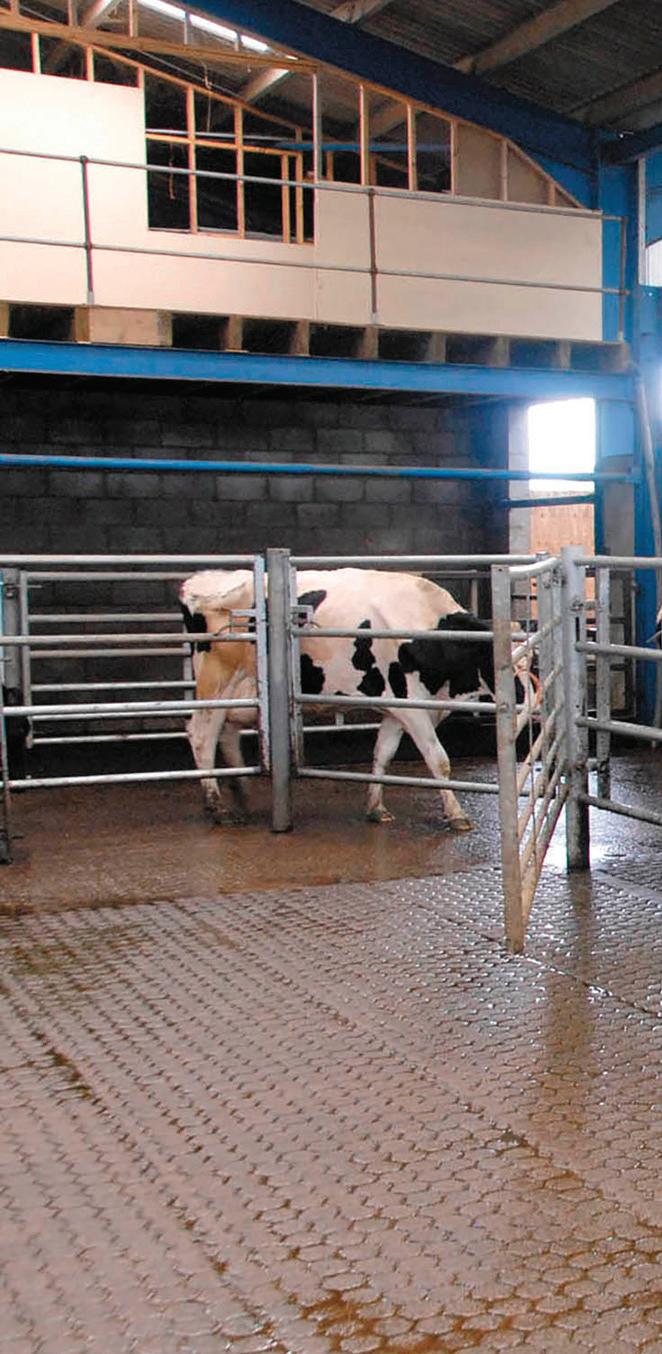
Long narrow footbaths are the best to use as they encourage multiple foot plunges, Dr Bell says.

will start in the recess between the heel bulbs due to slurry build-up.
“ e material must be removed on a regular basis, as even a thin layer will prevent the disinfectant from reaching the contaminated skin.
“ e launch of spray systems about a decade ago was not a success, as it did not thoroughly clean between the claws and the heel bulbs.”
He considers formalin, which has been under threat of withdrawal for the past 15 years, the most cost-e ective chemical on the market.
“It works well when used at the right concentration, which is 3-4% of the total volume.
“Farms with robotic milking systems could reduce the inclusion rate to 2.5%, as the cows may be using the footbath up to four times a day upon exit.
“As a rule of thumb, one litre of solution is su cient for each cow pass before the mix will need to be refreshed.
“Accurate dosing is vital to avoid formalin burn on the skin.
MARCH 2024 16 VET’S VIEW
DR NICK BELL

e industry has relied on the chemical for many years and is important to follow data sheet precautions, to maintain product access and ensure sta safety.
Other products are available, but they must be backed up by research data.”
One common issue with mixing footbath solutions is the miscalculation of the water element.
Dr Bell says this can be avoided, by installing a water tank with a ballcock and measuring gauge, with the precise volume of water released before the concentrated liquid is added.
Hosing
For drain installations, one 15cm or two 10cms (four-inch) products are recommended per bath, preferably with the addition of an o set, vertical pipe. And Dr Bell says the treatment of digital dermatitis should include hosing o cows’ feet in the parlour.
“Some producers are reluctant to adopt this routine because it can initially lead to increased dunging. However, in my ex-
perience, the cows soon become accustomed to the procedure and it is very helpful.”
Good foot trimming protocol is another preventative measure. e recommended approach is to record individual cases and treat infected feet with a licensed antibiotic spray, following cleaning and drying. Research has also highlighted the bene ts of administering pain relief.
“Digital dermatitis has a stress component, so isolation is not advisable. Chronically infected cows are sometimes culled, but nevertheless even severe cases can recover well a er e ective treatment.
“ e disease has a strong genetic component, with some bloodlines having greater resistance than others. Genetic selection indices will include a ‘digital dermatitis advantage’ rating.
“It seems that some ca le bloodlines show greater resistance than others.
“Personally, I suspect that selecting for high yield may have increased susceptibility.”

Monitoring behavioural patterns of adult cows, first time calvers and maiden heifers for the purposes of heat detection and health monitoring can help herd managers to maximise the dairy herd’s productivity.
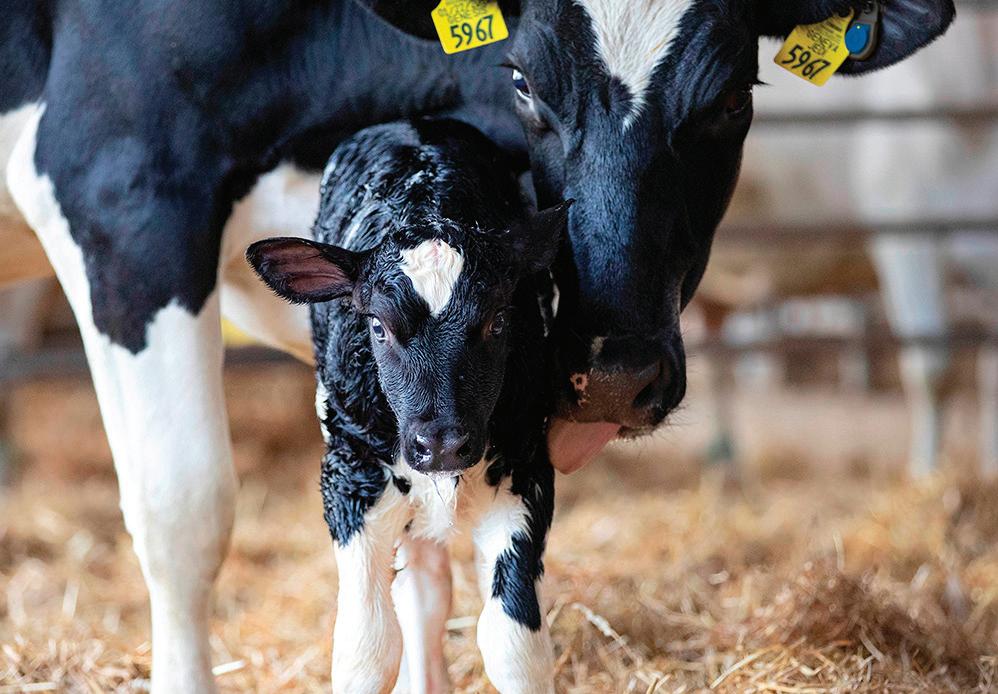
Without knowing how youngstock are performing, the herd’s future productivity could be compromised.
How well replacement heifer calves are reared can have a long-lasting influence on the herd’s performance, with any diseases, respiratory problems or welfare issues during the animal’s first year having a potential detrimental effect for the rest of its life.
Ensuring the farm is producing healthy, well cared for and disease-free replacements is therefore critical to the herd’s future viability.
Thanks to its new SenseHubTM Dairy Youngstock application plan, SenseHub® from MSD Animal Health now allows herd managers to monitor calves during their first 12 months. It can can be used to identify any signs of ill health or opportunities for welfare improvements in nipple-fed calves in single hutches and post-weaning calves in group pens.
Using a monitoring system to watch over youngstock also reduces the farm’s reliance on skilled staff and ensures each and every calf gets off to the best possible start and that it can make a positive contribution to the herd’s income sooner.
UNIQUE SYSTEM
The SenseHub Dairy Youngstock application plan uses the SenseHub monitoring
eartag to assess the behavioural patterns of calves from birth and is suitable for nipple-fed calves in single hutches or post-weaning calves in group pens.
As soon as the SenseHub system detects any irregular patterns which could be indicative of a developing health or welfare issue, the relevant animal is entered on the Youngstock Health Report to highlight which calves need attention. A programmable flashing LED on the eartag also helps to locate the relevant animals so the necessary care or treatment can be administered as quickly as possible.
The SenseHub Dairy Youngstock application can be used as a standalone plan or in combination with other SenseHub Dairy application plans. It is also included as part of the SenseHub Lifetime application, which also offers reproduction and health monitoring for individual cows and heifers and for groups of animals within the herd. SenseHub can also be used to control an MSD Animal health sorting gate and with the SenseHubTM Dairy In-Line Somatic Cell Count and SenseHubTM Dairy In-Line MilkPlus sensors.
All the above are available via the SenseHub GO subscription, which gives customers access to the full suite of SenseHub hardware and software for one affordable monthly payment and no upfront costs.
MARCH 2024 17 VET’S VIEW
MONITORING YOUNGSTOCK TO GIVE THEM THE BEST
CONTENT To find out more, please call the SenseHub team on 01207 529 000, or email us at allflexuk@msd.com For more information, visit www.msd-animalhealth-hub.co.uk/farmers/livestock-monitoring SenseHub is not intended to diagnose, treat, cure or prevent any disease in animals. For the diagnosis, treatment, cure or prevention of disease in animals, you should consult your veterinarian. The accuracy of the data collected and presented through this product is not intended to match that of medical devices or scientific measurement devices.
START SPONSORED
With downward pressure on margins, the opportunity to reduce feed costs is something pre-occupying many dairy farmers. So what needs to be done? Dairy Farmer reports.
Science says protein content of diets can be reduced safely
Speaking at the British Society of Animal Science national dairy nutrition conference, attended by more than 100 nutritionists and nutritional advisers, Prof Liam Sinclair, of Harper Adams University, suggested there were real opportunities to reduce protein content in many diets.
He said dairy and beef cattle were responsible for 50% of the UK’s ammonia emissions and about 75% of all nitrogen in dairy diets was just excreted.
Benefits
Anything which can reduce the amount of protein fed and increase the efficiency of nitrogen use will bring both environmental and economic benefits, he said.
However, he added that many cow diets were still formulated to crude protein.

And he said compounds, blends and straights were still talked about in terms of crude protein content, but he added crude protein did not address the quality of the protein, nor did it reflect how protein was used by the cow.
Prof Sinclair said: “There is a considerable weight of research to show we should be able to reduce the quantity of protein fed. As an industry, we remain pre-occupied with crude protein, yet it is an outdated term and method of rationing cows.
“We formulate diets on metabolisable energy and we should always formulate for metabolisable protein, which more accurately describes how cows use the protein in the ration.
“The better we reflect how cows use protein, the more accurately we can meet those requirements and reduce the
We formulate diets on metabolisable energy; we should always formulate for metabolisable protein PROF
total protein fed, which will reduce costs and also reduce the nitrogen lost in the urine.”
Prof Sinclair explained metabolisable protein is made up of two principal fractions.
Microbial protein is synthesised from protein broken down in the rumen, while bypass protein in the diet moves through the rumen undigested to be absorbed in the intestines.
The relative proportions are not represented in a crude protein figure.
Grass silages
Prof Sinclair said: “For example, the protein in most grass silages is 15-20% bypass protein, while for rapeseed the figure is 30-40% of protein as bypass protein.
“Where rapeseed has been protected, this increases to more than 55%, but the crude protein content of protected and unprotected rape is the same.”
Prof Sinclair said that rationing for crude protein was simply leading to excess protein being fed, as metabolisable protein requirements were often exceeded by such an approach.
He told delegates the key to feeding protein efficiently was maximising the supply of microbial protein from the rumen as this was the fraction of metabolisable protein which was most efficiently utilised by cows.
Prof Sinclair said: “We know
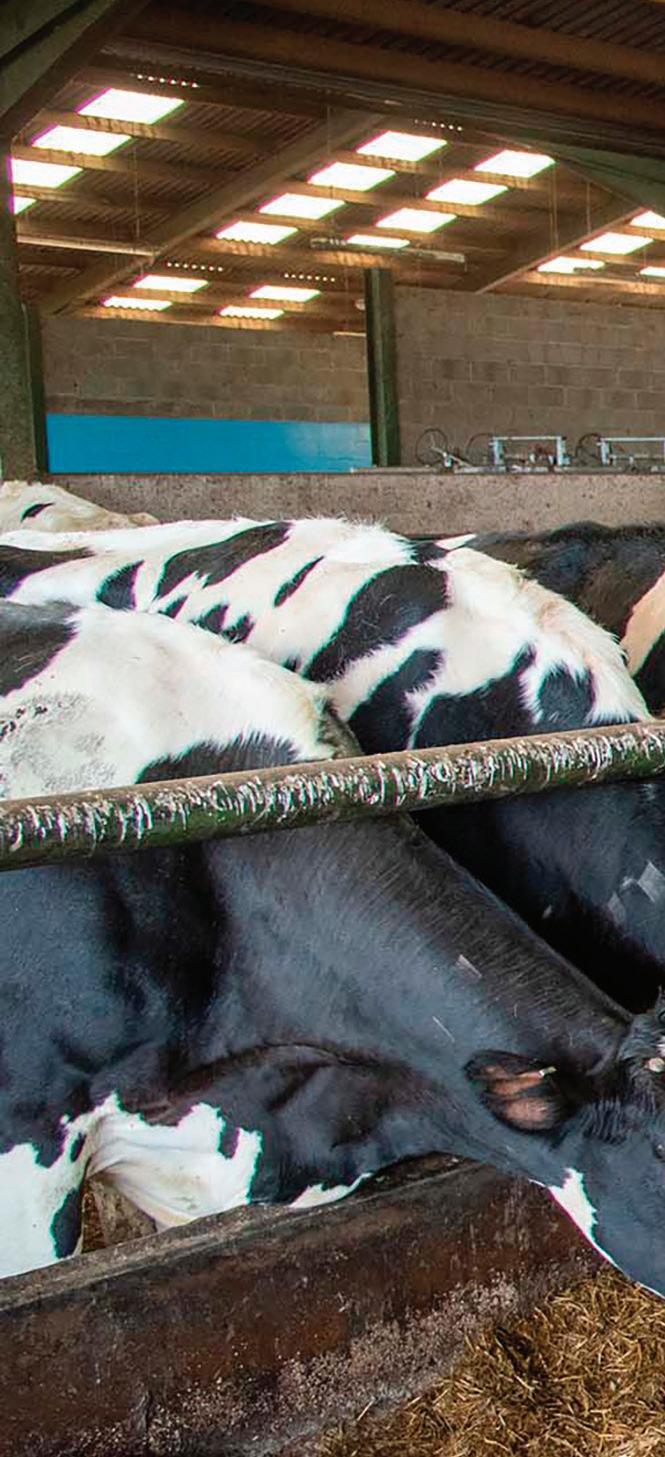
that as milk yield increases demand for metabolisable protein rises. However, the supply of microbial protein does not keep pace.
“This is why higher yielding cows need to be supplied with more bypass protein, but equally why lower yielders can perform quite adequately with less bypass protein.”
He said that if cows were rationed on metabolisable rather than crude protein, it was possible to feed fresh calved cows on diets equivalent to 16% crude protein or less, which is lower than most freshly calved diets in the UK.
He said: “You can reduce protein to 160g/kg of dry matter [DM] with no major impact on yields. However, going below this level in fresh cows could reduce yields unless the diet is formulated very carefully.
“In mid and late lactation, it would be possible to reduce protein content further to about 140g/kg DM without affecting performance.
“Reducing protein content by more precisely meeting cows’ requirements will reduce feed costs and also cut nitrogen waste and the production of ammonia, a win-win for
MARCH 2024 18 NUTRITION
LIAM SINCLAIR

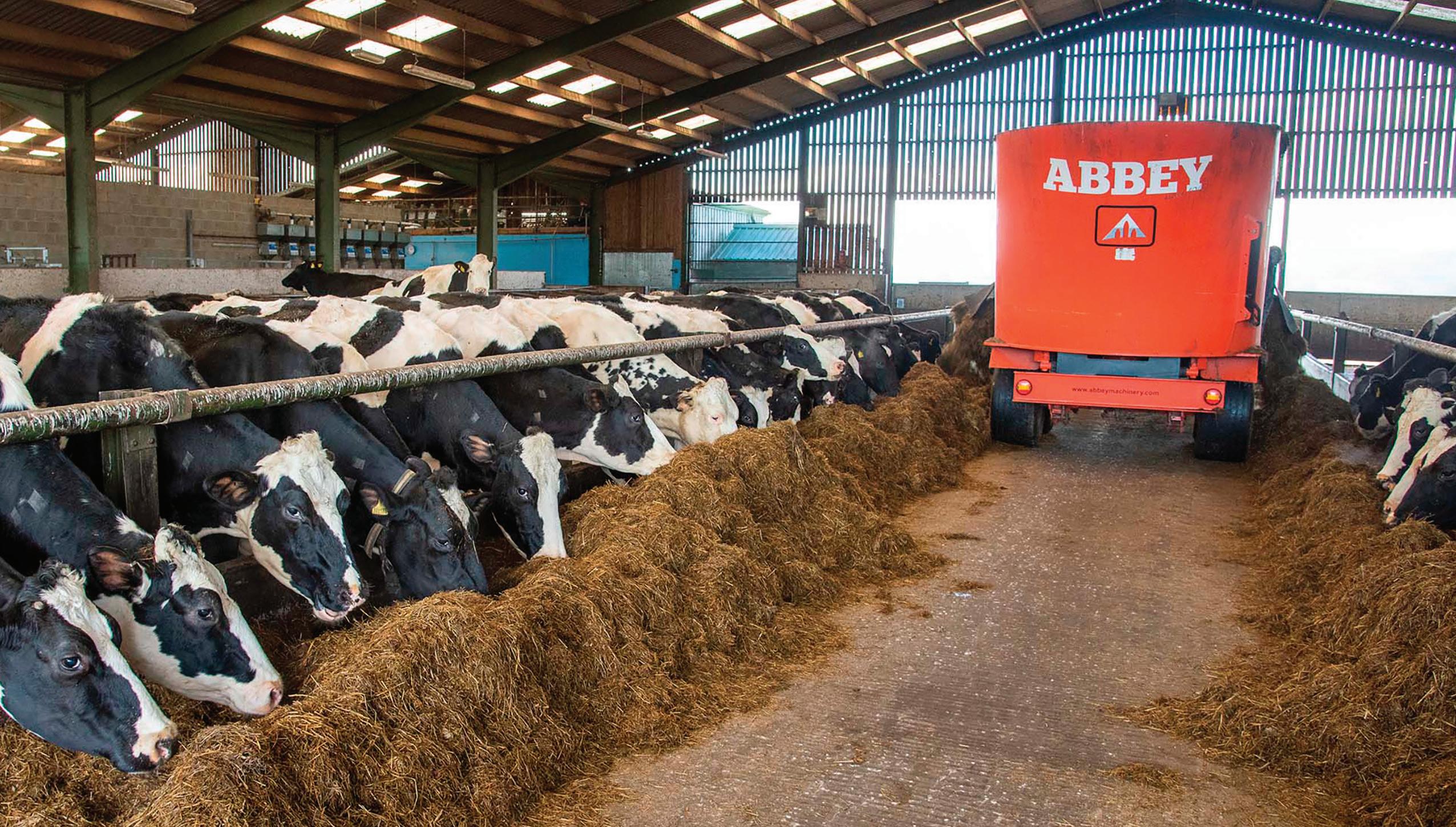
environmental and economic sustainability.”
However, he did caution that when reducing total protein content to high yielders it would be important to be conscious of amino acid supply, particularly of methionine and lysine. He said supplementation with rumen-protected amino acids may be bene cial in some circumstances. Prof Sinclair said: “By challenging protein contents in rations, it should be possible to feed cows more e ectively and reduce crude protein inclusion rates while maintaining metabolisable protein levels. “We know how to do this, so nutritionists need to be challenged to move away from crude protein for the good of cows, pro ts and the environment.”




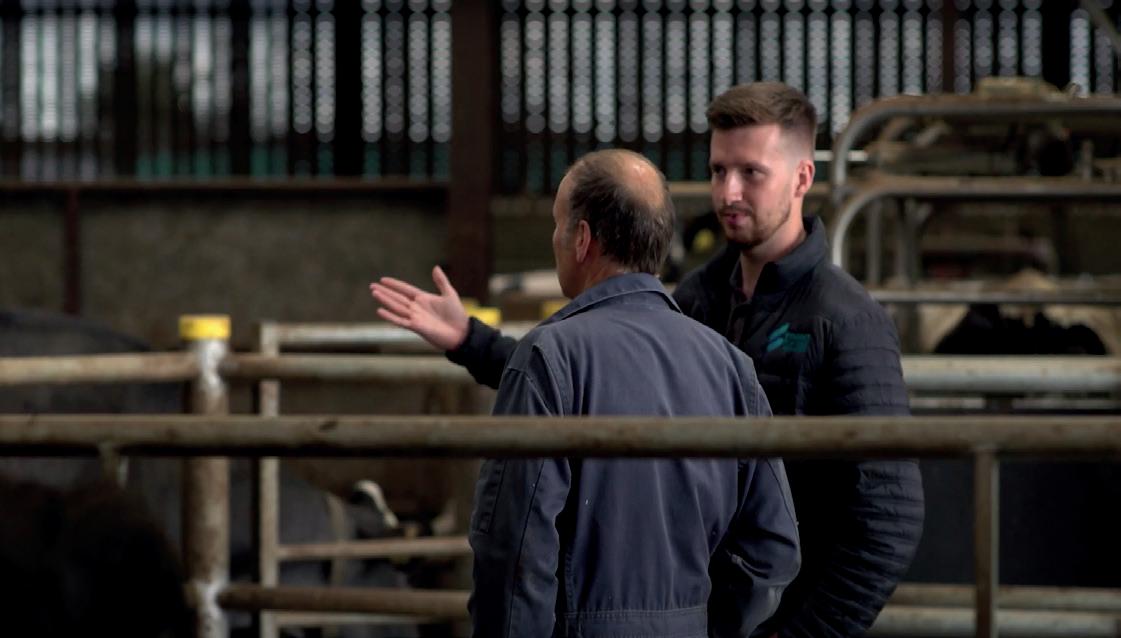

No major upfront costs







Open phone camera & scan






Tailored re-payment options
Potential tax benefits
Same day finance decisions
Scan the QR code to watch the video.
Discuss agricultural finance solutions for livestock, machinery, vehicles and more.
MARCH 2024 19
is
for
is
is
certain types of consumer credit lending
credit related activities that are regulated under the Consumer Credit Act 1974 and by the Financial Services and Markets Act 2000.
Finance for business use customers only. All finance
subject to credit status, approval, terms and conditions. Finance
Farms
a trading name of Shire Leasing PLC who
authorised and regulated by the Financial Conduct Authority for
and
01827 300 333 farmers@shireleasing.co.uk www.financeforfarms.co.uk
Prof Liam Sinclair told delegates the key to feeding protein efficiently was maximising the supply of microbial protein from the rumen.
Hungary’s dairy industry has taken a beating in recent years, forcing some dairy farmers out of business, but one farm is bucking this trend. Chris McCullough reports.
Investing to future-proof business
The Covid-19 pandemic, the war in Ukraine and, in 2023, one of Hungary’s worst droughts have all created endless challenges for the country’s dairy farmers, forcing pro t margins to su er.
However, one larger farm has made a number of changes, investing in new technology and improving key performance indicators to future-proof the business.
Extra Tej operates its farm in the north western region of Hungary, near Beled, extending to 1,060 hectares (2,619 acres).
e company, owned by the Harsanyi family and Zsolt Pinter,
took over the farm from previous owners, Elore Agricultural Co-operative Society, in May 2003.
Kovacs Balint, manager of the dairy, says: “Extra Tej has made a number of investments to improve the infrastructure of the farm and in new technology to increase overall e ciency.
Modernisations
“ ese modernisations included a new feeding system in 2010, followed two years later by a new Boumatic Xcalibur 360EX rotary parlour which holds 50 cows.
“Two new barns, to house 578 and 418 cows, were built in 2014 with a liquid manure handling
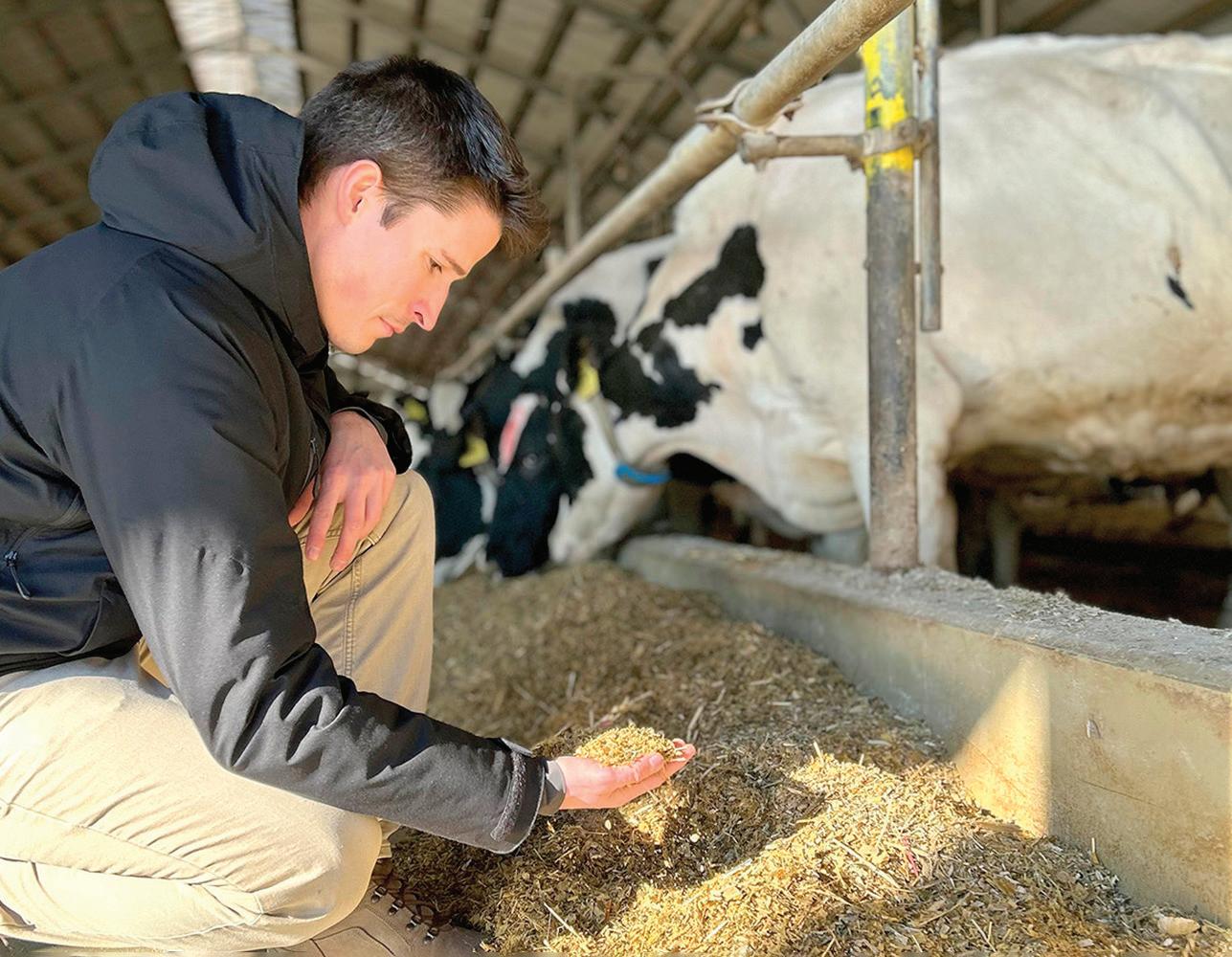
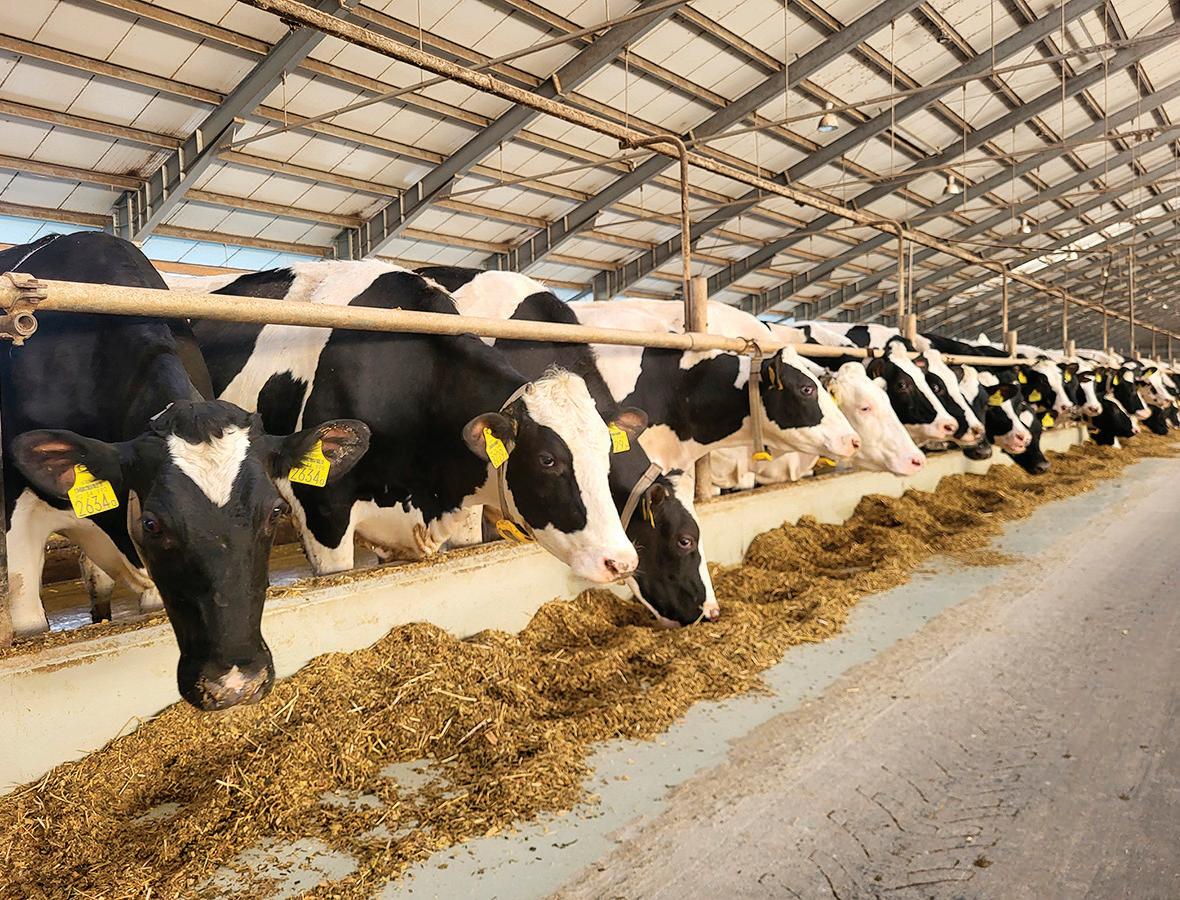
system nanced by a modernisation grant. Also, a new barn for transition cows was added in 2023.”
In addition to these improvements, the company is constantly upgrading its machinery and technical equipment, including the renovation of the silos for storing bulk feed, the road networks and other infrastructure.
e farm is home to 1,000 cows which are milked three times a day, with an average daily production of 40.41kg at 3.81% bu erfat and 3.32% protein.
Focus
Mr Balint says: “In the early 2010s, the focus of breeding was mainly on milk production and calving ease. However, in recent years, in addition to these value traits, an important criteria for the selection of bulls is the somatic cell count and the sire has to be A2A2 homozygous for beta-casein and should improve the milk bu erfat and protein as well.”
Cows are separated into groups depending on number of lactations and stage of lactation. e milking herd is housed in cubicles and the
Farm facts

rArtificial insemination is used across the whole herd
rTo try and safeguard some forage production against droughts, the farm has

dry and transition groups are in deep straw-bedded loose housing.
Currently, there are 39 workers carrying out the duties on-farm, as well as seven management sta and an external veterinary service.
Demonstration farm
Mr Balint says the high number of employees is justi ed by several factors, including the need to ensure a continuous supply of quality sta and the fact that the farm acts as a demonstration farm.
He says: “We produce the bulk feed for the herd ourselves, with most of the forage required being grown on-farm. e ration for the milking cows consists of maize silage, rye silage, sorghum silage, rapeseed groat, soya groat, maize groat and barley.
“The average dry matter intake of the milking cows is about 26-28kg per day per animal. Dry cows receive a mix including alfalfa silage, grass silage, hay and straw. All the ingredients are collected, mixed and distributed by a self-propelled RMH feed wagon to the milking cows and by a trailed RMH feed mixer to the heifers.”
installed an irrigation system on 237 hectares (585 acres)
rMilk is sold to Alfoldi Tej at about 146 HUF per kg (28p/kg)
MARCH 2024 20 WORLD DAIRYING HUNGARY
Extra Tej runs close to 1,000 Holstein cows.
Kovacs Balint is dairy farm manager at Extra Tej.

New technology is playing a major role in helping Mr Balint get the most from cows and make the management process more e cient.
Rubber mats
Cow comfort in the barns has been vastly improved by switching the old rubber mats in the cubicles to waterbeds to help increase lying times.
Mr Balint says: “We have also


replaced the heat detection system with a SmartTag system from Boumatic. is will enable us to have continuous data on activity, eating and rumination, besides the individual identi cation of the cows.
“In the new transition barn, which has been in use since August 2023, we have an automatic curtain, ventilation and a manure handling system which are nowadays
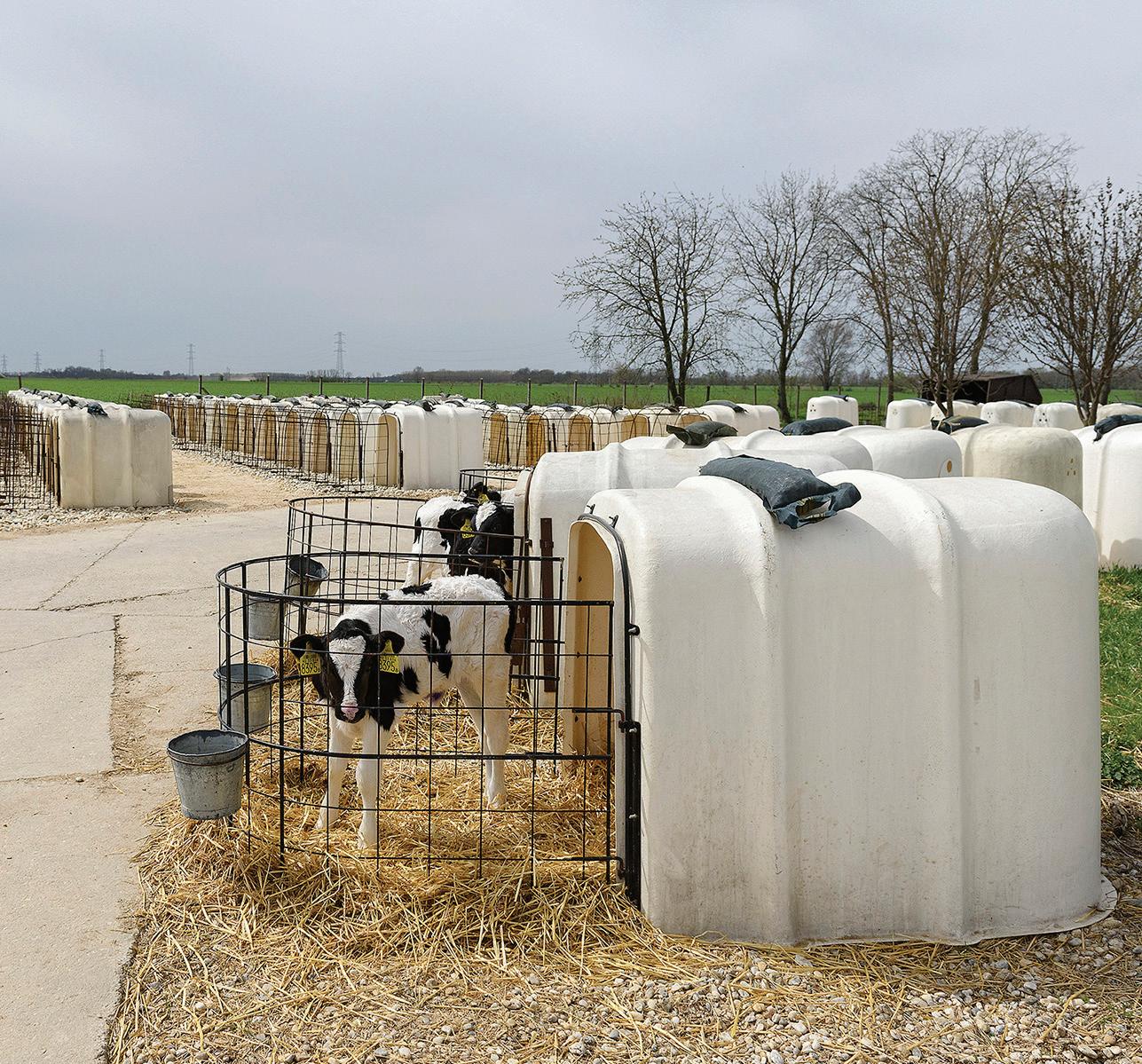
standard equipment. In addition, there is a DeLaval OptiDuo feed pusher robot installed.”
Mr Balint says there are no further plans for expansion at the moment.
Infrastructure
He says: “ e infrastructure is su cient to serve the current number of animals, so an increase in the number of dairy cows



would require an expansion of the silos and the storage capacity of signi cantly increased liquid and solid manure.
“ e aim is to optimise processes with the current number of animals, improve key performance indicators and achieve the highest pro tability in line with the economic environment by increasing e ciency.”
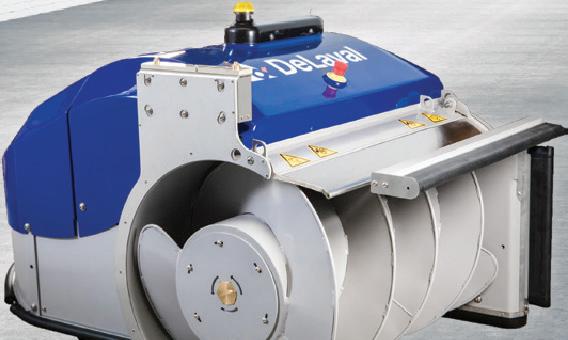










MARCH 2024 21
your new team members Find out more
DeLaval feed pushing robot OptiDuoTM
DeLaval milking robot VMSTM V300/V310
DeLaval manure robot series
YOUR TEAM COMPLETE www.delaval.com
Meet
•
•
•
MAKE
Calves are kept individually in hutches for the first few weeks.
Most of the forage needed by the herd is grown on-farm.
Grazing fodder beet as a winter crop for beef and dairy cattle is reducing wintering costs at a Pembrokeshire farm. Dairy Farmer reports.
Grazing fodder beet for quality winter feed
The James family currently grows 10 hectares (25 acres) of fodder beet for wintering dairy beef stores produced by their dairy herd at Stackpole Home Farm, Pembrokeshire, but are scaling that up to 45ha (111 acres) to also provide feed for lactating and dry cows.
Cows are currently wintered on deferred grazing or kale with baled silage, but switching to fodder beet will provide a cheaper, higher quality source of feed.
During a recent Farming Connect open day, George James, who farms with his parents, Chris and Debbie, said growing kale was getting trickier because of periods of prolonged drought following drilling in late May or early June.
Advantage
“The earlier drilling dates for fodder beet give it an advantage and we can comfortably get 20 tonnes of dry matter from it, so it is by far the highest yielding winter grazing crop,’’ said George.
At around 9p/kg of DM, it works out at around half the cost of silage, therefore the new system would
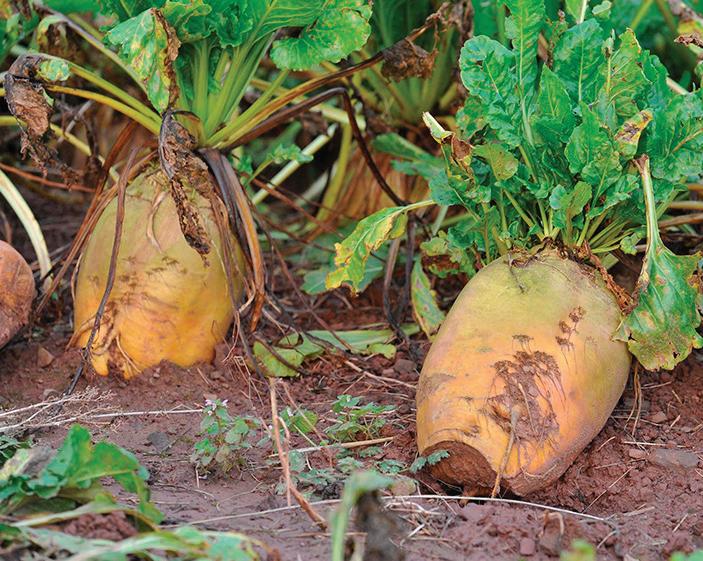
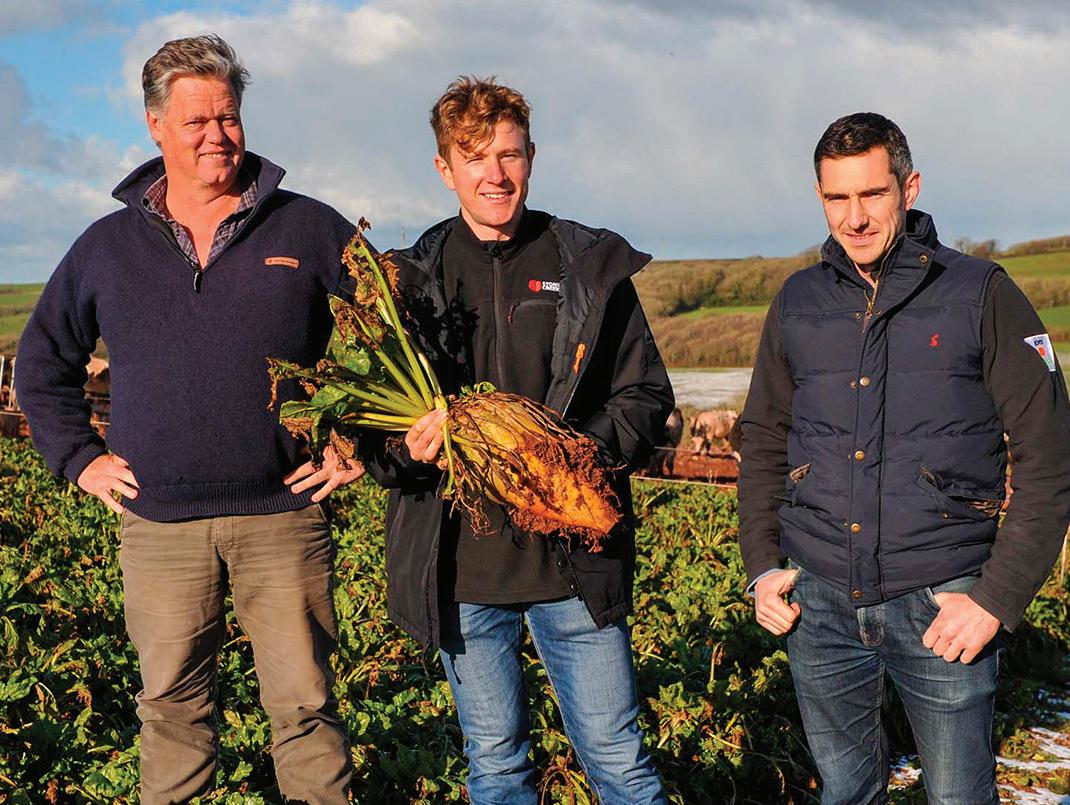
reduce winter feed costs, plug feed gaps in late and early lactation and capitalise on the farm’s free-draining sandy soils.
But transitioning the herd on to the crop and correctly allocating it will be crucial to animal health and performance.
During the open day, fodder beet expert Dr Jim Gibbs, a vet and research scientist in ruminant nutrition at Lincoln University, shared important advice on how to get that transition right — and how to avoid some of the common pitfalls.
Fodder beet has a high sugar and water content so sufficient time must be given for feed intakes to adjust. Dr Gibbs warned that dairy cows are the livestock class most susceptible to transition acidosis due to gorging, a situation which occurs if too much fodder beet is allocated too early in the transition process.
To prevent this, he advised feeding low amounts of fodder beet initially, building up intakes slowly and providing supplementary feed
to keep the cow’s rumen fully fed.
Feeding grass or silage as the supplement initially was advisable, because if less palatable feed such as straw was offered, cattle would not eat the amount needed to maintain condition and performance.
A marker for whether cattle had properly transitioned is if they were leaving beet behind — Dr Gibbs suggested this should be around 5-10% a day.
“There is no risk of acidosis after full transition, providing intakes are adequate,’’ he said.
A lactating cow needs 15-18kg DM in total, therefore 5-6kg DM of fodder beet plus grass or silage should be the target for lactation feeding, as the crop should not make up more than a third of their feed.
“Start by offering them 1kg DM/ day and, once all the animals are eating the bulb, move up 1kg DM/day every two days,’’ said Dr Gibbs.
He recommended transitioning until target intakes were met. For dry stock weighing 500kg
and for in-calf heifers, the daily feed requirement is 14kg DM.
As fodder beet could make up 80% of their diet, they could be allocated 11-12kg DM of fodder beet and 2kg DM roughage once they have transitioned.
He advised building them up to this in stages, 1-2kg DM at day one, increasing 1kg DM every other day, with 7-8kg of supplement until day seven, gradually dropping supplement to 2kg at 14 days when they have fully transitioned.
If feeding 2kg of supplement, careful consideration needed to be given as to how the supplement would be fed to enable all animals to access it. If feeding bales in ring feeders, increasing to 3-4kg was needed due to the restricted feed space.
Youngstock
For youngstock aged from six months, Dr Gibbs recommended starting with a daily intake of 0.5kg DM per head of fodder beet, increasing this by 0.5kg every other day, fed with 3-5kg of grass or silage. At day 14 that mix should be 5-6kg of fodder beet and 1-2kg of grass or silage.
Also speaking at the event, independent grass and forage consultant, Marc Jones, said matching fodder beet varieties to class of stock was important.
He said Lactimo and Geronimo were excellent grazing varieties because they have a high proportion of leaf and more of the bulb sits out of the ground, which allows for a high level of utilisation. A lower DM variety such as Brigadier was more palatable and would achieve better utilisation in smaller calves weighing around 200kg, he added.
MARCH 2024 22
WINTER FEED
Left to right: Dr Jim Gibbs, George James and Marc Jones, at Stackpole Home Farm, Pembrokeshire.
Transition to sugar beet must be gradual, Dr Jim Gibbs said.



2.0



HOW YOU FEED YOUR HERD WITH OUR NEXT GENERATION APP



Feedlync is smart feed management software that reduces feed costs and increases milk yield by improving loading accuracy and monitoring of feed intake and usage.
Contact us to talk saving money on your feed bill and to check out our new app and user interface.
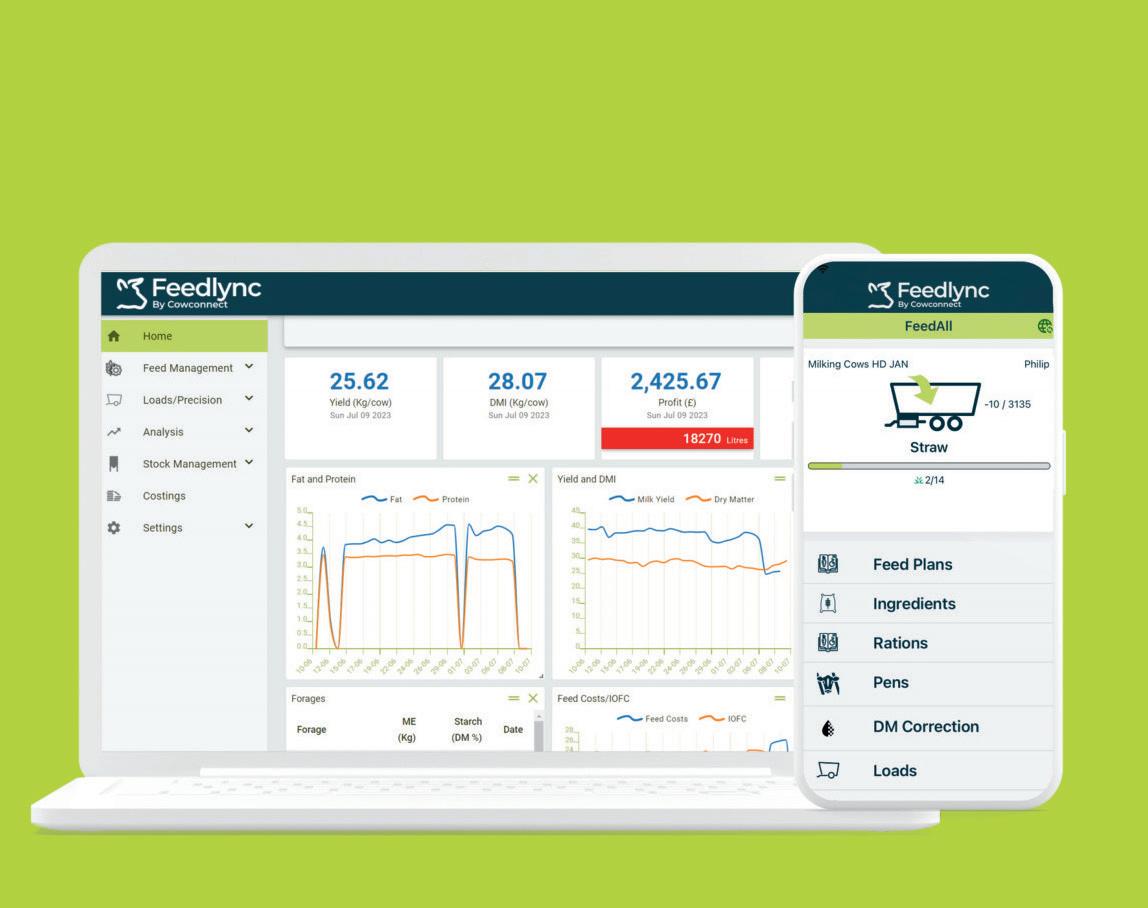

CONTACT US www.feedlync.com 020 3966 9063
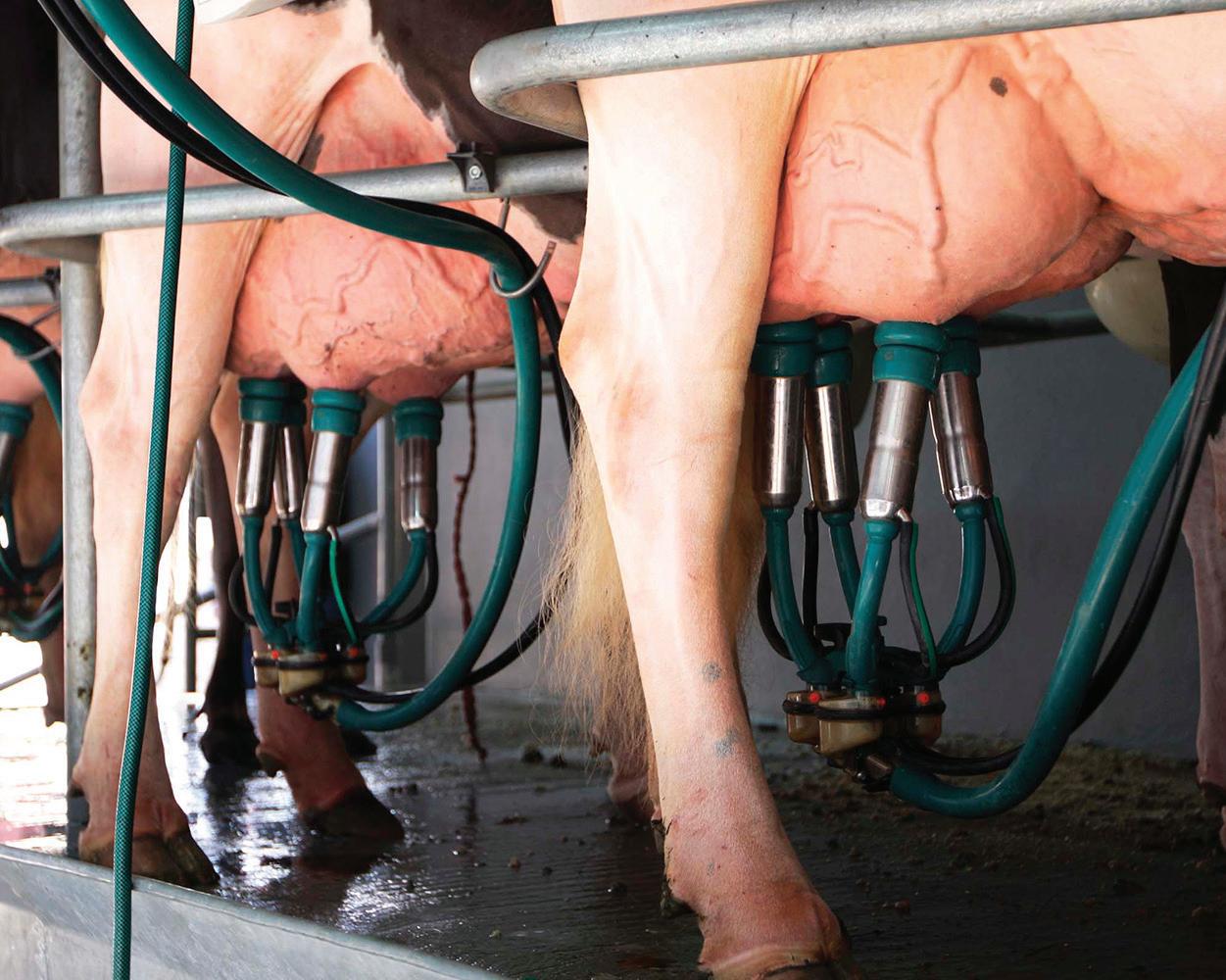

An infection caused by bacteria entering a sore or area of abrasion, udder cle dermatitis is a common skin condition present on most dairy farms. However, the extent of the infection is not always understood due to the nature of the condition.
Primarily a ecting the udder cle , where the front of the udder meets the body wall, the condition causes ulcerative lesions, which in severe cases can be fatal. Vet Will Gratwick, of LLM Farm Vets, says fatalities can occur in chronic cases when the infection spreads from the lesion into the milk vein and through to the lungs.
While udder cle dermatitis can be a common issue in most herds, the lack of research into the condition means its cause is not entirely agreed upon, with several factors in uencing whether a cow will get it or not, says Mr Gratwick.
He says: “ e prevalence of udder cle dermatitis varies from farm to farm, as it is not an infectious disease which will spread from cow to cow; it is more a case of whether you have the right conditions for lots of cases.”
When looking at the conditions in which udder cle dermatitis can develop, Mr Gratwick says cow conformation has been identi ed
Udder cleft dermatitis is a common issue in many UK dairy herds, so what do we know about cause, prevention and treatment? Katie Fallon reports.
How to deal with udder cleft dermatitis
If a cow has got a deep cleft at the front of the udder [...] they are more likely to develop udder cleft dermatitis WILL GRATWICK
as one of the main in uencing factors.
He says: “If a cow has got a deep cle at the front of the udder, with a narrow angle between the body and the udder, then they are more likely to develop the condition than a cow with a wide angle.”
He also says older cows with larger udders are at greater risk of developing udder cle dermatitis.
Abrasive bedding material can in uence the development of the condition, says Natalie Parker, vet tech development coordinator at LLM Farm Vets. She explains any form of abrasive bedding, particularly sand, combined with dirty conditions and a wet environment could cause
abrasion and lead to udder cle dermatitis developing.
A lack of research means that, when it comes to treatment, there is ‘no magic solution’, says Mr Gratwick. erefore, he advises early treatment is best.
However, as udder cle dermatitis is quite di cult to spot in the early stages, largely due to where the condition presents itself on the udder, Ms Parker says it is a di cult condition to identify and treat.
She says: “Most farmers will know they have got some cases of udder cle dermatitis, but probably do not realise how many they have got until it gets so bad that you can smell it and it becomes obvious.”
Easily missed
She says that, in the early stages of infection, the condition can be easily missed due to it not being something farmers are necessarily looking for when milking.
Mr Gratwick says: “From a farmer’s perspective, it is di cult to spot because the udder cle is not easily visible when stood behind the cow, but it is possible to look for it.”
He advises using an inspection mirror to look at each cow’s udder cle when in the parlour, in order to identify the early cases.
“Treatment should be discussed with the farm vet, and involves cleaning the lesion,
drying it out and applying a topical treatment which can be used to treat skin infections,” says Mr Gratwick.
Treatment
He advises treating cows in a foot crush in order to li the cows’ legs to gain be er access to the lesions, followed up by routine spraying in the parlour.
“In terms of a protocol, it is something which could be done when foot trimming as most farmers will trim cows’ feet at drying o , so it would be easy to check cows then and treat where necessary, with severe cases requiring treatment repeatedly,” he says.
Ms Parker says bedding management is key when looking to prevent the condition, with emphasis on clean beds using less abrasive bedding materials, as well as making sure passageways are scraped out regularly.
“Ventilation is also important, so make sure there is a dry atmosphere in the shed, as sweaty cows could be more prone to infection,” she says.
For long-term prevention of udder cle dermatitis, Mr Gratwick advises farmers who are actively struggling with the condition to breed selectively for udder conformation, including strong fore udder a achment.
MARCH 2024 24 ANIMAL HEALTH
Udder cleft dermatitis can be difficult to spot because the udder cleft is not easily visible when stood behind the cow.
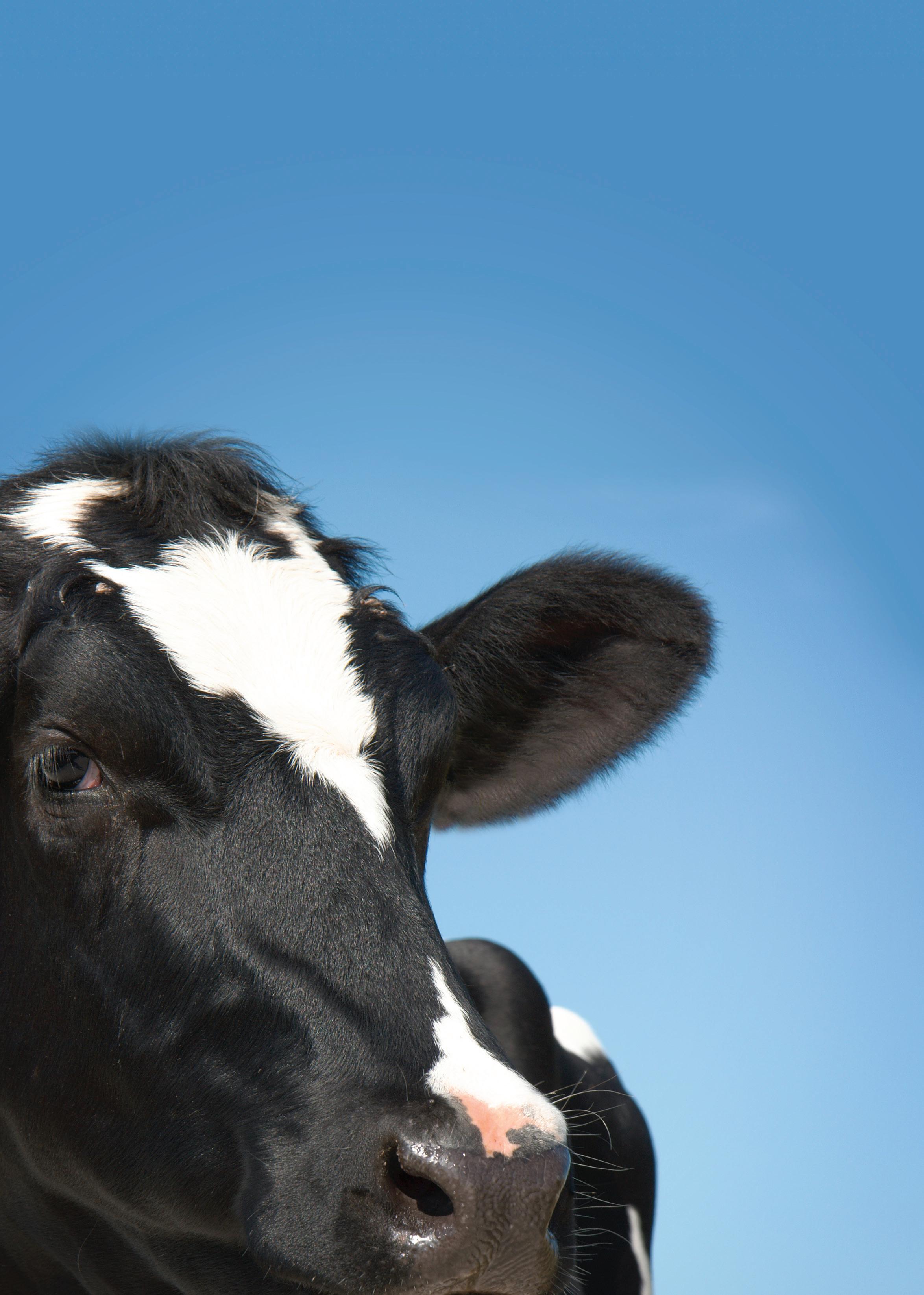
Having the best genetics is great but knowing they’re BVDFree makes them GREATER © Neogen Corporation, 2024. Neogen and Igenity are registered trademarks of Neogen Corporation. All rights reserved. Igenity ® Genomic Technology, powered by Neogen® Follow us on: @ Neogen EMEA - Animal Safety & Genomics @ Neogen iEMEA For more information email us at neogengenomics@neogen.com or call us on + 44 (0) 1292 525 600 Igenity® Extra: Test for Genomics & BVD Together ENGLAND *Our lab is accredited for BVD eradication schemes in England and Scotland Extra Scan here for more
After a two-year break, the National BVD Survey will take place in 2024, as announced recently by organiser Boehringer Ingelheim Animal Health at this year’s Dairy-Tech.
Dr Ailsa Milnes, ruminant brand manager for Boehringer Ingelheim, says: “This will be the seventh time the National BVD Survey has taken place.
“It gathers data from farmers and reflects the national and regional pictures across the UK, which is useful to farmers, vets and policy-makers alike.
“There is no other BVD information gathering exercise on this scale. With BVD remaining a health and financial issue for many beef and dairy herds, understanding what actions farmers are taking, and plan to take, is helpful as the findings will be shared nationally and with respondents directly.”
As with previous years, the National BVD Survey 2024 is being carried out in collaboration with the regional eradication programmes in England, Wales, Scotland and Northern Ireland, along with the producer stakeholders in those countries, including the National Beef Association and the Royal Association of British Dairy Farmers.
It is free to enter – at surveys.farmmetrics.net/s3/Boehringer-IngelheimBVD-Survey – and after indicating which nation your farm is in, respondents will be directed to the relevant questions which relate to their national scheme.
National BVD Survey: A chance to have your say
There is also a prize of 10 Beats Studio Buds True Wireless Bluetooth In-Ear Headphones with Active Noise Cancelling, worth £120, up for grabs, so why not take a few minutes to enter?
Dr Milnes says: “The 2021 survey gathered responses from 1,236 farmers with a split of 43% dairy and 57% beef; many also have youngstock on-farm.
Changes
“Since it was run last time, there have been some significant changes for producers in both England and Wales and it will be interesting to see how this is reflected in the responses.”
For Wales, funded testing under the Gwaredu BVD scheme ceased at the end of 2023. A voluntary scheme, which differed from those elsewhere in the UK, it led with blood screening for antibodies at the same time as the herd’s TB test.
National BVD Survey: Have your say
● 2024 is the seventh time the survey has run
● More than 1,200 farmers responded to the 2021 survey
● Vital information on what is happening on-farm with BVD prevention and eradication
● Helpful for farmers, vets and policy-makers
● Whether you are in a nation with a compulsory voluntary control scheme, having a BVD control plan specific to your challenges is important
Over the lifespan of the project, the scheme carried out tests on 85% of farms with cattle in Wales and identified 1,582 suspected PI animals through testing 93,191 animals1
These animals were found on 1,296 farms with some farms having multiple PI animals and some having none. This work suggests the percentage of positive farms dropped from 27% to 23%1
Meanwhile, for producers in England in receipt of Basic Payments, the Annual Health and Welfare Review, part of the Defra Pathway, offers a funded vet, with a focus on BVD for enterprises with cattle.
These were launched during summer 2023 and, while slow to get up-and-running, are now being utilised by farmers.
Dr Milnes says: “I guess a fair question to ask is ‘why?’ Why are we running it again and what do we hope to learn?
“BVD remains one of the most important cattle diseases globally due to its high prevalence and wide range of symptoms which negatively affect health and productivity.
“Some of the more obvious effects of BVD are relatively easy to quantify, such as the direct losses associated with abortion, cost of treatment and veterinary care, and loss of livestock.
“However, it can be difficult to determine the economic outcome of

the more insidious effects of BVD, such as immunosuppression and poor milk quality in beef suckler herds.
“It is also important to keep in mind the different costs associated with endemic [long-term presence of BVD in the herd] versus epidemic [acute outbreak in a naive herd] infections.”
A recent study estimates that the economic impact ranges from up to £552 per cow per year. Nationally, it is estimated that BVD costs UK farmers about £61 million per year2
Naturally, these figures are estimates and vary between dairy and beef production, and between individual farms.
Breakdowns
Dr Milnes says: “No-one can stand aside and tolerate these losses or run a herd which is at risk of being infected with this virus. And, in spite of the best intentions, through screening and biosecurity, time and time again we see naive and vaccinated herds suffer devastating BVD breakdowns. For naive herds, this is usually as the result of an unpredicted biosecurity breach.
“For vaccinated herds, it tends to
SPONSORED CONTENT
For more information, visit boehringer-ingelheim.com/animal-health MARCH 2024 26
Complete the survey at surveys.farmmetrics.net/s3/Boehringer-Ingelheim-BVD-Survey
Scan the following QR code to complete the survey


be where the timing of vaccine administration has gone awry, something easily done with the more complex killed vaccine protocols, especially for year-round calving herds.”
The 2021 National BVD Survey showed that farmers in every home nation – Scotland, England, Wales and Northern Ireland – had been caught out by vaccine timing protocols and had been forced to restart vaccination programmes3
Dr Milnes says: “Most commonly this was due to going beyond the 12-month window, followed by missing
About Boehringer
the six-month booster and getting the timing of the second vaccination wrong in killed vaccine protocols.
Vaccine programme
“And while the BVD virus could have crept in when a herd’s protection was compromised leading to losses, it is also expensive to restart a vaccine programme. Either way, opting for a live vaccine, such as Bovela®, which has a simple, single injection, more flexible protocol can make a busy life managing a herd slightly easier. Talk to your vet to find out more.”
References
1 Gwaredu BVD (2023) Voluntary Phase Summary 2017-2022; bvd. ahww.cymru/workspace/uploads/ files/bvd_impact-flyer_v16-compresse-64104277dce06.pdf [accessed January 3, 2024].
2 Yarnall MJ, Thrusfield MV. (2017) Veterinary Record (13):347. doi: 10.1136/vr.104370.
3 Boehringer Ingelheim Animal Health (2021) National BVD Survey 2021.





A recent study estimates that the economic impact of BVD is up to £552/cow/year.

Dr Ailsa Milnes
than 150 countries, we offer a large and innovative portfolio of products and services to improve the health and well-being of companion animals and livestock. As a global leader in the animal health industry and as part of family-owned Boehringer Ingelheim, we take a long-term perspective. The lives of animals and humans are interconnected in deep and complex ways. We know that when animals are healthy, humans are healthier too. By using the synergies between our Animal Health and Human Pharma businesses and by delivering
through innovation, we
of
lyophilisate and solvent for suspension for injection for cattle contains modified live BVDV-1, non-cytopathic parent strain KE-9: 104.0–106.0 TCID50, Modified live BVDV-2, non-cytopathic parent strain NY-93: 104.0– 106.0 TCID50. UK: POM-V. Advice should be sought from the prescriber. Further information available in the SPC or from Boehringer Ingelheim Animal Health UK Ltd, RG12 8YS, UK. Tel: 01344 746957. Email:vetenquiries@boehringer-ingelheim.com. Bovela® is a registered trademark of Boehringer Ingelheim Vetmedica GmbH, used under licence. ©2024 Boehringer Ingelheim Animal Health UK Ltd. All rights reserved. Date of preparation: January 2024. BOV-0001-2024. Use Medicines Responsibly.
SPONSORED CONTENT
Ingelheim Animal Health UK: Boehringer Ingelheim Animal Health Boehringer Ingelheim Animal Health is working on first-in-class innovation for the prediction, prevention, and treatment of diseases in animals. For veterinarians, pet owners, farmers, and governments in more
value
enhance the health and well-being
both. Bovela®
MARCH 2024 27
Cross-breeding genomic indexes, the latest tech and the validity of human dietary recommendations were all topics discussed at the British Cattle Breeders conference. Katie Jones reports.
Are recommended diets ‘nutritionally adequate?
Scientists, policy-makers and all those involved in the food system should be ‘extremely wary’ of food consumption guidelines that are not rigorous and transparent in their evidence,
and which ignore the protections against de ciencies and chronic diseases a orded by animal-source foods, said Prof Alice Stanton, of RCSi University of Medicine and Health Sciences.
Prof Stanton highlighted
Developing a cross-breeding index
JDairy farmer Rory Christie, from Dourie Farming Co in south west Scotland, spoke about a project he and three other farmers, led by geneticist Mike Coffey from SRUC, are involved in which is aiming to create the first cross breeding genomic index as part of the Fast Breeders Project.
Mr Christie said he decided to get involved in the project after realising the problem within his own herd was the ‘long-tail’ of cows that were not producing enough milk.
“We wanted to solve that problem and we wanted to increase income by £1 million per 1,000 cows per year,
without more cows or more feed.
“In 10 years we want to go from 475kg milk solids per cow and less than 1kg milk solids per kg liveweight, to 750kg milk solids per cow, and 1.5kg milk solids per kg liveweight.
“This is an audacious aim, but we want to help ourselves become financially sustainable.”
DNA testing
In order to create the Fast Breeders Index, the farms involved DNA-tested their entire herds to create an SNP key. And now, nearly 9,000 animals have been genotyped.
Mr Christie also explained they had created a ‘cows own
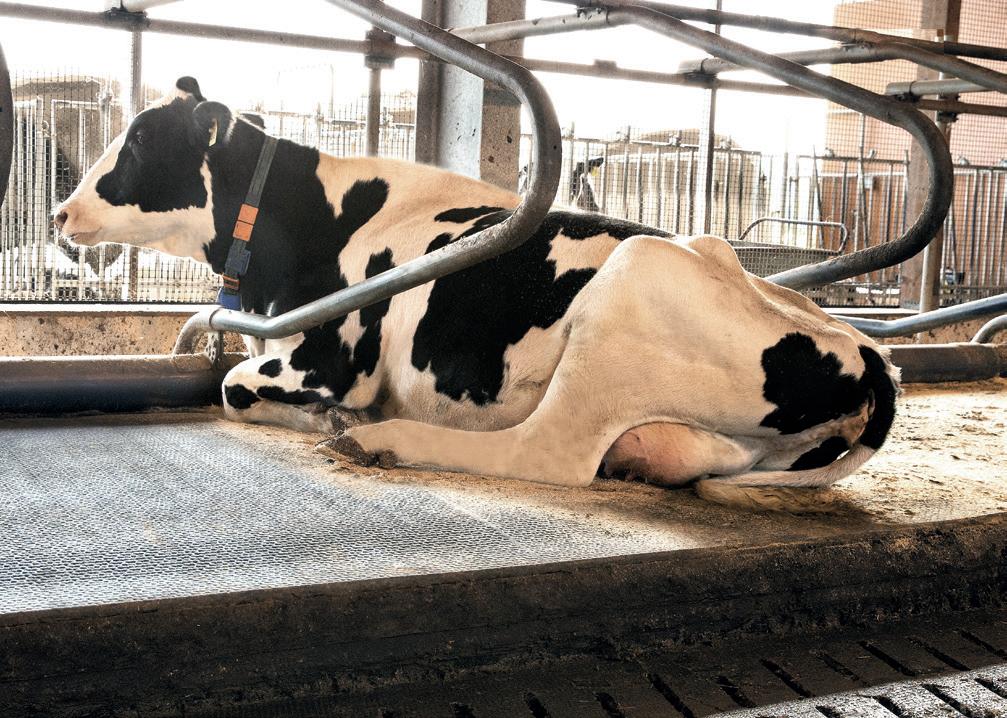
the EAT-Lancet report as being something that had wielded in uence over food consumption guidelines, but she questioned whether it was ‘nutritionally adequate’.
She said: “EAT-Lancet recommends doubling of fruit

worth’ tool, which identifies the least profitable cows to cull.
While, Mr Christie said the process was taking longer than he had originally expected, he is seeing an improvement in milk volumes, fat and protein.
However, he also said that he questioned whether this was
and vegetables in the diet and halving animal-sourced foods from 25 per cent to 13 per cent.
“It advises a reduction in red meat consumption to 7g a day, which is the equivalent to one 7oz steak a month.
also because management had also improved.
He said: “When doing a project like this, it really does bring everything into focus.”
And he added he was also concerned that cow size was also increasing, which he said was a worrying trend because it takes a long time to make genetic change.
“We are worried that we set in motion a change of cow size that neither works for the environment nor the profit and takes us a long time to unpick.
“A liveweight of 500-535kg remains the ideal, but I think we will exceed this and have to cross to Jerseys again.”






MARCH 2024 28 CONFERENCE
MADE IN GERMANY
Rory Christie


“But we need to ask whether this is going to be nutritionally adequate, and in particular whether the micro-nutrients of these recommended diets are going to be adequate.”
Research
Prof Stanton said research had found that these diets were de cient in key micro-nutrients, particularly for women of child-bearing age.
“We need to move animal-
sourced foods back up to more than 25 per cent.”
Prof Stanton said she expected the second EAT-Lancet report would include more meat-based foods within its recommended guidelines, but said there were multiple dietary guidelines and recommendations that continue to be in uenced by the report. She added that it was vital the scienti c review system for these reports was tightened up on.
New cow technology unveiled an eartag, which acts as a solar panel.
JAn integrated health microchip for cows could be available within the next 12 months.
This technology, Chordata, was one of the latest pieces of kit highlighted by Robert Morrison, head of dairy at Agri-EPI Centre.
He explained that Agri-EPI was keen to help develop these technologies, which are set to have a ‘positive and far-reaching’ impact on dairy farming.
Chordata is a microchip, which sits in the cow’s neck and uses a small laser to sample the bloodstream, to monitor up to 25 bio-markers to provide information on energy status, stress levels and fertility.
The chip is powered via the second part of the technology,

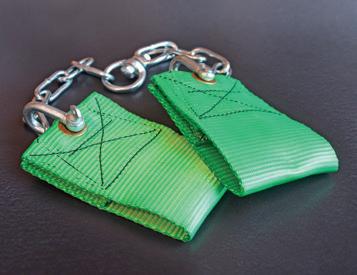
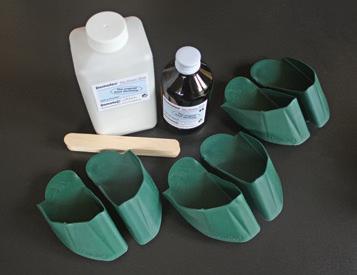
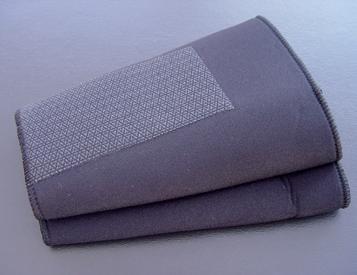

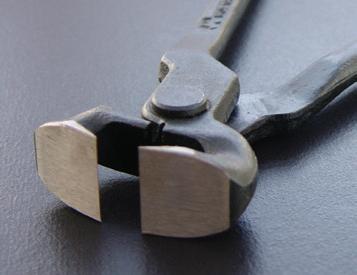
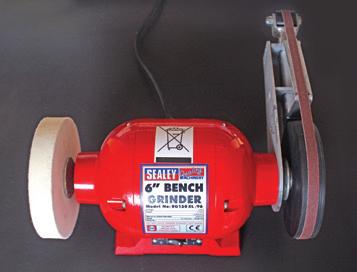
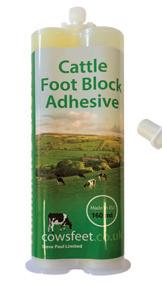


Mr Morrison said: “This is very accurate data about what is going on in the animal and could be used by the farm vet as an early detection tool, but will also provide advice on what actions should be taken.”




MARCH 2024 29 CONFERENCE
Prefer to speak to a human? Give us a call on 01963 824448
you to Steve and his
for an
prices every time, thanks!” JOHNNY MILLER, LANCASHIRE LAMENESS WORKSHOPS October 22 £125 per person Steve Paul Limited The UK's leading cattle foot care company TRIMMING • TRAINING • SUPPLIES Free next working day UK mainland & Ireland delivery ORDER BY 3PM when you spend £100 online excluding VAT Make your life easier with our Electric Farmer Crush Do ring us if you’d like more information! From farmer cattle crushes to wooden blocks, we have everything you need to keep your cows' feet healthy! Cowsfeet advert Farmers Guardian 200x130mm March 2020.indd 1 14/02/2020 09:40
"Thank
team
excellent and very quick service and very competitive
Robert Morrison
Prof Alice Stanton
Following a long winter, many producers will be looking ahead to the grass-growing season, with thoughts turning to reseeding, grassland management and silage-making.


The Mitchell family run an 80-cow Holstein Friesian herd on just 42 hectares (104 acres) at Dromore, Co Down. is gives a relatively high stocking rate of 2.5 cows/ha (one cow/acre), so soils must be in tip top condition and grass production managed with precision to achieve the 8,200kg average yield, Gordon Mitchell says.
He farms with his wife, Lynda, and their sons, Christopher, Jonathan, Phillip and Gareth.
Concentrates are o ered to the autumn/winter calving herd in both in and out of parlour feeders at an annual rate of 1.94 tonnes/head. is supplements a simple total mixed ration which includes grass silage, 0.5kg of straw/head and 3kg/head of an 18% protein blend. It supports maintenance plus 16kg for cows, with a gure of 14kg for heifers.
A high energy, 16% protein
Looking after the soil is a priority for the Ulster-based Mitchell family, which came joint runner up in the British Grassland Society Grassland Farmer of the Year Awards for 2023. Wendy Short reports.
Grass managed with precision
concentrate is o ered in the feeders. Milk quality stands at 4.41% bu erfat and 3.34% protein, with an annual milk solids gure of 627kg and the cows milked twice a day in a 12-point Fullwood parlour.
Contract
Milk is supplied to the local Dale Farm co-operative on a contract which o ers solids bonuses.
e business operates a staggered turnout system from the
cubicle housing from early April through the use of a separation gate at milking. A similar policy is adopted in the autumn, with housing staggered from about the middle of October.
Signi cant investment has been made in the rotational grazing area, which has multiple access points and an extensive network of cow tracks, says Gordon.
Most grazing and silage land comprises short-term leys, with
just 6ha (15 acres) of permanent pasture and a similar acreage of longer term leys of up to 10 years.
Grazing
Cows are managed on a day and night grazing programme in summer and the electric fence system is moved twice daily to supply fresh grass.
Gordon says: “Grass growth is monitored weekly using a plate meter and the information
MARCH 2024 30 GRASSLAND & FORAGE
YIELD MAPPING Improve accuracy of decision-making 38 CONTAMINATION Minimising silage losses 42 FOLIAR FERTILISER A solution of high nitrogen costs?
SPRING RESEEDS Getting crops off to the best start
34
46
During winter housing cows are fed grass silage, with three cuts taken plus bales made from grazing surpluses.
Helping our customers produce healthy high performing herds



Nutrition
Contact our friendly team today on 01977 686262 or visit kwfeeds.co.uk
Feed Technology
GRASSLAND & FORAGE
is entered into a mobile phone app. e general rule is to mow the paddocks when grass yields rise above 3,300kg/ha.
“All the grassland data is uploaded to a so ware program, which showed grass productivity at 12.15t/ha in 2022, which was a drought year.
“In general, the aim is to achieve pre- and post-grazing covers of 3,000kg of dry ma er (DM)/ha and 1,700kg DM/ha, respectively. Covers are managed by pre-mowing, with higher yielding areas made into bales.”
Soil nutrient status is tested on a quarter of the land farmed each year and calcium, magnesium, potassium and sodium levels are monitored to ensure that balance is maintained. Phosphate, sulphur and trace elements are routinely measured and adequate levels are maintained.
Reseeding
About 7ha (15 acres) are reseeded annually using a 70:30 diploid tetraploid perennial ryegrass mixture, with varieties selected from the NIAB Recommended List based on yield potential.
A small quantity of white clover is added for the silage ground, while a higher rate is used for the
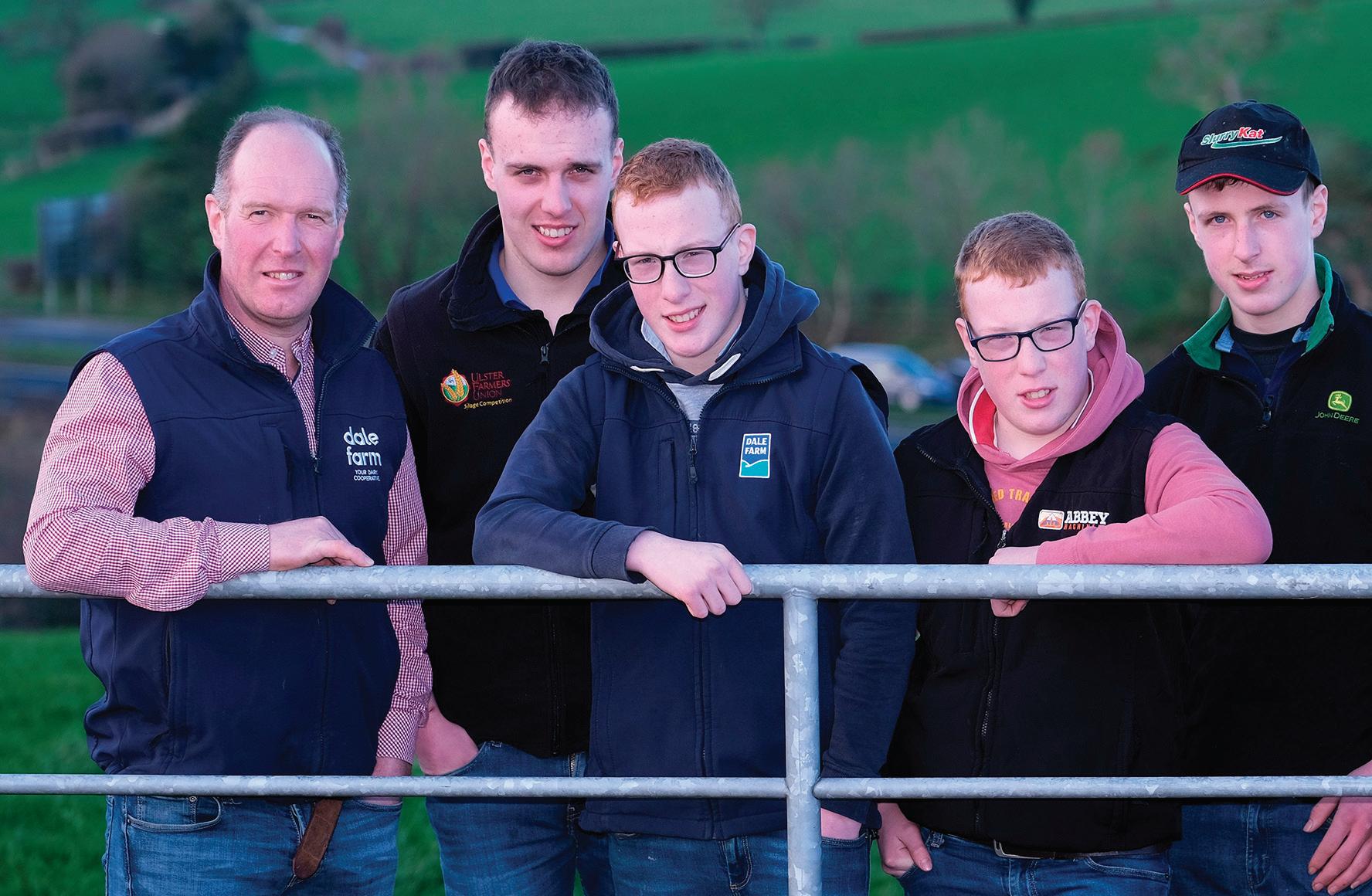
grazing paddocks. e aim is to keep heading dates within a seven-day window.
e potential bene ts of adding multi-species swards are under consideration.
Gordon says: “Mid-season droughts have become the norm in our region, and our research shows that some of the species included in the mixes are highly drought-re-
silient. Multi-species mixes might also help us to cut down on fertiliser inputs and we may try some for the 2024 season on land designated for youngstock grazing.”
Grass reseeds are established by killing o the old crop, ploughing and power harrowing, he says.
“Farmyard manure is applied, plus lime, if testing shows it is required. A biological additive
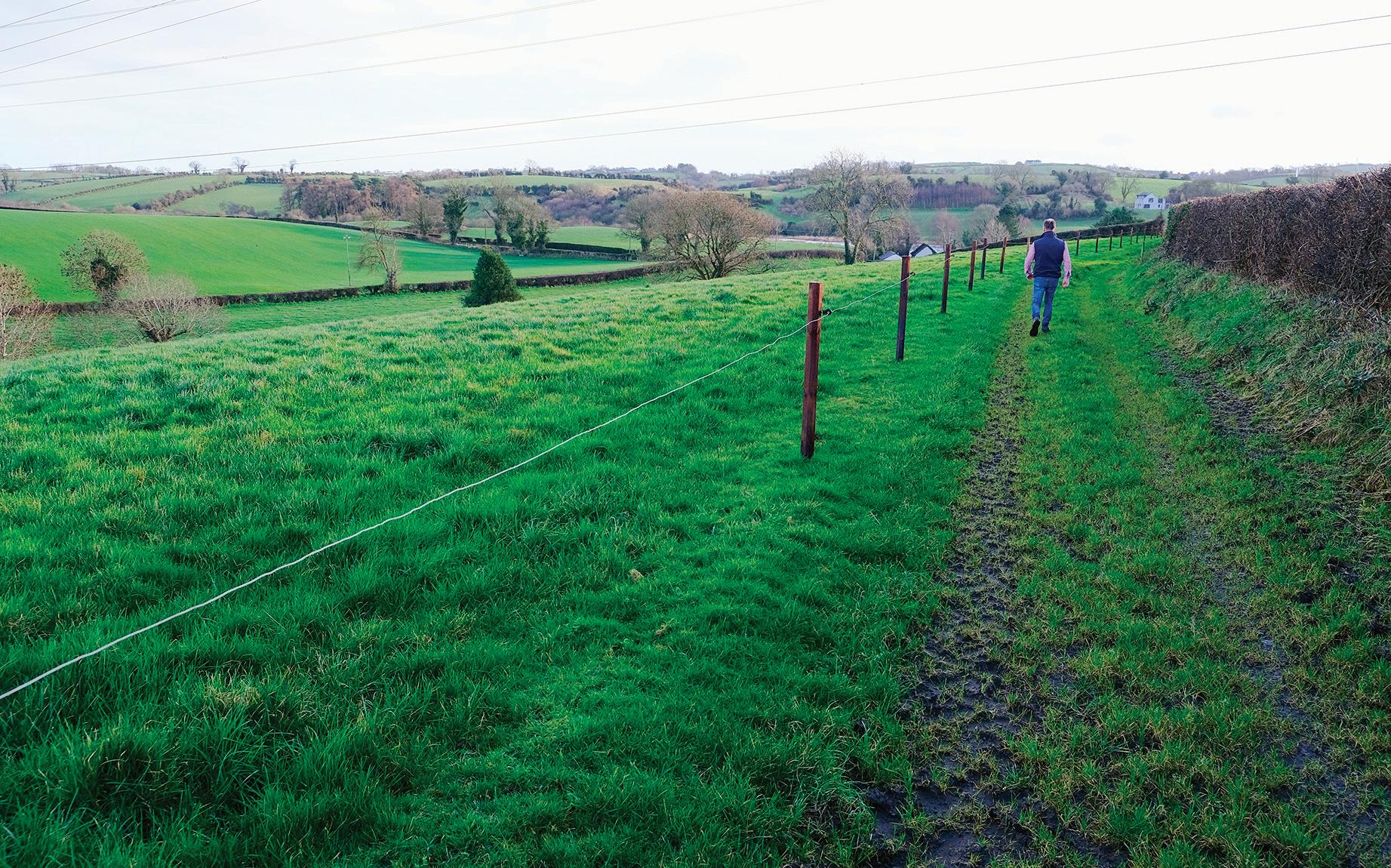

is included at the point when the seed mix is air-drilled; it clings to the root nodules and promotes nutrient uptake.
“Slurry is applied via dribble bar in spring and nitrogen fertiliser usage is tailored with reference to the results of individual eld soil analyses, with about 30 units of nitrogen/ acre put on the grazing land.
“A liquid bio-stimulant seaweed product is applied as a foliar feed to promote tillering and maximise root growth.
“ ere is no evidence that the soil is lacking in phosphate and potash. However, a phosphate solubilising and nitrogen xing bacteria product is applied to the grazing and silage ground in spring to mobilise soil nutrients.
“It can be di cult to achieve the full bene t of granular fertiliser during dry spells, as there is not enough soil moisture to dissolve the product.
“We are trying to tackle the problem by experimenting with a foliar nitrogen spray for the grassland and we look forward to monitoring its performance.”
Herbicides are applied for weed control in new reseeds and for established grassland, says Gordon, and weeds are also spot sprayed to
MARCH 2024 32
PICTURES : Columba O’Hare
An extensive network of cow tracks help to access the rotational grazing area.
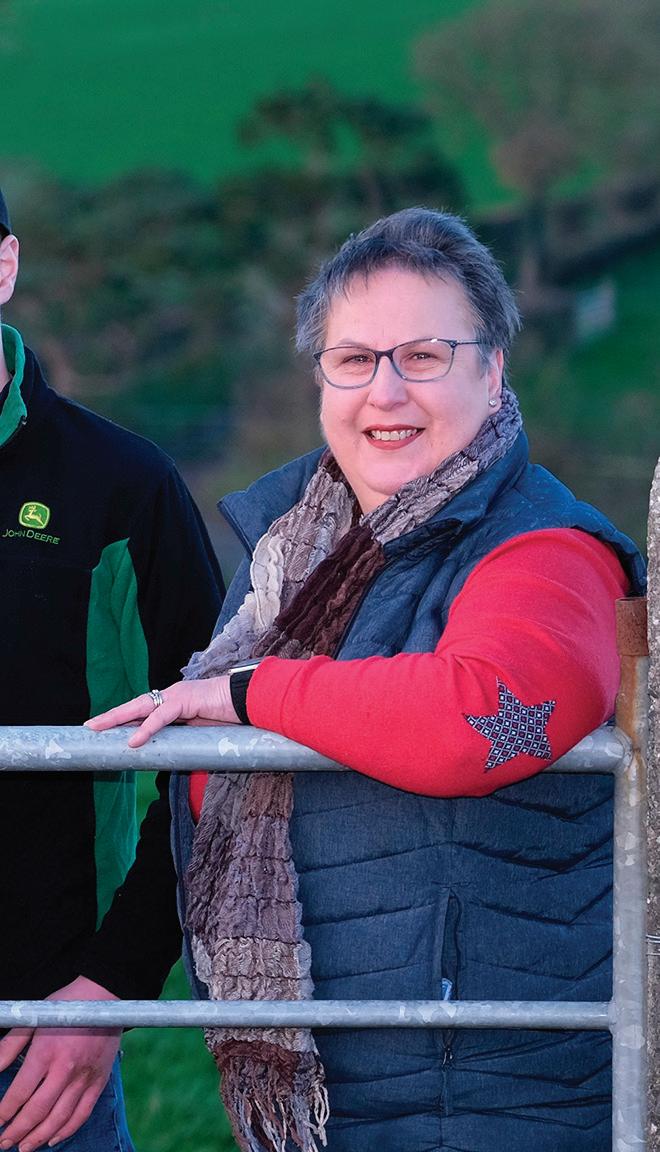

reduce chemical usage and protect the environment.
ree annual cuts of clamp silage are taken in addition to the grass surpluses baled from the paddocks throughout the season.
Contractors are employed for the operation, which follows a target 24-hour wilt system, and the family performs the ‘very important’ task of clamp consolidation.
Dry cow silage
A specialised ‘dry cow silage’ has brought bene ts, says Gordon.
He says: “It is grown without chemical phosphate or potash fertiliser or slurry, ensiled with a biological additive and stored in a separate silo.
“We have found that it has greatly reduced milk fever cases and is very good for encouraging rumen ll, which in turn pushes forage DM intakes during early lactation.”
Example soil analysis
First cut silage analysis 2023
rDry matter (DM): 31.5%
rMetabolisable energy: 11.6MJ/kg of DM
rCrude protein: 18.2%
Farm figures
rYield from forage: 3,467kg
rYield from grazed grass: 2,400kg
rAnnual rainfall: 84cm (33 inches)
rAltitude: 91 metres (300ft)
rHeifer calving age: 24 months
Consideration is given to the farm’s carbon footprint and its general effect on the environment, says Gordon.
“ e farm is part of the Wider Level Environmental Farming Scheme, which has encouraged us to fence o some of the watercourses and install more drinking troughs; there is also an extensive network of well-managed hedges.
“Our replacement rate for 2022 was 22%, which was a winwin for the business and the environment, as it minimises the number of replacement heifers needed.
“A carbon benchmarking exercise at the end of 2022 showed a whole farm emission gure of 1.25kg/ CO2e/kg output and we are working towards further improvements.
“Margins are closely monitored and the gures are used in a benchmarking exercise on a monthly basis. ese measures keep track of performance; not only for cows, but for the business as a whole. Our family mo o is ‘we measure to manage’.”

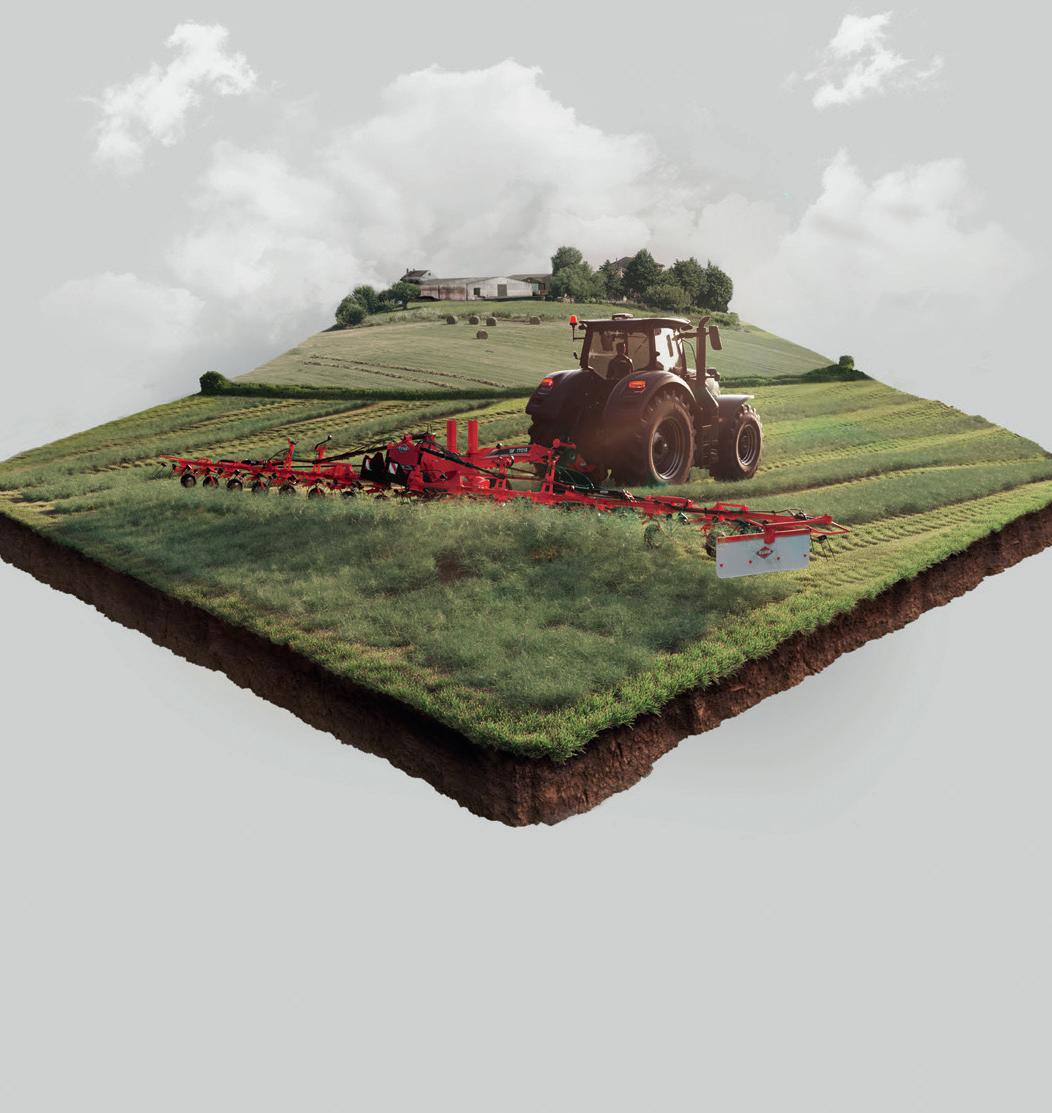

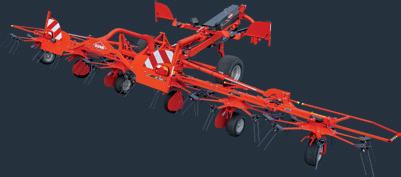
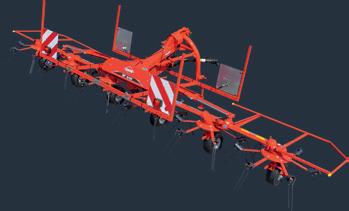

To achieve quality forage, you need to get the most out of your machinery. Innovation that will drive performance up and efficiency that won’t let you down. As a manufacturer of industry-leading agricultural implements, KUHN’s comprehensive range equips farmers to go further, from crop management to forage production, and livestock to landscape maintenance. Scan the QR Code to visit the ‘GO FURTHER with your forage’ website or visit: gofurtherwithyourforage.kuhn.co.uk GF 17003 T GF 7803 T GF 502 GF 13003 GF 642
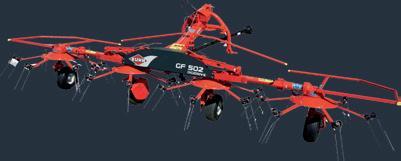
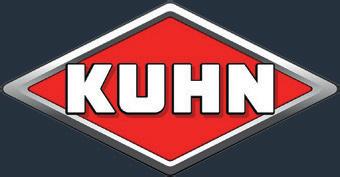
MARCH 2024 33 GRASSLAND & FORAGE
GUARANTEE YOUR FORAGE QUALITY
GO FURTHER with your forage
Actual Target pH 6.8 6.5 Calcium 77.32% 75% Magnesium 10.93% 12% Potassium 4.21% 4% Sodium 0.74% 9% Phosphate 273 111
Left to right: Gordon, Chris, Gareth, Phillip, Jonathan and Lynda Mitchell.
Yield mapping is widely used on arable farms and the concept is growing in popularity for forage cropping. Wendy Short looks at potential benefits and how producers can get started with the system.
The main role of forage yield mapping is to improve decision-making accuracy, particularly when data is combined with soil analysis results and precision fertiliser application, says Jim Clark of Hutchinsons.
It can be used to identify elds for reseeding and pinpoint unproductive areas, as well as potential soil nutrient de ciencies.
Mr Clark says: “An increasing number of producers are using forage yield mapping, with some even investing in the equipment for their own machines.
“We have also had an encouraging response to a training course being o ered to contractors who are giving consideration to retro ting the system or who have modern kit with existing capability.
“ is is in stark contrast to the level of interest even ve years ago, when the concept was relatively unknown on dairy units. Producers interested in entry level forage yield
Accuracy through yield mapping
mapping can use so ware supplied by their agronomist or invest in their own systems.
“Some contractors who provide forage crop services have equipment which can deliver a printout showing yield results at the point of harvest.
Ability
“A minority also have the ability to provide crop dry ma er [DM] gures in real time. e system can be applied to any forage crop, including cereals grown for wholecropping.”
Mr Clark says the data can be converted into a graph to give an instant snapshot of all the forage elds for easy comparison.
In some instances, poor yields can be an indication

of soil compaction or nutrient de cits.
One of his clients used Hutchinsons’ Omnia Digital Farming system to monitor individual grass eld productivity from rst cut to fourth cut silage.


An increasing number of producers are using forage yield mapping
JIM CLARK
Mr Clark says: “It revealed a gradual decline in grass yields on some of the headlands which did not follow the general pa ern for the season, with the issue a ributed to compaction.
“A simple pass with a sward li er was all that was needed to restore problem areas back to an acceptable production level.
“On another farm, rst cut grass tonnage had been closely monitored. It had been a very dry spring and the map showed yields were markedly lower in speci c areas.
Sandy soil
“On investigation, this corresponded to patches of sandy soil, where water retention had been compromised.
“Understanding eld performance at this level of detail can make it easier to formulate a clear plan of action and address any problem issues.”
Grass reseeding is expensive and yield results can be a good
MARCH 2024 34 GRASSLAND & FORAGE
An example of a forage yield map.
As the days lengthen and grass begins to grow, thoughts move to first cut silage. But after a difficult end to 2023, what should farmers be focusing on?


Uncovering the key to the best quality silage
Many farmers will be looking to forget the stormy, exceedingly wet weather which plagued the autumn and early winter, but these conditions will have left a legacy which needs to be addressed at the start of this season.
Taking action now can ensure the 2024 silage crops can be high yielding and of the best possible quality.
Peter Smith, Ecosyl silage expert for Volac, says: “Autumn 2023 was particularly challenging with a number of fourth or late cuts left in the field due to the wet weather. Unless grazed off with sheep, this grass carryover will need to be removed early in the season.
“If this grass is not taken, it will die off and dilute the quality of the first silage cut, typically reducing it from 12 ME to as low as 9 ME.
Bacteria
“This old grass can harbour bacteria which will adversely affect the fermentation process when the grass is in the clamp. View this first cut as a clearing cut to start the season so the new growth is fresh.
“It can be reasonable quality if taken in the good weather and cutting as early as April in the milder parts of the country is recommended.”
Taking off this carryover will allow for more vigorous growth thereafter,





Mr Smith says, but he cautions against leaving a long gap between this cut and the next, because if left too long, the grass beneath will be white and regrowth will be slow, especially in dry conditions.
Assessing the state of grass leys ahead of the start of the growing season is important as the strong growing conditions last summer may have masked sward deterioration.
This is according to John Spence, forage crops product manager of Limagrain UK. He says: “Many grass reseeds were postponed due to poor weather. Because the grass grew well in late summer, many farmers were content with existing swards, which seemed to perform well.
“Spring brings an opportunity to evaluate the yield and quality of this year’s first
cut to enable informed decisions about the need for reseeding later in the year.
“Analysis of silage made from older swards and new grass leys indicates there is a significant increase in digestible fibre, metabolisable energy and protein after reseeding. Farmers are also looking to the Sustainable Farming Incentive [SFI] to claw back lost Basic Payment Scheme income. The SFI NUM2 Legumes on improved grassland action is proving very popular as are herbal leys.
“Farmers are specifying grass mixtures with clover when reseeding or drilling seed into existing swards to fix nitrogen and improve protein content.
“Where an established sward continues to yield well, clover can be added by creating gaps in the sward
by harrowing and then direct drilling.
“Over-seeding works best when drilling into an open sward, whereas drilling into older, matted pasture can be problematical.”
He adds that maximising silage quality in the season ahead must be the main priority, so choosing a mixture carefully for the intended purpose and to suit current management is key.
Mr Spence says: “New varieties are bred for forage quality, specifically digestible fibre content, and these will not only yield better, but will make a significant difference to silage quality.”

SPONSORED CONTENT
Find out more at farmersguardian.com/bettersilage, or scan the QR code
MARCH 2024 35
Adding legumes to reseeds can both increase protein and provide income through the Sustainable Farming Incentive.

GRASSLAND & FORAGE
indicator that elds are ready for renewal or for moving on in the rotation, he says.
“Conversely, obtaining productivity gures on elds which have been earmarked for reseeding can sometimes show the current mix is still performing to acceptable levels and may go on to be used for grazing or silage for another year.”
Unprofitable
e tool can also highlight elds, or areas within an individual eld, where mainstream production is unpro table, and these might be more appropriate for entry into a Countryside Stewardship scheme, he says.
In addition, data can be referenced when reviewing forage stocks at the end of the season in order to give a clear picture of the available tonnage for winter feeding.
“It allows for a much greater degree of accuracy, compared with the traditional method of estimating forage stocks by measuring the size of the clamp and making calculations based on freshweight and crop DM gures.
“Being aware that the clamp contains 2,000 tonnes of grass silage at 30% DM, for example, can simplify the task of forecasting supplementary feed requirements.

Mr Clark says: “Knowing exactly how much forage is in storage will make it easier to formulate rations, especially if the information is combined with forage analysis results.
“It may provide the opportunity for producers to match bought-in feed quantities more accurately and buy at a time when prices are favourable.
“Another bonus is that the yield mapping will also facilitate cost of production calculations.”
All farms should have a manure management plan, which some milk buyers require as part of the supply contract, he adds.
Data collected from forage yield mapping can work alongside the information generated and ne-tune the system, while slurry and farmyard manure analysis may point to potential fertiliser savings.
Mr Clark says: “ e manure
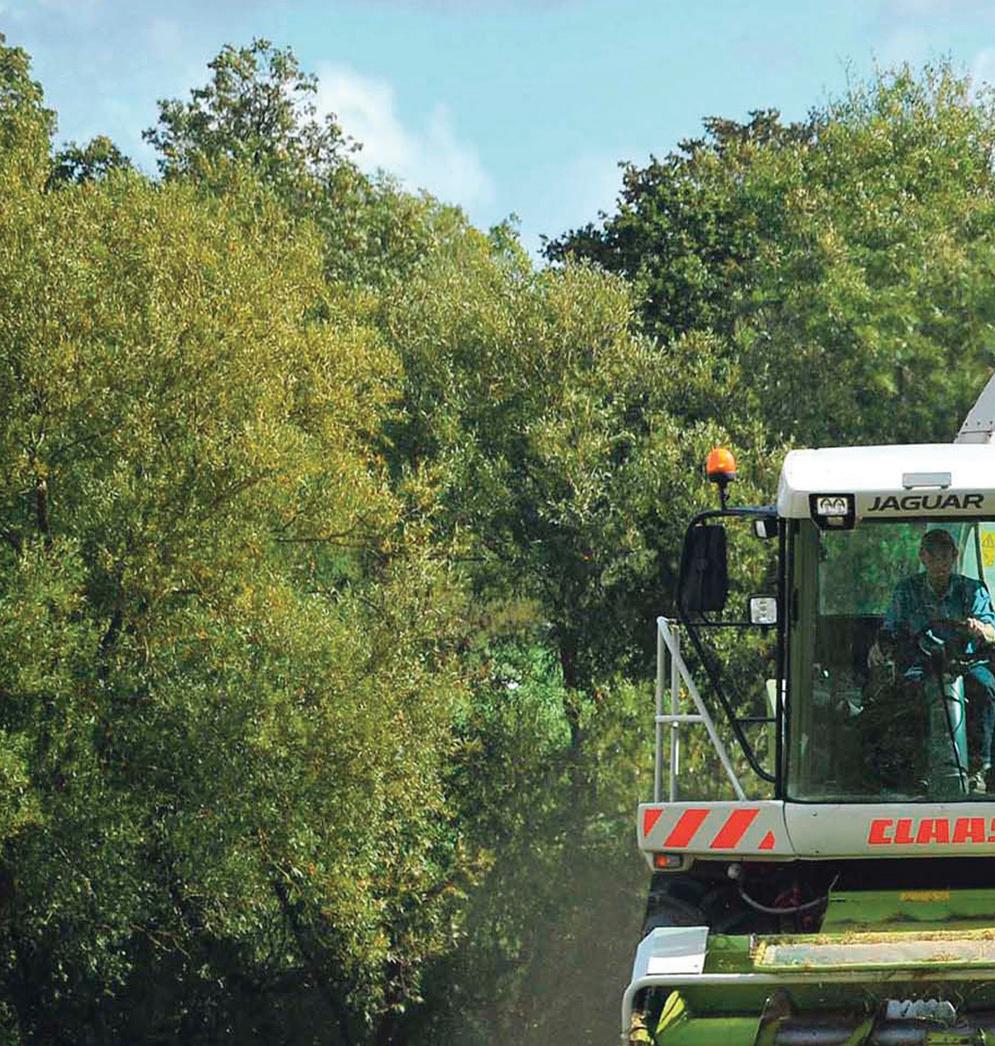



Obtaining productivity figures on fields which have been earmarked for reseeding can sometimes show the current mix is still performing to acceptable levels
JIM CLARK






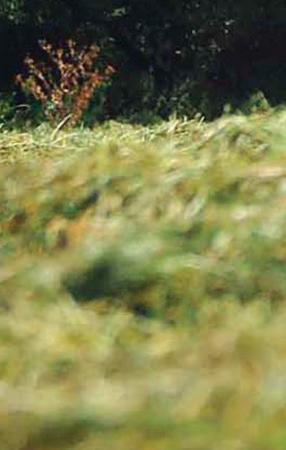




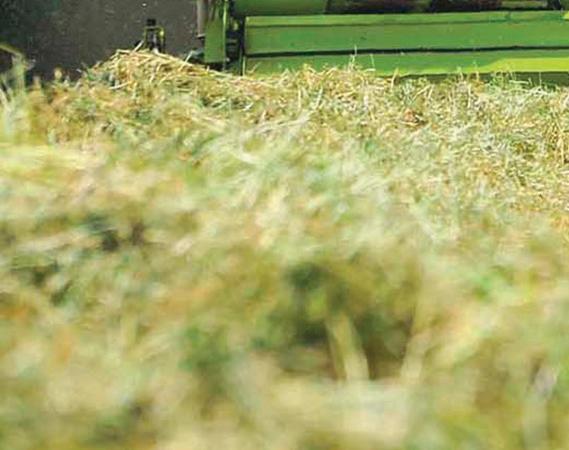

management plans help the farm to meet regulatory compliance, which sets a limit of 170kg of nitrogen/hectare for land within a Nitrate Vulnerable Zone [NVZ] and 250kg/ha for farms outside an NVZ.
Basis
“
e calculations use the AHDB’s RB209 Nutrient Management Guide as a basis for working out the nitrogen content of slurry and manures.
“Farms which have used forage yielding mapping will have precise gures on the crop tonnages which have been taken o the eld. ese can be considered in combination with the actual nitrogen content of the organic manures
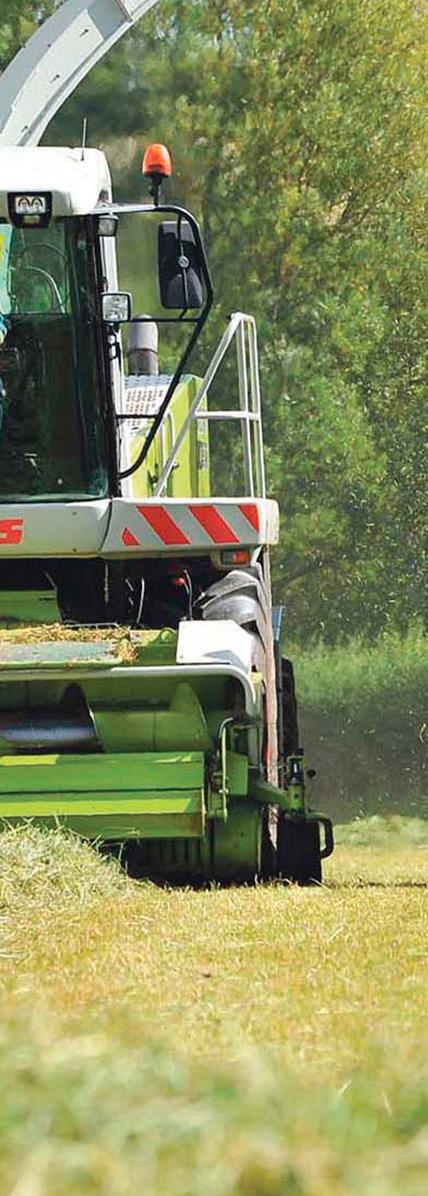

speci c
to the indi-



vidual unit.

“In some cases, it may be possible to reduce bought-in nitrogen, phosphate and potash application rates, by overlaying yield mapping results with precision fertiliser data.
“Environmental considerations can also be brought into the equation and farms which are conducting farm carbon audits may nd that the practice will reduce the unit’s annual carbon output.
“It is all part of an overall drive to improve input e ciency in general across UK farms,” says Mr Clark.
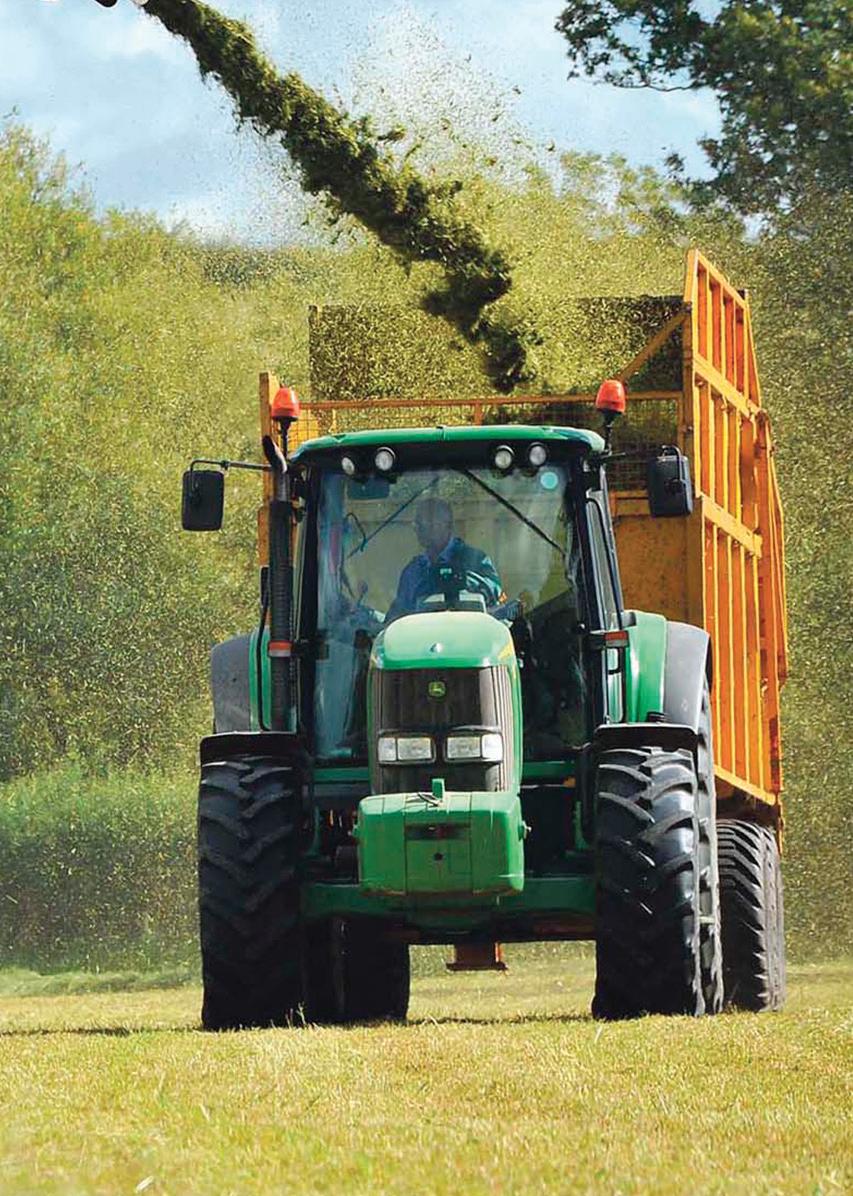

MARCH 2024 36
Some contractors have equipment which can deliver a printout showing yield results at the point of harvest.

Bank Said NO? We Usually Say YES! FARM LOANS & RE-MORTGAGES
We can quickly arrange loans
3 months - 25 years £10,000 - £5,000,000
Competitive rates for Farm Finance
Immediate decision in principle - use for any purpose: Consolidation, Tax bills, Crops, Expansion, New equipment, Livestock etc.
Specialist help for Financial Problem Cases Including adverse credit
We can lend against property Farms, Farm Buildings, Farm Equipment & Machinery Equestrian Buildings, Shops, Bare Land and Buy-to-Lets.

If it can be done - we can help - call to discuss:
0800 280 06 05
www.brilliant-finance.co.uk

We are a broker not a lender


Our range of self-propelled and single, twin or triple auger trailed feeders with capacities from 5m3 up to 46m3, all available with a wide range of specications and options, makes BvL the ideal solution for all your livestock TMR needs.

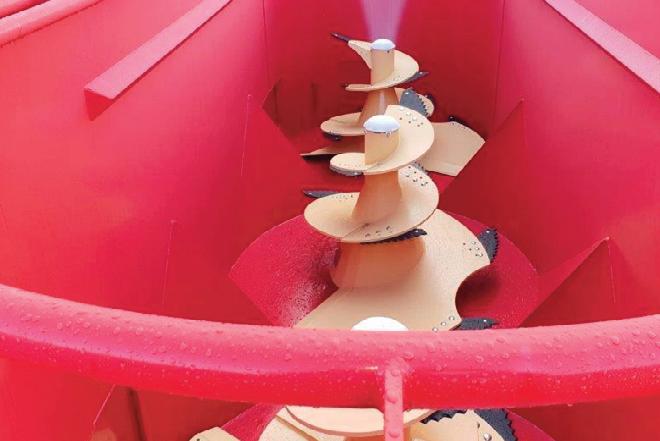
Quality mixer ... Quality mix ... Quality assured ...

Powerful mixing augers with adjustable knives ensure thorough mixing of all types of feed, including bales. Gentle mixing, consistent ration quality.
The patented EDS discharge system provides an extremely consistent, uninterrupted loose ow of forage to both sides if necessary, even without the optional cross conveyors or elevators.
37 MARCH 2024
Innovation. Experience. Strength.
The livestock feeding experts
North: Paul McUrich - 07810 040100 / paulmcurich@gmail.com South: John Molton - 07947 719985 / john.molton@bvl-group.de www.bvl-farmtechnology.com Spring 22 DF half vertical 90x255.qxp_Layout 1 17/01/2023 10:27 Page 1
Unwanted microbes in silage cause major losses in quality and quantity, not something you want if striving for more milk from forage. So how can contamination with these ‘bad bugs’ be reduced? Dairy Farmer reports.

Cutting silage contamination

Even in well-made grass silage, typical dry ma er (DM) losses range between 8-10%, says Ecosyl silage microbiologist, Dr Mark Legge of Volac.
If a ention to detail slips, they could be over 30%, he says, and losses do not end there.
“ e unwanted bacteria that
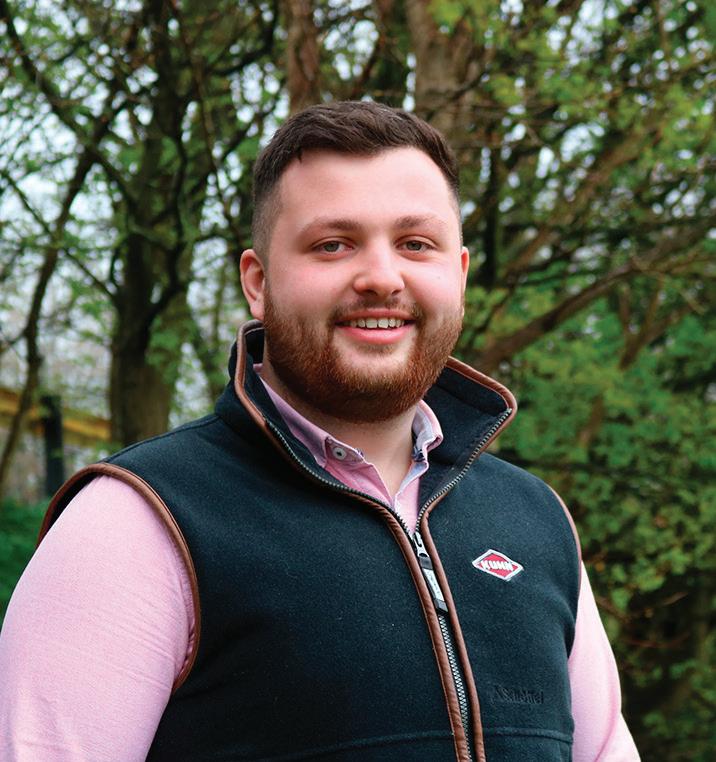
cause these losses feed on the most nutritious parts of the DM rst – the sugars and proteins,” says Dr Legge .
“So the silage remaining is also lower in nutritional value for milk production.
“Two such unwanted bacteria o en present on grasses include enterobacteria from slurry and clostridia from soil.
“Enterobacteria ferment sugar in grass, but do so ine ciently, wasting more than 16% of the fermented sugar’s energy and 40% of its DM.
Spoilage
“ ey also produce acetic acid in the process, which, although useful in some ways, is not ideal for preserving silage against certain other spoilage bacteria. Enterobacteria also break down protein to release ammonia.”
Meanwhile, Dr Legge says clostridia from soil can metabolise not only sugars, but
also proteins and even lactic acid, which is a bene cial acid. is results in even higher DM and energy losses and produces unpalatable products such as butyric acid and ammonia, he says, which can lead to silage rejection.
So, what can be done to minimise unwanted bacterial contamination?
According to Rhodri Jenkins of Kuhn Farm Machinery, this starts before harvest by ensuring swards are dense, with minimal gaps and removing any previous wheel ruts to prevent soil easily entering the forage at harvest.
e start of the harvesting process is just as important as the end, says Mr Jenkins, with cu ing height of mowing discs, and blade sharpness, both key areas to focus on.
“Field undulations, combined with incorrectly set mowers, can cause scalping, and will increase the potential for soil to
be mixed with the forage,” says Mr Jenkins.
“Likewise, with blunt blades, mowers will pull grass rather than providing a clean cut, which could lead to grasses being drawn from the sward along with soil.
“Changing the cu ing height to suit di erent elds will also ensure mower blades last longer.”
Tedding
Similarly, Mr Jenkins says, although important for rapid wilting, tedding grass can produce more contamination if the implement is incorrectly set.
He says: “ ere is a ne balance between li ing grass cleanly from the ground and ensuring the tines do not contact the soil at the same time, with wider machines more likely to encounter issues.
“Features such as Kuhn’s Ground Save Control allows individual rotors on tedders up
MARCH 2024 38 GRASSLAND & FORAGE
Rhodri Jenkins
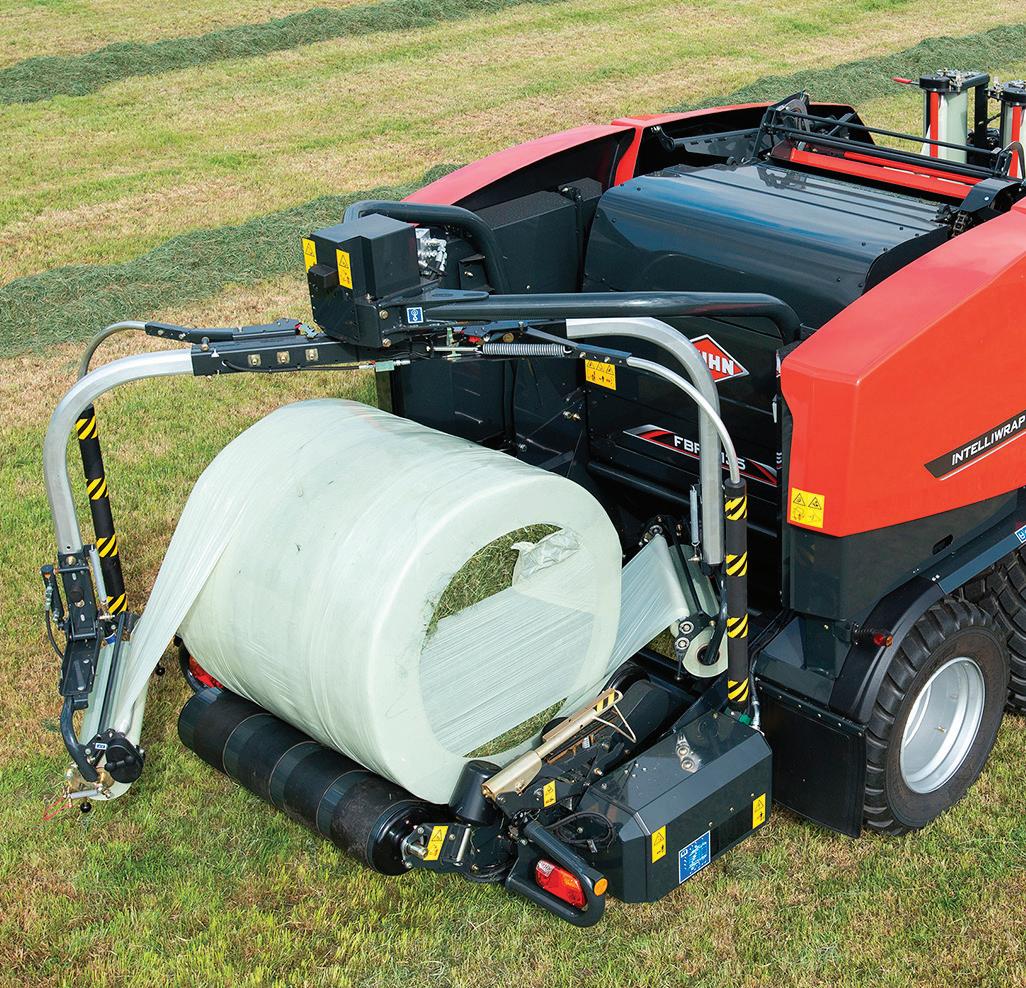
Forage contamination after baling is eliminated with a round balerwrapper as the bale is completely covered when it touches the ground and locks in quality at the time of baling.
to 17 metres wide to oscillate independently of the carrying chassis, which means they follow the ground contours, rather than the angle of the machine.”
In recent years, the introduction of belt mergers as an alternative to rakes has been seen by many as an innovative way to reduce contamination when rowing-up in front of a forager or baler.
ese machines use pickup reels to ick the grass onto belts for depositing into a swath, which helps to reduce contamination and leaf crumbling experienced during raking.
Method
Mr Jenkins says: “Although an established and popular method of rowing-up, rakes move the material across the top of the sward which can allow stones and debris to enter the swath.
“Mergers can group 27m of cut grass into one swath with their bi-directional belts, so
Large foragers and balers can still be efficient in lighter second and third cuts
RHODRI JENKINS
large foragers and balers can still be e cient in lighter second and third cuts.”
Users operating rakes should be aware that dry, dusty conditions have the potential to seriously reduce forage quality.
On hot days it is not uncommon to see a cloud of dust following a twin- or fourrotor rake, but Mr Jenkins says that dust can have detrimental consequences on forage quality so adjusting operating speed to suit conditions is essential.
Netted
When it comes to harvesting, although foragers with correctly set pickup reel heights will keep contamination low, users releasing ne ed bales onto the stubble before wrapping are risking contamination.
Mr Jenkins says: “Depositing a net-wrapped bale back on to the sward may appear harmless, but a light, stony soil or ru ed elds can still present a risk to forage contamination before wrapping and loose dirt and stones could easily become a ached to the net.”
Round baler-wrapper combinations are seen as a modern answer to this issue and can o er users several bene ts over standard round balers.
Forage contamination a er baling is eliminated as the bale is completely covered when it touches the ground.

SINCLAIR MCGILL








We’ve noticed a definite difference in daily liveweight gains in the cattle.
Tom Diplock, Beef Farmer, Sussex

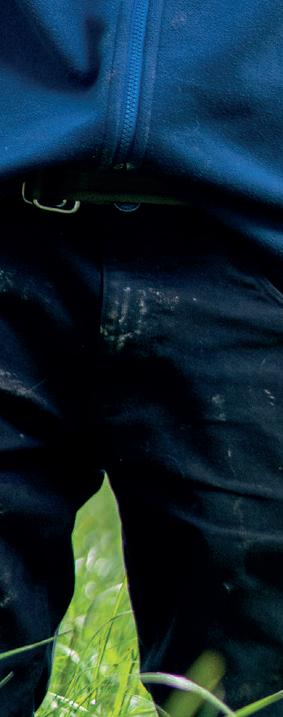






















STRONG ROOTS IN GRASS





MARCH 2024 39 lgseeds.co.uk/sinclair-mcgill
High quality, reliable grass mixtures fit for the future SCAN to hear Tom’s story


It also locks in quality at the time of baling, rather than waiting for the wrapping procedure, which can sometimes be several hours, or even a day later.
Further bene ts of combination balers include a signi cant labour saving by combining two processes and the option for innovative lm-binding to only produce one binding product.
Keeping trailers with dirty wheels away from the clamp apron will also minimise contamination transfer from the eld when tipping.
Dr Legge agrees with the importance of best practice eld operations. Because of the fermentation problems that slurry bacteria cause, slurry should always be applied to the
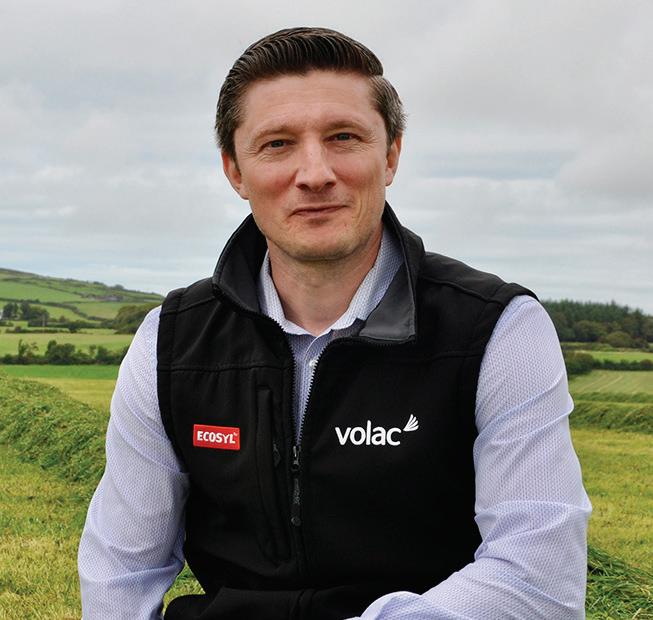
soil, not the leaf, he stresses, preferably by injection or, if not, then via trailing shoe.
“Ideally at least 10 weeks should elapse between application and taking rst-cut to allow slurry bacteria to dissipate.
“ is is impractical during the season, so if slurry is applied between cuts it should be at a low dose and diluted to a very low %DM – about 2%.”
When it comes to harvesting and ensiling, Dr Legge says to reduce ‘bad’ bacteria, speed is key.
Optimum
is speed is particularly important when it comes to wilting to the optimum %DM, typically 28-32%, and also when reducing the pH to a level that inhibits undesirable bacterial growth.
“As soon as grass is mown, the sugars released are used by a wide range of bacteria, as well as by yeasts.
“So the shorter the time between cu ing and stabilising the forage in the clamp, the less time they have to grow.
“ is is why rapid wilting is so important.”
In the clamp, Dr Legge says the aim is to reduce pH from
As soon as grass is mown, sugars released are used by a wide range of bacteria
DR MARK LEGGETT
acid-producing bacteria, is applied.
“Research on Ecosyl shows a very fast pH fall in the early stages of ensiling, which is an important timescale for stopping bad bacteria establishing.
about pH 6 in fresh forage to around pH 3.8-4.5 as quickly as possible to inhibit undesirable bacteria.
A fermentation that produces only lactic acid is e ective at this, he says, because lactic acid is an optimally strong acid.
But as well as being e ective at preserving against unwanted bacteria, lactic acid has another advantage: if produced by homofermentative fermentation, it retains all the DM and virtually all the energy contained in the original fermented sugar, he adds.
Dr Legge says: “ is is the type of fermentation that occurs when a quality silage additive, such as Ecosyl, containing a high number of e cient lactic
Silage heating
JSilage heating (aerobic spoilage) is a sign of losses due to yeasts and moulds, says Dr Leggett. These need air to grow, so measures which exclude air from clamps – thorough consolidation, sheeting and weighting, and correct face management – are crucial, he stresses.
Dr Leggett says: “If heating
“Allied to this, it has also been shown to halve DM loss, to boost silage metabolisable energy by 0.6 MJ/kgDM and to preserve more true protein.
Trials
“Most important of all, across a range of forages in 15 international independent trials, milk yield from feeding silage made with Ecosyl was improved by an average of an extra 1.2 litres/ cow/day. With the silage in clamps potentially worth tens of thousands of pounds, it is worth paying a ention to detail.”
Other tips to reduce microbial contamination include fully removing old silage from clamps before lling, and repairing cracked concrete walls that harbour spoilage microorganisms, Dr Legge adds.
is a concern, as well as using good clamp management, use an additive with specific activity against the yeasts and moulds that cause it. This might be a dual-acting additive that includes a chemical preservative, or a dual-acting inoculant with a second beneficial bacterium to target yeast and mould growth.”
MARCH 2024 40 GRASSLAND
& FORAGE
Dr Mark Leggett
Independent rotors that follow ground contours rather than fixed to the machine’s angle can reduce contamination and tine wear.

A greener harvest with CLAAS



3 + 33 payments @ 0% nance on selected machines
Offer available on VOLTO, LINER and DISCO whilst stocks last.
Closing date 31st March 2024. Finance for business users only. Terms and conditions apply.*
Green harvest machinery in stock today and readily available. Call your local dealer for further details. claas.co.uk
*Finance for business purposes only. Subject to acceptance and affordability checks. Applicant must be 18 or over. Promotion valid until 31st March 2024 or while stocks last. Available on new equipment only. Based on funding 50% of RRP. The nance product available under this promotion is Hire Purchase. First payment, full VAT and a documentation fee of £100.00 are all due on signing. An option-to purchase fee of £85.00 (including VAT) will be collected with the nal payment. You will own the machine when all payments have been made. Alternative nance options are available, terms & conditions apply. Images are for
purposes only. Finance provided by CLAAS Financial Services Limited, Midpoint,
England
Alencon Link, Basingstoke, Hampshire RG21 7PP. Registered in
No: 5854271.
illustrative
Foliar fertiliser helps cut
With rising fertiliser costs looking set to remain, a dairy farmer from West Wales has successfully halved his nitrogen use. Hayley Chapman reports.
Carmarthenshire dairy farmer James Hughes has cut nitrogen usage by more than 50% in four years without compromising on grass growth.
Two key factors have enabled him to do so – rstly, the courage to simply risk applying less one year and, secondly, a switch to foliar feeding.
Mr Hughes says: “We used to work on the basis of: ‘if in doubt, chuck it out’ when it came to fertiliser.
“But we cut nitrogen from 40-30kg/hectare, because I wanted to see if we could get away with it and we did not see a huge di erence, then we started foliar feeding.
“I do not think we could have dropped below 30kg/ha without foliar fertiliser though.”
Mr Hughes runs two dairy
units, each home to 350 crossbred cows, milked twice a day.
He describes the system as a ‘British, grass-based system’, but says he has taken a lot of in uence from his work experience in New Zealand.
Jersey cross type cows are kept at the home farm, Cwrt Henri, Dryslwyn, near Carmarthen, and a more Friesian-type cow is favoured for the family’s coastal farm, Big House, which the Hughes family took on in 2017.
Surplus
Mr Hughes says: “We have used sexed semen for three years, so we do not have many dairy bull calves, but any surplus are sold at market. We have a small herd of pedigree Herefords and breed our own bulls for the herd.”
Based on a predominantly grass-based diet supplemented
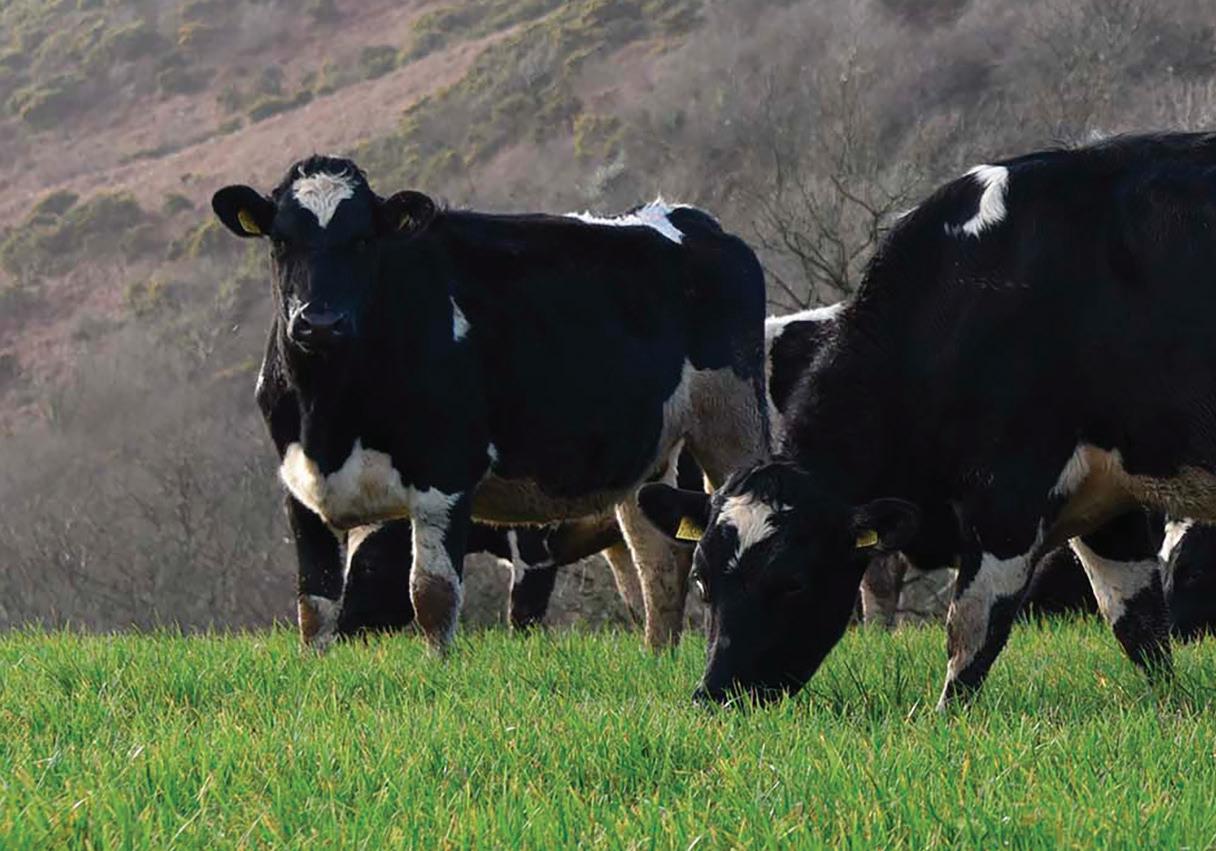

with 1.4 tonnes of concentrate fed in the parlour, Mr Hughes estimates milk from forage to sit at about 3,000 litres per cow.
At Cwrt Henri, the grazing platform is 110ha (272 acres) and the platform at Big House is just shy of that at 100ha (247 acres).
Cows are on daily moves, rotationally grazing 4ha (10-acre) paddocks at a stocking rate of
James Hughes

around 3.3-3.4 cows/ha (1.3-1.4 cows/acre).
Paddocks are rested for 22 days between grazing for most of the season, with the aim to keep cows out until the end of November, but last year they were in overnight from late October due to the very wet weather.
Farm facts
r324 hectares (800 acres)
r700 cows, spring-calving, milked twice a day
rAverage milk yield is 5,500 litres at 3.8% protein and 4.8% butterfat
rMilk sold to First Milk and Leprino Foods
rYoungstock reared at home, with surplus calves and cows sold at auction market
rCalving from mid-February onwards at Big House and from March 1 at Cwrt Henri
r50% of herd calved in two weeks, with an empty rate for both farms below 10% for 11 weeks service
rSmall pedigree Hereford beef herd run alongside the dairy
rFive full-time staff and two part-time employees
MARCH 2024 42 GRASSLAND & FORAGE
Some of the farm’s in-calf heifers.
PICTURES : Ruth Rees
nitrogen usage in half

Grass is monitored using AgriNet software and utilisation sits at 12 tonnes of dry matter (DM)/ha (4.8t DM/acre) across the milking platform, with silage
ground less productive. The worst performing 5% of the platform is reseeded each year, with the addition of multi-species leys and plantain across the last four years.
Mr Hughes says: “Four years ago, we were following the cows with 40kg/ha of N every round.
“We had cut down to 30kg/ha before we started using the Tow and
Fert machine, but we have cut down to 18kg now, so we have halved our nitrogen usage. When we changed to foliar feeding, there was no drop in grass growth. Our aim here is to grow as much grass as possible and cows convert that into a profit. We would not do anything which would mean growing less grass.”
Switch
The switch to foliar feeding came about following a talk at a discussion group, Mr Hughes says.
He says: “The results of a foliar fertiliser application trial were discussed and I was intrigued by the figures. It coincided with fertiliser prices rising, so I looked into how I could do it.”
Mr Hughes discovered the Tow and Fert liquid spray machines and contacted FuturAg, the UK

MARCH 2024 43 GRASSLAND & FORAGE
GRASSLAND & FORAGE
distributor. e machines can take granular urea and water to produce a liquid fertiliser which can be sprayed on to grass.
With fertiliser prices showing no signs of slowing, he decided to place an order for a £45,000 Tow and Fert Multi-2800, which arrived on-farm in June 2022.
One tank load will cover 15ha (37 acres) and take about 90 minutes to spray, depending on paddock distance and size.
e bigger Multi-4000 model would speed the job up, but Mr Hughes says the mid-sized machine is right for the ‘slopey’ terrain he farms.
One tank load will include 600kg granular urea (46% N); 150kg ammonium sulphate; 4kg humates – as a carbon source; and Sea-90 sea salt.
Because a leaf is needed for absorption of the fertiliser, Mr Hughes typically waits seven to 10 days a er cows have le the paddock before spraying it.
Fertiliser prices
Looking at fertiliser prices, Mr Hughes worked out that if he could avoid buying two loads of urea, the machine would pay back for itself in one season.
Mr Hughes says: “It was a no brainer with the prices where they were at the time. We were paying
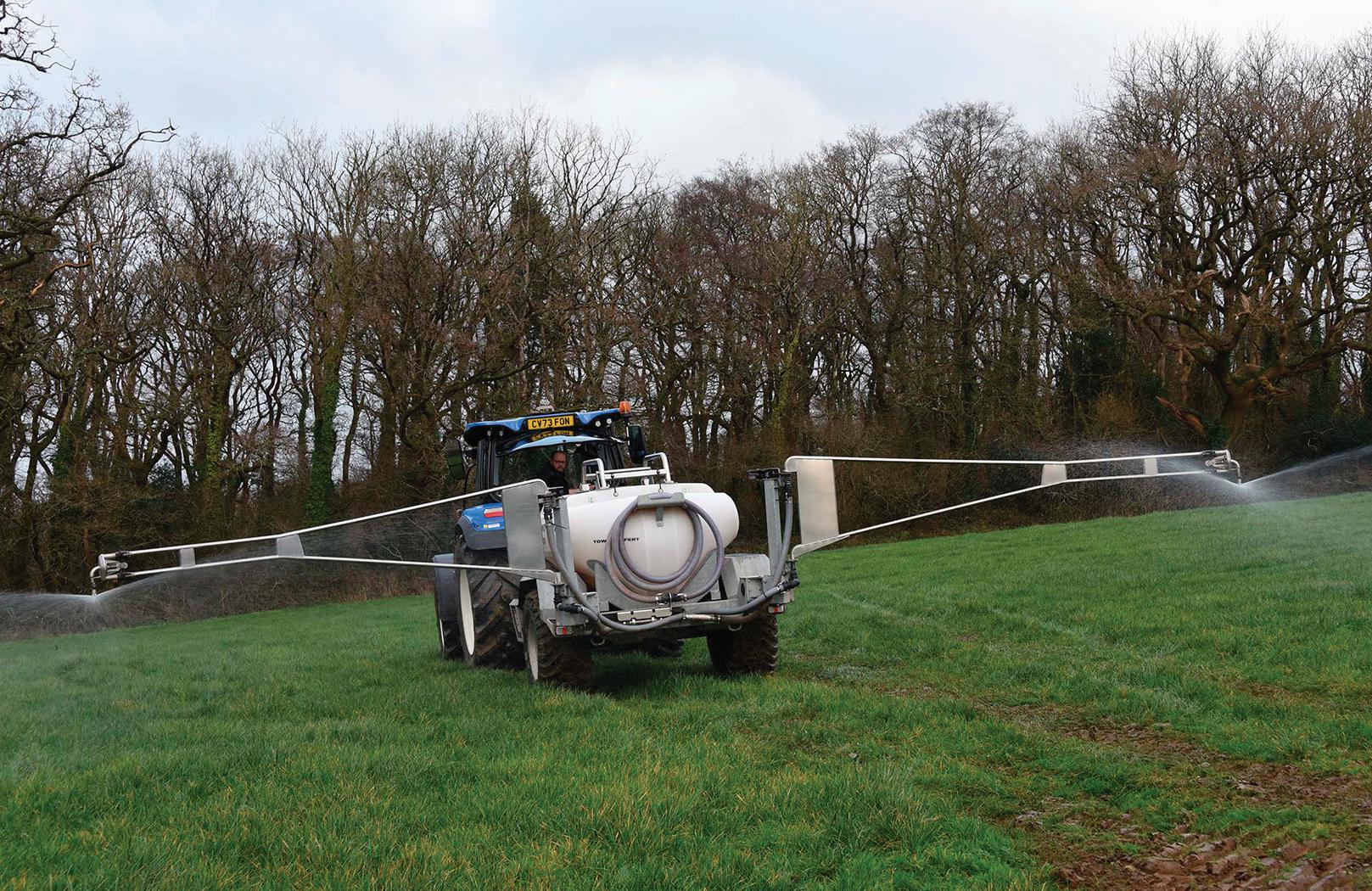
£700-800/t for urea, but it got up to £900.”
With grass stressed due to lack of rain early in summer 2022, Mr Hughes says he was grateful of the foliar mix and saw a good response to it.
e only downside of foliar feeding that Mr Hughes can see is that he has taken the job in-house, whereas contractors were boughtin for broadcasting granular urea.
He says: “Saying that, it is a straightforward bit of kit and I am training the sta to use it. And it
is actually quite good because I see the other farm more and I am out on the paddocks, meaning I pick up on jobs which need doing.
“I am surprised foliar feeding has not taken o more really.
“If we can grow grass cheaper and more e ciently, we can make more pro t when we put that grass through the cows. at is the whole crux of our system.
“Both of our milk buyers are going down the sustainability route, so reduced nitrogen usage is ticking boxes for them.
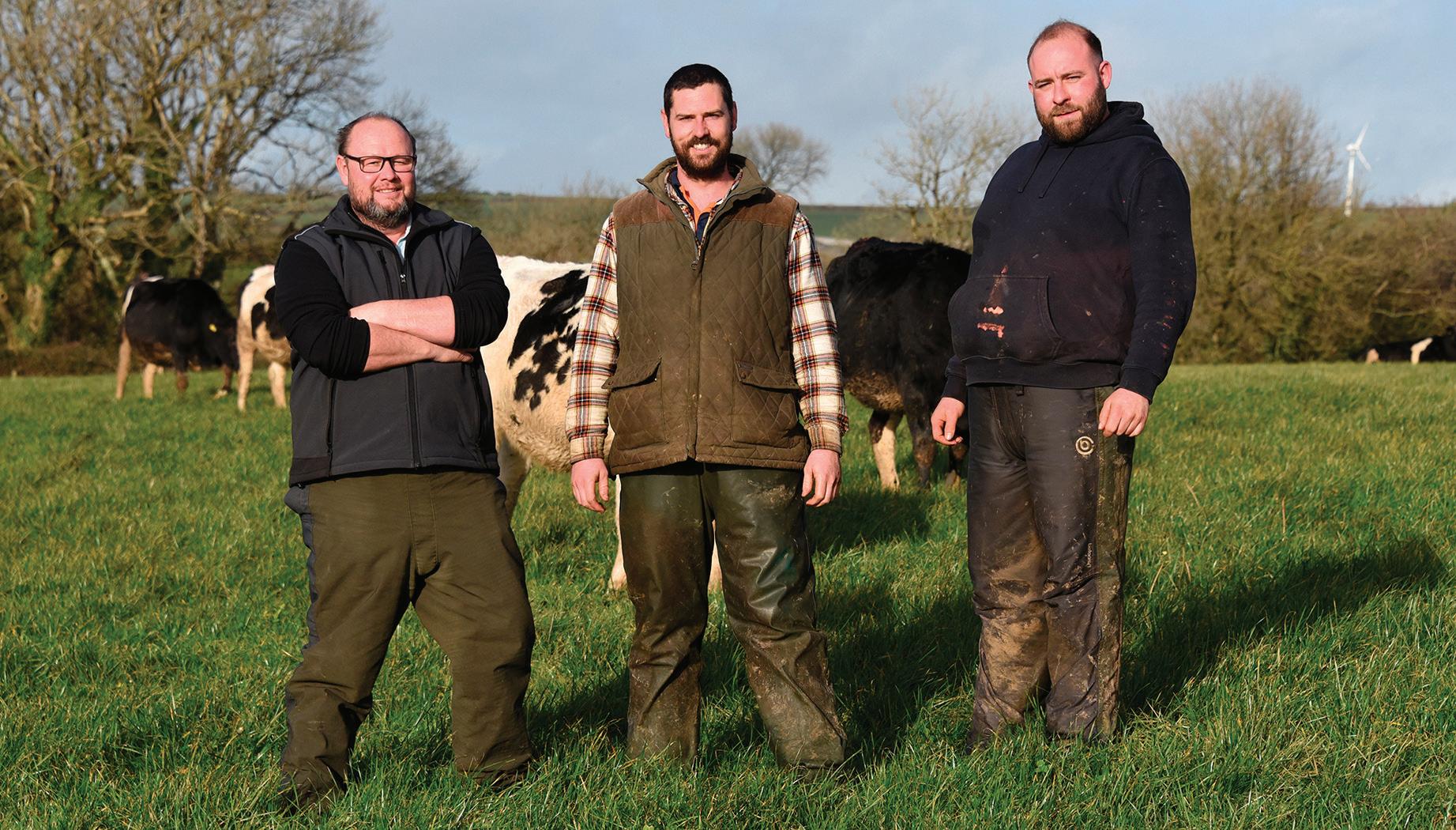


“And milk ureas are lower because there is less nitrogen in the grass. If milk urea is too high, cows are using energy to process that.”
He has also been experimenting with pu ing clover out through the machine since the tail end of the 2022 season.
Clover
Clover is added to the mix at a seed rate of 1kg/ha (0.4kg/acre) and it looks like it may have been successful, although the weather may have played a part in that also.
Mr Hughes says: “Clover is increasing on the platform, but 2022 was quite dry and clover likes that. We will continue to add clover because I think some of it sticks and we are going to trial spreading plantain seed too.”
Mr Hughes does not think he has seen all the bene ts of foliar feeding yet, hopeful of reducing fertiliser usage further in the coming years.
He says: “In theory, we are training the roots to go deeper because they are not sat near the surface waiting for fertiliser to arrive on the ground, so we should be able to cut nitrogen even further.
“ at root depth will be good for drought conditions too.
“It is a win-win situation, as it is saving us money and helping the environment.”
MARCH 2024 44
Left to right: James Hughes, farm manager Liam Williamson and herdsman Goronwy Quinn.
James Hughes’ Tow and Fert Multi-2800 arrived on-farm in June 2022.
Before you manage... ...MEASURE
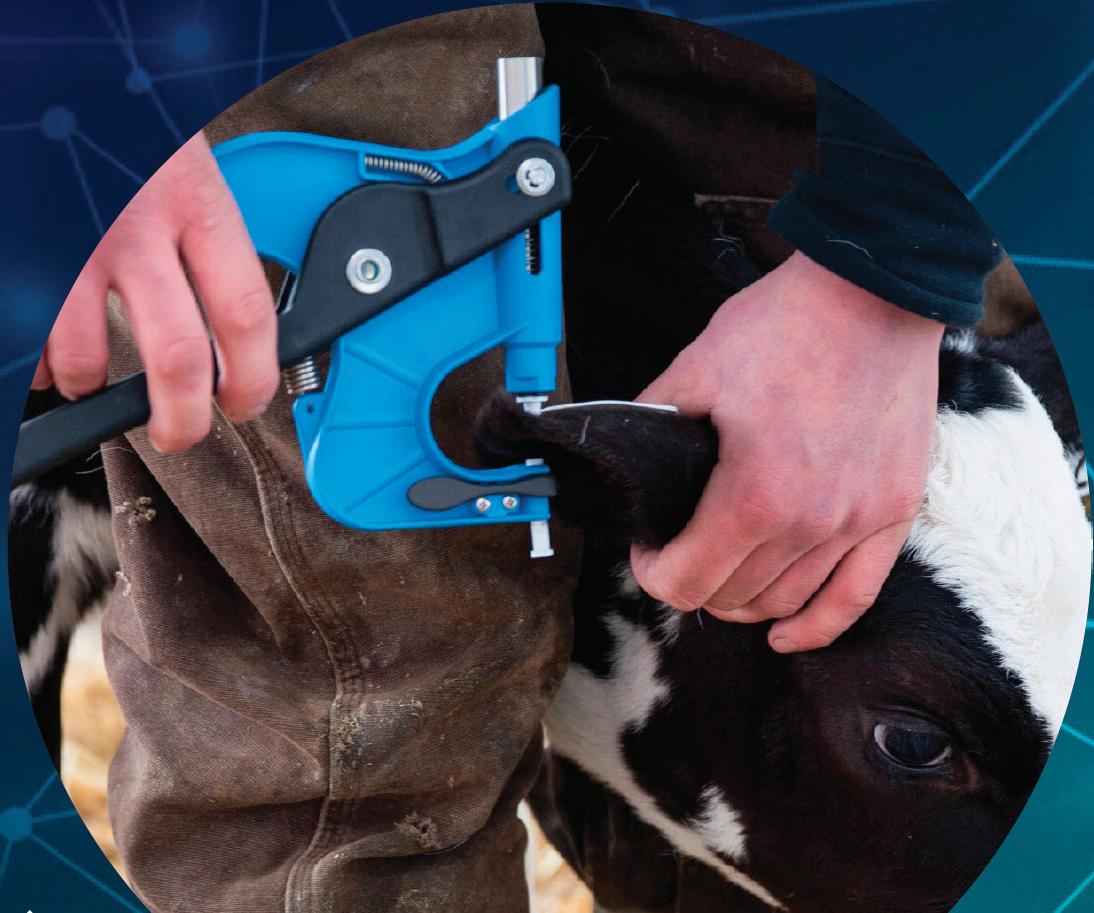

Genomic testing with Elevate® will create the most robust platform to base your future herd breeding decisions.
It’s Easy, Accurate, Powerful and Unique. The only genomic test that will give you a Herd Immunity, a Methane Efficiency and a Feed Efficiency score.


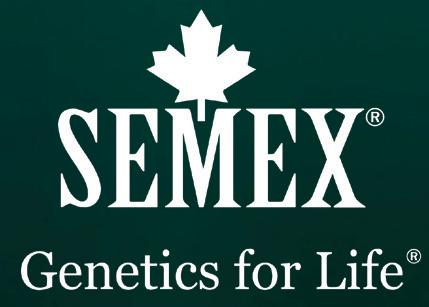

Semex UK: www.semex.co.uk : 0800 86 88 90 Scan here to find out more
Spring reseeding has become challenging over the past three seasons with farmers unable to accurately forecast the best timing. Dairy Farmer spoke to an expert about how to achieve the best results.
Achieving successful spring reseeds
For the past three seasons, there has been an extended dry period in spring making reseeding challenging.
“Trying to get the temperature warm enough and have enough moisture [in the soil], as well as knowing you are not going to go into a dry period,
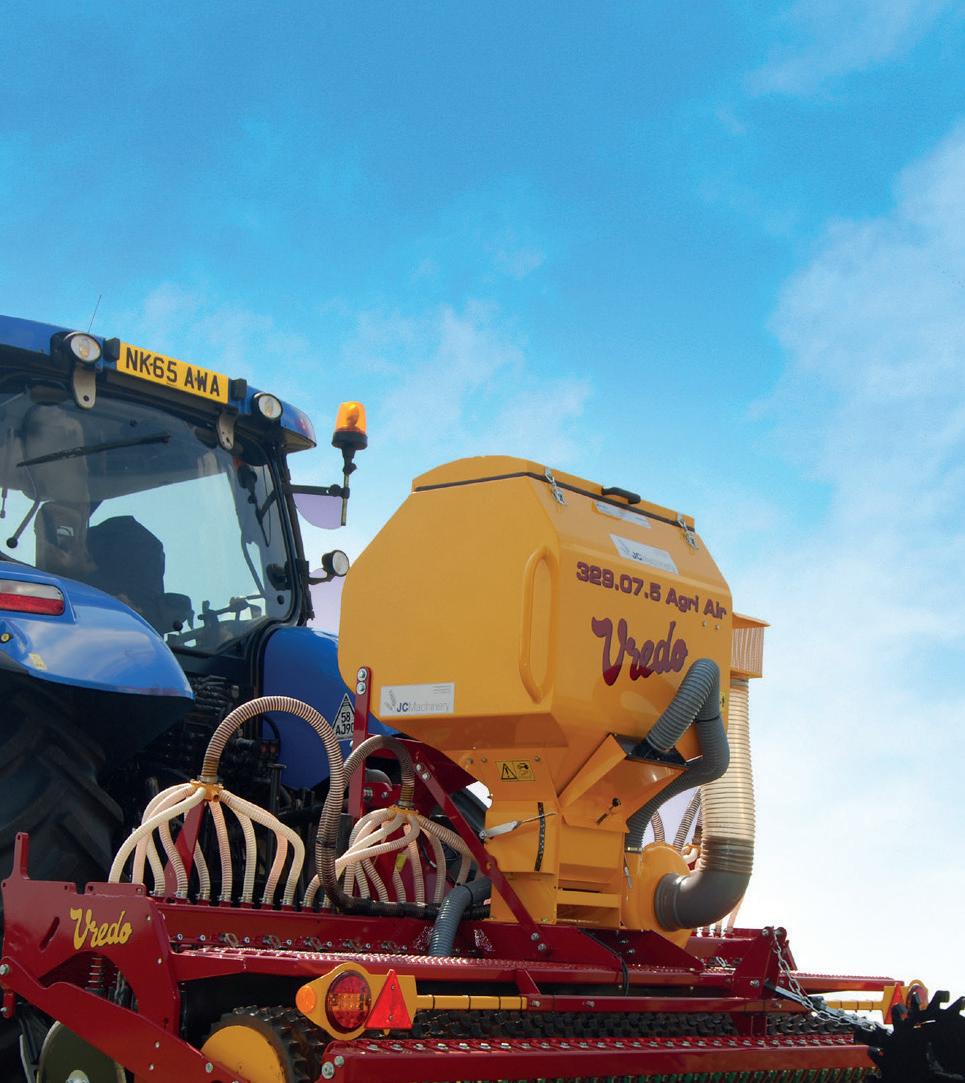
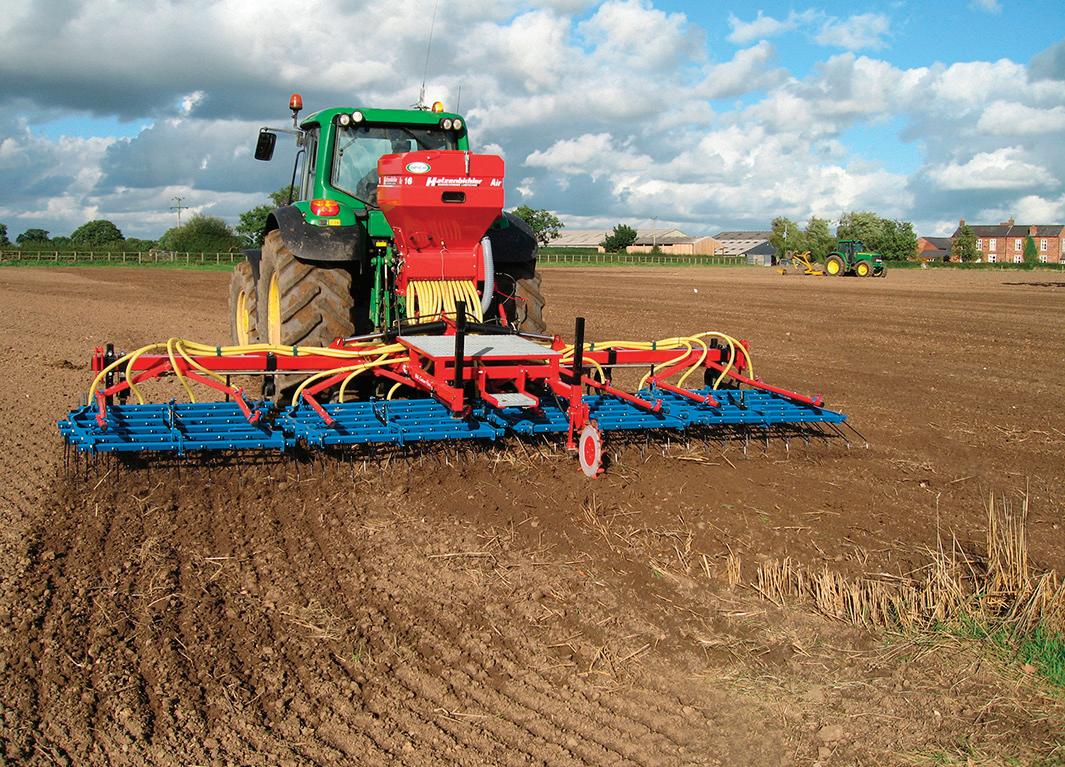
Proven Precision
Achieve germination rates of up to 96% the highest germination rate in comparison to other systems

The Vredo range of overseeders offer a quick, precise operation, saving you up to 80% in time and fuel compared to renovation through ploughing, cultivating, levelling, sowing and rolling. Call 01260 224 568 or visit www.campeyagriculture.com

Reseeding can prove a challenge amid current climatic trends.
Carrying out a spring reseed
JThe timing of a reseed is critical and farmers wishing to carry out spring reseeds may need to adjust their timings to overcome the leather jacket challenge now that there is no chemical control for the pests.
“If you have a big crop of grass in the autumn, when crane flies are laying their eggs, you will have a big burden come the spring,” he says.
Brassica crops, sown in
has become challenging for many farmers,” says William Flemming, area sales manager for Germinal. And while farmers cannot
Cultivation
JWhile many farmers are moving towards direct drilling to protect soil health, Mr Fleming says the method of cultivation you choose will ultimately depend on soil compaction. It is worth taking a spade to the field and digging holes to investigate soil compaction, he says.
Direct drilling requires a healthy soil with an absence of pans in the top 15cm, otherwise ploughing or sward lifting will be required.
“Classic tell-tale signs include horizontal cracking which means there is an impermeable layer of soil beneath these lines. Any soil cracks should be vertical so air and water can travel up and down the soil structure.” Another symptom of
the autumn, break the cycle. However, for grass-to-grass reseeds, it may be best to leave the reseed until the leather jacket has pupated in late May or early June, says Mr Fleming.
Her adds: “Earlier reseeds are most at-risk of damage.
“Grazing the field or taking a cut of grass before reseeding will get the field past its highest risk period.”
control the weather, Mr Fleming says there are other areas that can be controlled to ensure grassland crops get o to the best possible start.
compaction is orange mottling which suggests soils are anaerobic.
The level of thatch at the base of your sward will also determine the level of cultivation required.
“Farmers tend to underestimate how much thatch they have. We are being encouraged not to use the plough unless we need to, but it is a very useful tool if you have compaction.
“With the best will in the world, if it is an old sward [10-12 years old] then you will likely have a thatch, so you will need to break that up using tine harrows before you direct drill the seed or the decaying layer of thatch will acidify and damage the seedlings,” says Mr Fleming.
MARCH 2024 46 GRASSLAND & FORAGE
AGRICULTURE
Identifying worn-out leys
JIf you do not use grass-measuring software to track annual grass growth or yield monitors on the forage harvester, Mr Fleming advises walking the fields to assess grass.
He says the target is that 70% of the total mass should be perennial ryegrass (or what you planted). Weed burdens of just 10% can reduce your grass yield by one tonne of dry matter per hectare.
He says if fields are below target, the first step
Varieties
JWhen it comes to selecting seed, Mr Fleming recommends that farmers use the Recommended Grass and Clover Lists to identify
is to understand what is causing this.
“There might be chemical, physiological or biological reasons for poor growth.
“It is worth investigating why the field has performed poorly or the reseed might not work well.”
And he reminds farmers the optimum soil pH is 6.2-6.5.
“If you are applying nitrogen to a field that has a pH of less than 5.2, 50% of the fertiliser will become unavailable to the plant,” he adds.
How to avoid common pitfalls
JMr Fleming says three of the biggest mistakes farmers make when reseeding include:
rNot rolling the field well enough before and after drilling. In this situation, seeds can be buried too deep which will affect germination.
He says: “If the soil is not firm and fluffy, the seed will drop further down into the soil profile where it cannot access the sunlight and will die. Seeds should be planted within the top 1cm or on the surface of the soil.”
Roll at least twice before sowing and once again afterwards to avoid this.
in the second year. Make sure you have a clean seedbed if you are sowing SAM3 seed mixes for SFI,” he says.
rSow seed at the correct temperature. Grass grows at a lower temperature (5-6degC) compared to clover and herbs, which need the soil temperature to be 8degC and 10degC, respectively, for seven consecutive days alongside adequate moisture.
“I prefer to sow clover and herbs with grass in the spring.
top-performing varieties. “They will be well-tested in British conditions and will be suited for your growing conditions,” he says.

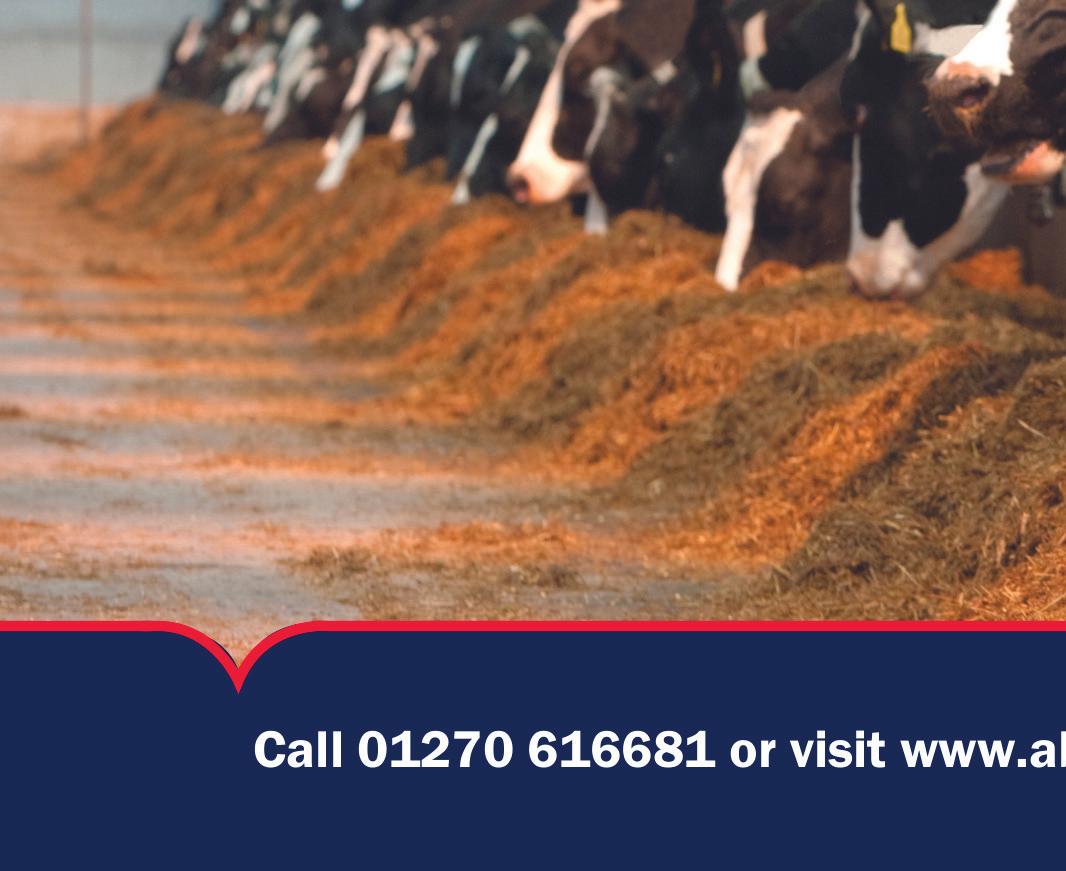
rNot thinking about how weed treatment will kill clover and other legumes.
“If you have a high weed burden, deal with weeds in the first year and sow clover
“It is harder once grass is established because the grass will grow quickly and reduce the seeds’ access to sunlight.
“Sowing in the spring also means the legumes and herbs have established well enough to withstand the autumn frost,” he says.



GRASSLAND & FORAGE
There was plenty of discussion about dairy industry hot topics, along with new products and technology on show, at this year’s Dairy-Tech, held at Stoneleigh Park. Katie Jones, Ellie Layton and Jonathan Wheeler report.

Getting the representation right
Representatives from a range of farming organisations working in the dairy sector agreed they all needed to work together more closely if they were going to represent the industry effectively in the future.
In a ‘State of the Nation’ debate at Dairy-Tech, Royal Association of British Dairy Farmers’ chair Robert Craig said the industry found itself in a very different place to the previous year, with milk prices well down.
But the work being done to reduce the industry’s emissions would help make its activities more acceptable to the public.
Lyndon Edwards, AHDB dairy sector council chair, said he felt key bodies were coming together more effectively.
He said: “That is important because the economy is still quite fragile. We must get our story right and protect the image of dairying
and promote ourselves. We have a good story to tell.
“But we have to learn not to give away our extra work for no reward.”
Tendency
Vet Navaratnam Partheeban said there was still a tendency for different groups to give different messages.
He said: “Confusion is a big problem and, as a result, people step back rather than step forward.”
And he suggested the industry needed to learn to talk to the public in language they would understand, pointing out that many people were still confused over what the term ‘regenerative farming’ meant.
Adam White, head of agriculture of Barclays Bank, agreed that the supply chain needed to be more involved and supportive. But he said leading farmers were showing the way.
Mr White said: “Successful
farmers are forward-thinking and progressive and have always got something going on. It might not work and if it does not they get rid of it and move on, but there is always something happening.”
He also questioned how the industry was going to extract value for its work in regenerative farming so it did not end up doing extra work for nothing.
Accountant Rob Hitch, of Dodd and Co, agreed and stressed the urgency of achieving that.
He said: “You need to capture that value as soon as possible and try to protect it because everybody will have to start doing something in the future and protecting it is key.
“But there is a big question over whether the consumer will be willing to pay more for low carbon milk than normal milk.”
Abi Reader, NFU deputy president, said she felt the
industry was doing a good job and embracing innovation, as proved by the exhibits on many of the stands at the event.
Pressure
She said she believed the Government should help farmers put pressure on the supply chain to achieve a fairer division of income. And farmers should value their data more too.
She said: “Our retailer knows our carbon footprint without us telling him about it. We need to hang on to that data and there are legal structures to help us.”
Ms Reader also reported that in a recent survey completed in Wales, 82% of the respondents felt the Government should still support agriculture, with 86% of the demographic surveyed living in the city of Cardiff.
MARCH 2024 48 DAIRY-TECH REPORT
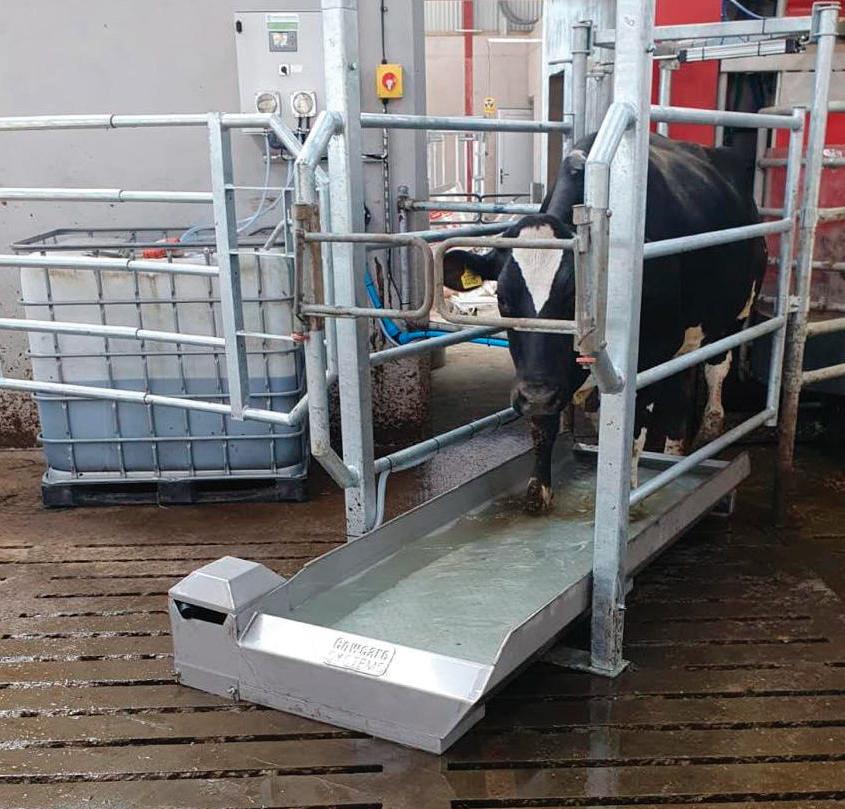


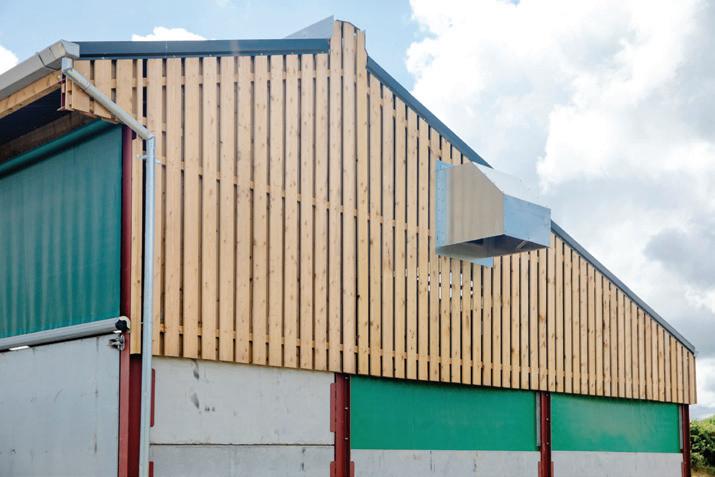

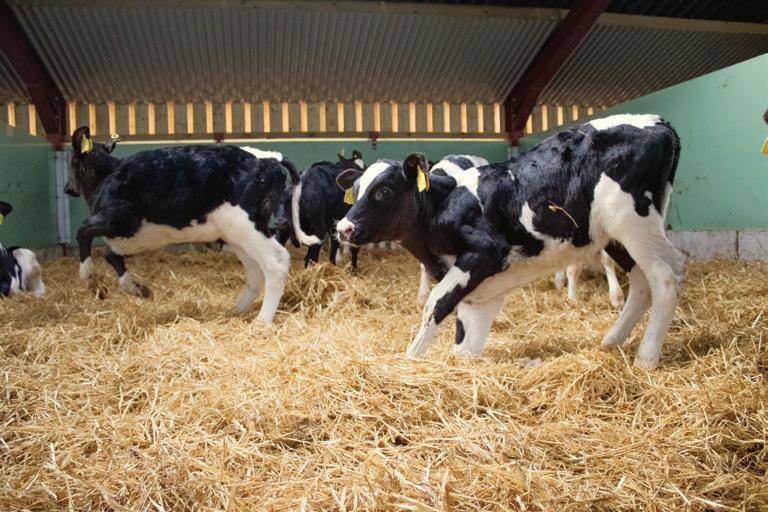
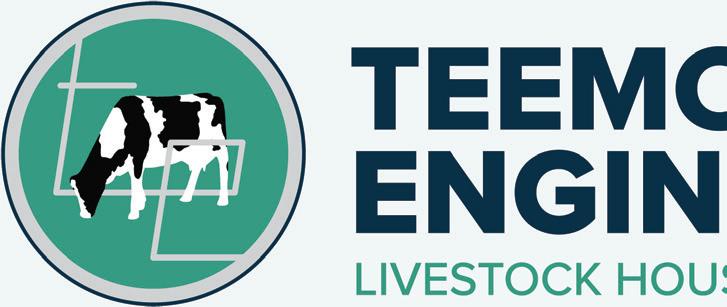

49 MARCH 2024 Autoflush Footbath Benefits of the Autoflush Footbath Improved animal health Suitable for all chemicals Increases the herd performance Minimises contact with chemical Reduced labour costs Reduced water consumption Efficient cleaning Cowcare SYSTEMS Features Pump positions: (left, right or centre) Standard length: 2 or 3 meter Non-slip flooring One Touch system programming Heavy-duty stainless steel construction For a no obligation quote or more information Wales/Midlands/S England N.Ireland/ R.O.I John - 07732348225 Scotland/N. England 07591833853 Fred - 07762800149Andrew - 07803124235 info@cowcaresystems.com ✓ ✓ ✓ ✓ ✓ REDUCE RATES OF LAMENESS TODAY! Are you fed up with manual foot bathing? D o you hate working with chemical ? Innovators in Dairy Farming Derrylin, Enniskillen, Co. Fermanagh, N. Ireland, BT92 9BL Tel: 028 6774 8377 (NI/UK) / 048 6774 8377 (IRE) Email: info@teemoreengineering.com www.teemoreengineering.com Prime Location Fresh Air Exceptional Airflow Easy to Clean Surfaces Thermal Dynamics Drainage for Reducing Moisture and Ammonia Measures to Prevent Disease Transmission MONO CALF BUILDING Professionally design by Jamie Robertson (Ventilation Expert)
Customers are keen to learn more about their food, and the dairy industry has a good story to tell them, said Google’s Andrea Co ey and Louise Meehan, who were speaking to a seminar audience at Dairy-Tech. e public’s thirst for information and the industry’s need to provide it was highlighted by the fact that Google searches asking ‘What sort of milk is healthiest?’ had risen by 55% in the past year.
Ms Co ey said the industry needed to give health information a greater priority than it was currently given.
She said: “People are re ecting on what they eat and how it a ects them. You must make it easier for the customer to understand that your products are healthy and contain vitamins.”
Feeding customer curiosity
ey were also concerned about the sustainability of the food they bought.
She suggested the industry should respond by pu ing important information on the front of the packaging rather than the back.
Having a strong web presence
Topping the tonne
JAchieving 1,000kg of milk solids is becoming an achievable goal for many more dairy herds, and genomic advances could help them get there.
Rose Jackson, head of genetics at Kite Consulting, told a Dairy-Tech seminar that in 2022 the average dairy cow gave 675kg of solids in a 305-day lactation, a level which is almost static – the figure in 2023 was 676kg.
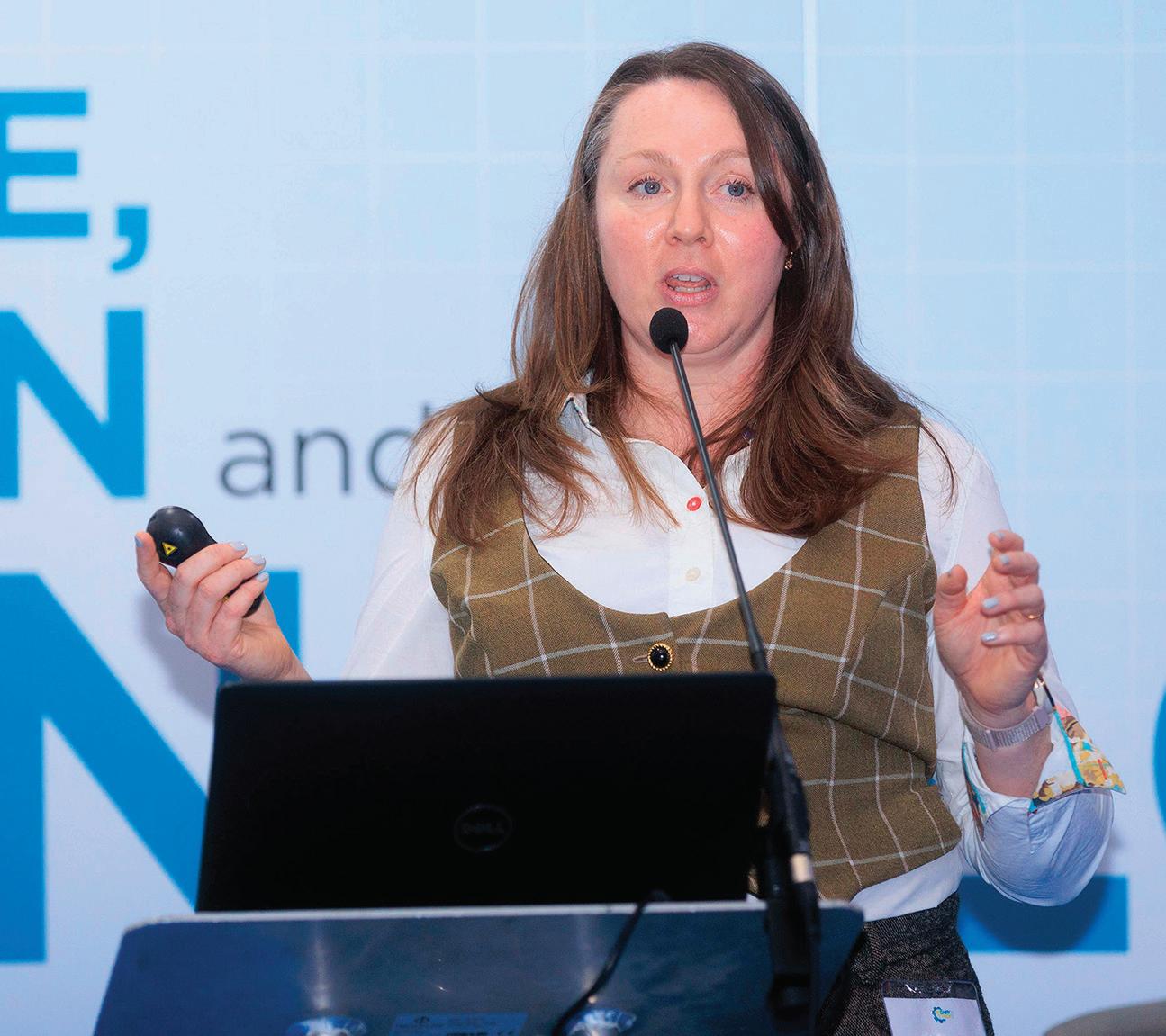


would be increasingly important in the future, she added.
She said that while all companies su ered during economic downturns, companies which invested in their web presence tended to recover nine times as fast a erwards.
And she told farmers that using
The company surveyed a range of high-yielding herds to assess what aspects of management helped them achieve top level performance.
Up to 50% of a cow’s ability to produce high milk solids is due to genetics, but herds achieving these levels also tend to be making use of technology, such as analysing genomic data and using sexed semen, said Ms Jackson.
“They have a good rate of genetic gain and are milk recording, so they have plenty of data. Management and nutrition are also key.”
They have a good rate of genetic gain and are milk recording, so they have plenty of data ROSE JACKSON
Andrea Coffey said the dairy industry needed to give health information a greater priority than it was currently given.
the internet and arti cial intelligence (AI) e ectively could relieve pressure on them by taking over some of the time-consuming repetitive tasks. She said: “Use it to free up human time for things which need a human touch. AI could help you save time on mundane tasks and could be
She explained that this included excellent feeding performance, with some of the herd achieving more than 5,000 litres/head off forage, allied to good disease control – mastitis levels were often a fraction of the national average.
Progress
But she also said that much greater progress could be made, as results of a threeyear study completed with Cogent on four Arla-supplying farms have shown.
She said: “Over those three years we saw an increase in genetic potential of 48-57% from heifers. When they come into the milking herd they will have a phenomenal effect.”
In addition to raising milk solids production, she said these heifers coming into the herd could also help cut the herd’s carbon footprint by 11%.
She said: “Genetics have a longer term effect than other factors, but this shows how we can really achieve something.”
MARCH 2024 50 DAIRY-TECH REPORT

used to come up with new ideas about the business. It o ers more of an opportunity than a threat.”
Google is promoting its ‘Bard’ generative AI chat tool as a reliable source of information.
In response to a question on how the system countered misinformation, such as that presented by activists, she said this was something which was monitored carefully and reported on.
She said: “We have AI scanning for hate speech. at is something we monitor as our number one priority. A lot of investment goes in to make sure the information is safe and representative of people’s views.
“We are scanning a lot of data sources and we have a fact checking team. ings such as political advertisements always go through a human review to make sure the information provided is true.”
Specialists in Calf Rearing Buildings




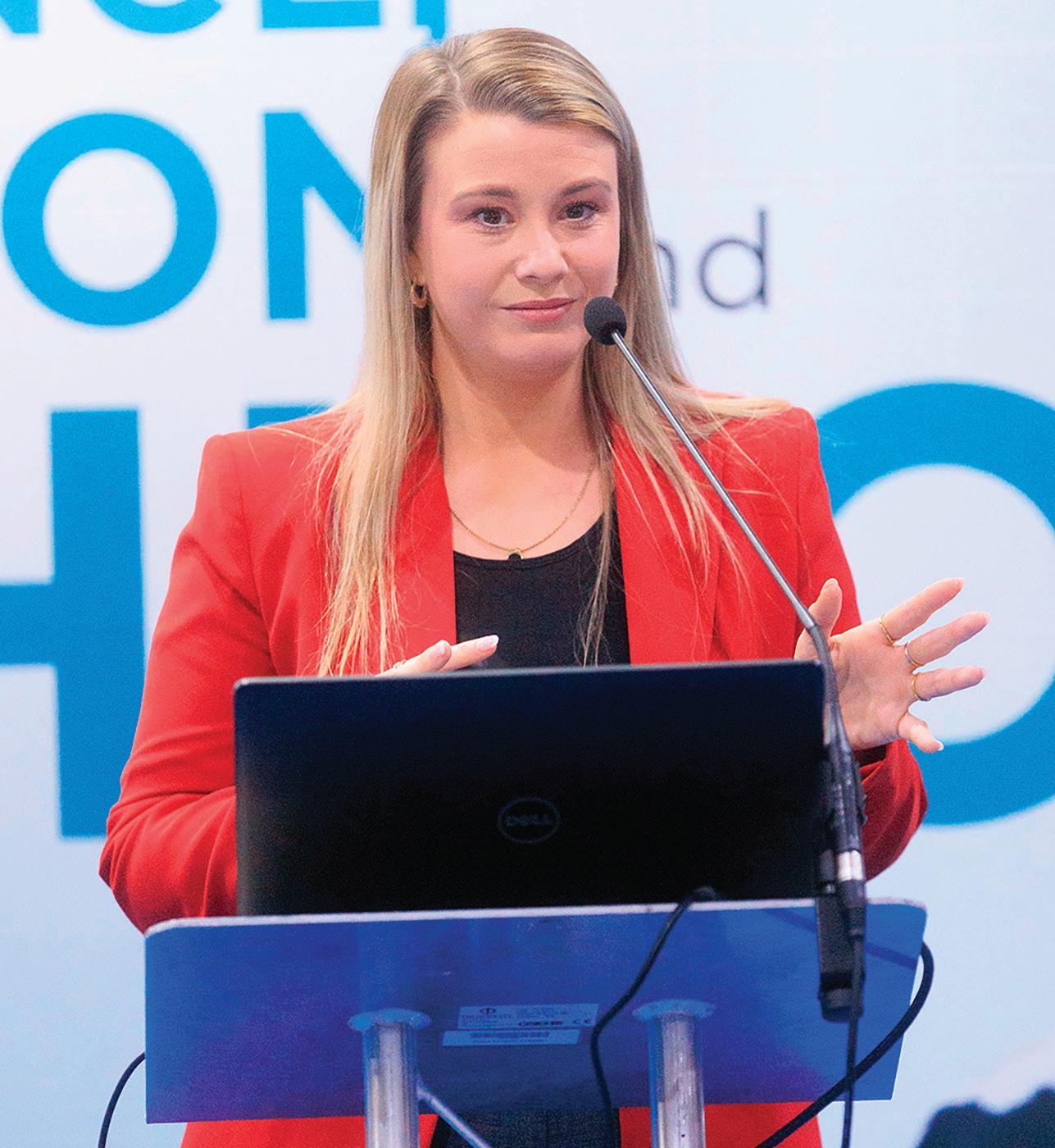





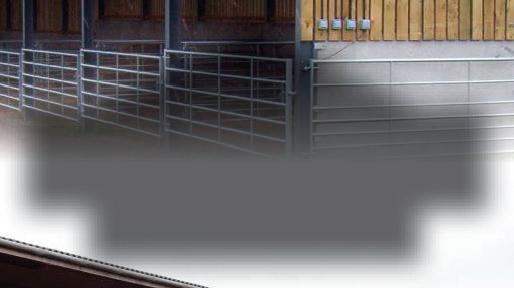







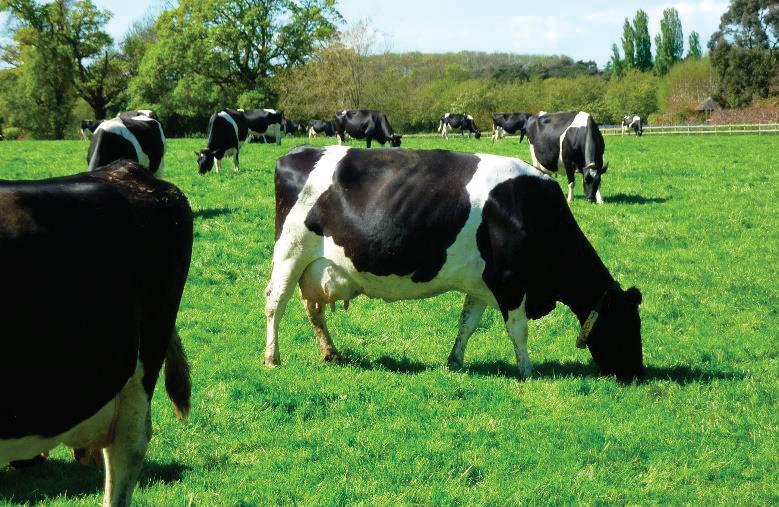




MARCH 2024 51 REPORT DAIRY-TECH Please call today to discuss. Building British Agriculture for over 75 years Four Lane Ends, Wem, Shropshire, SY4 5UQ Tel: 01939 232 382 Email: info@brownsofwem.com
Ensure your Future with British Friesians Gain 12.7 Fertility Points 49 Days of Lifespan Male Calf Value & Heifers to sell Lower Vet & AI Costs, all without the use of expensive Sexed Semen AHDB Aug ‘23 * The Perfect Outcross for Black & Whites * *
Louise Meehan
Dairy farmers will have to learn to live in a more challenging climate because changes are already a ecting many aspects of their operations, said Hayley Campbell-Gibbons of Kite Consulting.
e dairy consultancy surveyed customer farmers earlier this year on the issue, and Ms Campbell-Gibbons said the survey results showed what farmers were already having to cope with.
She said: “Of the farmers surveyed, 80% said their farms had su ered from drought; 60% said that high temperatures were a problem and 40% had been a ected by ash ooding.
“In addition, 70% said they had experienced fodder shortages; 66% had noticed heat stress in their animals and over 50% had su ered problems with slurry storage capacity.
“Even with all the measures we are taking, we cannot stop the global temperature rising by 1.5degC, so we all need to prepare so we can adjust.
“It is about preparing your business to face a future in which we will nd drought conditions in summer, winter storms and ood risks. is is fundamental to food security
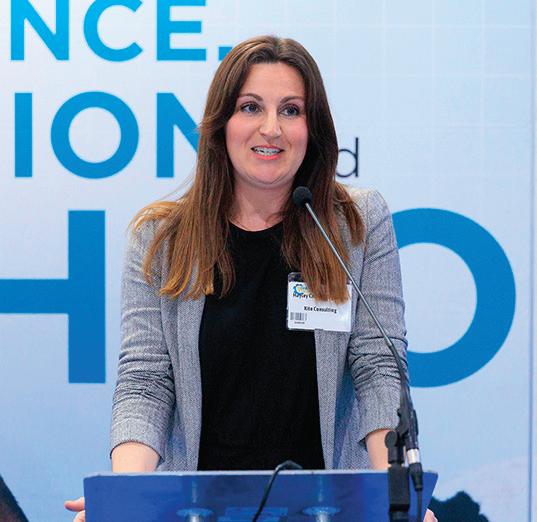

Gold Cup awards
JAs part of the NMR Royal Association of British Dairy Farmers Gold Cup presentations, a further four awards were presented at Dairy-Tech.
The Chris May Memorial Award, for the Gold Cup qualifying herd with the highest lifetime daily yield (LDY), was awarded to the Torrance family from Stapleford Abbotts, near Romford, Essex.
Their Curtismill pedigree Holstein herd, comprising 670 cows and 430 followers,
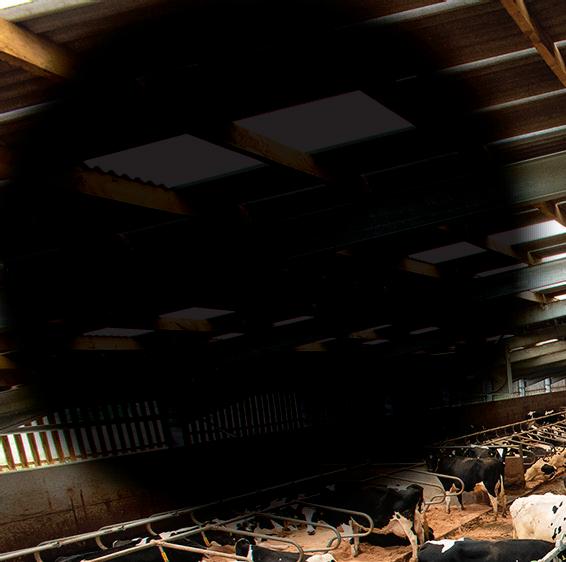
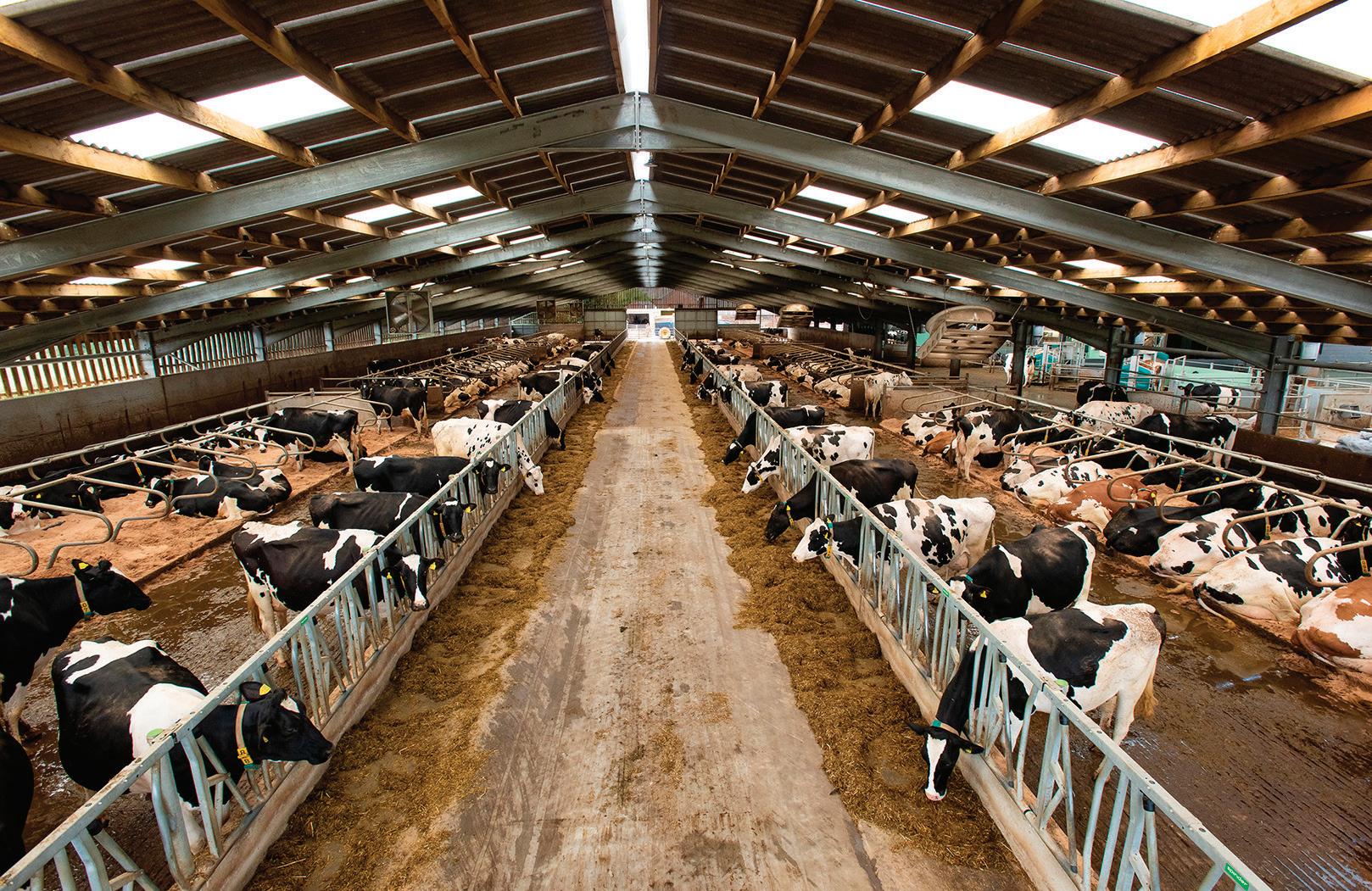
Of the farmers surveyed, 66% said they had noticed heat stress in their animals.
Inset: Hayley Campbell-Gibbons

Learn to live with climate change
and production in the UK”.
Kite customer James Bailey, who farms in South Derbyshire, said issues such as rain during rst cut silage could have a massive impact on the entire year.
He said he had invested in more silage storage, but
achieved an LDY of 21.5kg of milk per cow per day.
The NMR Silver Salver, awarded to the Gold Cup qualifying Holstein herd with the highest combined fat and protein production for the year ended September 2022, was presented to Janet and Sandy Law, Woodside Farm, Derbyshire, of Marshall and Law Partners.
The all-year-round calving herd numbered 200 cows, with a combined fat and protein of 1,007kg a cow. Average milk
expanding the concreted area of the farmstead meant that dirty water lled up the slurry storage faster.
Polycarbonate
Also, he had managed to combat heat stress by pu ing up a
yield was 13,850kg at 4.4% fat and 3.35% protein.
Mark Hunter and his parents, Robert and Lorraine, from West Tarbrax Farm, Lanarkshire, won the Lilyhill Cup for the second consecutive year.
This trophy was for the Gold Cup qualifying Jersey herd with the highest combined fat and protein yield.
The Hunters’ Clydevalley Jerseys of 200 milking cows achieved a combined fat and protein weight of 907.56kg/ cow. Average yield was
new building with a polycarbonate roof.
In last summer’s hot conditions, the temperature in the new building – which was not ed with roof fans – was lower than in the conventional building ed with fans.
7,900kg of milk at 7.08% fat and 3.97% protein.
The Chairman’s Cup, for the Gold Cup qualifying herd of a breed other than Holstein or Jersey, with the highest combined weight of fat and protein, was won by Stuart Neish, with a combined fat and protein weight of 749.40kg/cow.
He was milking 210 Red and White Holsteins and Ayrshires at Muirside Farm in Dumfries, where they yielded 11,000kg/ cow on twice-a-day milking.
MARCH 2024 52 DAIRY-TECH REPORT
PICTURE : John Eveson



LAMMA ‘24 WAS A RECORD BREAKING EVENT
DON’T MISS OUT EXHIBITING AT LAMMA 2025

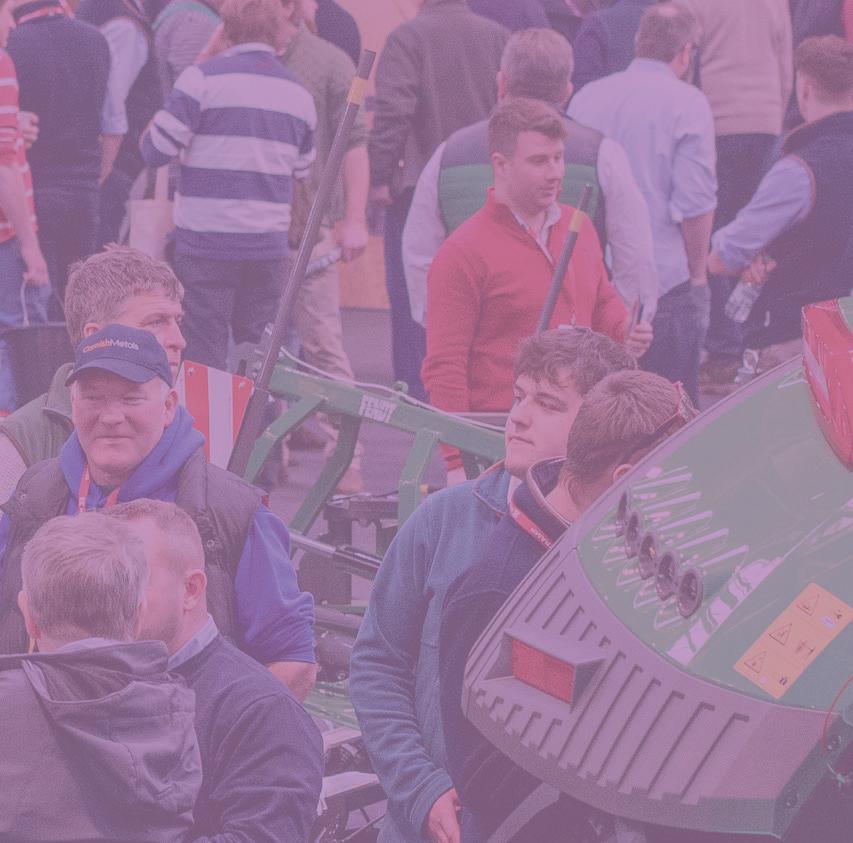
40,000+ 640+
74%
87%
Including purchases already made, nearly 2/3s of visitors are expecting to purchase goods or services from exhibitors as a result of their visit to LAMMA of

Benefits of exhibiting at LAMMA
✔ Engage with key decision makers
✔ Promote your products and services
✔ Increase brand awareness
✔ Increase brand credibility
✔ Launch new brand, product or service
✔ Meet current customers
For all sales enquiries or to book a stand scan or click on the below QR code and fill in the form:








We’ve had a really great show here at LAMMA – Full of quality conversations. Our stand is particularly interactive this year so it’s been really drawing people in. We’re looking forward to next year already!
-AGCO-
LAMMA is a great place to meet up with our existing clients and meet new, it’s what brings us back each year. The show has been very busy for us once again.
-Agrifac-
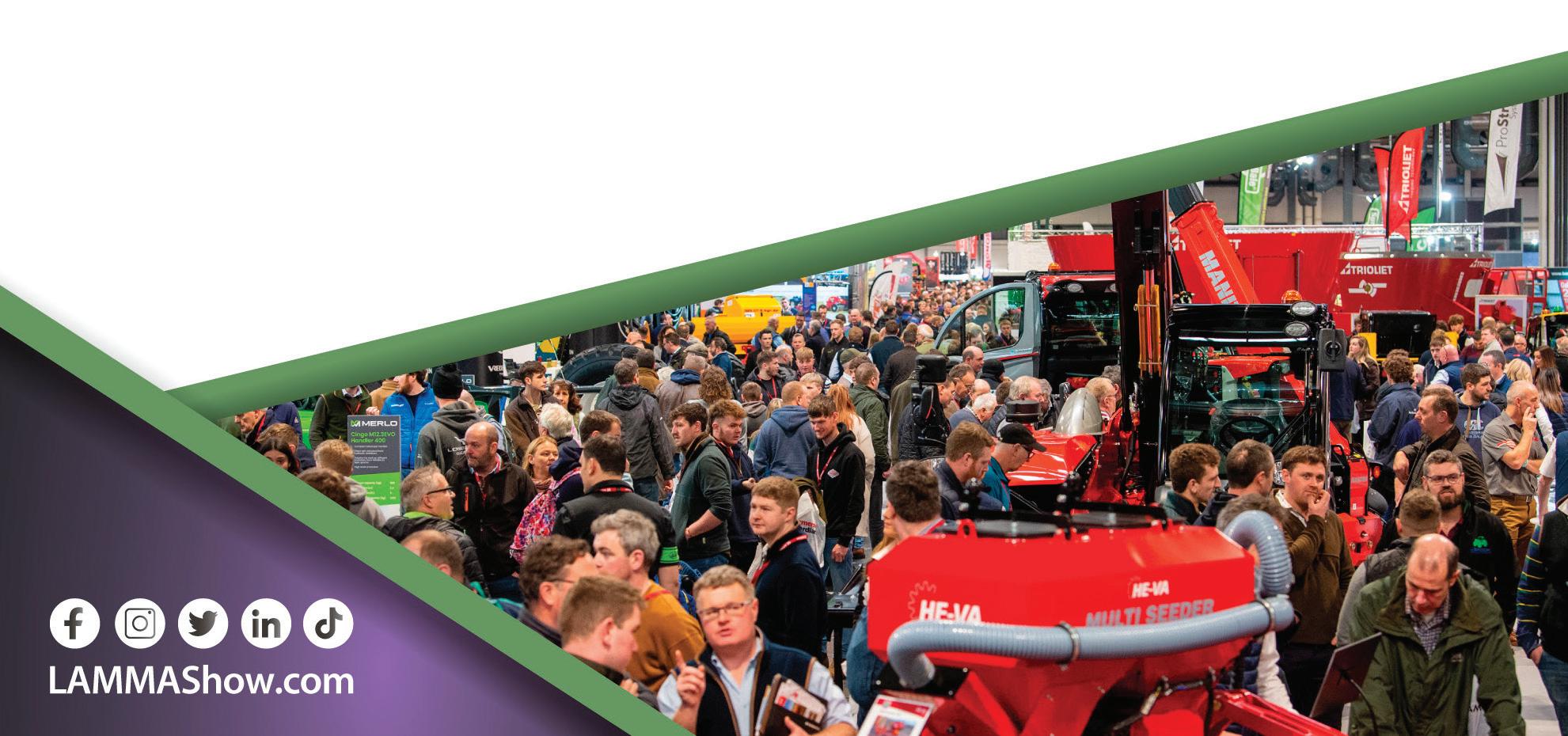
exhibitors were satisfied with the event exhibited at LAMMA 2024 attended LAMMA 2024 28% 20% 15% 9% 3% 25% arable farmers beef farmers sheep farmers dairy farmers pig farmers mixed farmers Visitor Stats* Taken from the 2024 event
Daffodils have potential to reduce methane from livestock
The answer to one of the ca le sector’s biggest challenges – how to reduce methane production – could be found in the humble da odil.
A four-year project called ‘Dancing with da odils’, supported by Defra and Innovate UK, was looking to develop a novel feed additive using a speci c alkaloid extracted from da odils. In the laboratory, the alkaloid achieved impressive results in methane reduction and protein utilisation in ruminants.
One of the trial partners, Bangor University, had already
undertaken preliminary lab work showing positive results, with direct methane emissions from ruminants reduced and feed protein utilisation improved by up to 50%.
Speaking in a seminar session, Annie Williams, of CIEL, said: “Work is still being done to understand how stable the additive is. Our project partner Rumenco is working to nd the best way for the compound to be ingested; as a mineral that goes into a total mixed ration, premix, block, bucket, or all of these.
“ e partnership organisations involved in the project have the ability to take this

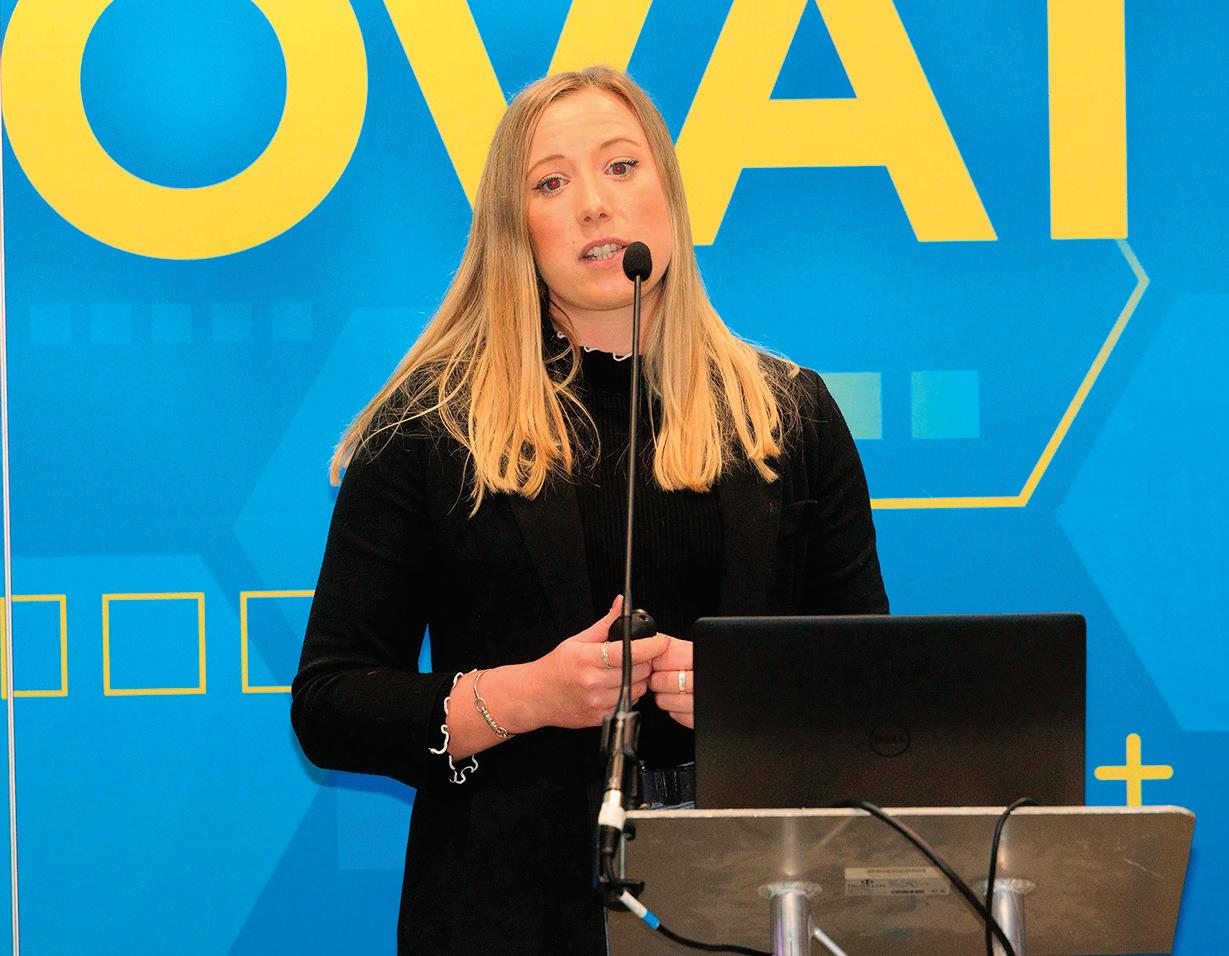
research from the eld to the farm. We want to establish a UK-based supply chain to support the diversi cation of UK agriculture and boost the rural economy.”
As da odils are grown widely throughout the UK, the researchers involved said the production and extraction of these compounds could be local, sustainable and resilient.
Sustainability
In order to support the rollout of this feed additive, the consortium was encouraging the cultivation of da odils as a new cash crop, aimed at supporting farm diversi cation and enhancing agricultural sustainability.
Ms Williams said: “Da odils are a low-input crop, and their environmental adaptability
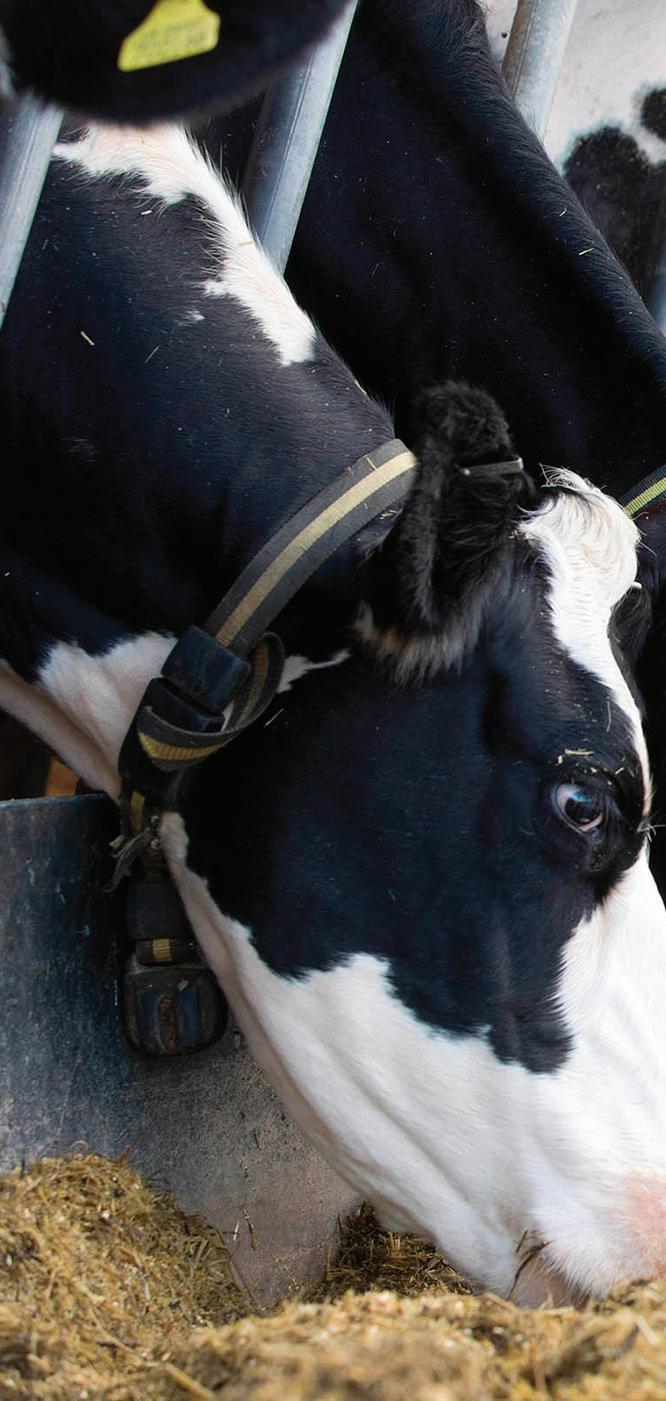
o ers a compelling opportunity for farmers to explore alternative revenue streams while contributing to biodiversity and ecosystem resilience.
“By encouraging the adoption of da odil cultivation alongside traditional farming practices, this aims to empower farmers with diverse income sources, strengthen the resilience of the agricultural sector, and create a more sustainable and economically vibrant rural landscape.”
Freshways progress
JFreshways will move its operations from its current site in Acton, London, to a new purpose-built premises just off the M5 in West Bromwich.
Commenting on the move, Bali Nijjar told a Dairy-Tech seminar that – after 20 years of operation – the company felt the Acton site was too congested and old.
The company had exchanged contracts on a new 1.4-hectare (3.5-acre) site in the week before the show.
Mr Nijjar said: “Installation work is already in the planning stage – we expect to start work soon and have the facility up and running within 18 months to produce 400 million litres of milk a year, at which stage we will close Acton.”
MARCH 2024 54 DAIRY-TECH REPORT
Annie Williams
PICTURES : Tim Scrivener
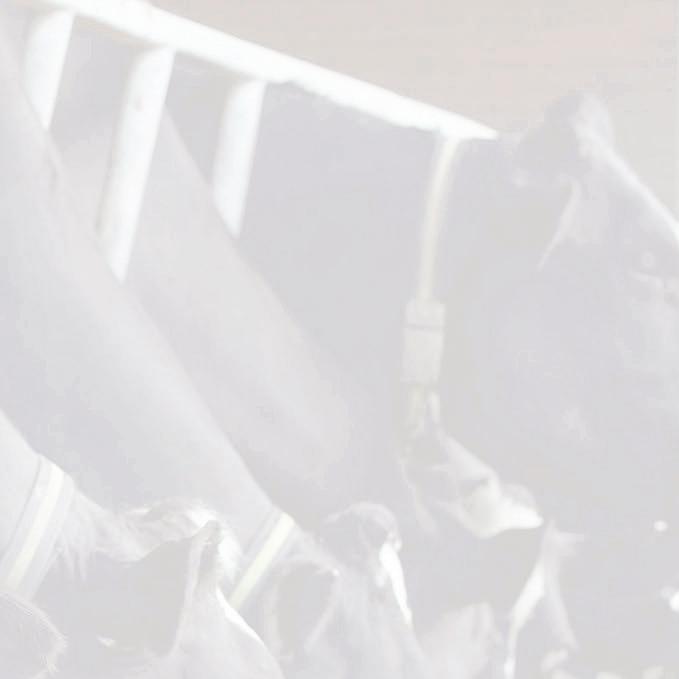





ANNIE WILLIAMS
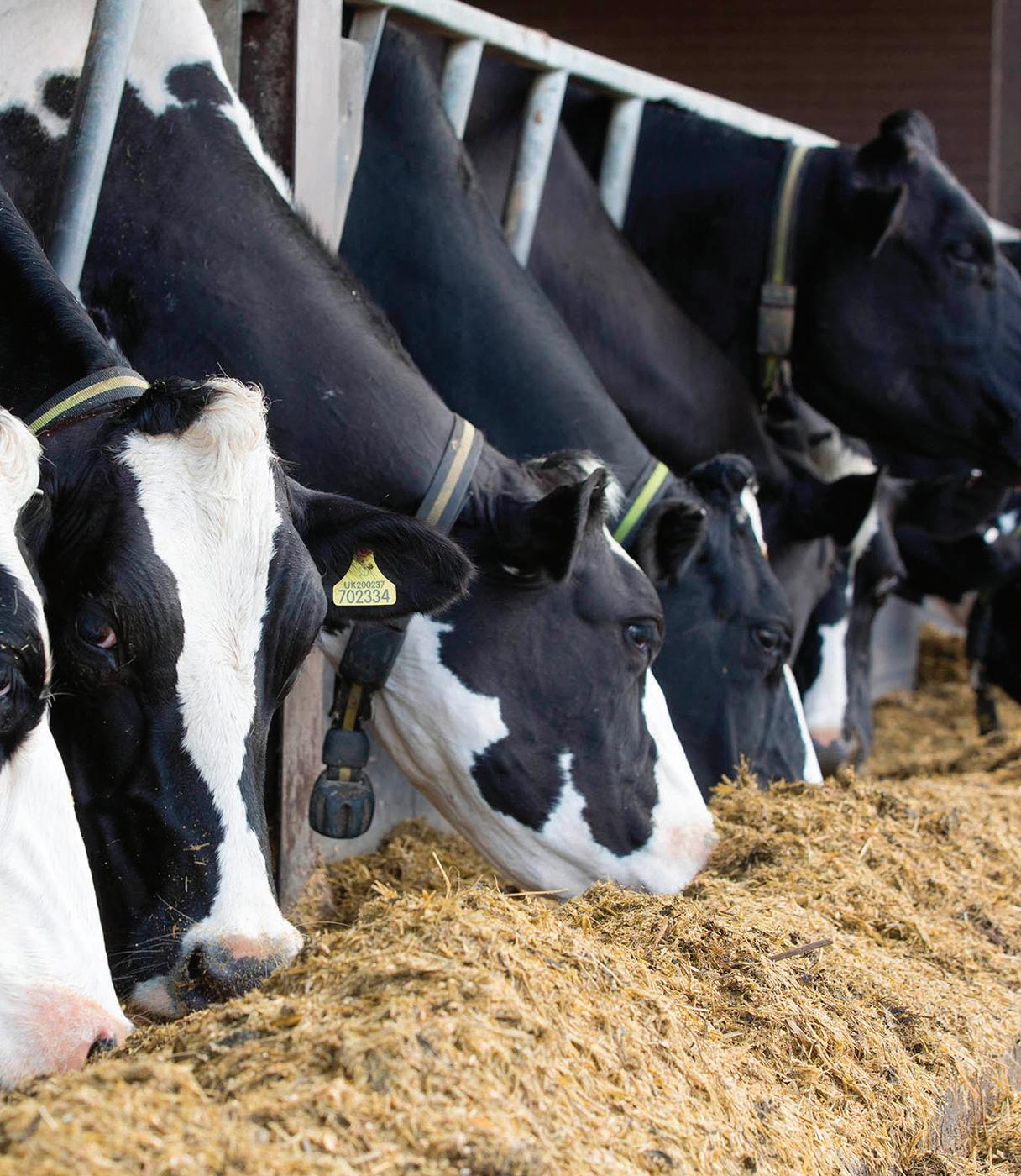

JSimply talking to employees in a kinder manner could help solve one of the dairy industry’s biggest problems – staff recruitment and retention.
That is the view of employment guru Paul Harris, who used his experience to write a book, Happy Team, Happy Farm.
The book examines the problem through the mechanism of a fictional family dealing with exactly the same issues that Mr Harris has tackled on many farms.
So while the book’s preface stresses that all the characters are fictional, the problems being dealt with are fully recognisable.
Mr Harris described his role as helping farmers with all aspects of employing workers, covering recruitment,
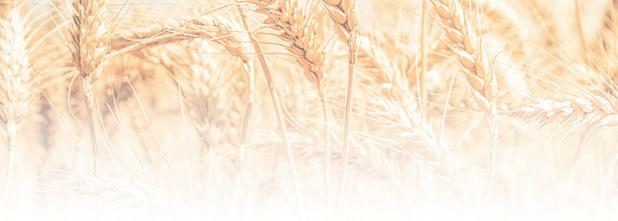








retention and when you need to move them on.
He said: “We deal with them from the moment you first need them to when you don’t.”
And, he said, poor communication was the main cause of employees moving on.
“The main reason people leave is not working hours or conditions. It is the way the farmer communicates with them. That comes across in almost all the interviews we do with potential clients,” said Mr Harris.
That problem could affect family members and cause them to quit the business too, he added.
To help find solutions, he designed the VITA Profiling personality system to help farmers understand why they need to communicate effectively and how to do it.
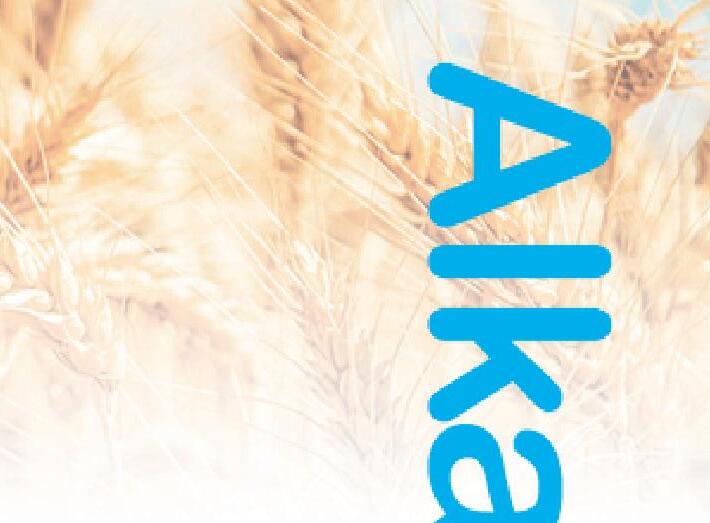












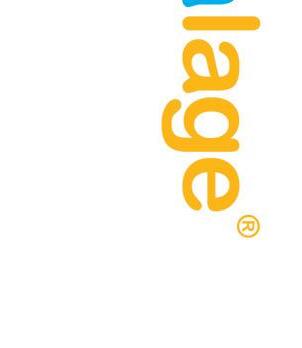



MARCH 2024 55 REPORT DAIRY-TECH Treat fully mature wholecrop with Home create an air-stable, alkaline, cereal fo ruminants with no fermentation losses... n’ Dry to orage for HARVEST
Home n’ Dry per 1t ripe, fully mature cereal crop. Ensure crop is fully mature. Must be processed at harvest. Clamp in a clean, dry store for a mininum of 2 weeks. +44(0)1200 613118 44(0)1200 N o n G M , n o n - d e f o r e s t a t i o n S o y a A l l o w s a w i d e r c r o p h a r v e s t w i n d o w H e l p s s u p p o r t a n i m a l r o b u s t n e s s H e l p s t o i m p r o v e f e e d e f f i c i e n c y
easy as 1, 2, 3!
MIX CLAMP 40kg
As
Success with staff We want to support the diversification of UK agriculture
The project, called ‘Dancing with daffodils’, was looking to develop a novel feed additive using a specific alkaloid extracted from the flower.
Following a difficult winter of heavy rainfall, James Huyton takes a look at some of the management options available to get the best out of the grassland this coming season.

Improving drainage via subsoiling and aeration could extend the grazing window, particularly on heavier land.
Machinery options for rejuvenating grassland
Grazed grassland offers the cheapest form of forage for many dairy farmers,

but following the aftermath of a wet winter, farmers need to identify the best places to start rectifying issues.
Excessive rainfall can pose unique challenges for those managing grasslands. It can lead to soil compaction which affects the health of sward and can limit productivity and yield.
AHDB senior knowledge exchange manager and national specialist on grass forage and soil, Katie Evans, says: “Begin by assessing the soil conditions on your grassland.
“Identify areas prone to compaction and evaluate the extent of the damage. Alleviating soil compaction and improving
grassland health are crucial aspects of sustainable farming.”
Understanding different soil types across each field is the first port of call, soil sampling to asses soil type and pH will indicate any remedial action, including lime spreading, that might need to take place.
Saturated
It is important to plan ahead and, although many areas of grassland in the UK are currently saturated, consider machinery maintenance to be ready for a new season and help with timeliness when the correct weather opportunity arrives.
Geoffrey Wox, of Wox Agri
Alleviating soil compaction and improving grassland health are crucial
KATIE EVANS
Services, says: “Early spring harrowing and rolling correctly will open the sward up to dry it out and thus warming the ground to encourage the uptake of slurries and dungs that have been applied, maximising the
MARCH 2024 56 MACHINERY
Katie Evans
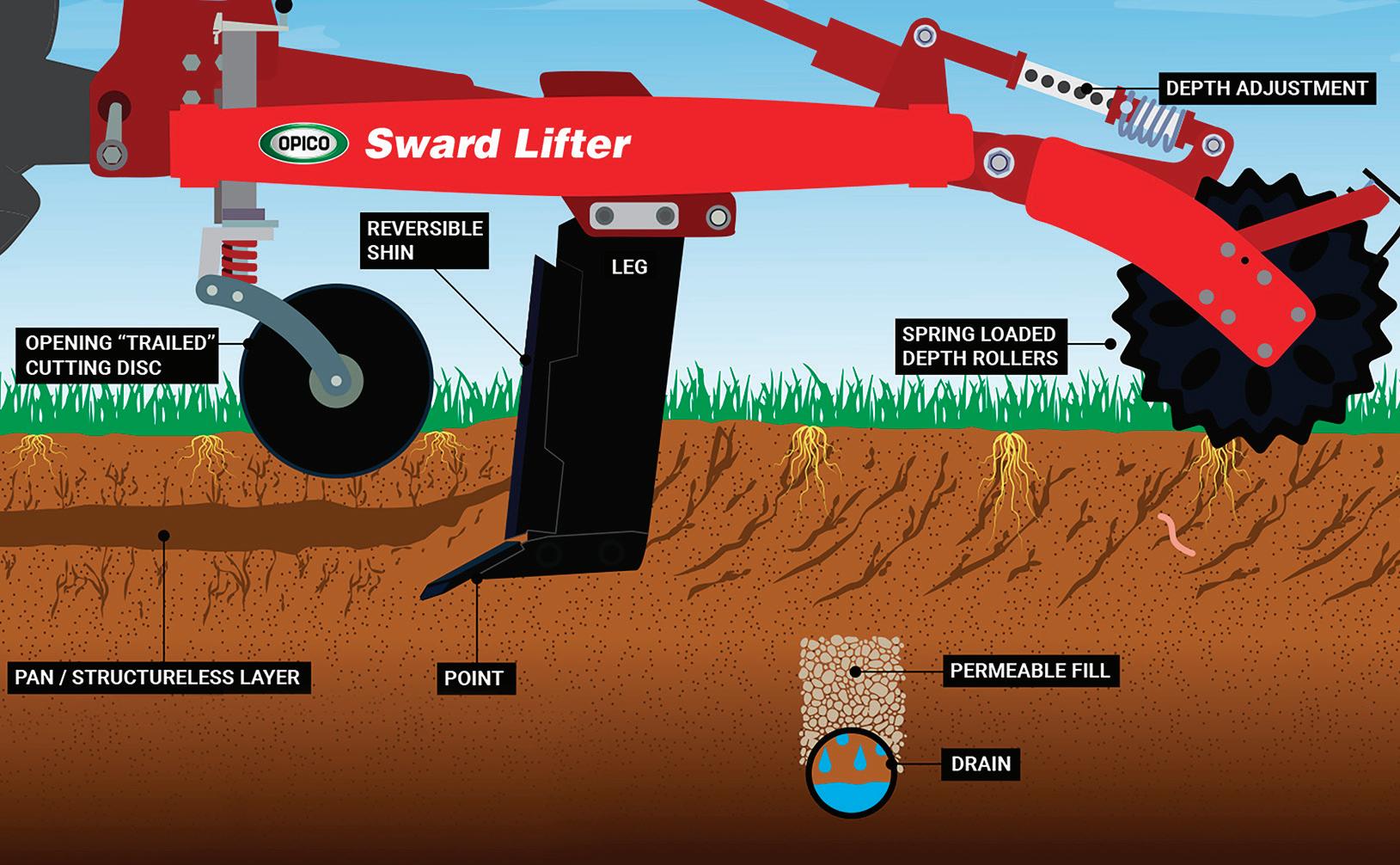
plants’ opportunity to get a good start.
“ e harrowing and rolling actions also aid in pulling out shallow-rooted grasses which typically o er unwanted competition to the more desired, deeper rooting grass species. “ is allows more potential nutrient availability to other plants that would be be er served.”
O ered in multiple working widths from 2.5 to eight metres in both mounted and trailed
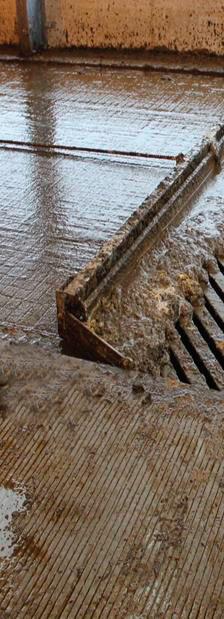

variants, Gu ler’s Greenmaster range from Wox features a standard ripper board, with a combination of 12mm U-shaped tines which intensively work the sward, taking out unwanted grasses and thatch to leave open space for new seeds.
In conjunction with the ripper board, it is supported by two rows of 12mm tines which are fully adjustable for depth and rake, which o ers

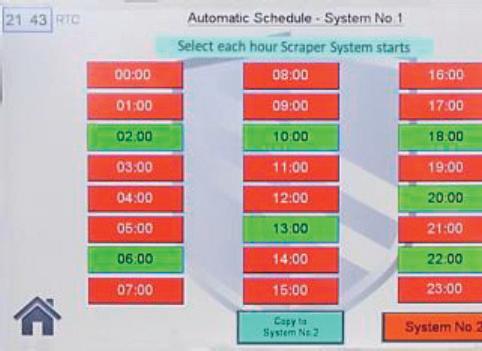
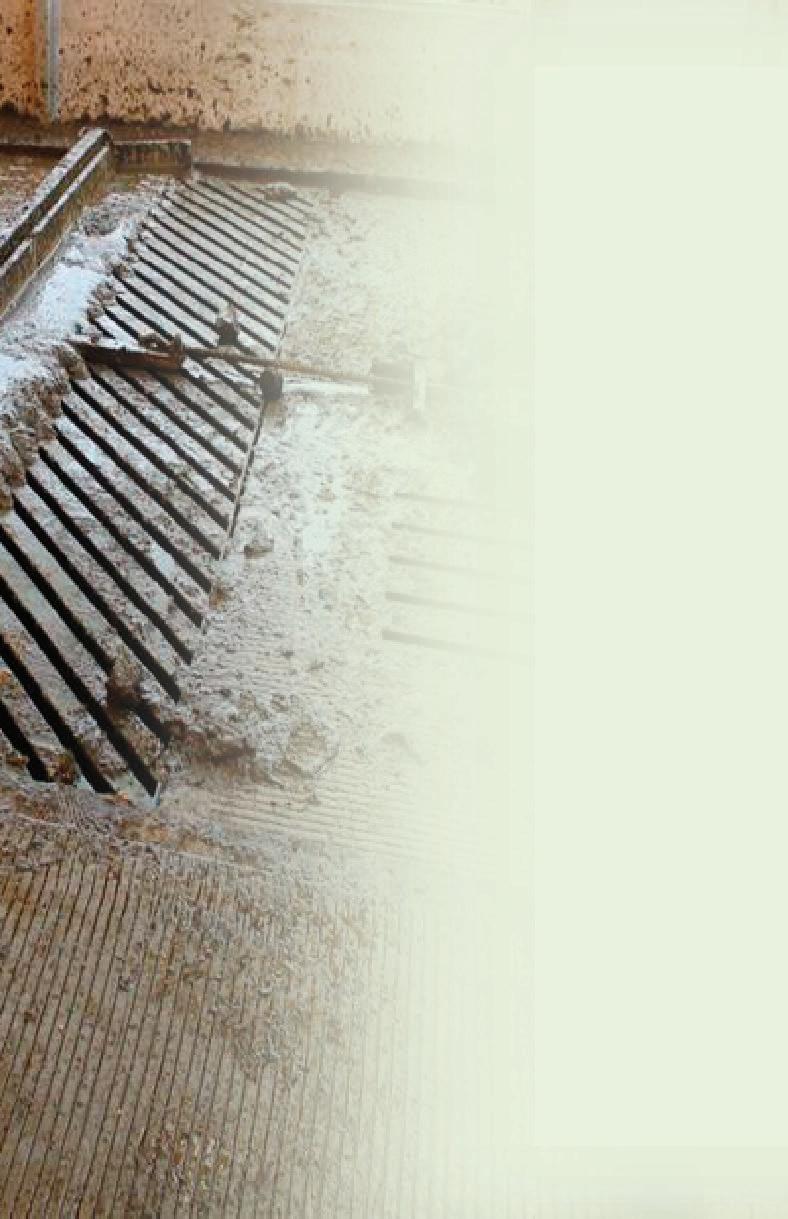


MARCH 2024 57 MACHINERY Rope Scraper
features of the Control System
Future proof expandable up to 3 individual systems (6 winch)
Individual me clock and switching for each winch system
Selectable shunt program for robo c milking
Inbuilt bedding cycle Benefits of the Rope System Ideal for sand laden slurry Lowest cost replacement parts Rope replacement cost £3 per metre Easy touch screen control 5 years extended warranty available Manufacturing and installing rope scrapers for over 20 years Feature rich control Time control Winch control Cow care SYSTEMS Innovators in Dairy Farming Wales/Midlands/S. England Fred - 07762800149 N. Ireland/ R.O.I John - 07732348225 Scotland/N. England
Andrew - 07803124235 info@cowcaresystems.com
Key
✓
✓
✓
✓
07591833853
Geoffrey Wox
Ascertaining the depth of the pan is vital when setting up a subsoiler, digging a test pit is the easiest way to determine this.
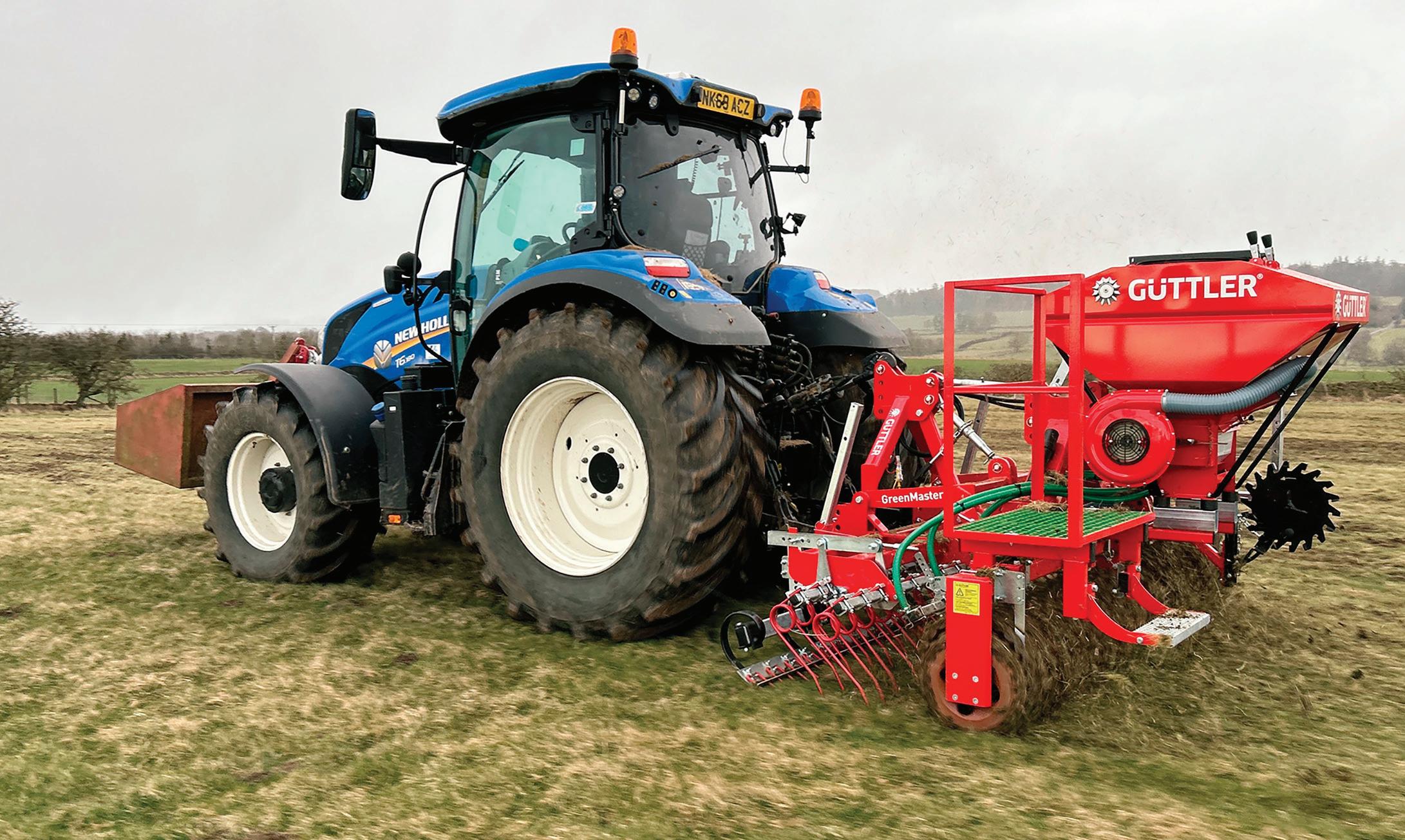
both levelling and fracturing of poached ground, aerating the surface in a single pass.
The Guttler following roll is designed to emulate the cloven profile of a sheep’s foot, pressing seeds into the soil and, in turn, stimulating tillering in the sward with the bruising action created giving a claimed increased stem strength.
Mr Wox says: “From an ecological point, the ripper board and tines scarify existing sward,

exposing the ground to allow leather jackets to be picked off by crows which have been drawn and exposed to the surface by this activity.”
Katie Evans says: “Where and when suitable, consider using subsoilers to break up compacted layers.
“Subsoiling equipment can penetrate deep into the soil, fracturing compacted layers and improving water infiltration.
“Mechanical aerators can also be used to improve soil aeration.
“These machines create channels in the soil, allowing for better water and air movement.
“Avoid using heavy equipment during wet conditions –minimise the use of heavy machinery on wet soils, as this can lead to compaction.
“Choose appropriate times for field operations, especially during periods when the soil is dry enough to prevent excessive compaction.”
Glenn Bootman, grassland product specialist at Opico, says: “Alleviating soil compac-
tion by sward lifting can help restore the structure of damaged soil, improving soil permeability, drainage and air and nutrient movement throughout the soil profile.
“It promotes root growth to allow the potential to extend the gazing period.”
Dry conditions offer the best performance when subsoiling, as the structure is lifted and fractured and not smeared. Spade test pits are a good way to assess the soil before carrying out any work.
Compacted
This allows pinpointing of any compacted layers and sets the working depth, as well as determining if conditions are fit to work.
Subsoiling often provides the best performance after prolonged dry spells and, depending on the seasonal weather conditions, the operation would be best considered early to mid-summer.
Subsoiling may not be a viable option in every field. Differences
in topsoil depth and subsoil type, can dictate the type of equipment used.
Aerators offer a less invasive solution to alleviating compact or shallow soils. Available in 2.5-3m working widths in both trailed and mounted formats, aerators use spade-like tines to cut and lift the grass sward.
Mounted on a ballast roller design, the tines cut into the sward at a set depth leaving an open slot, also consolidating in a single pass.
Mr Wox says: “Aerating the ground in the spring can bring huge benefits. However, the ground must not be too wet or dry for the activity, as it equally could be money wasted.
“The ground needs to be at a ‘green’ stage, thus allowing the action of the aerator to perform correctly, lifting and opening the sward for oxygen to get into the ground to stimulate aerobic bacteria.”
Aeration also offers other benefits, including any breaking up any capped surface area,
MARCH 2024 58 MACHINERY
Glenn Bootman
Single pass harrowing and seeding can be achieved with the Guttler Greenmaster.
Soil health plays an important role in building resilience in agricultural ecosystems
KATIE EVANS
allowing water to lter into the soil surface, as well as stimulating any legume nodule activity.
Ultimately grassland management goes far beyond the mechanical tools on o er to help alleviate compaction a rejuvenate grassland. But in a world without direct payments, it is important dairy farms get serious about the correct management to aid both grassland and farm resilience.
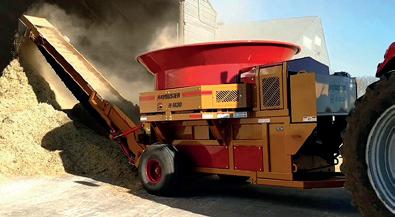
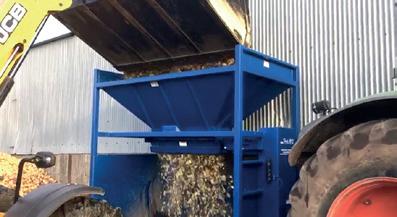
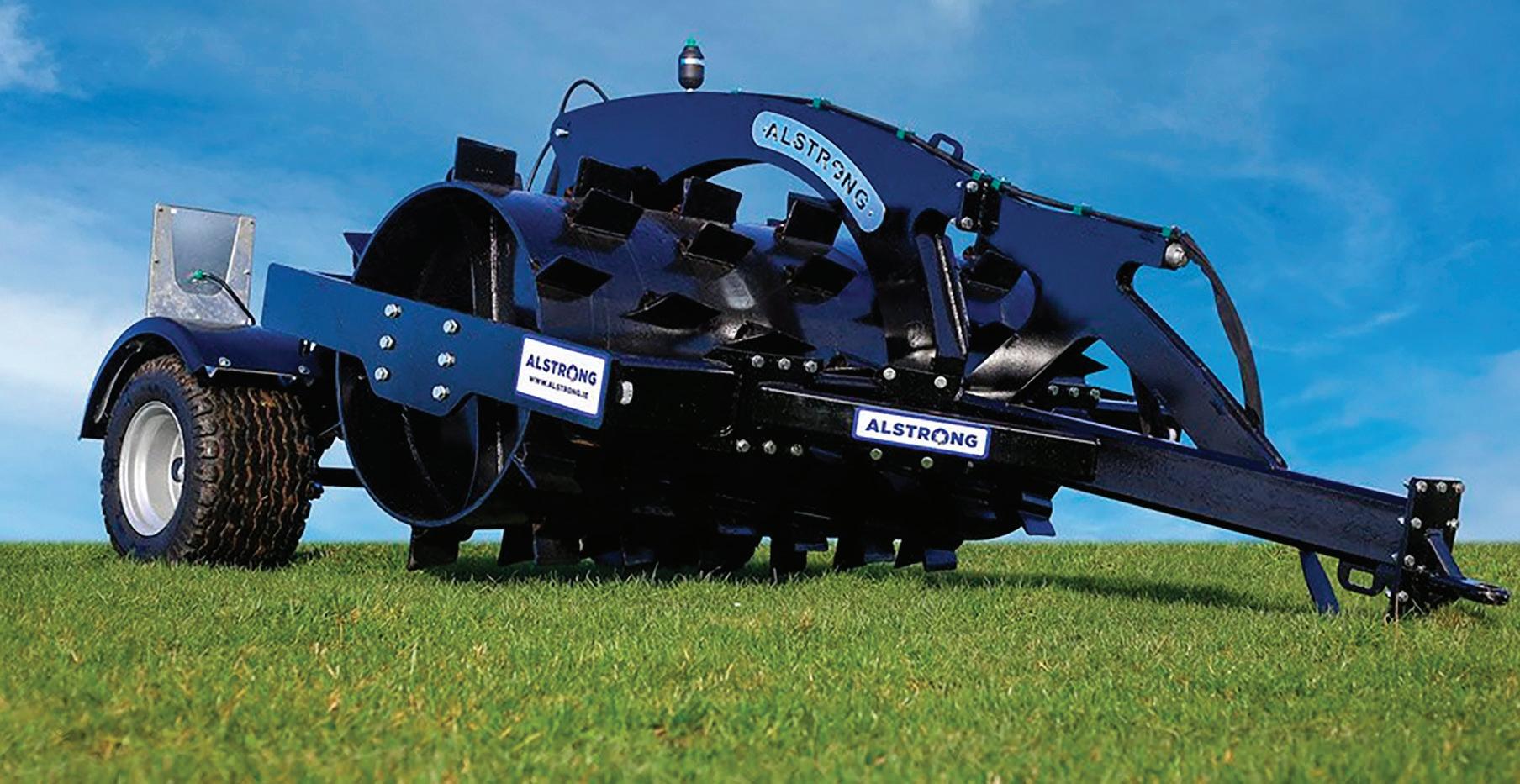

Katie Evans says: “Consider implementing a crop rotation and diversifying your plant species within a sward and do not underestimate the power of the root. Di erent crops have varying root structures, which can help break up compacted

soil layers and enhance overall soil health, water in ltration and nutrient cycling.
“Soil health plays an important role in building resilience in our agricultural ecosystems and how they respond to environmental
challenges, such as oods and drought. Our soil health is a key contributor to long-term sustainability in food production. erefore, it is important to conduct soil tests to understand the current nutrient levels, pH and soil structure.”


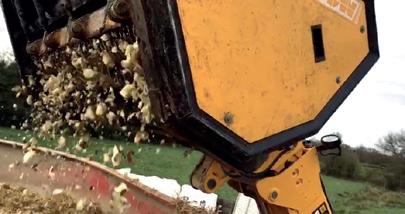
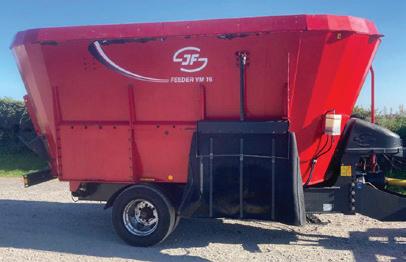

Keenan 320, 340
- Siloking 10, 14 x 4, 16, 18, 22
- Shelbourne 13 x 2
- Abbey 30
- Hi Spec 12
- Redrock 16, 20
- Keenan 320, 340
- VdW Mini mixer 2022
- Rotogrind 760 2018
- Haybuster H1000
- Teagle C12 tub grinder with grain processor, 2021


MARCH 2024 59 MACHINERY Feed Processing Specialists Please visit www.enegis.co.uk for more photos or call 01789 205132 or 07721 442979 Used Diet Feeders always wanted Tub Grinders - Exclusive UK Distributor of Haybuster & Rotogrind Grinders. - Range of models from 5t - 25t / hour output. - New, used & refurbished machines available. - Ideal for straw, hay, green waste, roots, biogas feeds etc. Root Choppers & Cleaners - Loader, 3 point linkage, free standing PTO and electric drive available - UK Distributor of VDW range of choppers, cleaners & feed dispensing equipment - Output from 10t/hour to over 120t/hour available Diet Feeders - Largest stock of mixers in the UKover 50 machines in current stock - Refurbished, used & nearly new units available - New Mini Mixer available - Diet feeder parts available- Blades, Conveyor belts, gearboxes, weigh cells. - All feeders undergo 30 point service - Finance available subject to terms - Nationwide delivery available Current Used Stock: - Trioliet 18, 20, 24 - Strautmann 10, 14 Duo - BvL 12, 17, 20, 24 - Kongskilde 12, 16, 22 x 3 - Kuhn 12, 14, 27 -
Alstrong aerators are offered in 2.5-metre and 3m variants with mounted and trailed options.





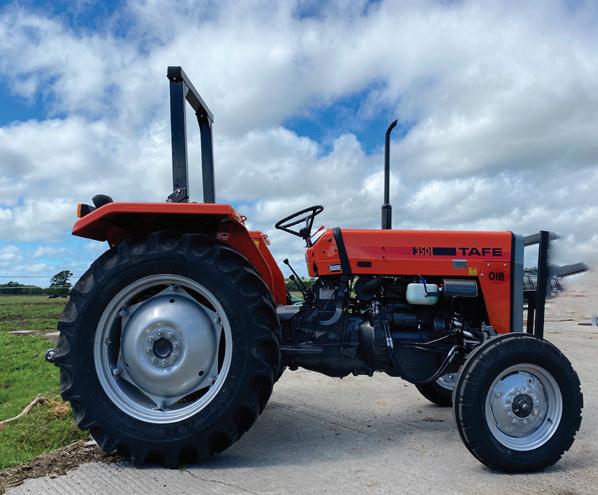











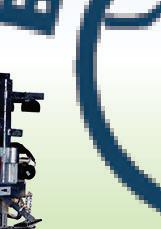










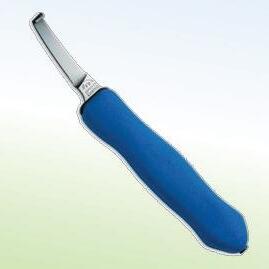




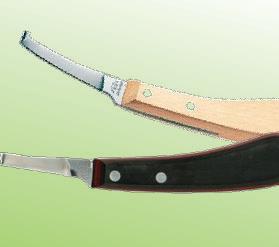
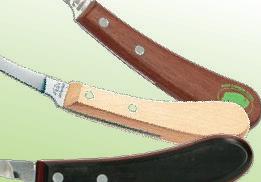
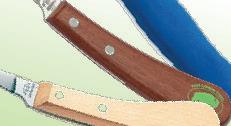
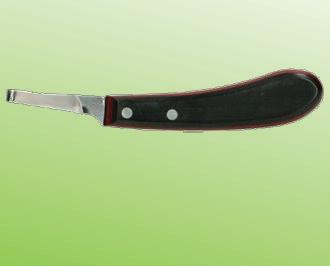




Milk prices for cheese see the action
J Arla is holding its milk price for February, following its 3 euro cent/kg (2.6p/kg) increase for January, together with Muller deciding to leave its Muller Direct price unchanged for March.
This posts the fifth consecutive month of price stability and has the effect of locking in virtually all other milk buyers for liquid processing as a hold for March.
Competitive
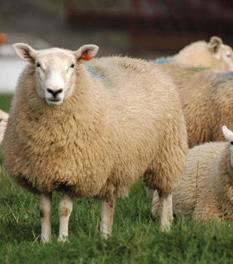
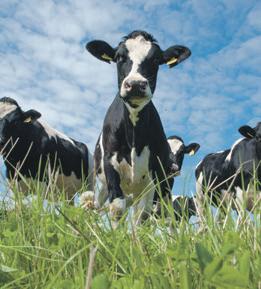
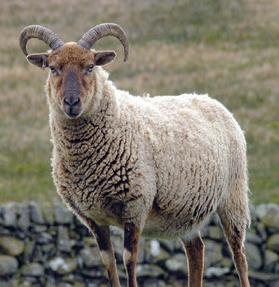

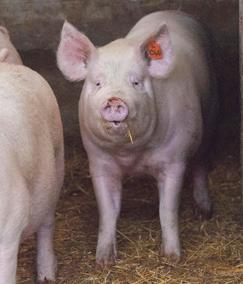
Instead, the milk price action for March is to be found with those milk buyers for cheese who were needing to increase their milk prices to maintain a competitive level with other manufacturers having moved their milk price for February.
On this basis, the top mover for March was Saputo Dairy UK, which, having decided not to move its Davidstow price for February, increased by 1.5ppl to 38ppl for our manufacturing standard* for March.
Combining the 1ppl increase from January, this puts the total price increase for suppliers
in the Davidstow Creamery Direct group at 2.5ppl for the rst quarter of 2024.
Our liquid standard increased by 1.44ppl to 36.64ppl, making a combined increase of 2.4ppl.
With both Barber’s Cheesemakers and Wyke Farms deciding to hold their milk prices for March, having both increased prices by 2.06ppl and 2.18ppl, respectively, South Caernarfon backed up its 1.25ppl increase for February, with a further increase of 1ppl from March, to take our manufacturing standard for the North Welsh co-op up to 36.25ppl and 35.01ppl on liquid standard.
Following a similar time pattern but with backto-back increases of 1ppl, our First Milk price increases to 38ppl, with our supplier in the Haverfordwest Tesco Cheese Group moving up by the same amount to 39.5ppl.
While retailer-supported, this price currently holds the crown as our highest manufacturing milk price, depending on what, if any, price movement Arla decides for March.
60
MILKprices MARCH 2024 www.auctionfinder.co.uk Your one stop shop for all agricultural sales Search by sale type, mart, auctioneer or region PHONE OR ORDERO NLINE Tel: 01738842996 www.bdsupplies.co. o. o uk k sales@bdsupplies.co.uk uk SUPPLIERSOFHOOF TRIMMING &ANIMALHUSBANDRY EQUIPMENT Call us on 01258 817372 email: info@tractorsuk.co.uk TRACTORS UK SOLE UK IMPORTER OF TAFE TRACTORS FROM THE BEST PEDIGREE BASIC, SIMPLE & RELIABLE TRIED & TESTED FOR GENERATIONS 08R04B � Drum or oil immersed brakes � Roll bar or cab � 2wd or 4wd � 2 Years’ warranty � Comprehensive parts backup www.tractorsuk.co.uk ✆ 01258 817372 ✉ info@tractorsuk.co.uk BASIC, SIMPLE & RELIABLE www.tractorsuk.co.uk • • 2 Years’ warranty Comprehensive parts backup • • Oil immersed brakes 2WD or 4WD
Milk price analyst
Stephen Bradley on the latest milk industry developments.

Leprino Foods price on a roll
JWith competition for milk supply warming up a little in Wales, Leprino Foods has increased its milk price by a penny for the third consecutive month, taking our manufacturing price up to 37ppl from March, while our liquid standard moves up 0.96ppl to 35.75ppl.
The company is also reporting that while demand following the Christmas trading period has remained relatively weak, the reduction in global milk supply has helped to underpin dairy product prices.
To date, the only other manufacturer we monitor the price of on a regular
basis, which has moved its price three months on the trot, is Saputo Dairy UK’s other cheesemaking dairy, Wensleydale in Yorkshire.
Manufacturing
Following increases of 0.16ppl for December last year and 1.26ppl for January, the company has added a further 0.37ppl from February, taking our manufacturing price up to 37.37ppl.

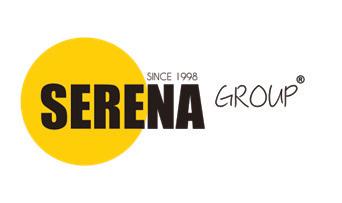



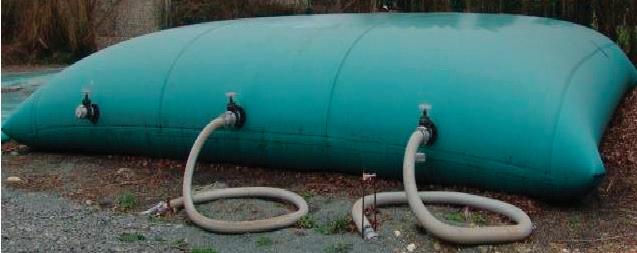

Meadow rises 0.5ppl for February
JOther milk buyers increasing for February include Meadow, increasing by 0.5ppl to take our liquid standard price up to 34.25ppl across all the company’s regional milk pools.
This move, the second increase for 2024, follows the 0.75ppl increase for January. Being a flat rate increase, our manufacturing price also increases by the same amount to 34.88ppl.
The Fresh Milk Company
Our liquid standard increasing by 0.36ppl for 36.15ppl reflects an increase of 1.72ppl over the same period. (Lactalis) has increased its February milk price by 0.75ppl, based on the company’s headline price at 4% butterfat and 3.3% protein.
Increase
The increase follows the 1ppl increase for January and takes our manufacturing standard up 0.78ppl to 37.20ppl. Our liquid standard increases by 0.75ppl to 35.75ppl.





61
* Our Liquid standard litre is 4%b/f & 3.3% protein, for our Manufacturing 4.2%b/f & 3.4% protein and in both cases Bactoscans of 30,000/ml & SCCs of 200,000/ml, with Thermodurics of 500/ml, 1mltrs/yr on EODC (max vehicle accessibility) based on level supply and therefore, before seasonality, (but includes the winter premiums paid in NI) as well as monthly profile adjustments, balancing charges, capital deductions or annual/ part annual growth incentive schemes or supplements not directly linked to dairy market price movement. MARCH 2024 YOUR DEPENDABLE PARTNER FOR SLURRY STORAGE SOLUTIONS enquiries@enviroseal.co.uk t: 01695 228626 www.enviroseal.co.uk SLURRY LAGOON FLOATING COVERS Keeps rainwater out of slurry Reduces odour from lagoons Covers comply with EA and SSAFO legislation SLURRY LAGOON LINERS Comprehensive 25 year warranty Materials meet EA and SEPA requirements Installed and tested by certified technicians Enviroseal provide a complete range of products for slurry storage info@pfc-eu.com www.pfc-eu.com +44 (0) 1805 603 363
Securing a Sustainable Future
Slurry bags are an important piece of the sustainable agriculture puzzle. By investing in solutions that are energy e cient, e ective and long-lasting, we can help ensure a better future for generations to come. Whether used to store and transport liquids, fertilisers or other materials, slurry bags o er the potential to reduce environmental impacts while remaining cost-e ective in the long run.
62 MILK PRICES Notes to table Prices for both Liquid & Manufacturing tables paid for a producer sending 1mltrs/yr on EODC (max vehicle size accessibility) with Bactoscans of 30,000/ml and SCC’s of 200,000/ml with Thermodurics of 500/ml. Excludes capital retentions or AHDB levies, profile adjustments from level supply, seasonality, balancing and A&B price schemes (includes the winter premiums paid in NI). Excludes annual / part annual growth incentive schemes or supplements not directly linked to dairy market price movement. Liquid price for milk contains 4% b/f and 3.3% protein. Manufacturing price for milk containing 4.2%/b/f and 3.4% prot. All prices for non-aligned prices are before monthly retail supplements. (i) Oct’23 prices before seasonality or B pricing (ii) Nov’23 prices before seasonality or B pricing (iii) Table ranked on simple rolling 12mth average of monthly prices Dec’22 to Nov’23). (i) v (ii) The difference Nov’23 compared with Oct’23. UK Arla Farmers 0.09ppl increase from Oct’23 & hold for Nov’23 includes 1.359ppkg (1.400ppl) Sustainability Incentive and forecast 13th payment of 1.24ppkg (1.277ppl) based on our liquid std litre. UK Arla Farmers 0.09ppl increase for Oct’23 & hold for Nov’23 includes 1.417ppkg (1.460ppl) Sustainability Incentive and forecast 13th payment of 1.29ppkg (1.329ppl) based on our manufacturing std litre. First Milk price includes 0.5ppl Member Premium accrued as a 13th payment paid Apr’24. First Milk Haverfordwest Tesco Cheese Group includes 2ppl retailer premium averaged as 1.5ppl based on seasonal profile. Fresh Milk Company price before Morrisons monthly cheese supplement (payment made in Nov’23 of 0.029ppl for supplies Jul’23 to Oct’23). MMG Direct price includes 1ppl Premium paid quarterly in arrears to Direct/Organic farms meeting specific Müller Direct criteria (Quarterly payments started from Apr’22). Crediton Dairy price includes FarmMetrics Scheme Bonus of 0.5ppl paid monthly. South Caernarfon price includes flat 0.4ppl annual member bonus paid monthly. ‡ Price includes 12mth average rolling profile fixed at 0.57ppl. * UK Milk Futures Equivalent (UKMFE) net to producer includes 5% processor margin and allowing 2.50ppl ex-farm haulage for Oct’23 and 2.54ppl for Nov’23. ** Ave delivered spot milk net to producer allows 3ppl covering haulage + milk testing and margin. *** Price for Feb’24 with reporting to end as suppliers switch to Müller. (iv) Latest confirmed milk price at the time of going to press. UK Arla Farmers 0.85ppl increase for Dec’23 includes 1.359ppkg (1.400ppl) Sustainability Incentive and forecast 13th payment of 1.24ppkg (1.277ppl) based on our liquid std litre. UK Arla Farmers 0.89ppl increase for Dec’23 includes 1.417ppkg (1.460ppl) Sustainability Incentive and forecast 13th payment of 1.29ppkg (1.329ppl) based on our manufacturing std litre. UK Arla Farmers 2.90ppl increase for Jan’24 includes 1.361ppkg (1.402ppl) Sustainability Incentive and Guaranteed minimum supplementary payment of 1.239ppkg (1.276ppl) based on our liquid std litre. UK Arla Farmers 3.08ppl increase for Jan’24 includes 1.42ppkg (1.463ppl) Sustainability Incentive and Guaranteed minimum supplementary payment of 1.292ppkg (1.331ppl) based on our manufacturing std litre. UK Arla Farmers hold for Feb’24 includes 1.361ppkg (1.402ppl) Sustainability Incentive and Guaranteed minimum supplementary payment of 1.239ppkg (1.276ppl) based on our liquid std litre. UK Arla Farmers hold for Feb’24 includes 1.42ppkg (1.463ppl) Sustainability Incentive and Guaranteed minimum supplementary payment of 1.292ppkg (1.331ppl) based on our manufacturing std litre. Dale Farm NI 2ppl Winter Premium paid for Oct, Nov & Dec. Fresh Milk Company price before Morrisons monthly cheese supplement (payment made in Nov’23 of 0.029ppl for the 4mths Jul’23 to Oct’23). MMG Direct Premium for Direct/Organic farms meeting specific Müller Direct criteria confirmed as 1ppl for 2024 and paid quarterly, Apr’24, Jul’24, Oct’24 & Jan’25. All prices are before any additional monthly retail supplements. Milkprices.com cannot take any responsibility for losses arising. Copyright: Milkprices.com Oct’23 Nov’23 12mth Diff Latest 4.0/3.3 4.0/3.3 Ave Nov’23 Confirmed Before Before Dec’22 v Milk Seas’lty Seas’lty Nov’23 Oct’23 Price LIQUID PRICES (4% b/f & 3.3% prot) (i) (ii) (iii) (i) v (ii) (iv) Müller Milk Group – M&S E&W 46.00 44.80 49.63 -1.20 44.80 Müller Milk Group – M&S Scotland & NI 45.74 44.54 49.59 -1.20 44.54 Müller Milk Group – Waitrose 45.30 45.30 47.43 N/C 44.05 Müller Milk Group – Tesco 41.83 41.73 43.94 -0.10 42.42 Arla Foods – Tesco 41.58 41.48 43.69 -0.10 42.17 Müller Milk Group – Sainsbury’s 40.89 40.63 43.25 -0.26 40.61 Arla Foods – Sainsbury’s 40.77 40.51 43.13 -0.26 40.45*** Müller Milk Group – The Co-op Dairy Group 39.91 39.62 42.81 -0.29 39.84 Blackmore Vale Dairy 37.00 37.00 41.63 N/C 37.00 UK Arla Farmers – Tesco 35.25 35.25 41.57 N/C 39.00 Müller Milk Group – Müller Direct 37.00 36.50 41.25 -0.50 36.50 Crediton Dairy 37.00 37.00 41.25 N/C 7.00 Müller Milk Group – Müller Direct (Scotland) 36.79 36.29 41.04 -0.50 36.29 Dale Farm GB (Kendal) 36.18 35.47 40.67 -0.71 35.91 Freshways 36.00 35.00 40.58 -1.00 35.00 Yew Tree Dairy 36.00 36.00 40.58 N/C 36.00 UK Arla Farmers – Morrisons (Grazing) 35.45 35.45 40.40 N/C 39.20 UK Arla Farmers – Morrisons 35.22 35.22 40.18 N/C 38.97 Paynes Farms Dairies 35.00 35.00 40.17 N/C 35.00 Grahams Dairies 36.00 35.00 38.92 -1.00 35.00 UK Arla Farmers 33.83 33.83 38.79 N/C 37.58 Meadow Foods Lakes 33.00 33.00 38.29 N/C 34.25 Meadow Foods 33.00 33.00 38.29 N/C 34.25 Dale Farm NI 33.73 35.73 36.67 2.00 36.23 Simple Average 37.85 37.64 41.82 -0.21 Simple Average (excl. retail contracts) 35.43 35.29 39.86 -0.13 MANUFACTURING PRICES (4.2% b/f & 3.4% prot) First Milk – Haverfordwest Tesco Cheese Group 38.35 37.50 43.00 -0.85 39.50 Barber’s Cheesemakers 36.14 36.14 41.79 N/C 38.20 Saputo Dairy UK – Davidstow 37.00 35.50 41.67 -1.50 38.00 Wyke Farms 36.11 36.11 41.64 N/C 38.29 The Fresh Milk Company – Level Profile ‡ 37.51 35.96 41.63 -1.55 37.77 First Milk 36.85 36.00 41.50 -0.85 38.00 Parkham Farms Tesco 37.25 37.25 41.31 N/C 38.25 Wensleydale Dairy Products 35.84 35.58 41.29 -0.26 37.00 The Fresh Milk Company (Lactalis) 36.94 35.39 41.06 -1.55 37.37 Belton Farm 35.30 35.30 40.51 N/C 36.30 UK Arla Farmers 35.21 35.21 40.37 N/C 39.18 South Caernarfon 34.00 34.00 39.92 N/C 36.25 Arla Foods – Direct Manufacturing 32.67 32.67 39.30 N/C 36.13 Leprino Foods 34.00 34.00 38.81 N/C 37.00 Dale Farm NI 34.72 36.72 37.63 2.00 37.22 Simple Average 35.86 35.56 40.76 -0.30 Simple Average (excl. retail contracts) 35.56 35.28 40.55 -0.29 ‘B’ Price Indicators StoneXMilkprices.com UKMFE (gross) 35.39 38.73 34.74 3.34 *StoneXMilkprices.com UKMFE (net) 31.12 34.25 30.53 3.13 **Delivered spot milk (net to the producer) 34.80 35.92 1.12
MARCH 2024
Latest milk prices from
Future-proof your farm business, gain insight and exchange knowledge with a Farmers Guardian Farm Futures membership.

A one membershipyear is only £289
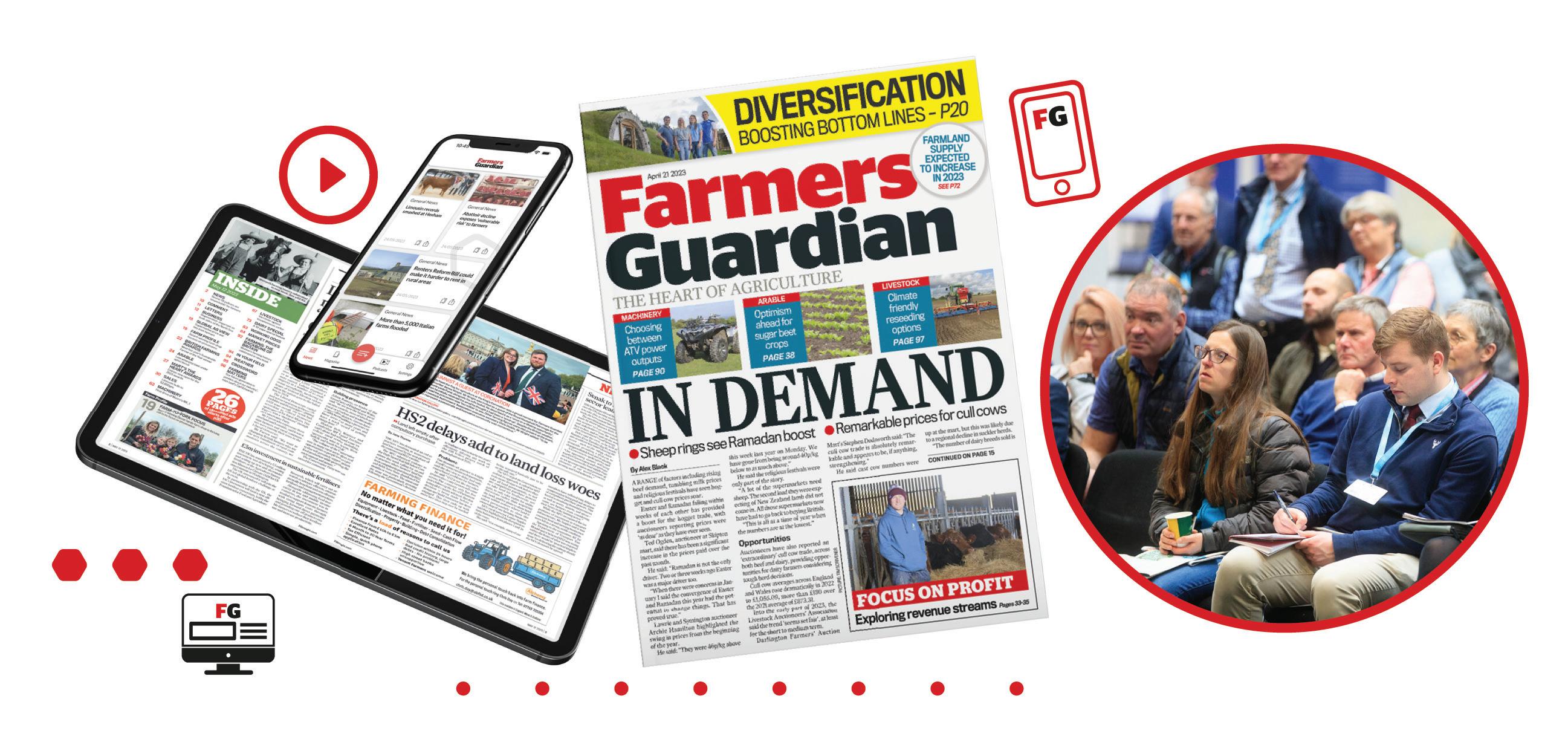
Included in your membership:








Farmers Guardian delivered directly to your door every week including full digital access. Plus, check out our brand-new features exclusive to Farm Futures members.
Insight – Quarterly, in-depth, analytical reports into the latest agricultural trends to optimise your farming practices
Exchange – A series of digital events focused on learning from real case studies and exchanging knowledge with agricultural thought leaders
Weekly Digest email – From the desk of FG’s editor every Sunday morning, discover exclusive insights which impact the business of profitable farming



Members’ Lounge – Enjoy an exclusive space for members to network at leading events, such as LAMMA, CropTec, Future Farming Expo Scotland and Farm Business Innovation.
Become an FG Farm Futures member today
Visit farmersguardian.com/membership

Call 0330 333 0056 and quote S304
HEATSTRESS?
The climate in the barn is the key!

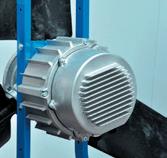
THE SOLUTION:
ABBIFAN 140-XXP-2
The latest motor technology now applied on our fans!
Direct drive.
DC-permanent magnetic motor
40-70% energy savings
No frequency control needed
No motor protection switch needed
No special wiring needed
No maintenance
Mains: 230/400V 50Hz
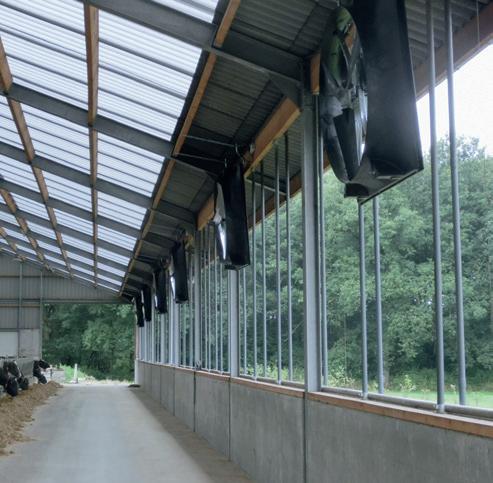
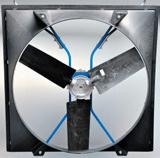
CROSS VENTILATION
blows fresh outside air in your barn!
Simpler installation
Less electric wiring
No obstacles inside
No restlessness when doing maintenance
Shorter suspension of the fans
Lower total investment
Airflow in length of cubicles
MILK ANALYSIS
Global milk volumes rise again after major exporters dip
Global milk volumes have been falling since the start of 2023, with production in the six big exporting nations of the EU, New Zealand, the US, Australia, Argentina, Uruguay and Belarus, all cu ing back. But according to the latest assessments by the dairy research network IFCN, volumes
are rising again, with December’s production down by a fraction of a per cent compared to a drop of nearly 0.85% in October. is is the lowest di erential since summer.
Global volumes (excluding India and Pakistan) are also on the rise. Back in July, volumes were about 1% higher than the previous year, but the growth rate slowed to as low as 0.34% in October
compared to the previous year. It has since risen to 0.9% again. December’s global volumes are estimated at 68.85 million tonnes for December and, for 2023 as a whole, volumes (including India and Pakistan) were 794mt. e latest data for the UK puts volumes at just under 40m litres per day, down 200,000 litres and 0.5% lower than last year.
www.abbi-aerotech.com
www.rumitechs.co.uk
Ph: 07714 846987
Supply and demand both hard to read
JCommodity prices started 2024 in a decent place, but then slipped markedly in late January as there were signs that milk price increases in Europe had resulted in an increase in milk volumes, particularly in key regions such as France and Germany.
At the same time, it became clear that demand for dairy had not picked up after Christmas, despite some positive momentum through December on sales and further price declines at retail level.
Whereas butter started the
year as high as €5,500/tonne (£4,696/t), by the end it had fallen to as low as €5,000/t (£4,269/t), with cream falling from £2.10/kg to below £1.95/kg.
By the end of the month though, there had been a modest
recovery of €100-€200/t (£85-£170), with a few traders saying the price had bounced back to where it was before. SMP was tracking at a relatively low €2,300- €2,400 (£1,964-£2,049).
MARCH 2024 64
NEW! NEW!
Top 10 EU milk-producing nations vs. UK milk prices Jan 21 Feb Mar Apr May Jun Jul Aug Sep Oct Nov Dec Jan 22 Feb Mar Apr May Jun Jul Aug Sep Oct Nov Dec Jan 23 Feb Mar Apr May Jun Jul Aug Sep Oct Nov Dec Jan 24 70 60 50 40 30 20 Cream ( € /tonne) EU average UK (cents/litre) Denmark Germany France Netherlands
Jan 16 Mar May Jul Sep Nov Jan 17 Mar May Jul Sep Nov Jan 18 Mar May Jul Sep Nov Jan 19 Mar May Jul Sep Nov Jan 20 Mar May Jul Sep Nov Jan 21 Mar May Jul Sep Nov Jan 22 Mar May Jul Sep Nov Jan 23 Mar May Jul Sep Nov 4 3 2 1 0 -1 -2 -3 % difference vs. last year NEGATIVE FOR THE MARKET POSITIVE FOR THE MARKET
IFCN milk volume trends of top exporting nations (EU, US, NZ, Australia, Argentina, Uruguay, Belarus)
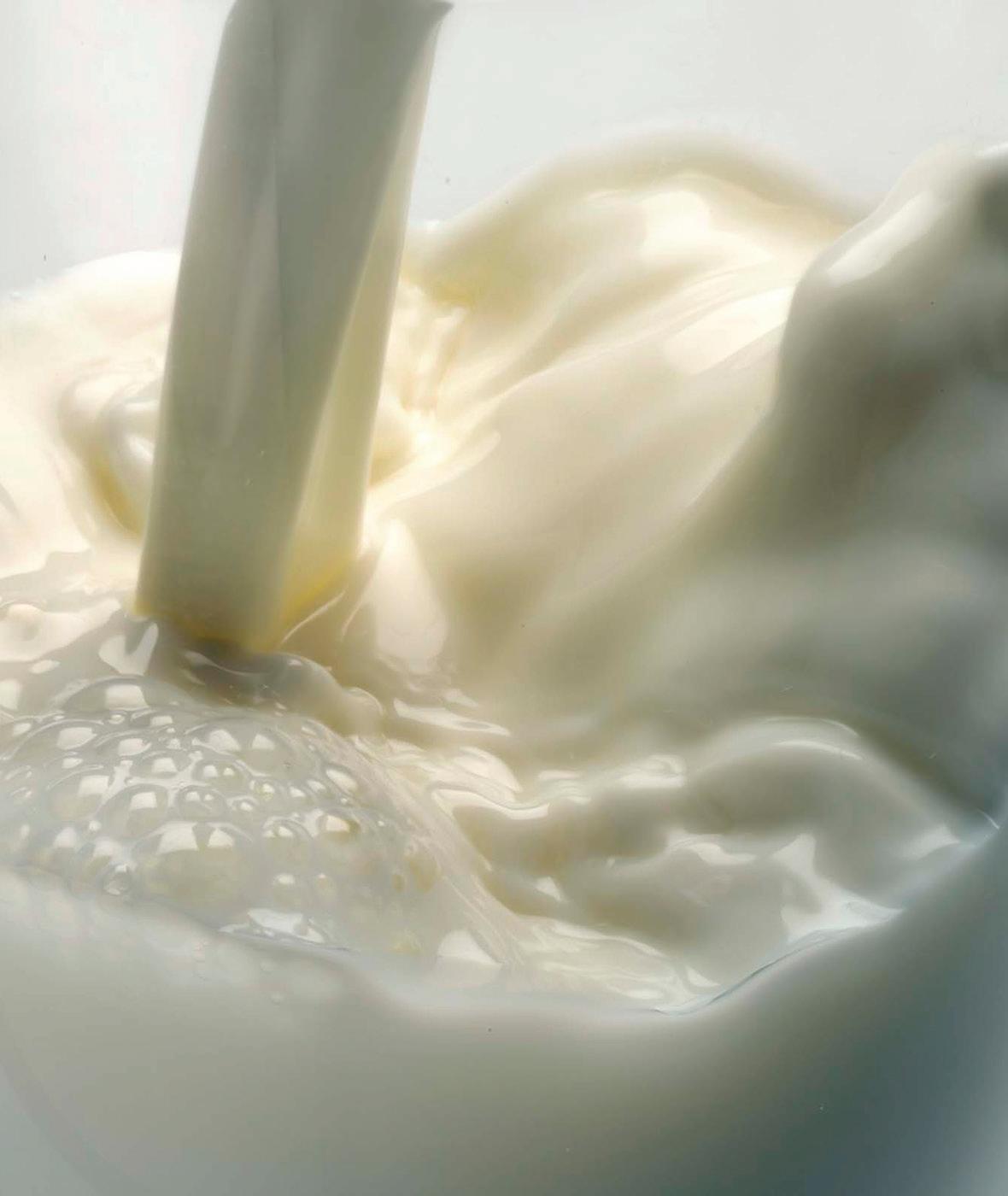
Futures in line with market sentiment
JAs with the real market, the futures posted a decent run in early January, rising to an average across the next six months of almost €5,800/tonne (£4,952/t).
But since then, prices have dropped back to more than €5,400/t (£4,611/t), having dropped below that threshold at one point. SMP prices are relatively stable.
When the prices are converted into a milk price equivalent, they average about 33-34p, which is down from over 35p at the start of the year.
New Zealand

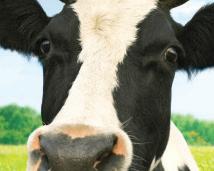








New Zealand prices are now unusually higher than EU prices. However, most processors will pay a premium above
this – currently the nonaligned average price over the futures is just over 3p, for example.
Producers on ingredients contracts will get barely any premium over the futures, however.
Cheese
On cheese, the indicative contracts from Stone X continue to fall, with curd down £190 to £3,400; Cheddar down £160 to the same price; Gouda down £35 to £3,210 and mozzarella down £20 to £3,075.
It is a similar story for the next quarter for Cheddar, with curd and Cheddar down £150 to £3,380. Prices do not even cross the £3,500 level for Q3 either.

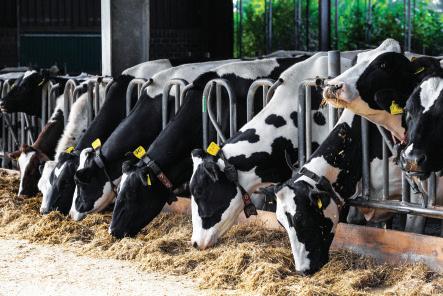


























































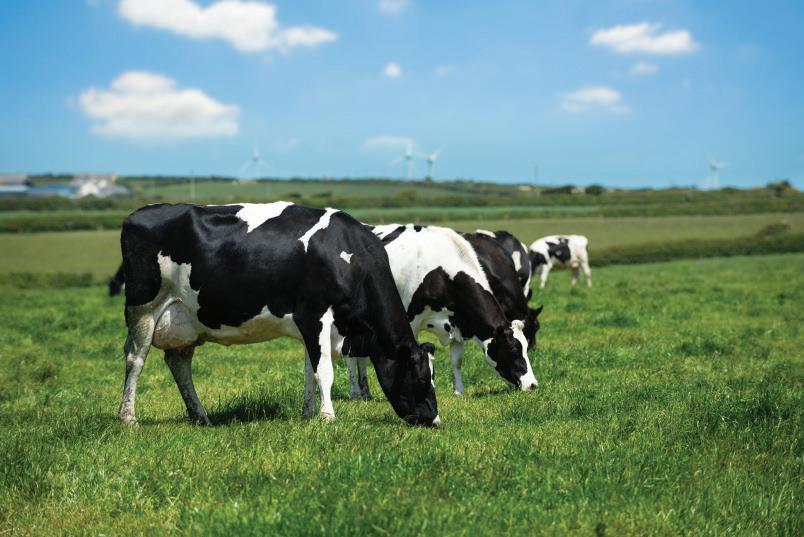




























































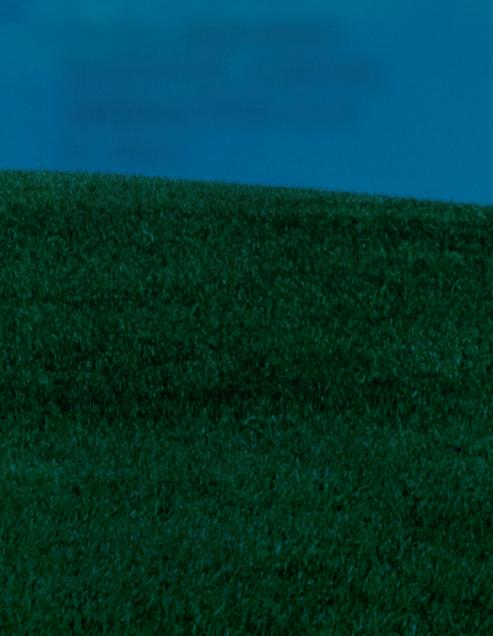
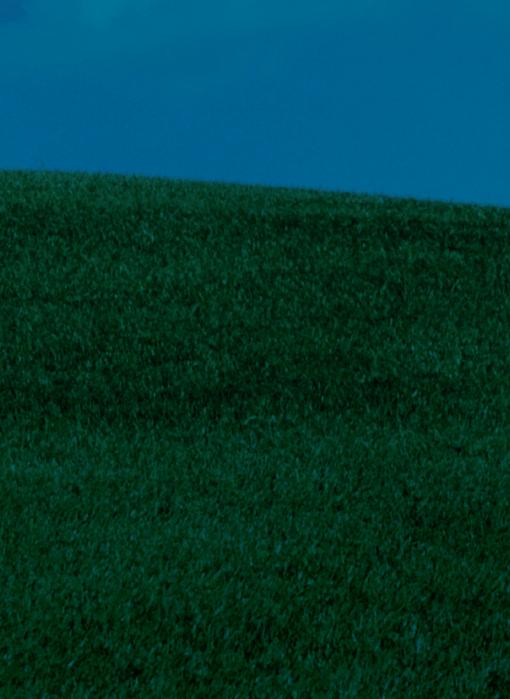

MARCH 2024 65
MILK ANALYSIS
Global milk volumes are rising again, with December’s production down by a fraction of a per cent compared to a drop of nearly 0.85% in October.
NEWProducts
This month’s new products section features a new slurry inoculant formula, the launch of a crop nutrient range focusing on soil fertility, a new mower combination from grassland and updates to the shelf life of a scour vaccine.
New mower combination
JGrassland specialist
SIP launched its new mower combination, the DISC HD range, to the UK market earlier this year. The new range includes advanced features, such as swath merging, high mowing quality on undulating terrain and cutting edge safety measures.
Expanding SIP’s range of mower conditioners, the DISC HD 1000 D FS offers working widths of 9.2 metres to 10.2m and the DISC HD 1100 D FS has working widths of 10.5m to 11.08m.
These mowers deliver up to 18.5 hectares per hour (45.7 acres/hour) and 20ha/hour (49.4 acres/hour), respectively, and are fitted with steel finger conditioners.
Horsepower requirements are 180hp for the DISC HD 1000 FS and 220hp for the DISC HD 1000 FS BC and DISC HD 1100 FS BC.
rMore information from sip.uk@sip.si, or 07860 518 873.
Got a new product?
JNew products are featured in each issue of Dairy Farmer. Please send details and pictures to Katie Fallon at katie.fallon@ agriconnect.com, or call 07815 003 227.
Subscription fees removed for silo monitoring technology
Silo manufacturer Collinson has removed the subscription charges for its app, FeedAlert, allowing farmers to access the app as an affordable one-time investment.
The FeedAlert app remotely checks feed levels in silos, preventing feed outages and allowing farmers to share data with suppliers to aid feed management, production planning and logistics.
Starting from £450 with no ongoing cost, the system is said to suit all makes of silo for optimal industry benefit, using a weight-based management system to ensure reliability and consistency.
The hardware can be easily installed on the leg of the silo, with no need to lift the silo for

load cells or gain high level access. Once set up, readings are taken daily and the weight is displayed on the app, with timely alerts
Formula for slurry inoculant
JSylgen Animal Health has released a new concentrated formula for its slurry inoculant, SlurryForSoil, which is said to lower costs for dairy farmers while reducing the product’s carbon footprint.
SlurryForSoil is currently the only slurry inoculant which is specifically designed for soil and plant health, turning slurry into highly effective bioactive fertiliser.

The new formulation is four times more concentrated, giving users the same performance at a fraction of the cost while also
notifying users of low or very low level statuses to prompt ordering.
rMore information from 01995 606 451.
reducing the packaging required and lowering the weight.
Sylgen Animal Health’s director Romney Jackson says farmers will save 37% per treatment, which, when combined with the reduced need for fertiliser and improved grass growth, will give an average return on investment of £9.50 to £24 for every £1 spent on SlurryForSoil.
rMore information from 07843 681 385.
66
MARCH 2024
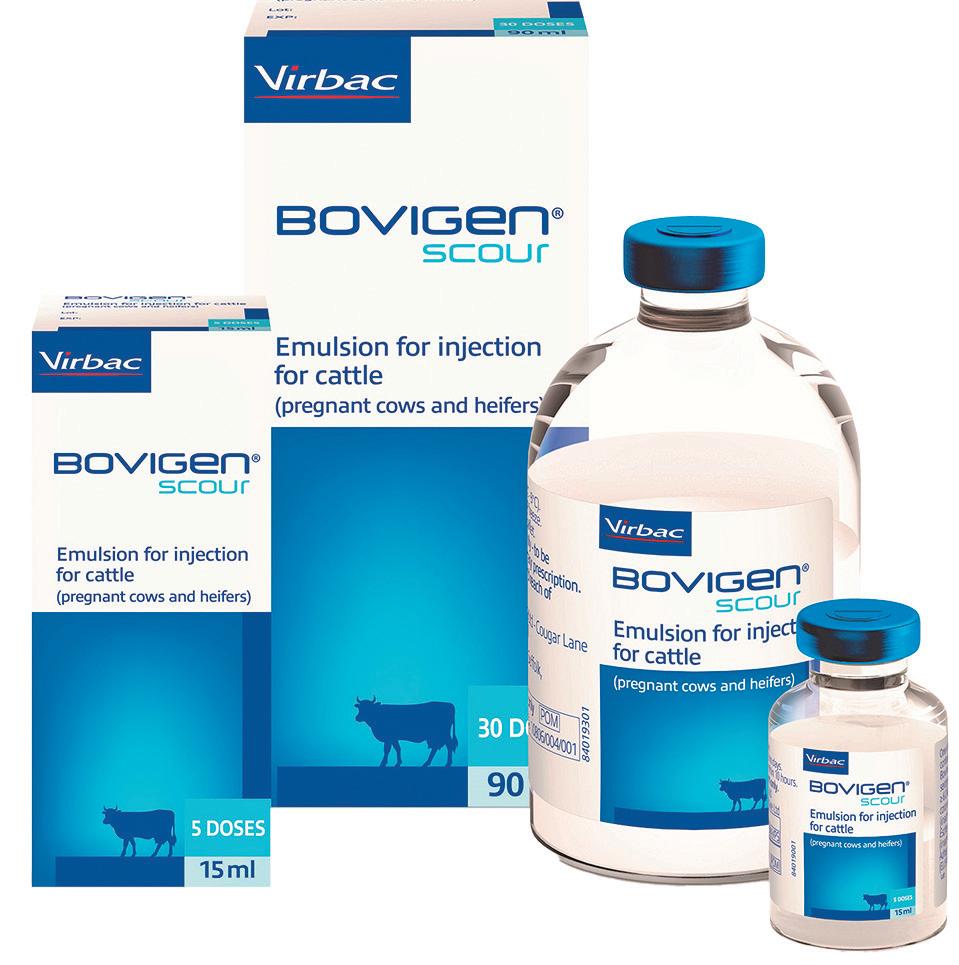
Scour vaccine given longer shelf life

refrigeration between 2degC and 8degC until the next use.
The change is said to significantly increase the cost effectiveness and convenience of the product, as cows will not have to be treated on the same day or handled at the same time, and the vial does not have to be thrown away after the first broach. It is available in five- and 30-dose bottles.
rMore information from enquiries@virbac.co.uk, or 01359 243 243.
Crop nutrients improve soil fertility
As part of the SPC changes, the vaccine has been granted a 10-day shelf life from first puncture of the vial, with the broached bottle requiring improve crop growth in a sustainable way. Independent trials showed the use of one of ED&F Mans Agronomy products increased the yield of carrots by more than 3%.
JA new range of soil and crop nutrition supplements from ED&F Mans Crop Nutrition is said to help farmers achieve cost-effective performance improvements, while optimising traditional chemical inputs across a range of crops.
Based on sustainable molasses, the supplement range has been developed to improve soil fertility and JVirbac has announced changes to the summary of product characteristics (SPC) for its livestock brand Bovigen Scour, a one-shot vaccine for the immunisation of pregnant cows and heifers, to raise antibodies against E.coli F5 (K99), rotavirus and coronavirus.
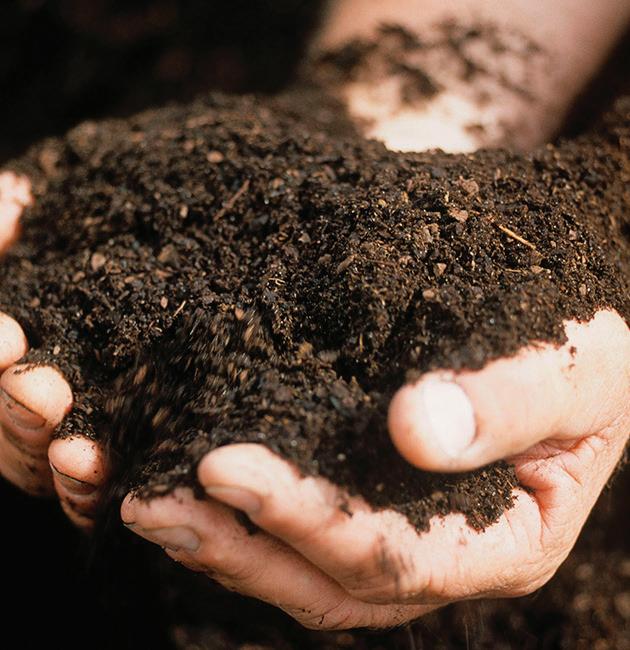
Microbial activity
The high carbohydrate content supplied in a molasses-based liquid nutrient package stimulates microbial populations in the organic layer and drives microbial activity through to the topsoil, which improves crop establishment and supports crop growth.
The ED&F Man Agronomy range contains four products formulated for specific situations and requirements, allowing a tailored programme to be developed to optimise crop establishment.
rMore information from 07702 876 587.
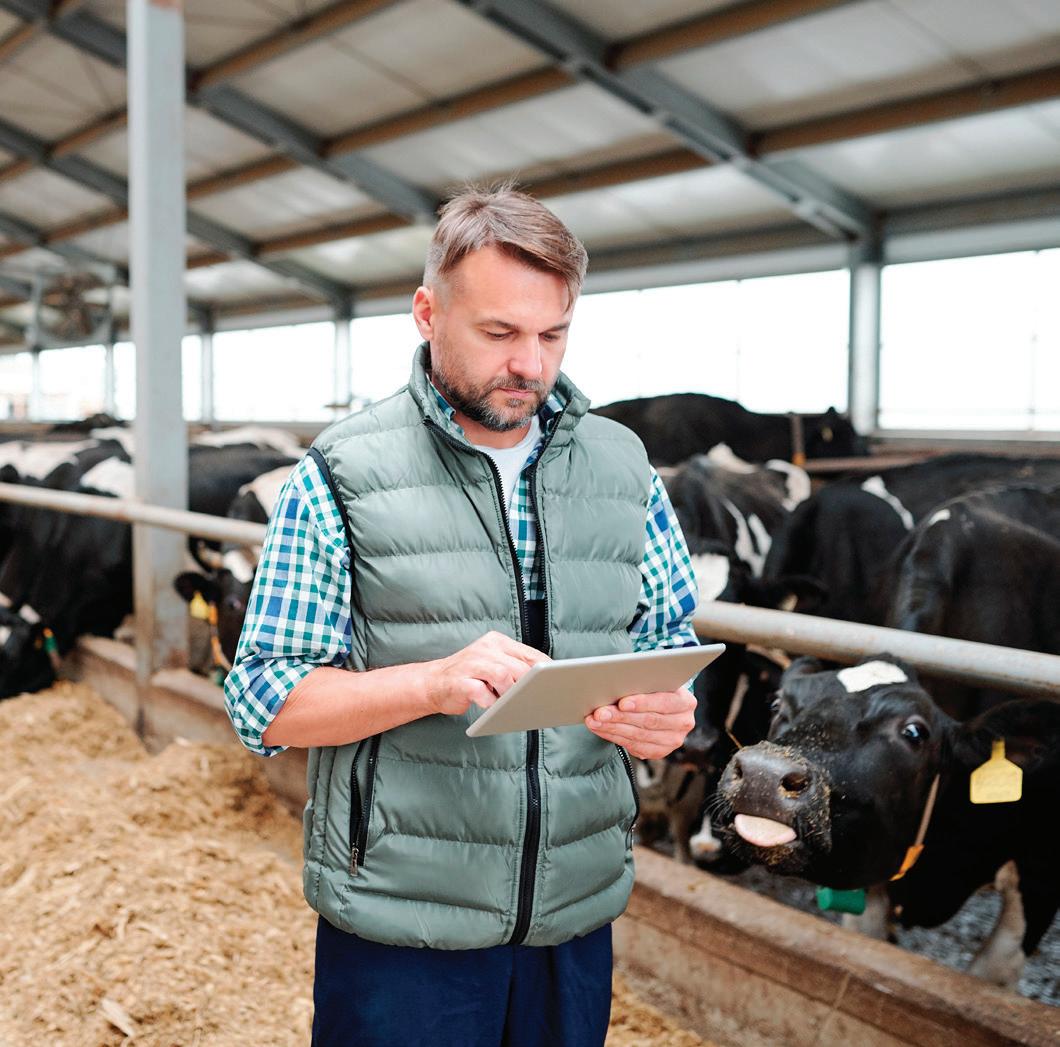
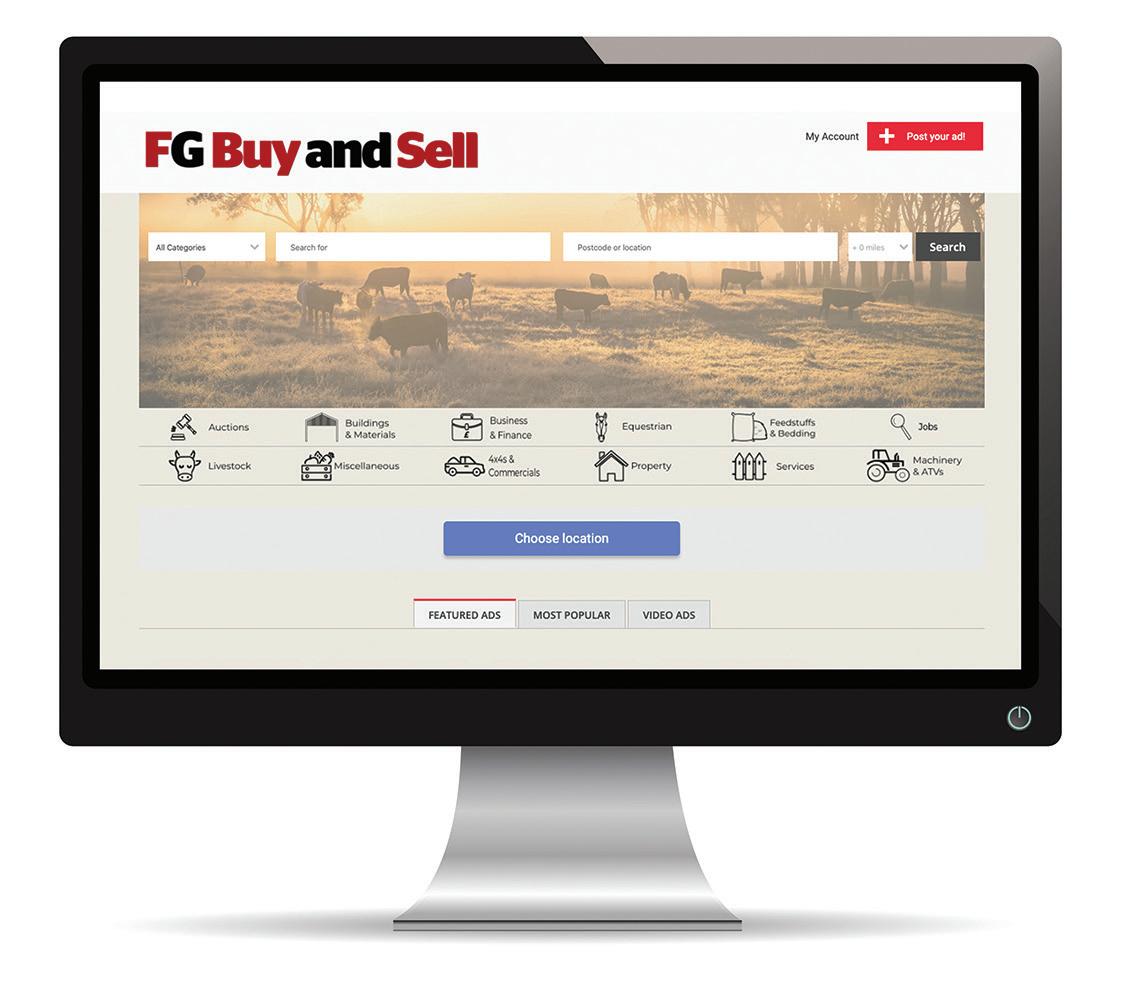
67
MARCH 2024
to you by Farmers Guardian, FGBuyandSell is the new and improved platform for you to sell your items to a responsive farming community. From dairy cattle, milking parlours, calving equipment and everything in between, you’re sure to find what you need on FGBuyandSell.com. Start listing your items FREE today! Browse. Sell. Buy at FGBuyandSell.com
Brought
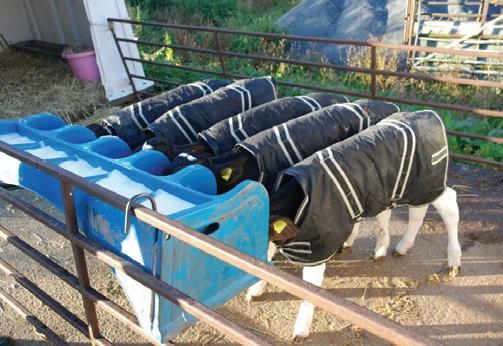
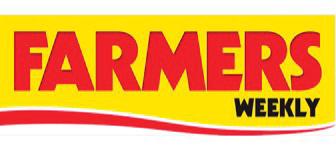
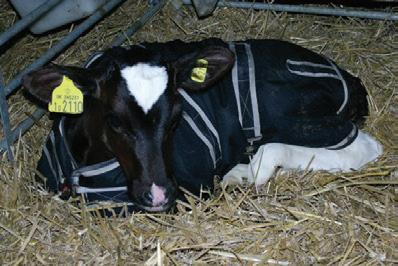


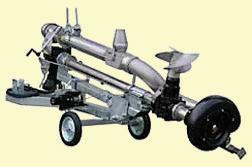
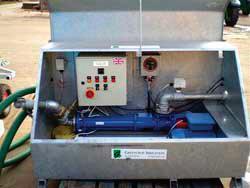




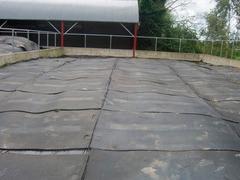



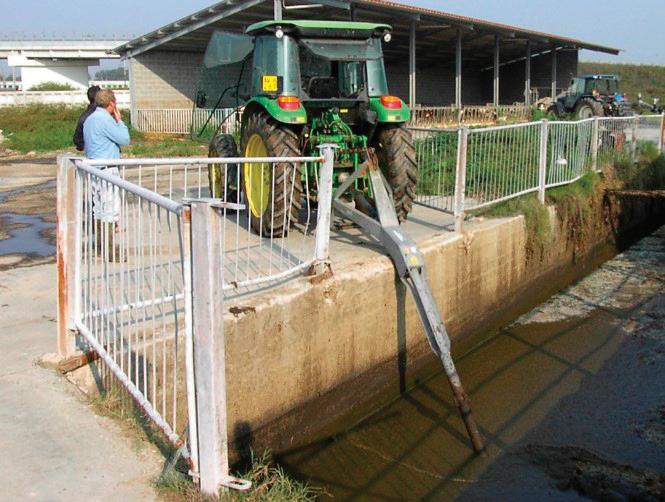

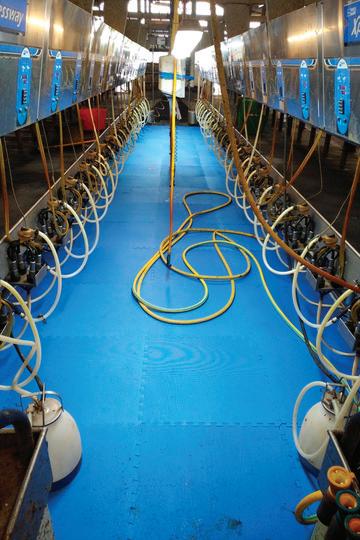

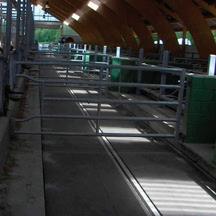




Equipment & Accessories SEPCOM The unique separator Slurry pumps & lagoon mixers 01328 701992 | enquiries@greencrop co.uk | www greencrop co.uk Multicam dirty water irrigator Slurry pump Pump in a box CLASSIFIED TELEPHONE: 01772 799400 Dairy & Milking Equipment MARCH 2024 68 Building Services SPRAY FOAM INSULATION To Crop & Livestock Stores, Poultry Sheds, Cattle & Pig Buildings, Workshops & Barns. Frost & Condensation Protection. Temperature Control Energy Saving Tel: 01405 812682 www.webstersinsulation.com info@webstersinsulation.com 1 8m x 1 2m / 6ft x 4ft Each 30kg Per Mat Easy Grip Handles Animal Proof Weather Resistant 100% Rubber Construction R U B B E R S Y S T E M S F O R A G R I C U L T U R E DAIRY MAT ARK www arkmat co uk C a l l o r E m a i l F o r P r i c i n g A n d F u r t h e r D e t a i l s 01392 209 394 info@ark-rubberandresin co uk PARLOUR MATTING HEAVY DUTY SILAGE PIT MATS SUPERSOFT CUBICLE MATS ALLEY MATS 5 YEAR GUARANTEE Diversification Opportunities? New 100 litre fully automatic batch pasteuriser with cooling MR1000 Pasteuriser Electric with digital up grade Homogenisers from 1000 litres to 20,000 litres in stock Single phase Ice Cream Pasteurisers and Freezers Single, Four, Six, Twelve and Twenty Six head Milk Fillers Two Aqua-tech Glass Bottle Washers Pint, litre, 2 litre Butter Churns and extruders Complete Cheese Making Plant 5,000 litre batches Little Gem Pint glass filler and auto foil capper Charles Wait 07788 233608 New & Used Bulk Milk Tanks Second hand tanks currently available: Mueller 8000ltr, 9000 & 12,000 ltr Fabdec 4000ltr & 6000ltr Packo RMIB 3800ltr & RMIB 6000 ltr New Heat Recovery units in stock 01772 780806 www.ddcooling.co.uk








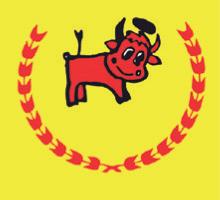




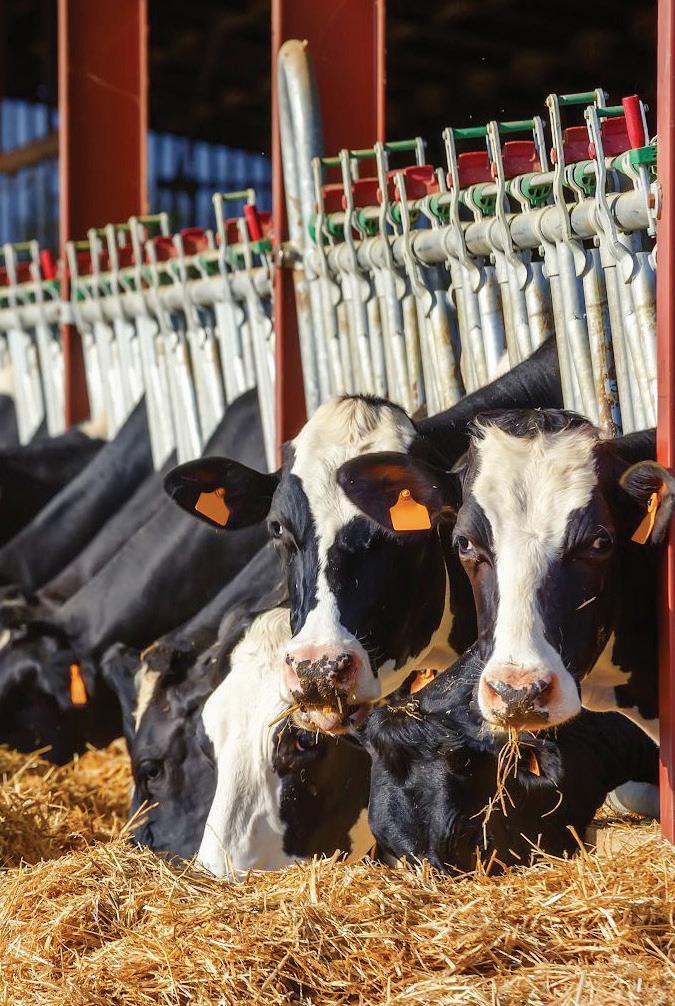
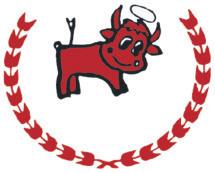


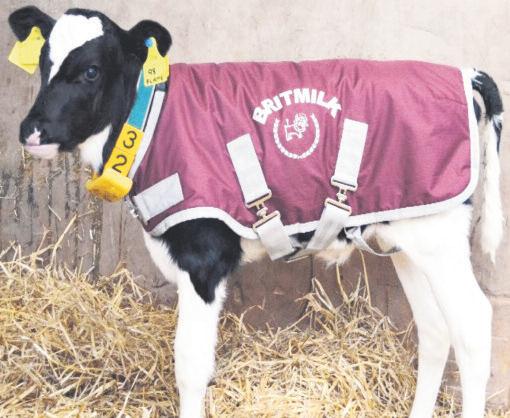
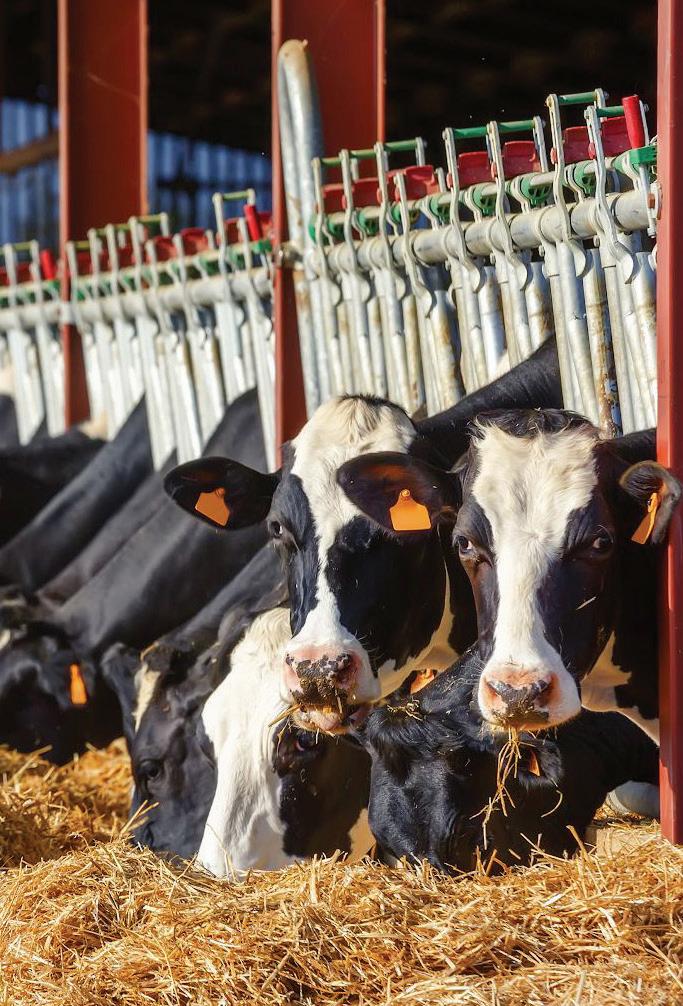
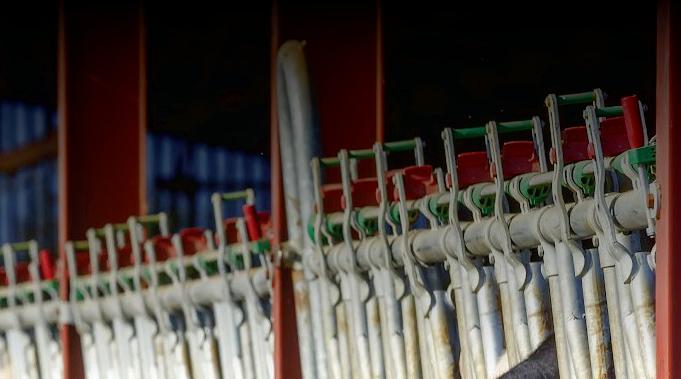
69 MARCH 2024 Livestock T . APPLE Nationwide george@greenfieldsrise.f9.co.uk CALF DEFENDER is an energised Calf Milk with anextensive package of health promoting ingredients tostimulate the immune system and promote a health gut. For further information contact Speak our readers 01772 Published Advertising now DAIRY SUPPLEMENT Dairy Tel. +44 (0)1387 750459 E: info@britmilk co uk | W: www britmilk co uk Calf Jacket Calf Jacket BRITMILK “Qu alit y wit h ou t Comp romis e” f rom • Quality breathable/ water repellent materials to maintain body heat • Strong metal buckles for Longer life • Crossover straps for secure fit • Machine washable Speak to Katie Robinson today and start converting our readers to your customers. 01772 799500 | fgclassified@farmersguardian.com Published September 6, 2024 Advertising opportunities now available in our DAIRY SUPPLEMENT FARM HEALTH SOLUTIONS Ask about Herd Health Analysis T 01756 749444 W www.crossgateshealth.co.uk PROBLEMS WITH PNEUMONIA IN CATTLE OR CALVES? - REDUCE USE OF ANTIBIOTICS WITH COST EFFECTIVE TROUGH ADMINISTRATIONWE CAN HELP WITH SHEEP AND LAMBING PROBLEMS TOO APPLE CIDER VINEGAR (IBC) ORGANIC Livestock Services Nationwide (01948) 662910/663143 george@greenfieldsrise.f9.co.uk Livestock Dairy Supplement
‘There were lots of hoops we had to negotiate’
This month, Roger Evans discusses planning difficulties, assurance schemes and their associated red tape and the impact rising costs is having on businesses.
Part of our exit strategy if you like, was to get planning permission on three of our conventional buildings. I would hasten to add that our exit was forced upon us.
The land we had rented for 20 years was let to another, but we were never given the chance to make a counter offer.
We know we are lucky to have these barns, but getting planning permission wasn’t easy. Not that there was any local objection, but the presence of a poultry unit rings alarm bells with the planners.
We don’t rear broilers any more, but produce point of lay pullets.
There is a huge difference between the two which I don’t think planners understand. But they should.
We only produce five crops of pullets every two years, but if you produce broilers there is a crop every six or seven weeks.
Difference
I’m not knocking broilers, but there is a real difference and it should be acknowledged.
Our poultry sheds are small by modern standards. All the trees we planted on the land have grown now and it is very hidden.
It looks like two sheds in the middle of a wood. Lots of locals don’t even know it’s there. Nevertheless there were lots of hoops we had to negotiate.
One of these was a noise assessment. To achieve this, microphones were put around the proposed development for 24 hours.
When we got the results you could hear the traffic on the B-road, about 300-400 yards away; you could hear a neighbour’s lawn mower and you could hear an owl. All of these factors are beyond our control. It cost us about £2,000 to find this out.
We have a farm secretary. She’s been coming here for 30 or so years and 30 years is ample time for her to get used to all my funny little ways.
I’ve been dropping hints for a gold watch, but am not sure who does the buying.
In 30 years she has gone from a good secretary to a good family friend and good secretary, but there’s no need to tell her that.
At home she has some land and, as far as I know, she keeps a couple of horses and a couple of Hereford cows.
Today she is quite irritated, not with me, I usually toss her a gold bar if she is irritated with me, but no today, she is irritated with Genus.
She has just been told, no warning, no discussion, that they won’t be calling anymore to get her cows in calf. She is not best pleased.
As far as I can tell, she understands that costs have gone up, but she was prepared to pay the cost.
It is especially annoying because she lives in a big dairy area and there is a Genus van in the area every day.
Last time I spoke to her she was contemplating buying her own flask and getting someone to do the actual insemination.
Obviously someone somewhere has drawn a line on a piece of paper, but who is to say where the next line will be drawn.
Lots of rare breeders will have the same dilemma. I consider rare breeds to be a valuable resource and am not convinced that Genus is not making life harder for them.
I can remember days when you paid for the first insemination and repeats were free.
There was a man locally and he used to milk three
GOODEvans
70 MARCH 2024
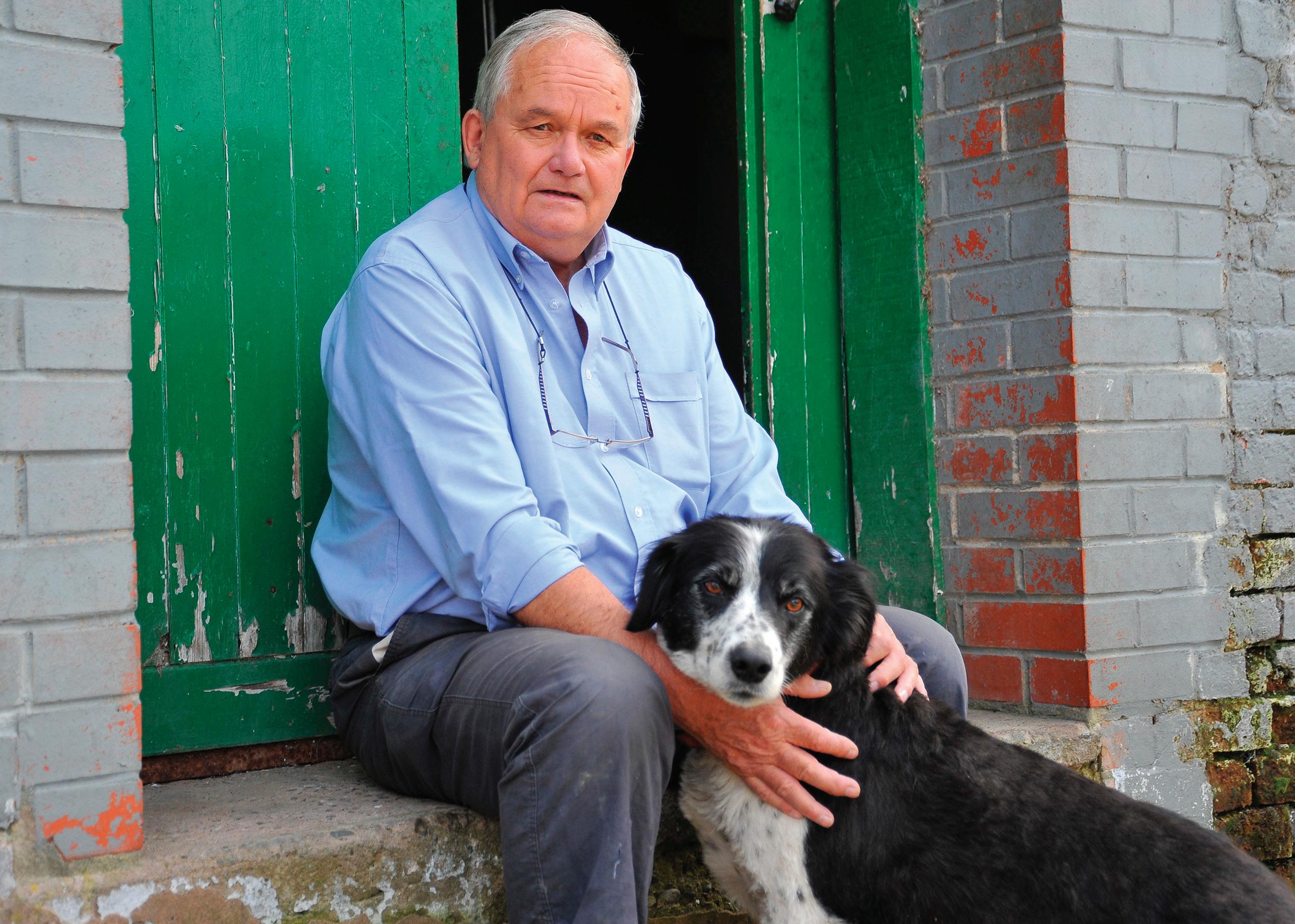
“I can’t remember a time when politicians didn’t promise to reduce form-filling
Shorthorn cows by hand and he used to bring his solitary milk churn to the communal churn stand in the village.
I used to know the three inseminators who regularly called here very well and they told me that they had given one of his cows free repeats every three weeks for three years before they got her back in-calf.
Scrutiny
Farm assurance schemes are under scrutiny today as they have never been before.
Some time ago we were to have audits on our poultry on three consecutive days by three di erent


bodies. I’m sure this was just coincidence. e audits were largely the same, it was only the order of the audit that di ered.
We passed the rst two inspections, but failed the third because our hand dispensers were not labelled.
It was during the Covid-19 pandemic, so everyone knew what a hand dispenser looked like.
I can’t remember a time when politicians didn’t promise to reduce form- lling and duplication. ey are promising it again now. Why would we believe them?
One of my problems in life has been an ability to see the other person’s viewpoint, to see both sides of an argument.

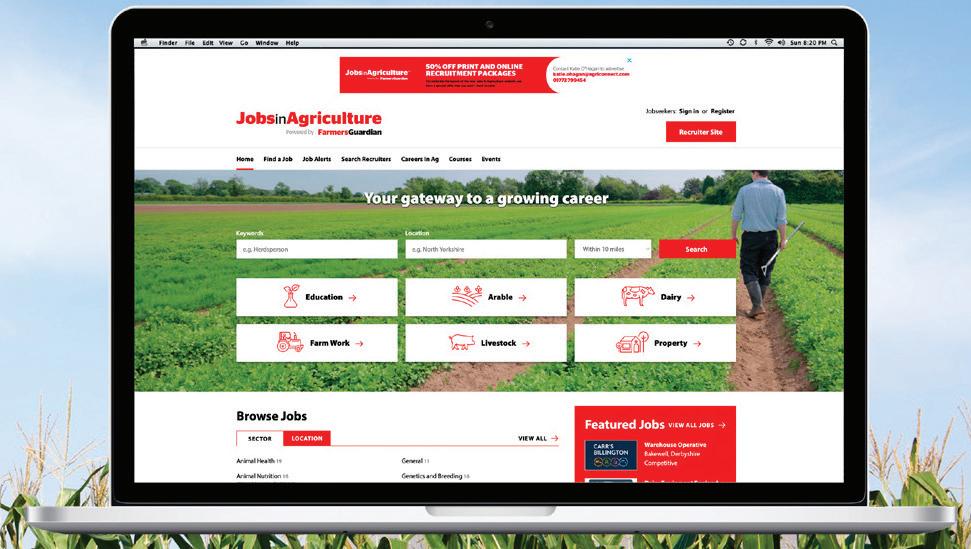
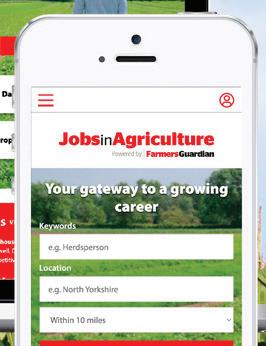

Find your next career move Get the latest jobs in your inbox with our free email alert service and never miss a great job! Scan the QR code or visit: JobsInAgriculture.com 71 MARCH 2024
The mid-January Global Dairy Trade (GDT) auction saw prices rise by 2.3%. It was the fourth increase in a row and followed rises during September and October.
The GDT index stood at its highest value since November 2022. However, it is still only twothirds of what it was at its all time peak in March 2022.
In the most recent auction, there were increases for almost all categories, with butter the strongest performer, delivering a 5.8% increase. Most other increases were below 2% and mozzarella prices fell by 3.3%.
The GDT auction is held in New Zealand and that is where the recovery in dairy prices has been stronger. Figures from AHDB show that December butter prices in the Oceania region, which also includes Australia, were up 5.1% on the month and by more than 10% on the year. Whole milk powder prices and Cheddar prices were also up in Oceania.
Commenting on the perform-
There are some signs of continued price improvements, but the road to recovery might be a bumpy one. Cedric Porter reports.
Global market outlook mixed
ance of New Zealand’s dairy industry in 2023, senior agriculture analyst at Rabobank, Emma Higgins says: “Output was marginally lower than last season’s poor performance on a tonnage basis, but 0.9% higher year-on-year on a milk solids basis, reflecting the continued trend of more milk from fewer cows.”
She adds that the El Nino weather pattern will influence milk production in 2024.
She says: “The broad trend over the next three months is for drier conditions in the east and
Small recovery in profitability
JThe 2024/25 milk year could see a recovery in profitability, according to Andersons’ long-running Friesian Farm business model.
The consultants expect that the shrinking Basic Payment Scheme (BPS) in England will keep the farm in surplus in 2023/2024, with no margin from production due to weaker prices and continuing high costs.
Better milk prices, a small drop in costs and the addition of Sustainable Farming Incentive (SFI) payments are forecast to deliver the farm a 4.4ppl surplus in 2024/25, up 3.1ppl on the previous season, although only 1.9ppl of that will come from production.
Further reductions in BPS support in subsequent years will nibble into that surplus.
The current 2023/24 year illustrates the decline in farmgate milk prices, says Richard King, head of business research at the Andersons Centre.
He says: “With costs ‘sticky’ on the way down, the business only breaks
north of New Zealand, with wetter conditions on the west coast of New Zealand.
“Conservative budgets mean a cautious approach for farming through summer and into autumn, which is likely to impact milk flows in the second half of the season.
“Animal health management is key for establishing a strong start to the 2024/25 season, but it will be at risk if farmers look to milk hard to make up for the lower forecast milk price.”
Prices in Europe ended 2023
even from its farming activities. For 2024/25, however, this farm has gone into the SFI.
Useful amount
on a stronger note, but were mixed at the start of 2024. December butter prices were up by 5.2% on the month in the EU, according to AHDB, although that was still down 3.6% on the year.
Milk powder
Milk powder prices were also up in the month, but still down on the previous year. The first EU quotes of the year showed a small weakening in butter prices, but stronger Cheddar and whey prices.
The firmer European market
“This adds a useful amount to the bottom line [although there are costs to the scheme which are included in the farming margin]. Milk prices are firming, but there is a question over how far and fast any rises may be.
“Overhead costs drop for 2024/25; this is due to cheaper fuel and electricity, but also due to unusually high contract costs the previous year.”
MARCH 2024 72 BUSINESS CLINIC
Costings (ppl) for Andersons’ model Friesian Farm 2021/22 2022/23 2023/24 2024/25 Milk 32.5 47.1 36.7 38.0 Total output 35.4 50.2 39.8 41 Variable costs 14.4 23.6 17.6 17.3 Overheads 10.5 14.8 15.2 14.5 Rent, finance and drawings 6.5 7 7 7.3 Total costs of production 31.3 45.3 39.8 39 Production margin 4.1 4.9 0 1.9 Basic Payment Scheme and 1.8 1.6 1.3 1.0 + 1.5 Sustainable Farming Incentive Business surplus 5.9 6.5 1.3 4.4 Source: Andersons; Notes: 200-plus cows plus followers on 130 hectares (321 acres) part rented with year-round calving, a constituent contract and an owner and worker.

Globally milk supply is forecast to grow by a modest 0.3% for the entire year.
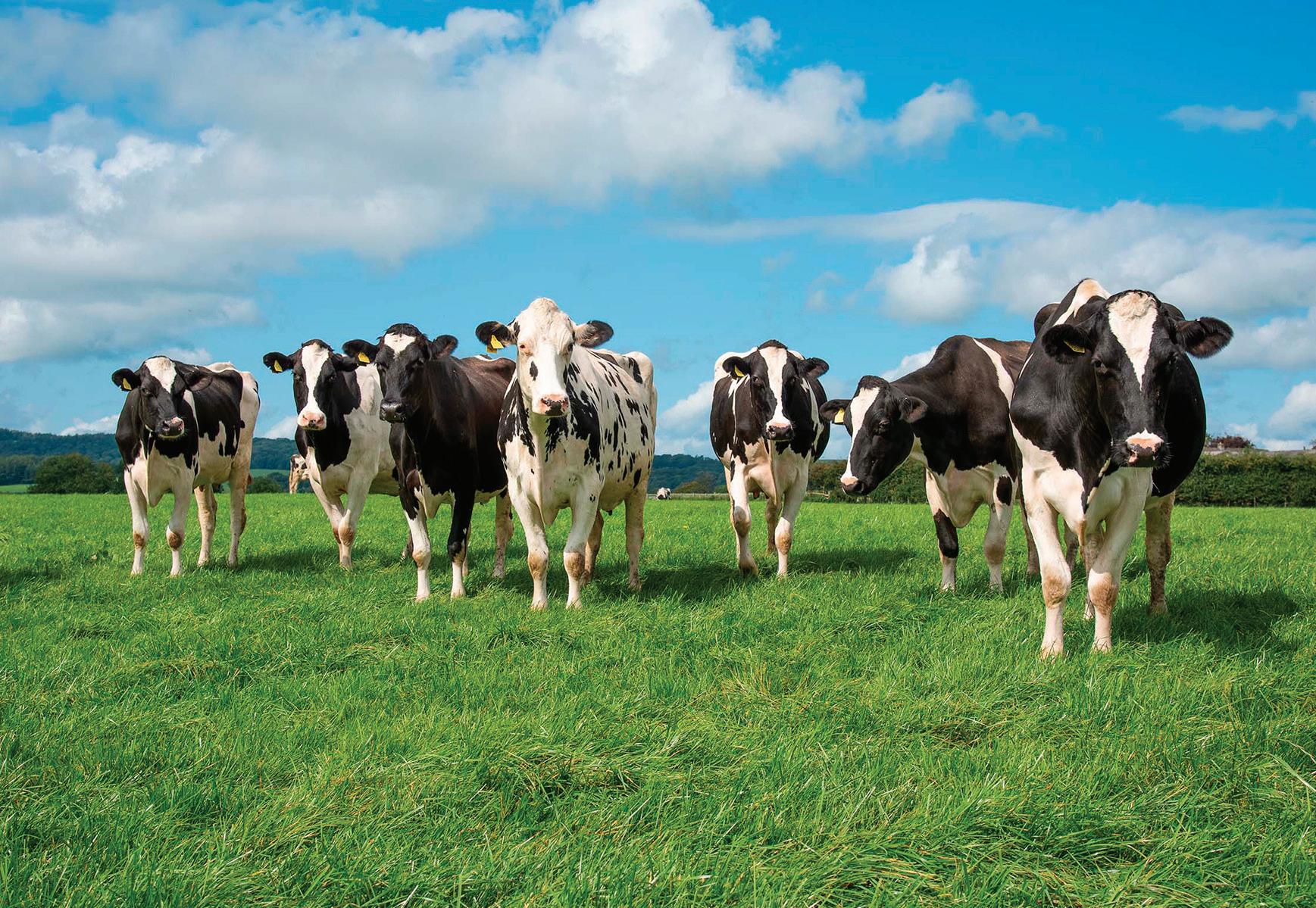
over the last few months is translating into higher prices. e average December 2023 EU milk price of €46.14/100kg (£39.43/100kg) was 1.5% up on the November price and followed increases in November and October. It was still 21% less than the year before, although 12% more than at the end of 2021.
Ireland, Sweden, the Netherlands and Denmark all saw a price drop
of more than 30% during 2023. UK bu er and Cheddar prices have also been rising, but there was a weaker tone to the market in January. Wholesale bu er prices held steady at £4,750/tonne in the month, but were 15% higher than the year before, according to AHDB. Mild Cheddar prices were 3% higher at £3,600/t, although that was 14% lower than January 2023.
In print, in pocket, informed, in profit.

Bulk cream and skimmed milk powder prices slipped by 2% and 3%, respectively, over the month, but cream values were 16% higher over the year.
Report
Looking at the global market in its supply outlook report, Michael Harvey, dairy and consumer analyst at Rabobank, says global production
is increasing up until the middle of 2023, before lower prices, higher costs and weather disruption led to it shrinking.
He says: “Year-on-year milk production from the big seven exporting regions – the US, Argentina, Uruguay, Brazil, the EU, Australia and New Zealand – is forecast to decrease through Q1 2024 before turning positive.
“Overall, milk supply is forecast to grow by a modest 0.3% for the entire year. Current fundamentals provide the perfect ingredients for price volatility and a possible market whiplash.
“Geopolitical instability risks, volatile energy markets and weak macroeconomic conditions will be something to watch in 2024 for the global dairy markets.”
A 0.3% increase in production would lag behind a global increase in population growth of 0.9% in 2024, meaning a tightening of supply if consumption per head rates stay the same.



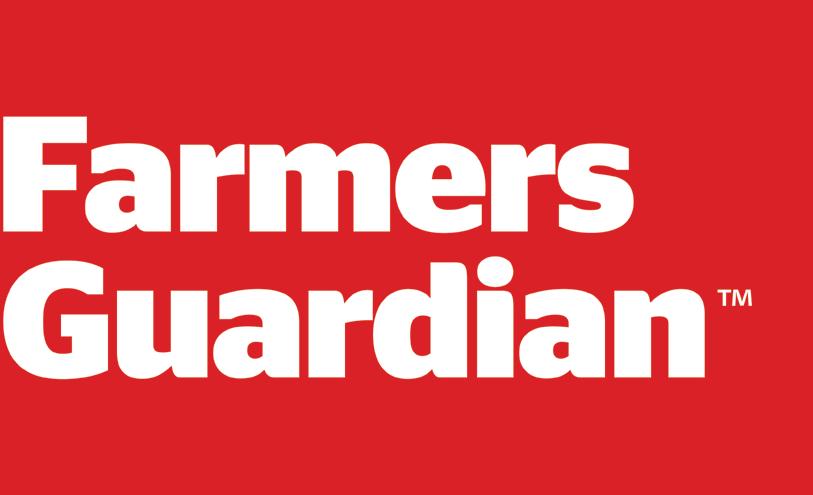


MARCH 2024 73 farmersguardian.com/app App Edition
Trial reveals impact of silage inoculant
Atrial at Reading University’s Centre for Dairy Research has shown that using an inoculant on grass silage can improve grass silage stability, increase feedable dry ma er (DM) and improve fat-corrected milk yields by 1.9kg per day.
Speaking at Dairy-Tech, Lee Gresham, of Lallemand Animal Nutrition, explained the trial used 28% DM grass harvested in April, with half the crop treated with Magniva Platinum Grass Dry and the other half le untreated.
e trial looked at how the inoculant impacted the grass’ fermentation, locking in nutrients, and how this translated into cow performance when feeding the silage.
Mr Gresham said: “ ere were signi cantly higher DM losses in the control clamp than the treated clamp, which means there was less silage available for the cows.
“Due to DM losses, the untreated clamp shrunk considerably more than the treated clamp, equating to 29% more feedable DM.”
two clamps showed that the treated silage had superior lactic, acetic and propane diol acid pro les, and also had 10-times less butyric acid.
Mr Gresham said: “ e lower butyric acid in the treated silage indicates that clostridia – the bacteria which break down protein and cause foul-smelling silage –were e ectively inhibited.
“ is resulted in more palatable silage, which was evident in the increased DM intake seen in the group of cows receiving treated silage in their ration.”
Aerobic stability
Aerobic stability was also improved in the treated silage. is resulted in less heating in the clamp, minimising energy lost to the environment as heat instead of being turned into milk by the cows.
is energy loss is caused by aerobic spoilage that occurs when air gets into the clamp and activates spoilage microbes, including yeasts and moulds.
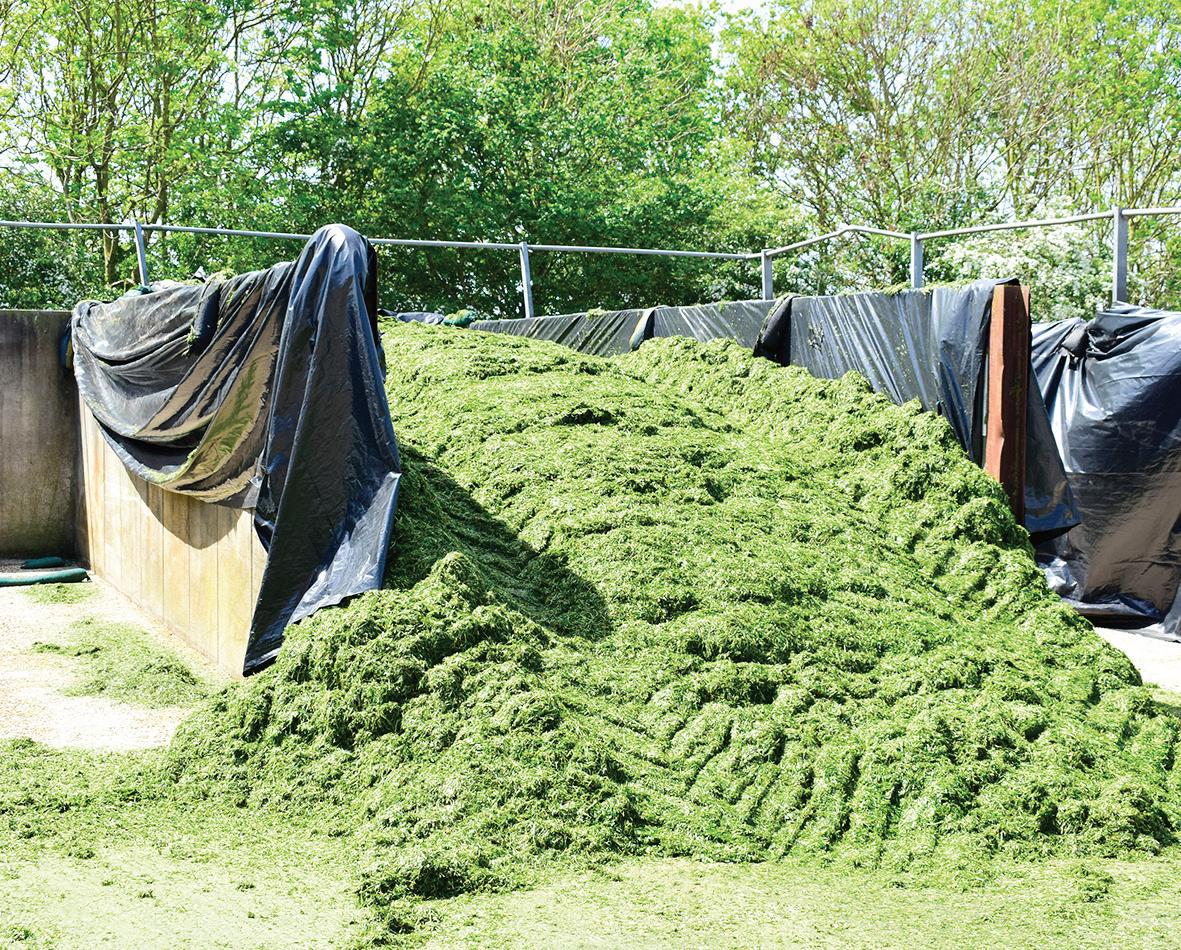
26.7degC – a signi cant di erence in energy terms,” said Mr Gresham. “ is extra 8degC of heating in the control group is the equivalent of losing 28MJ of energy for every tonne of silage fresh weight that is unstable. is equates to 5.4kg of milk lost.”
The trial at Reading University looked at the impact of an inoculant on 28% dry matter grass harvested in April 2023.

He said: “ e treated silage resulted in a signi cant increase in DM intake by 1.5kg/day compared to the control. is correlated with an increase in fat-corrected milk of 1.9kg/day.
“ e control clamp temperatures peaked at 34.6degC, whereas the treated silage reached only
Mr Gresham said improvements were also seen in cow performance when cows were fed the treated silage.
“A 0.1% improvement in protein and 0.19% increase in fat was seen in the milk constituents when comparing treatment and control group cows.”
NMR report highlights improvements in milk solids
e fermentation results from the J e annual production report from NMR for the year ended September 2023 showed that the Holstein breed achieved a new record of 700kg of combined fat and protein; up from 686kg in 2021/22.
Holsteins represent 67.7% of NMR-recorded herds. Milk yield for the breed increased to 9,409kg at 4.12% fat, which was a new record, and 3.31% for protein. Meanwhile, the Holstein average
somatic cell count (SCC) dropped to 157,000 cells per ml; the lowest level in at least a decade. e calving interval decreased by four days, to 395 days, compared with the previous year.
Similar improvements from the previous year were recorded in the Jerseys, which account for 2% of NMR-recorded herds. e breed averaged 550kg of combined fat and protein, which was an increase of 6kg. It also reached 5,910kg of
milk – an increase of 58kg –at 5.38% fat and 3.93% protein. SCC for the Jersey breed reduced slightly compared with 2021/22, to 185,000 cells/ml, and the calving interval reduced by a day to 401 days.
British Friesian e British Friesian breed, with 1.5% of total NMR-recorded lactations, had a slight drop in combined fat and protein of 2kg
to 481kg, and a drop in average milk yield of 74kg to 6,364kg. SCC increased by 3,000 cells/ml to 158,000 cells/ml, while calving interval dropped by four days to 387 days.
With 1.2% of recorded lactations, the Ayrshire breed achieved the same combined fat and protein yield as the previous 12 months, at 519kg. ere were marginal drops in both SCC, to 155,000 cells/ml, and calving interval, to 399 days.
MARCH 2024 74 RESEARCH

SPEND A NIGHT CELEBRATING OUR FANTASTIC INDUSTRY





As a night not to be missed in the agricultural calendar, the British Farming Awards night is a unique opportunity to gather with the best in British farming and celebrate the success of the industry. Bring your team and join us for an unforgettable night!
Book your table today -

To find out more visit: britishfarmingawards.co.uk


Vox Conference Centre, Birmingham Thursday 17th October 2024 britishfarmingawards.co.uk
Scan the QR
Code below
Join the UK’s largest low carbon agriculture event. The best place to understand the present and the future of farming and land management. Leading industry experts will offer practical guidance on UK policies, funding, and incentives to put sustainable tools and technology on your land or into your business.
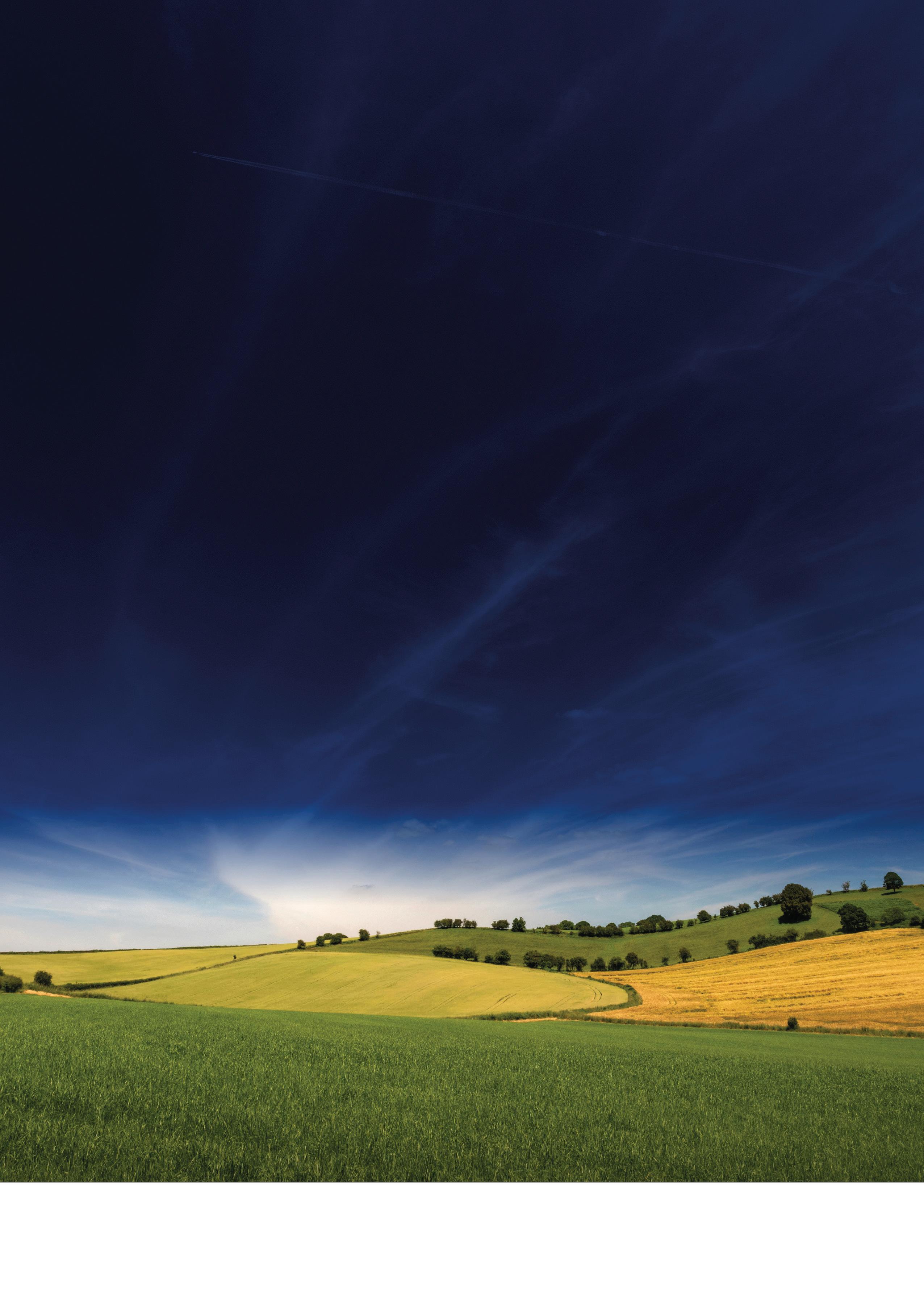
Speakers include:



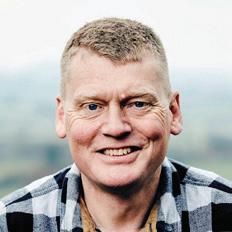



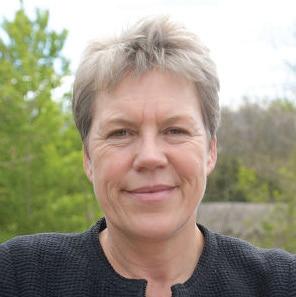
Renewable and low-carbon energy solutions | Low emission vehicles | Financial incentives, options and funding | Sustainable business ideas | Farm tech | Help for achieving net zero | Soil and land management | And more…






Farmers, landowners and land managers 3,000+ Technology and service providers 150+ Informative presentations 100+ Days 2
Chris Hewett Chief Executive Solar Energy UK
Adele Jones Executive Director Sustainable Food Trust
Craig Livingstone Director of Farming & Estates Lockerley Estate
Delyth Lewis-Jones Head of Environment AHDB
Johnathan Scurlock Chief Adviser, Renewable Energy & Climate Change NFU
Tom Heap Farming and Environmental Journalist BBC Countryfile
Harley Stoddart Head of Climate Mitigation Science DEFRA
Helen Browning OBE Chief Executive Soil Association
Owned and produced by Powered by Founding partner In partnership with Register for FREE at lowcarbonagricultureshow.co.uk/visit or scan the QR code












































































































 Ian Cure
Ian Cure


















































































































































































































































































































































































































































































































